
PAGE 72
My experiences as an OSU Cowboy are part of the fabric of the Byford dealerships: hard work, honesty and always striving to be the best. That’s why you can count on Byford for unbeatable deals, a great selection and caring customer service. Whether you need a heavy-duty diesel truck or a tough half-ton, please visit one of our dealerships in Chickasha and Duncan

Sincerely,

BYFORD BUICK GMC – CHICKASHA 2900 S. Hwy. 81 • 405.224.0475 ByfordAuto.com BYFORD CHEVY BUICK GMC – DUNCAN 1909 N. Hwy. 81 • 888-397-6541 BYFORD MOTOR COMPANY – OKC I-240 & Shields • 405-996-2600 BYFORD RAM DODGE CHRYSLER JEEP – DUNCAN 8307 N. Hwy. 81 • 888-706.5477
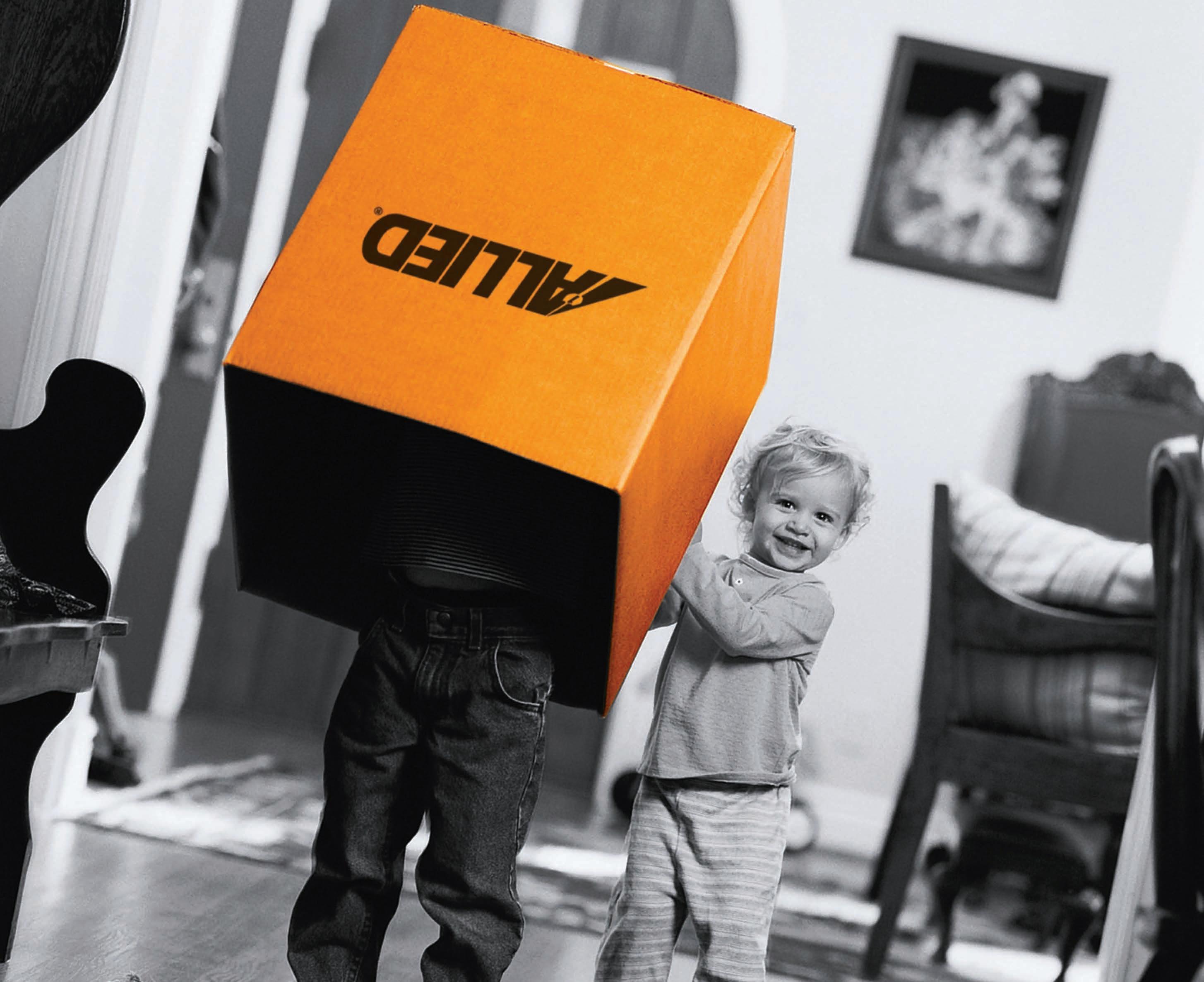





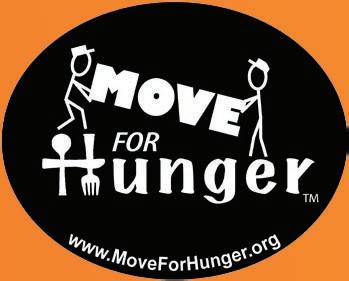
For Cowboys on the move since 1904. 4021 NW 3rd St., OKC 73107 • 800-299-7070 | 3126 S. Van Buren, Enid, OK 73703 • 800-299-1053 C. Paul Baker Jr., Owner • Allied Van Lines Agent emricksallied.com • Free estimates • Expert packing and crating • Local, long distance and international moves • Record management center • Commercial warehouse and distribution • Specialties in moving electronic equipment • Office moving • Air freight • Office record storage Reliable, Dependable, Predictable.
SPRING IS A SEASON OF RENEWAL

and the OSU Athletic Village is evidence of revitalization of the area north of the new Sherman E. Smith Indoor Training Facility.
The Michael and Anne Greenwood Tennis Center inspired the United States Tennis Association to pronounce it one of the top collegiate tennis facilities in the country. RECORD CROWDS OSU tennis matches and our TENNIS PROGRAMS ARE BOTH NATIONALLY RANKED.

Greetings, OSU fans.





















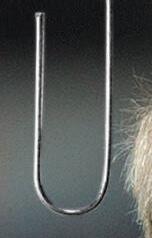




Planning for a new baseball stadium is well underway. Finding a donor willing to step up and make a large commitment is the only thing needed to get this project from dream to reality. Allie P. Reynolds Stadium helped Gary Ward build a powerhouse program, and it is time to give Josh Holliday the same advantage.





The fully functional OSU track and field complex is a showcase for the reigning Big 12 cross country and indoor track champions. The locker rooms and other team amenities should help significantly in attracting the very best athletes from all over the world.
The OSU EQUESTRIAN TEAM has won another Big 12 championship. Congratulations go out to head coach Larry Sanchez and the Cowgirls!
I want to thank each of you for your continued support of Oklahoma State University Athletics. Your generosity in gift giving and season ticket purchases help our student-athletes compete in so many ways. I hope to see all of you at one of our many spring events!
MIKE HOLDER DIRECTOR OF INTERCOLLEGIATE ATHLETICS


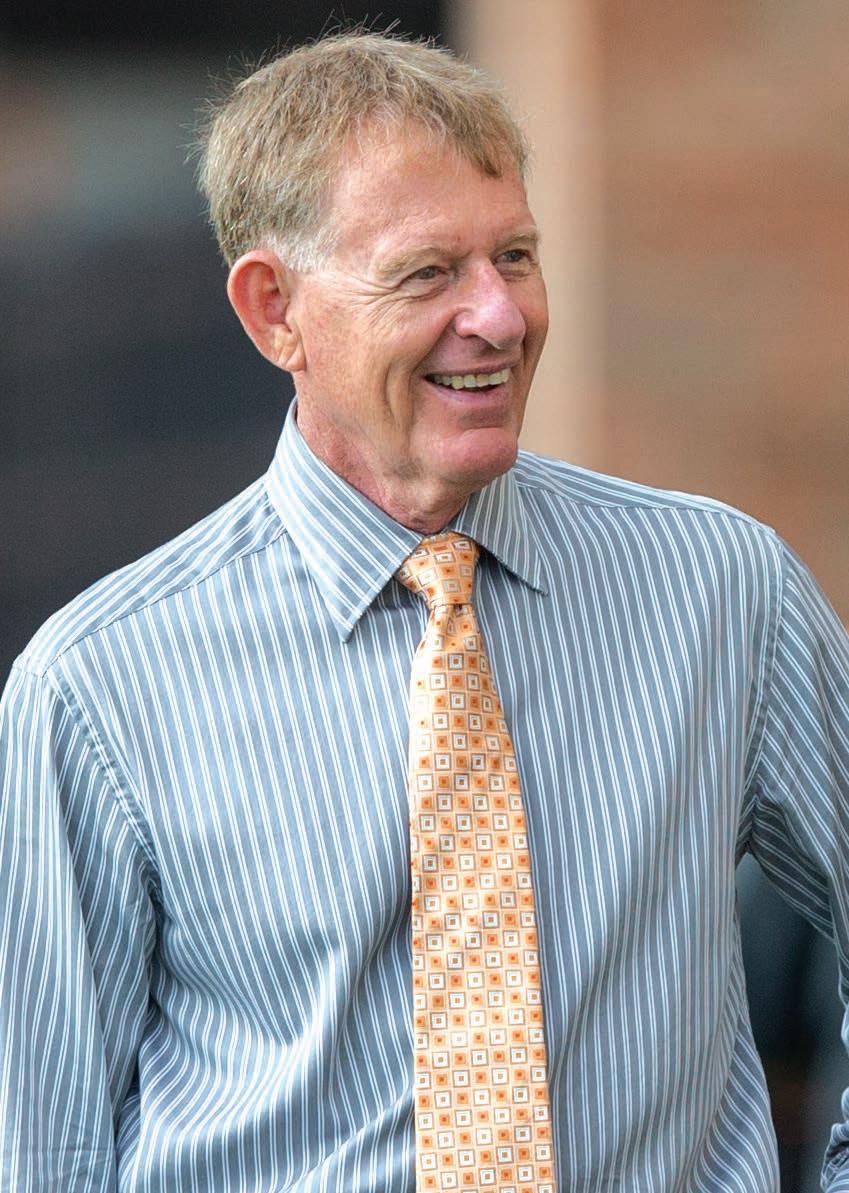
4 PHOTO / BRUCE
WAERFIELD
GO POKES!
Former OSU Men’s Golf Coach OSU Class of 1973 APRIL 2014










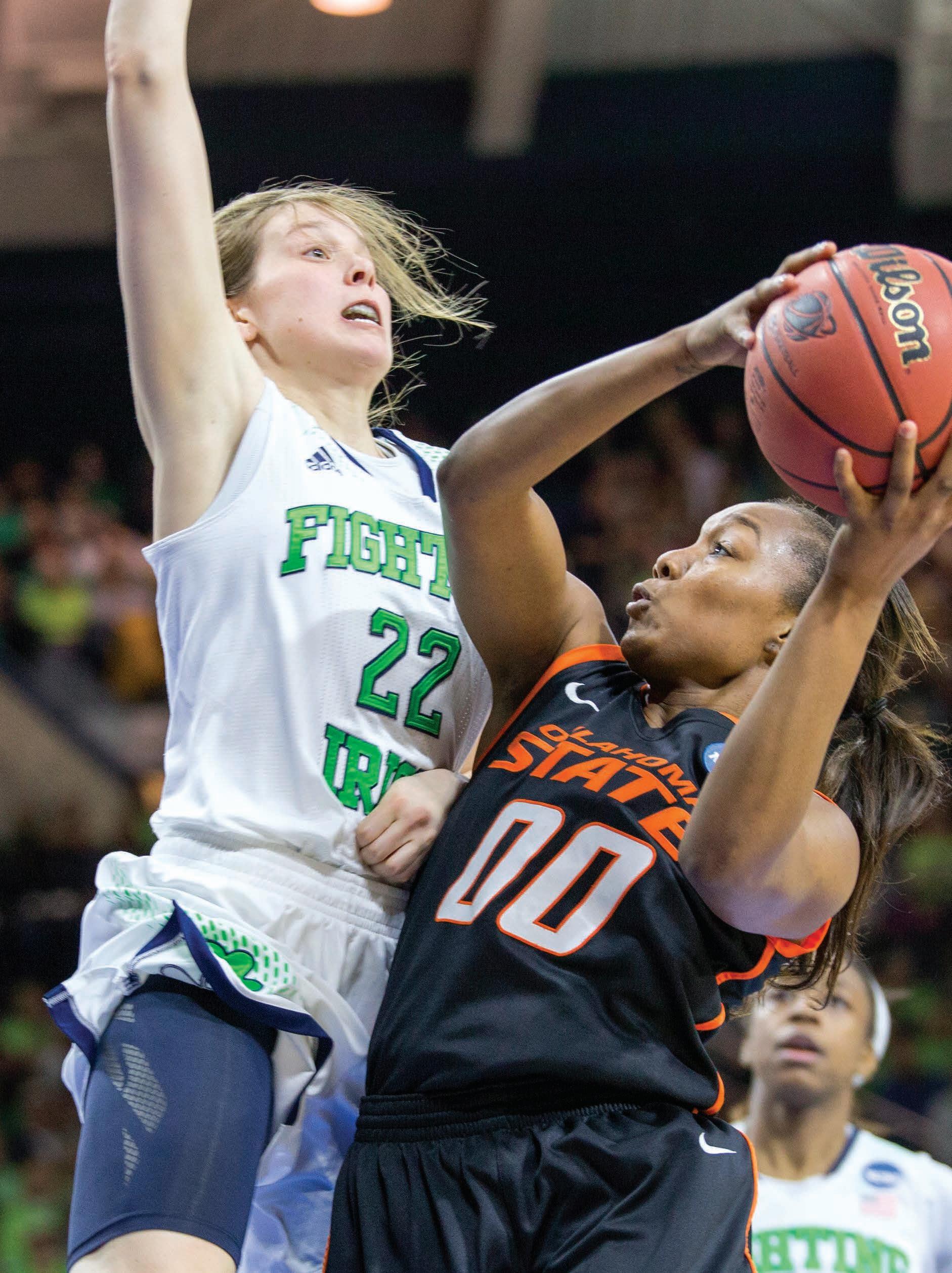


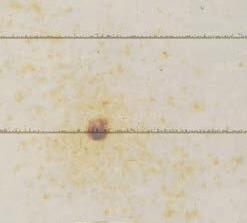





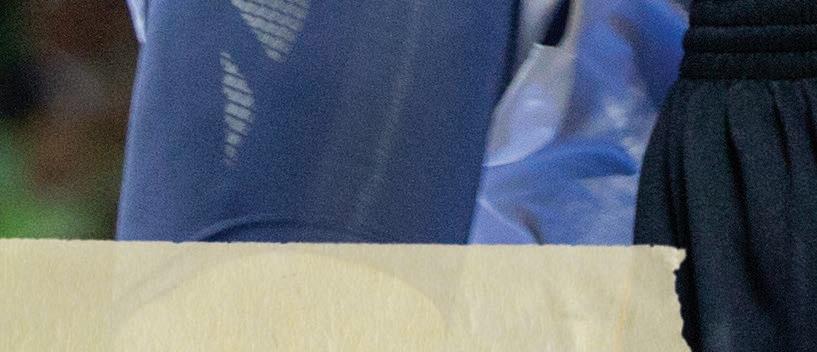








































5 PLAY BOOK APRIL2014 VOL.7 NO.3 the features departments 24 BELIEVING IS SEEING 8 OPERATION: EVERYTHING 16 THE 150 18 CONNECTED FOR LIFE 82 WRAV!NGS 68 THE HONOR ROLL 52 COLD HARD TRUTH 64 TRULY ONE OF A KIND SO SWEET, SO CLOSE 46 WHERE ARE THEY NOW? LORI McNEIL 40 HOW THE BUTLER DOES IT 33 COWBOY GOLF: A CLASSROOM TRADITION 28 NO IFS, ANDS OR BUNTS 60 DOUBLE PLAY 72 IT TAKES A VILLAGE
OSU’s Roshunda Johnson (00) shoots while being defended by Notre Dame’s Madison Cable (22) at the NCAA Tourney Sweet 16 matchup at Purcell Pavilion at the
Joyce Center in South Bend, Indiana.
Hoops & Hollers
PHOTO / BRUCE WATERFIELD
COVER
Clockwise from upper left: SAVANNAH CAMACHO, TRACK; ARJUN KADHE , TENNIS; VIKTORIYA LUSHKOVA , TENNIS; CHAD NOELLE , TRACK; NATALIE CALHOUN , SOCCER.
PHOTOGRAPHY BY PHIL SHOCKLEY
At Oklahoma State University, compliance with NCAA, Big 12 and institutional rules is of the utmost importance.
As a supporter of OSU, please remember that maintaining the integrity of the university and the Athletic Department is your first responsibility. As a donor, and therefore booster of OSU, NCAA rules apply to you. If you have any questions, feel free to call the OSU Office of Athletic Compliance at 405-744-7862
Remember to always “Ask Before You Act.”
Respectfully,
BEN DYSON ASSISTANT
ATHLETIC
DIRECTOR FOR

COMPLIANCE
POSSE POKES
POSSE MAGAZINE STAFF
VICE PRESIDENT OF ENROLLMENT MANAGEMENT / MARKETING KYLE WRAY
EDITOR-IN-CHIEF / SENIOR ASSOCIATE ATHLETIC DIRECTOR KEVIN KLINTWORTH
SENIOR ASSOCIATE ATHLETIC DIRECTOR / EXTERNAL AFFAIRS JESSE MARTIN
ART DIRECTOR / LEAD DESIGNER PAUL V. FLEMING
ASSISTANT ART DIRECTOR / DESIGNER ROSS MAUTE
PRODUCTION ASSISTANT / PHOTOGRAPHER BRUCE WATERFIELD
ASSISTANT EDITORS CLAY BILLMAN, MICHAEL BAKER
CONTRIBUTING PHOTOGRAPHERS BRUCE WATERFIELD, PHIL SHOCKLEY, GARY LAWSON, LUKE LUO
ACE AERIAL PHOTOGRAPHY, CHRIS KEANE, CHRIS DEAL
CONTRIBUTING WRITERS KEVIN KLINTWORTH, WADE M c WHORTER, RYAN CAMERON,

CONTRIBUTING WRITERS SEAN MAGUIRE, GENE JOHNSON, CLAY BILLMAN, SARA LEGARSKY
CONTRIBUTING DESIGNERS MARK PENNIE, MICHAEL ORR, CLAY BILLMAN
ATHLETICS ANNUAL GIVING (POSSE) DEVELOPMENT STAFF
POSSE DIRECTOR ELLEN AYRES
PREMIUM SERVICES DIRECTOR KARYL HENRY
PUBLICATIONS COORDINATOR CLAY BILLMAN
PROGRAMS COORDINATOR / BENEFITS MARY LEWIS









EVENT COORDINATOR / GAME DAY PARKING MANAGER JOE NELSON
ATHLETIC DEVELOPMENT ASSISTANT STEPHANIE BOESE
ATHLETICS MAJOR GIFT DEVELOPMENT STAFF
SENIOR ASSOCIATE ATHLETIC DIRECTOR / DEVELOPMENT LARRY REECE
DIRECTOR OF DEVELOPMENT / ATHLETICS MATT GRANTHAM
PROJECT MANAGER SHAWN TAYLOR
OSU POSSE
102 ATHLETICS CENTER STILLWATER, OK 74078-5070



P 405.744.7301 F 405.744.9084












OKSTATEPOSSE.COM OKSTATEPOSSE


FOR THE FIRST TIME IN SCHOOL HISTORY, Oklahoma State men’s track and eld won a conference indoor championship.
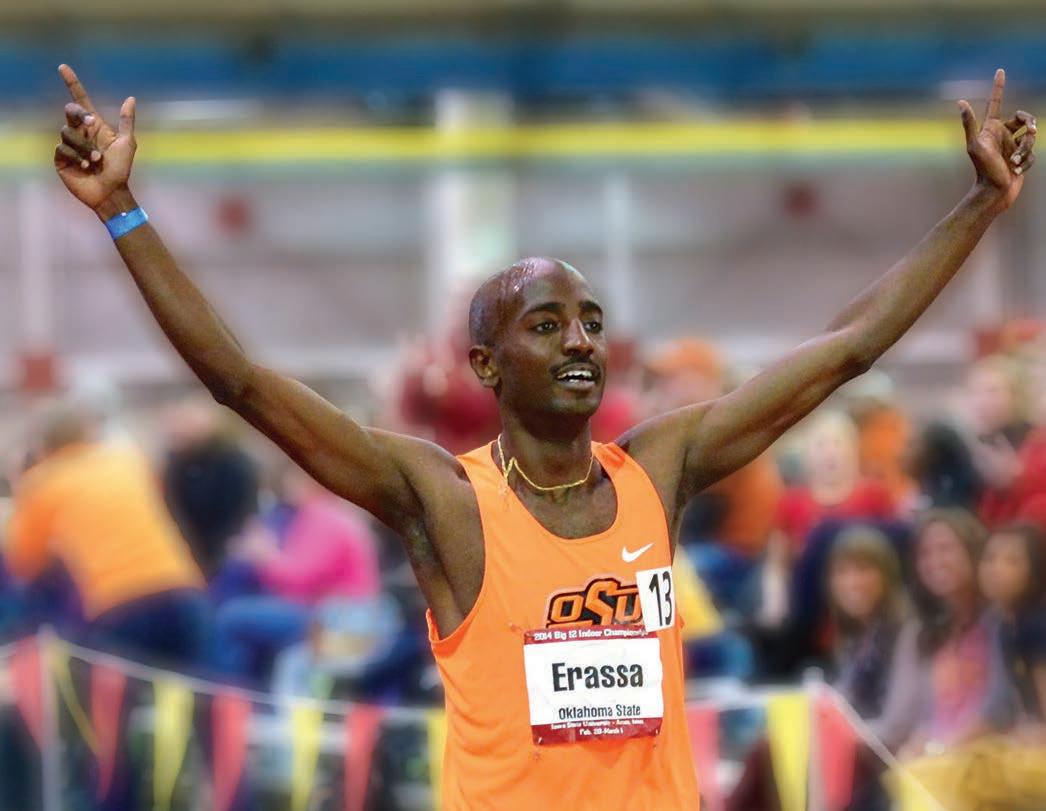
At the Big 12 Indoor Track & Field Championships, in Ames, Iowa, Kirubel Erassa, below, became the first athlete in school history to win three individual conference titles at the same meet.
The No. 3 Oklahoma State equestrian team won the Big 12 Championship for the third-straight year after DEFEATING NO. 6 BAYLOR, 10–9, in Waco, Texas.

WITH HER TWO WINS in the tournament, JUNIOR Katy Krshka was named BIG 12 CHAMPIONSHIP MOST OUTSTANDING PERFORMER in the reining event.
POSSE@OKSTATE.EDU @OSUPOSSE
ADVERTISING 405.744.7301
EDITORIAL 405.744.1706
Donations received may be transferred to Cowboy Athletics, Inc. in accordance with the Joint Resolution among Oklahoma State University, the Oklahoma State University Foundation, and Cowboy Athletics, Inc. POSSE magazine is published four times a year by Oklahoma State University Athletic Department and the POSSE, and is mailed to current members of the POSSE. Magazine subscriptions available by membership in the POSSE only. Membership is $150 annually. Postage paid at Stillwater, OK, and additional mailing offices. Oklahoma State University, in compliance with Title VI and VII of the Civil Rights Act of 1964, Executive Order 11246 as amended, Title IX of the Education Amendments of 1972, Americans with Disabilities Act of 1990, and other federal laws and regulations, does not discriminate on the basis of race, color, national origin, sex, age, religion, disability, or status as a veteran in any of its policies, practices or procedures. This includes but is not limited to admissions, employment, financial aid, and educational services. Title IX of the Education Amendments and Oklahoma State University policy prohibit discrimination in the provision of services or benefits offered by the University based on gender. Any person (student, faculty or staff) who believes that discriminatory practices have been engaged in based upon gender may discuss their concerns and file informal or formal complaints of possible violations of Title IX with the OSU Title IX Coordinator, Mackenzie Wilfong, J.D., Director of Affirmative Action, 408 Whitehurst, Oklahoma State University, Stillwater, OK 74078, (405) 744-5371 or (405) 744-5576 (fax).
This publication, issued by Oklahoma State University as authorized by the Associate Athletic Director, POSSE, was printed by Southwestern Stationers at a cost of $1.11 per issue. 10M/April 2014/#5264.
POSSE magazine is published four times a year by Oklahoma State University, 121 Cordell North Stillwater, OK 74078.
The magazine is produced by OSU Athletics and University Marketing, and is mailed to current members of the POSSE Association. Membership starts at $150/year and includes benefits such as the POSSE Magazine and member auto decals. POSSE annual funds contribute to student-athlete scholarships and operating expenses, which are critical to helping our teams stay competitive. Gifts of all sizes impact all areas of athletics. Postage paid at Stillwater, OK, and additional mailing offices.
6
PHOTO / LUKE LUO
PHOTO / BRUCE WATERFIELD
450 COWBOY AND COWGIRL STUDENT-ATHLETES THANK YOU FOR YOUR LOYAL SUPPORT.
OSU ATHLETICS AND OVER
OPERATION:

EVERYTHING

YOU KNOW
that member of the basketball team that the fans love? The one who takes the charge, the one who tumbles into the seats to save a possession, the one who makes the extra pass … the hard-nosed defender? You know the one that gets an ovation from the fans every single time he or she leaves the court?
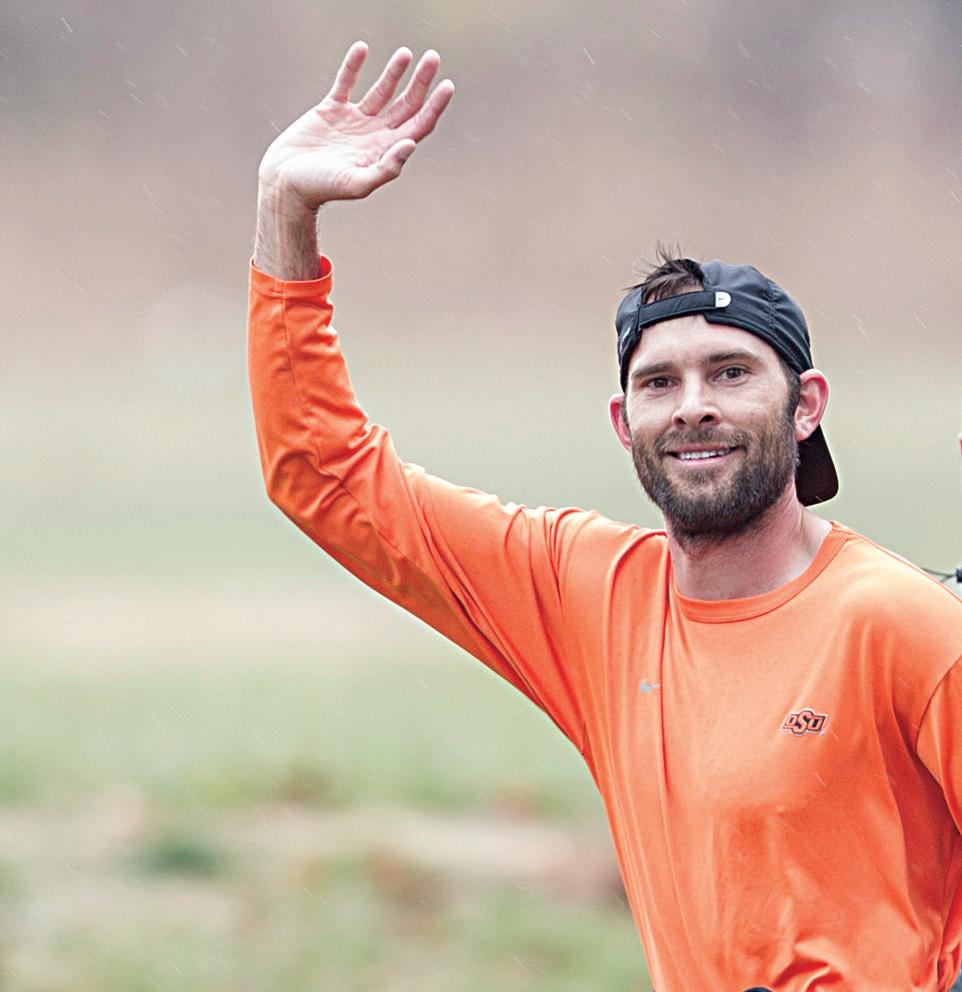
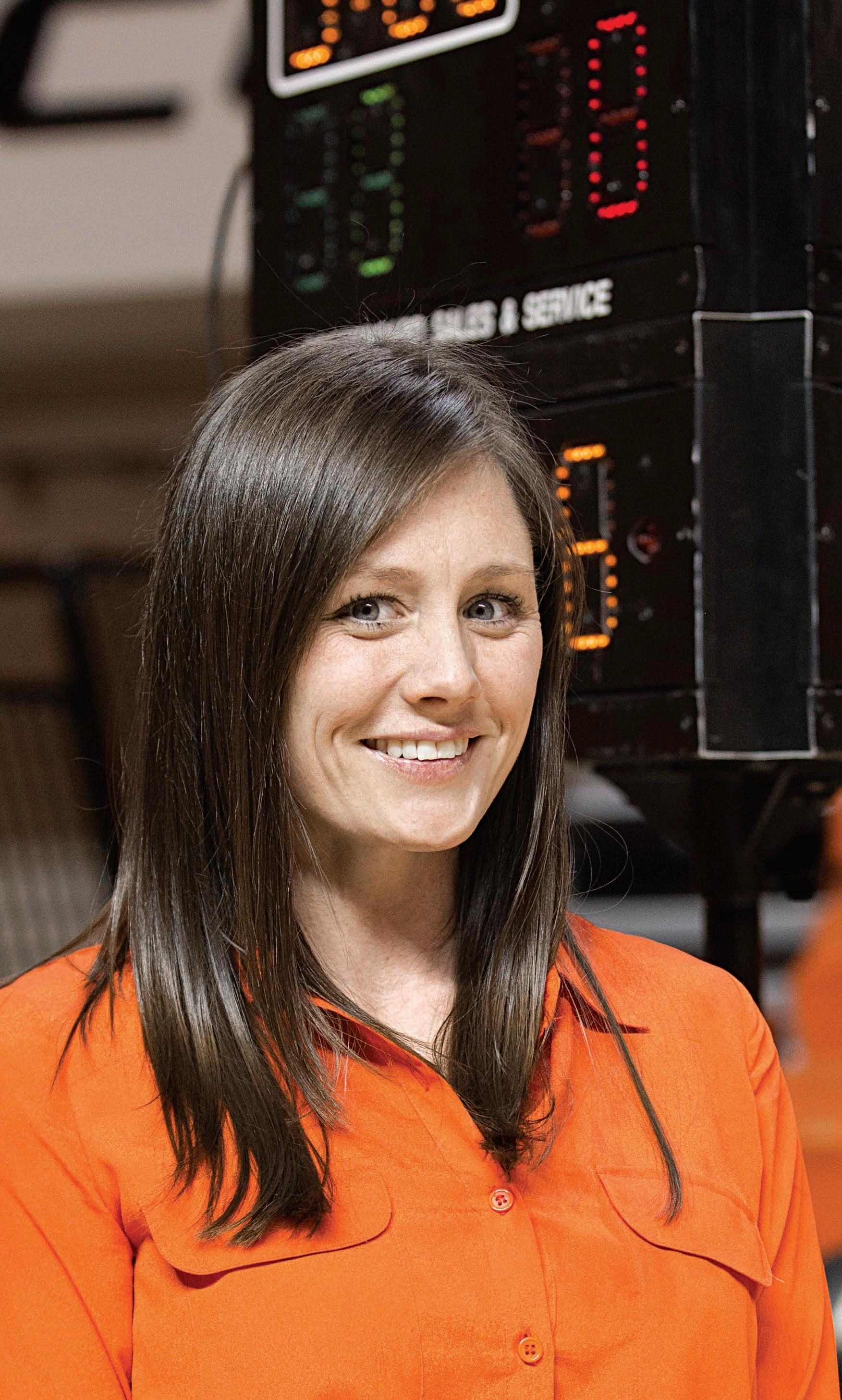
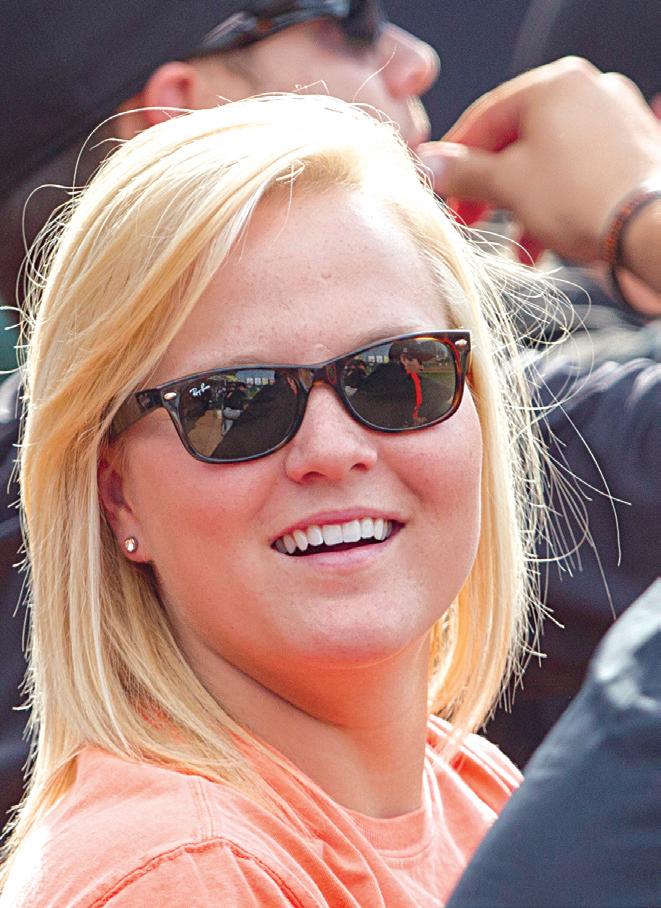
8
BRANDY ESPOSITO — WRESTLING
SEAN McCABE — TRACK AND FIELD/CROSS COUNTRY
KELSI JONES — BASEBALL
APRIL 2014
SHE OR HE IS CALLED THE


GLUE GUY, the role player. Others are the stars, but the glue guy is what holds the team together — THE JACK OR JILL OF ALL TRADES. The glue guy is rarely an all-conference player and does few interviews. But everyone on the team knows that they would be in big trouble without the glue guy.
Well coaching staffs have a glue guy as well. They are called the DIRECTOR OF OPERATIONS and nothing is beyond the scope of their job description. From travel agent to concierge, from purchase orders to championship rings, from budget meetings to student housing, the ops folks are busy ensuring that the coaching sta has time to coach. And the director of operations needs to make time for absolutely everything else.
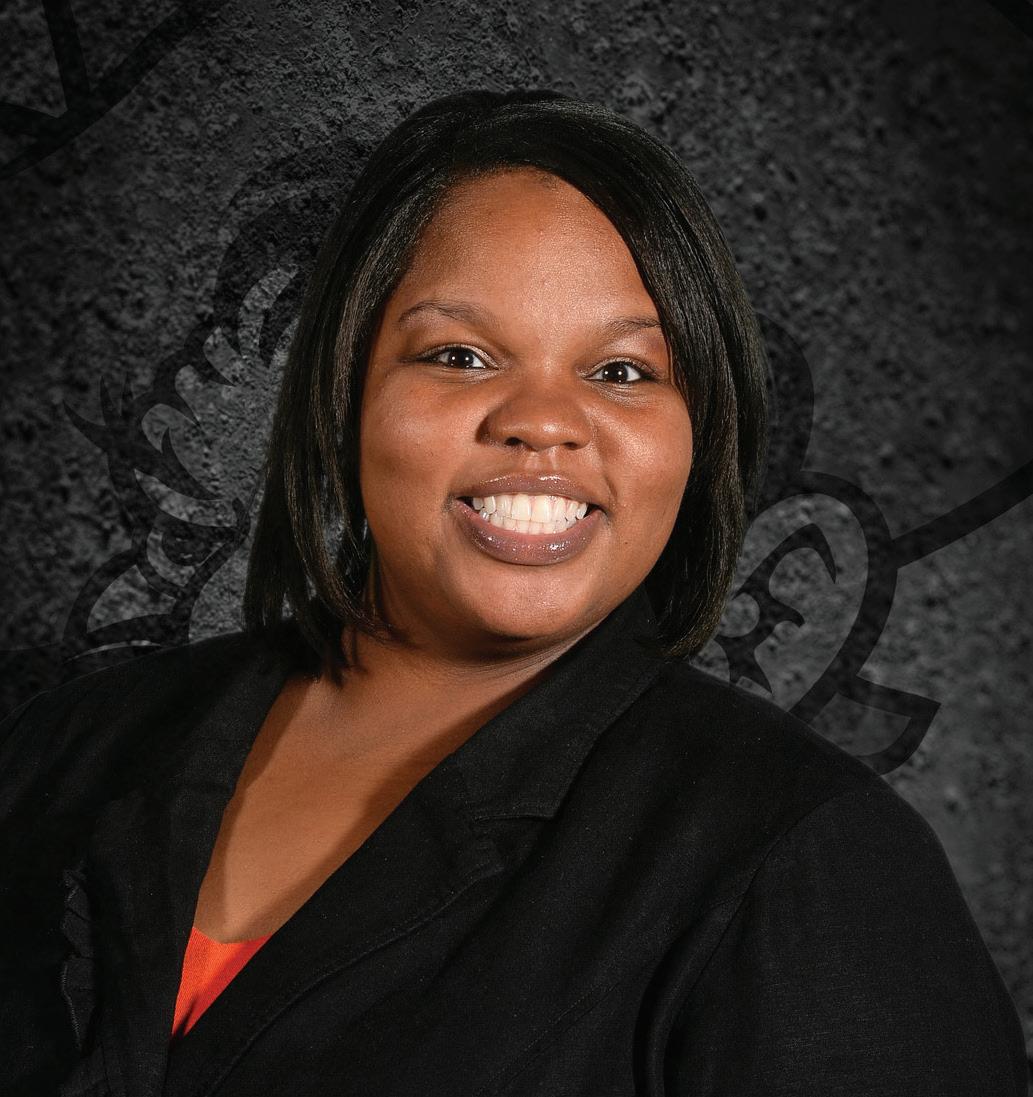
The job description can vary from sport to sport, but there is little doubt who the glue guy is within each varsity program at Oklahoma State. They are invaluable, unsung, out of the spotlight, frazzled, overworked, and probably organized and disorganized all at once.
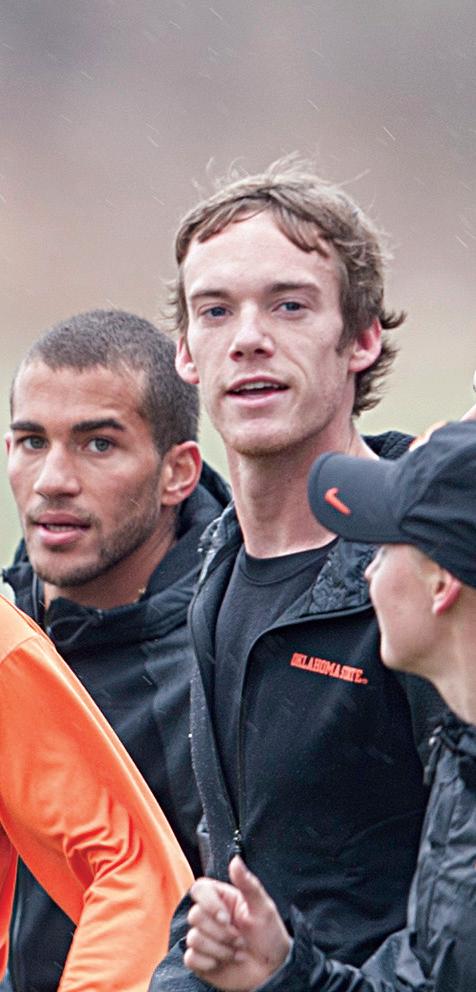
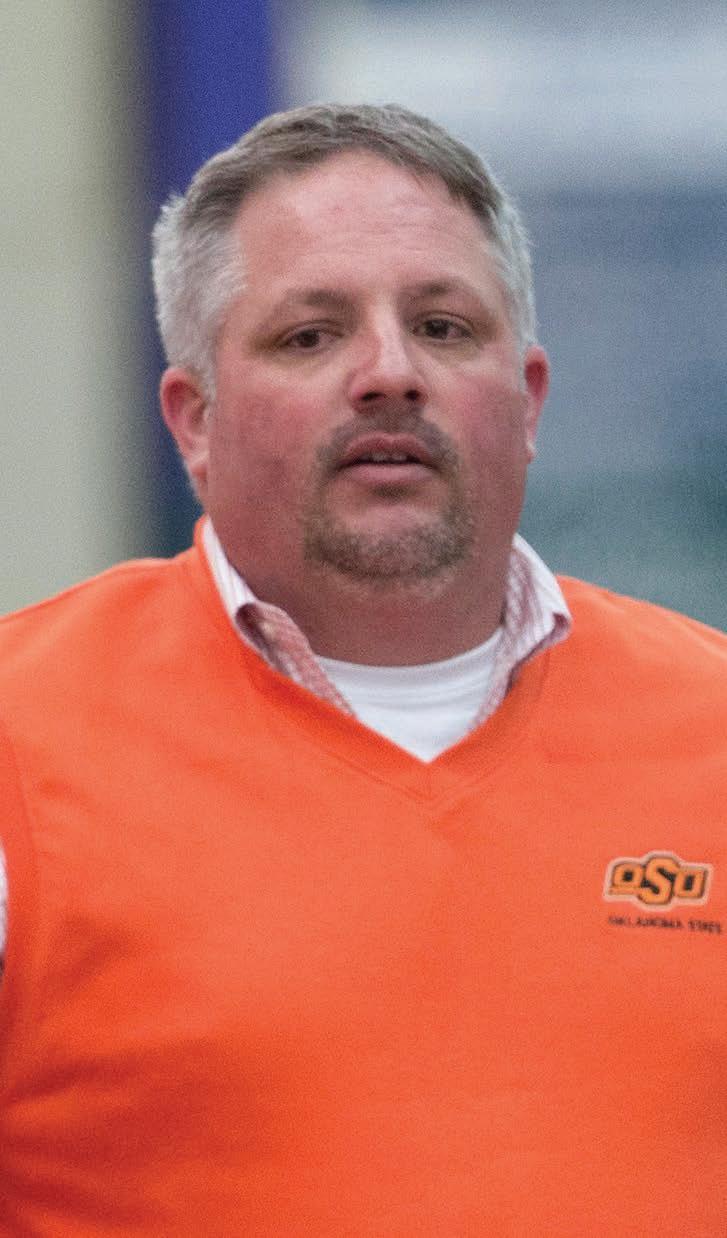
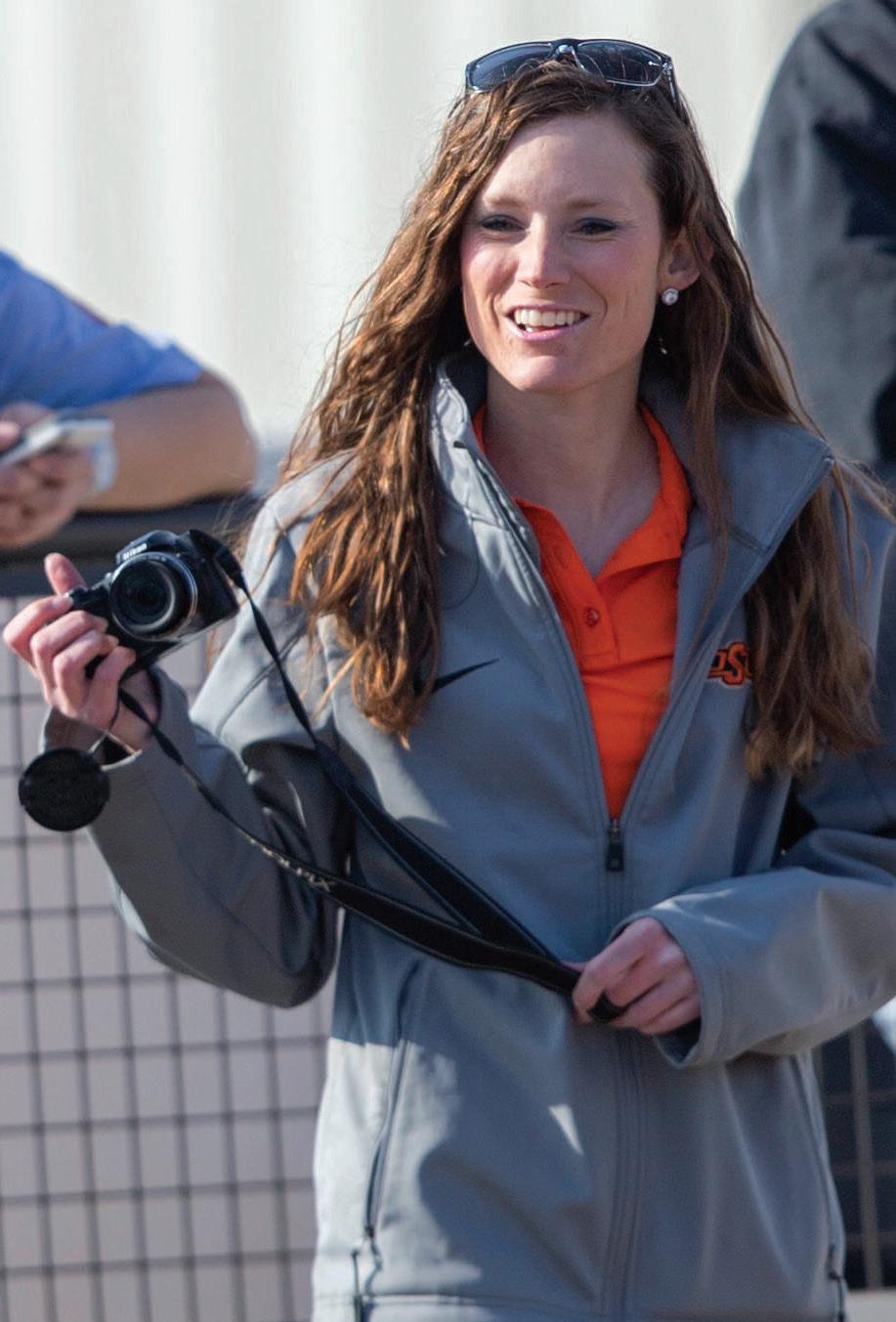
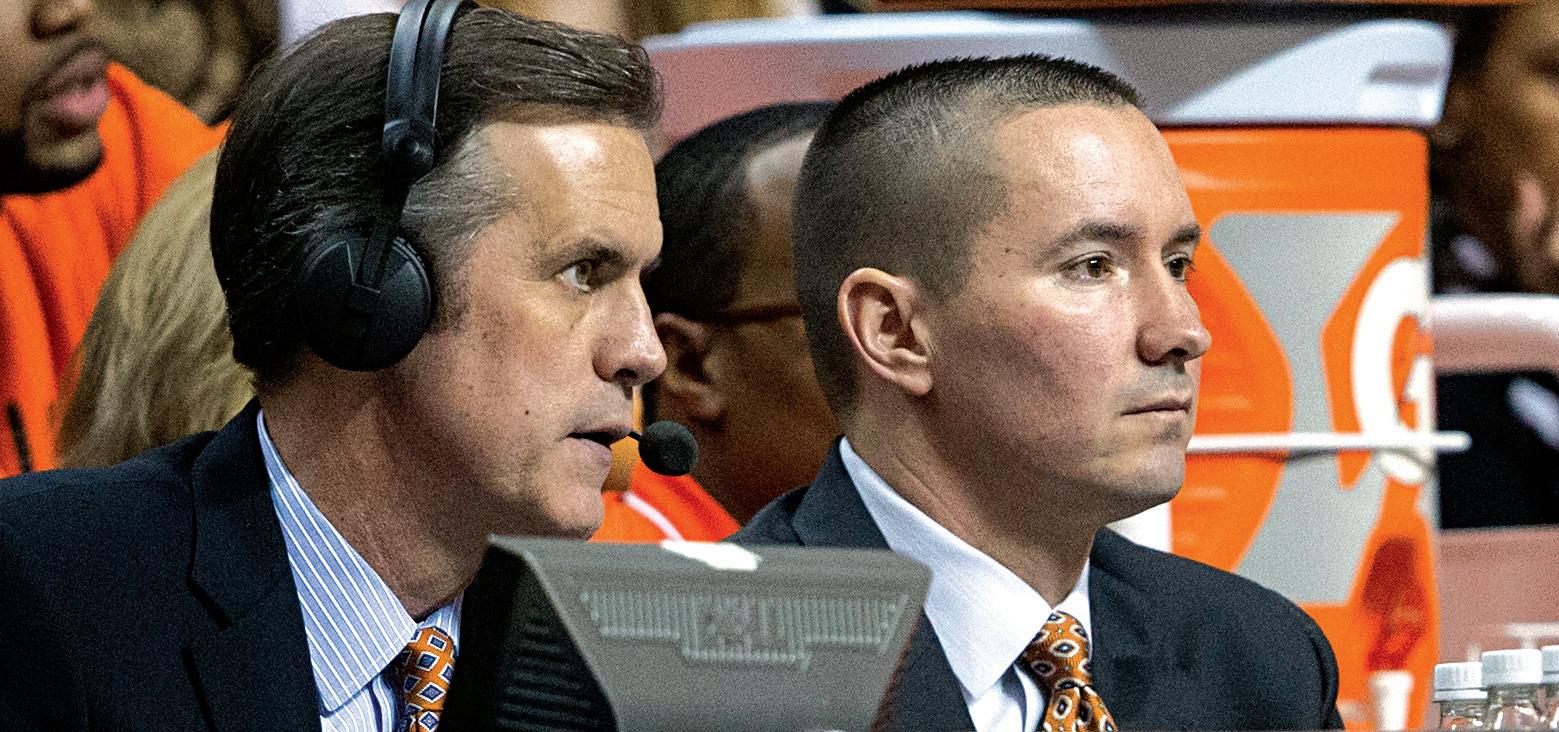
9
JOEY BIGGS — MEN’S BASKETBALL (RIGHT)
AMBER CARTER — WOMEN’S BASKETBALL
KAYLAN LOWRIE — SOFTBALL
DAVID SANDERSON — EQUESTRIAN
AND THEY HAVE NO PROBLEM TAKING A CHARGE.
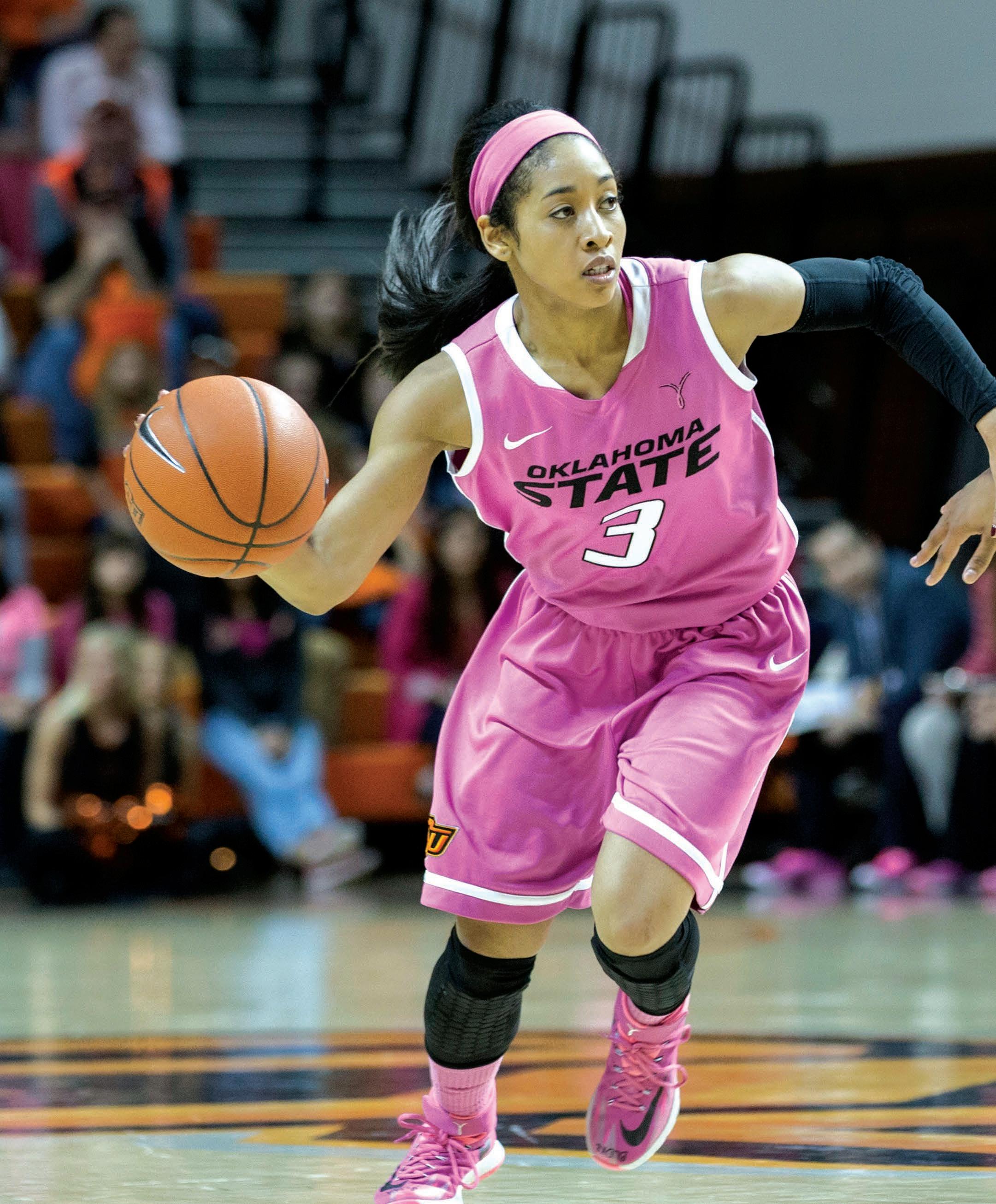


10
APRIL 2014
TIFFANY BIAS
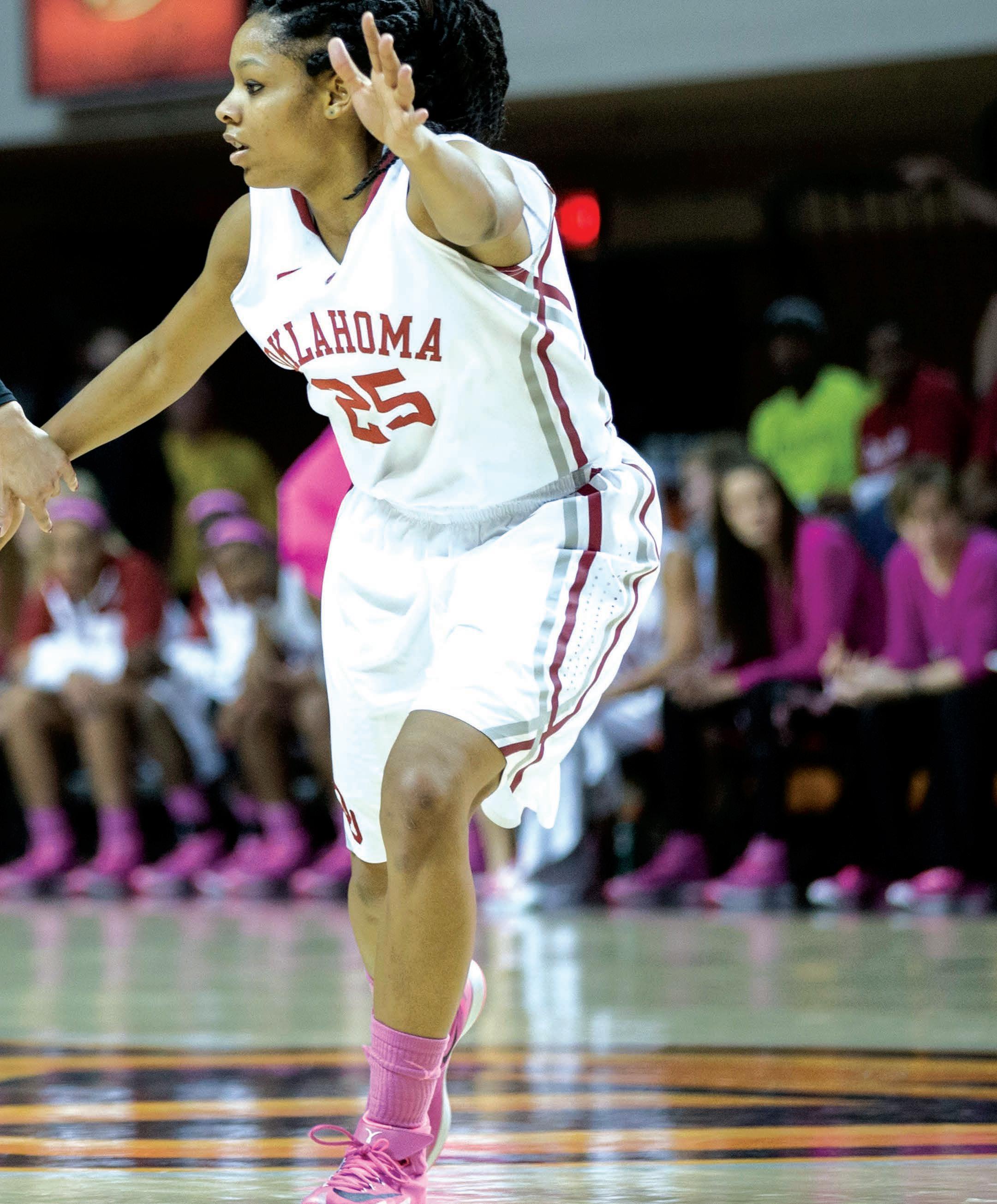

11
PHOTOGRAPHY BY BRUCE WATERFIELD


12
APRIL 2014
PHOTOGRAPHY BY BRUCE WATERFIELD


13
TYLER NURDIN

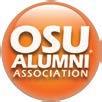
ENDORSED BY e Ranch is e Talk of the Town! Don’t miss your chance to be part of Stillwater’s only community providing a full range of senior living options. is beautiful new development, sponsored by Epworth Living, will include your choice of well-appointed cottages and apartments, a world-class clubhouse, ne dining, tness center, and so much more. And with the peace of mind a orded by the Life Care plan, you can relax and enjoy it all. www.theranchliving.org For more information call 405-743-2990 or toll free 866-463-6726. Over 50% reserved! Choice locations and styles still available...NOW is the time!


2014 COWBOY GOLF CAMP • JUNE 7-11 • JUNE 11-15 • JUNE 7-15 BOYS & GIRLS AGE 11-19 GOLF INSTRUCTION: THE COWBOY WAY FOR MORE INFO OR TO ENROLL YOUR CHILD, CALL 405-269-6293, VISIT OKSTATE.COM OR COWBOYGOLFCAMP.COM RICKIE FOWLER 2008 Ben H ogan Award Winner 2-Time First Team All-American 2010 PGA Rookie of the Year 2010 U.S. Ryder Cup Team Member 2012 Wells Fargo Championship Winner 2014 WGC-Accenture Match Play Semifinalist Cowboy Golf Camp is open to any and all entrants, limited only by number, age, grade level and/or gender.
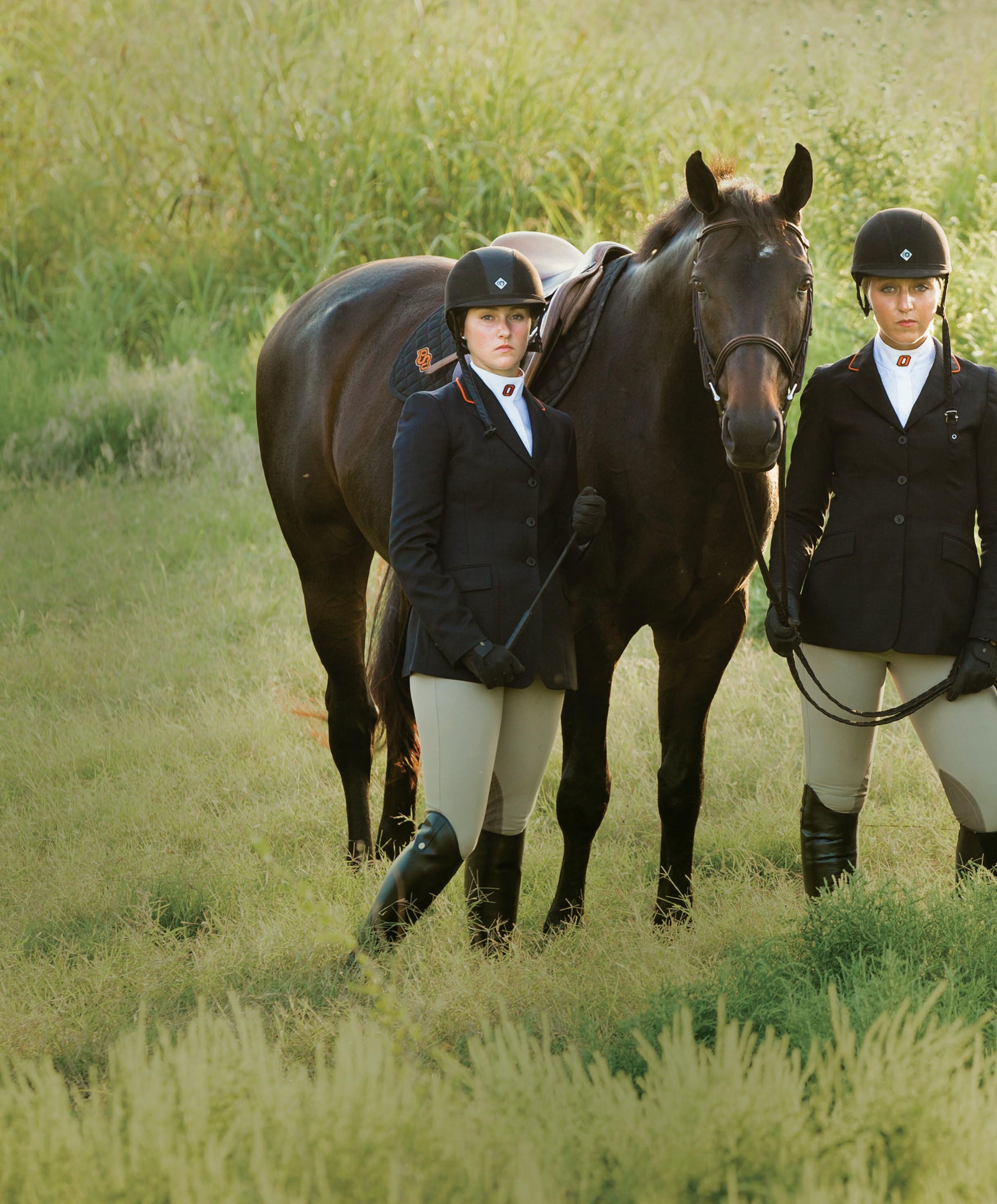





16 45 Bryant J. Coffman 46 David & Julie Ann Ronck 47 Russ Harrison & Natalie Shirley 48 Garland & Penny Cupp 49 OSU President’s Office 50 Jon & Suzanne Wiese 51 Jim & Vicki Click Jr. 52 Jay & Connie Wiese 53 Jameson Family, LLC 54 Andy Johnson 55 Jerry & Rae Winchester 56 Lambert Construction 57 Atlas Paving Company 58 Blueknight Energy Partners, LP 59 Anonymous #3 60 Philip & Shannon Smith 61 Mark & Beth Brewer 62 David LeNorman 63 KNABCO Corp 64 Ike & Mary Beth Glass 65 Calvin & Linda Anthony Boone Pickens 6,095,469 2 Malone & Amy Mitchell 3 Sherman & Eloise Smith 4 John Clerico 5 Karsten Manufacturing 6 W & W Steel Co. 7 Dennis & Cindy Reilley 8 Michael & Anne Greenwood 9 Ross & Billie McKnight 118,674 10 Dennis & Karen Wing 11 Robert A. Funk 12 Walt & Peggy Helmerich III 13 A.J. & Susan Jacques 14 Ed & Jana Evans 15 Harold & Joyce Courson 16 Mike & Robbie Holder 17 Chesapeake Energy, Inc. 18 Bank SNB 19 ONEOK, Inc. 20 Ken & Jimi Davidson 21 Bob Howard 22 Watson Family Foundation 23 Joe & Connie Mitchell 24 Gary & Jerri Sparks 25 Kent & Margo Dunbar 26 Vickie & Tucker Link Foundation 27 Patrick & Patricia Cobb 28 Richard & Barbara Bogert 29 Chad Clay 30 Greg & Rhonda Casillas 31 Anonymous #1 32 RCB Bank 33 Lew & Suzanne Meibergen 38,545 34 Neal & Jeanne Patterson 35 OG&E 36 Joullian & Co. 37 David & Tracy Kyle 38 Brad & Margie Schultz 39 Flintco, Inc. 40 James & Mary Barnes 41 Sparks Financial 42 Bob & Kay Norris 43 OSU Foundation 44 Anonymous #2 1 PHOTOGRAPHY BY PHIL SHOCKLEY 66 Richard & Joan Welborn 67 David Bradshaw 68 Mark & Lisa Snell 23,241 69 Griff & Mindi Jones 70 JS Charter Investments, LLC 71 Thomas & Barbara Naugle 72 The Foothills Foundation 73 Barry & Roxanne Pollard 74 SST Software 75 Mike Bode & Preston Carrier 76 Les & Cindy Dunavant 77 Harvey & Donna Yost 78 Sandra M. Lee 79 American Fidelity 80 Bank of Oklahoma 81 Darton & Jamie Zink 82 K.D. & Leitner Greiner 83 OSU Center for Health Sciences 84 Jerry & Lynda Baker 85 Doug & Nickie Burns APRIL 2014
HOW DO MY POINTS RANK?
AS OF
OSU ATHLETICS PRIORITY POINT SYSTEM

The PRIORITY POINT SYSTEM provides a fair, consistent and transparent method of providing benefits to donors in exchange for their financial investments in OSU athletics.
DONORS GAIN POINTS THREE WAYS:
CONTRIBUTIONS: All current and lifetime contributions (cash or stock) are worth 3 points per $100 donation. Planned (deferred) gifts in the new Leave a Legacy Endowment Campaign will receive 1 point per $100.

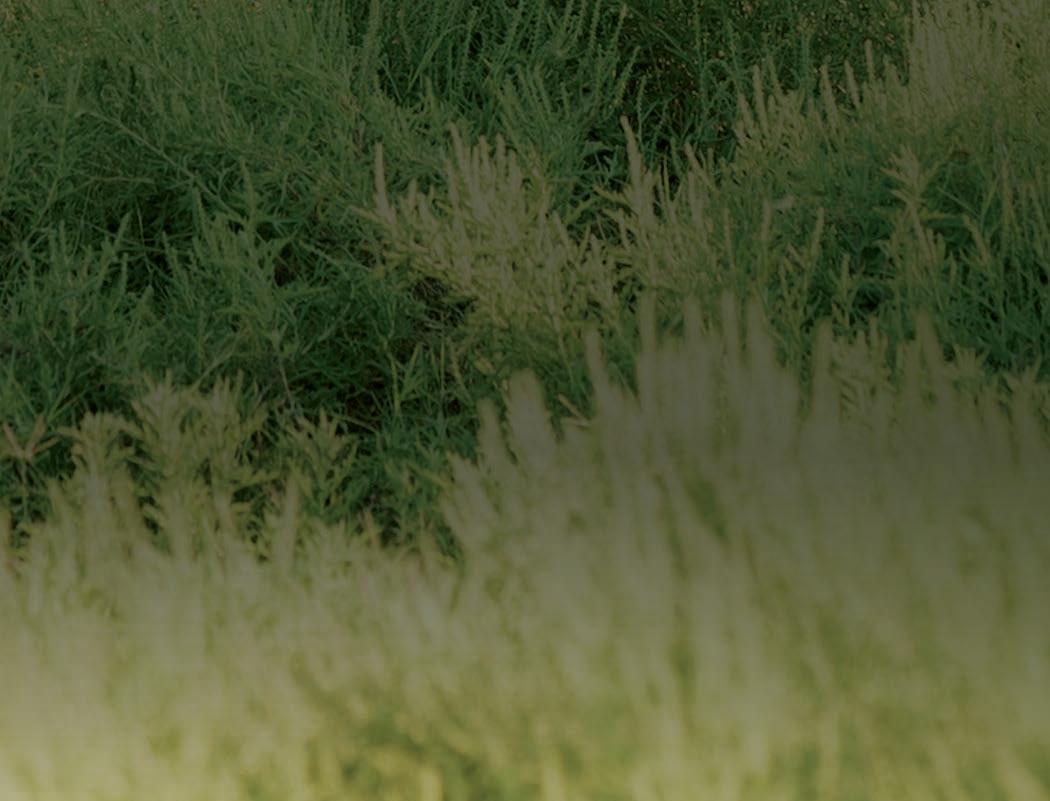
COMMITMENT: Donors will earn one point each year for purchasing season tickets (one point per sport annually), as well as one point for each year of POSSE donations.
CONNECTION WITH THE UNIVERSITY: Donors (or their spouses) who are OSU Alumni receive a one-time 10 point bonus, as do OSU faculty/staff and letterwinners.
Points never diminish and will carry over to subsequent years. Donors retain all previously earned Priority Points in their giving history. For questions about the POSSE Priority Point System, email posse@okstate.edu or call us at 405.744.7301.


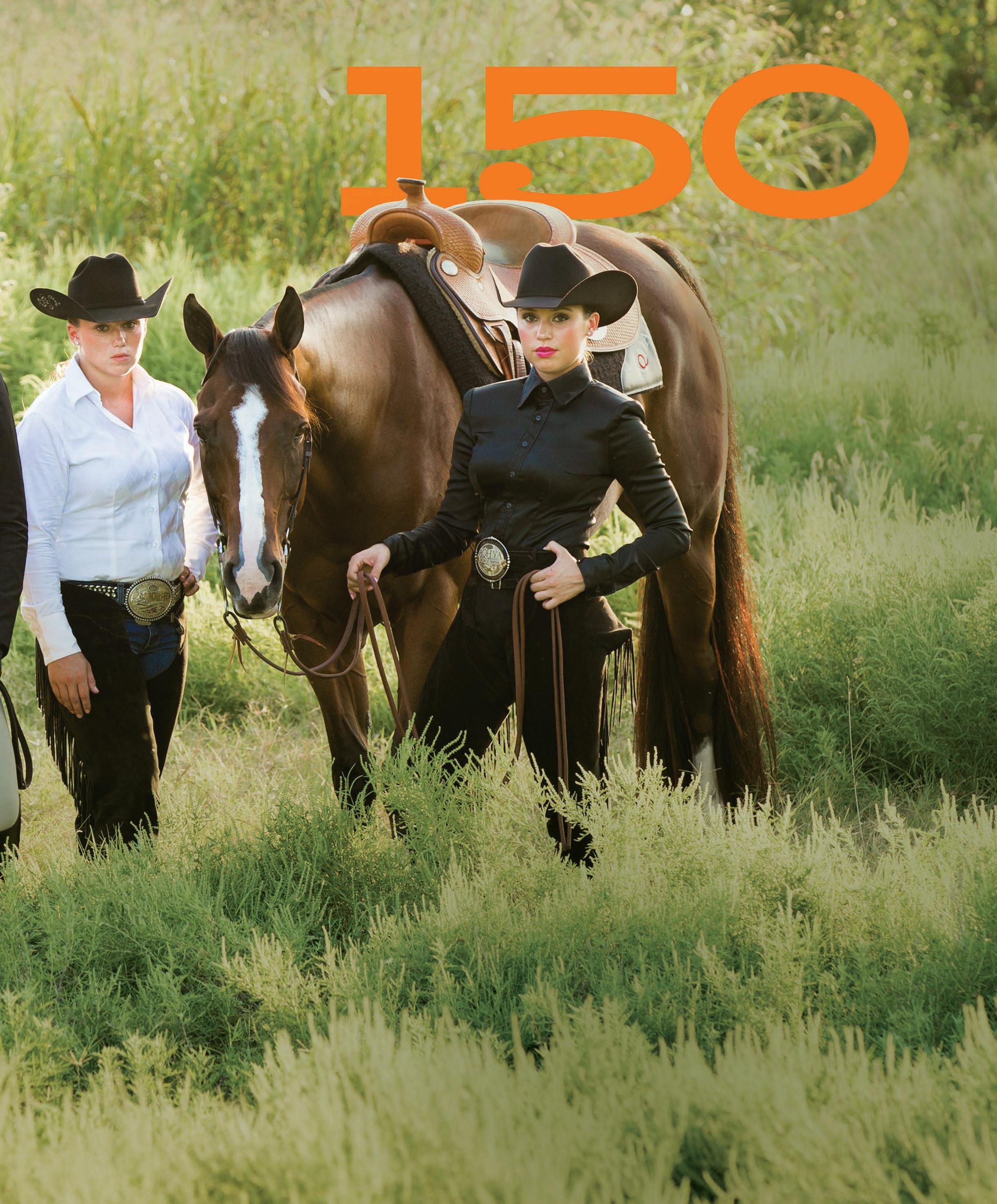
17 POINTS RANK 131,518 top 5 30,085 50 17,634 100 6,803 250 3,432 500 2,167 750 1,592 1,000 559 2,500 137 5,000 40 7,500 27 8,500
FEB.
2014
27,
105 Z-Equipment, LLC 106 John & Gail Shaw 107 Johnsons of Kingfisher 108 Austin & Betsy Kenyon 109 Tatum Family 110 Stan & Shannon Clark 111 Larry Bump 112 Russ & Julie Teubner 113 Brent & Mary Jane Wooten 114 OSU Alumni Association 115 Terry & Martha Barker 116 Bill & Claudean Harrison 117 Brad & Leah Gungoll 118 Anonymous #4 119 F & M Bank & Trust 120 OSU Business Office 121 AEI Corporation - Oklahoma 122 Baab Legacy, LLC 123 Mike & Judy Johnson 124 Tom & Sandy Wilson 125 Chandler USA, Inc. 126 Chip & Cindy Beaver 127 Jay & Fayenelle Helm 128 Chris & Julie Bridges 129 Bob & Mary Haiges 130 James D. Carreker 131 Bryan Close 132 Thomas Winton 133 Randy & Pati Thurman 13,529 134 First Capital Bank 135 Vionette & John Dunn 136 Anonymous #14 137 Steven Farris 138 Norman & Suzanne Myers 139 Drummond Investments 140 Bill & Karen Anderson 141 James H. Williams 142 Jack Bowker Ford 143 Shaw’s Gulf 144 John & Patti Brett 145 Robert & Sharon Keating 146 Mustang Fuel 147 Gary & Mary Ellen Bridwell 148 Mike & Kristen Gundy 149 Randall & Carol White 150 Bob & Tammie Tway 95 Ed & Mary Malzahn 96 Ron & Marilynn McAfee 97 Scott & Kim Verplank 98 Henry Wells 99 The Bank of America 100 The Oklahoman 101 Ed & Kathy Raschen 102 BancFirst 103 MidFirst Bank 104 Anonymous #15 THE AS OF FEBRUARY 27, 2014 86 Emrick’s Van & Storage 87 Southwest Filter Co. 88 Diane & Steve Tuttle 89 Steve & Jennifer Grigsby 90 E. Turner & Cindy Davis 91 A-Cross Ranch 18,338 92 Ameristar Fence Products 93 Larry Albin 94 John & Jerry Marshall
FOR




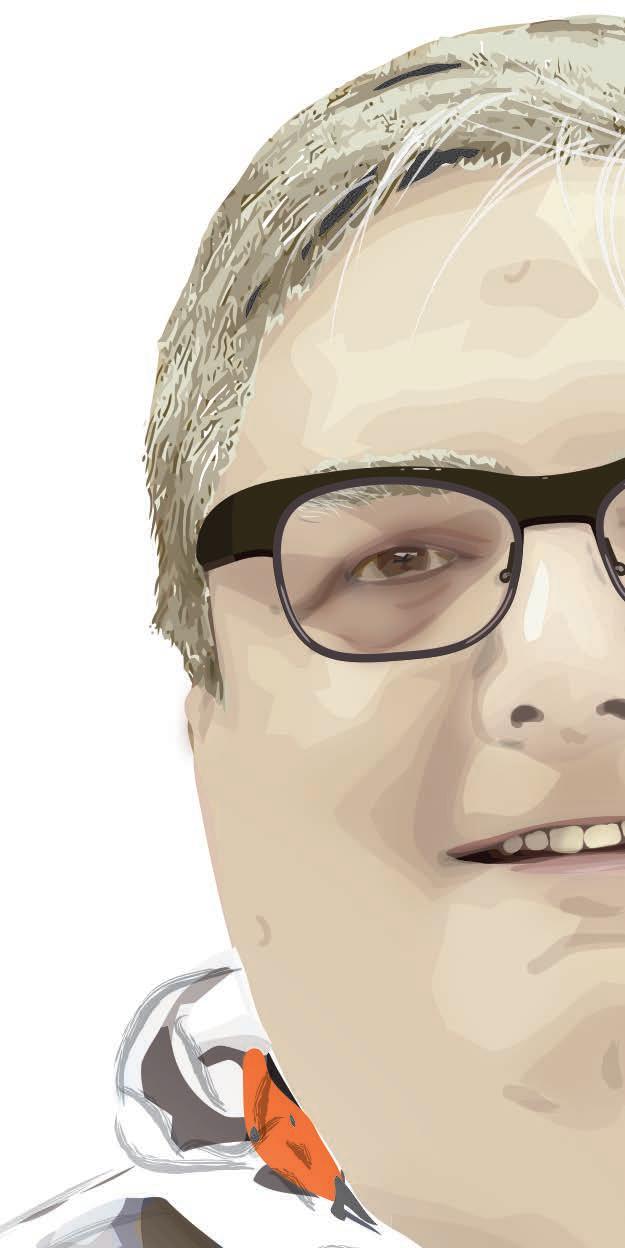

 STORY BY WADE McWHORTER
STORY BY WADE McWHORTER

ORANGE.






“I never got rid of my orange blood, it just took some time for it to come back to the top again,” Ronck said.

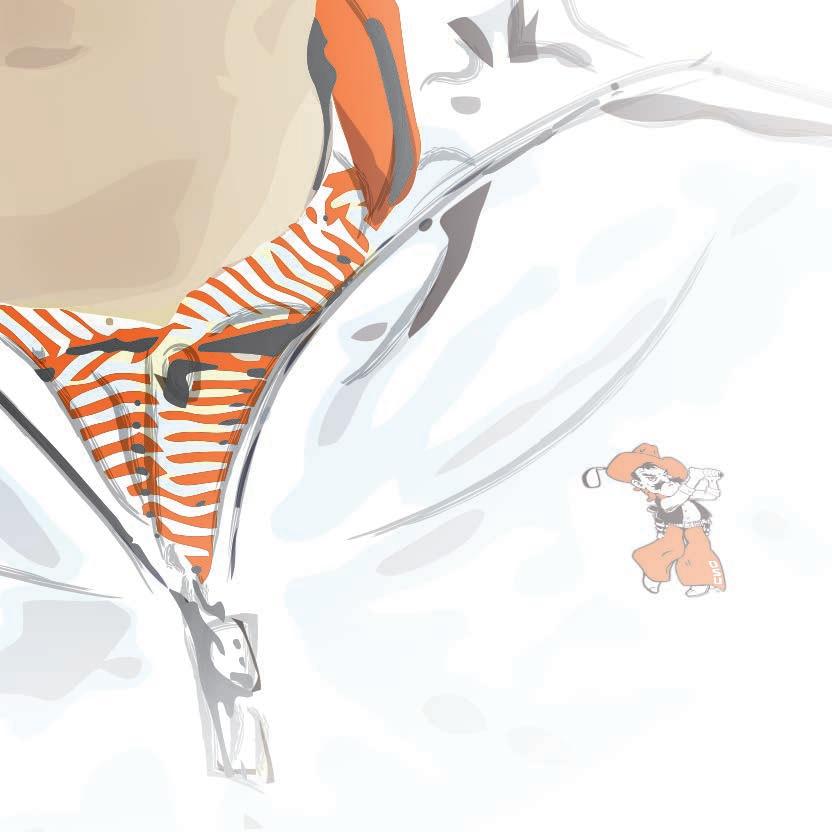
And once that happened, both Ronck and OSU have been blessed by the rekindling of their relationship.







A native of Enid, Okla., Ronck grew up in a family of OSU fans. An aspiring sports writer, he briefly flirted with the idea of attending the University of Missouri before deciding to follow his two older brothers to Stillwater.
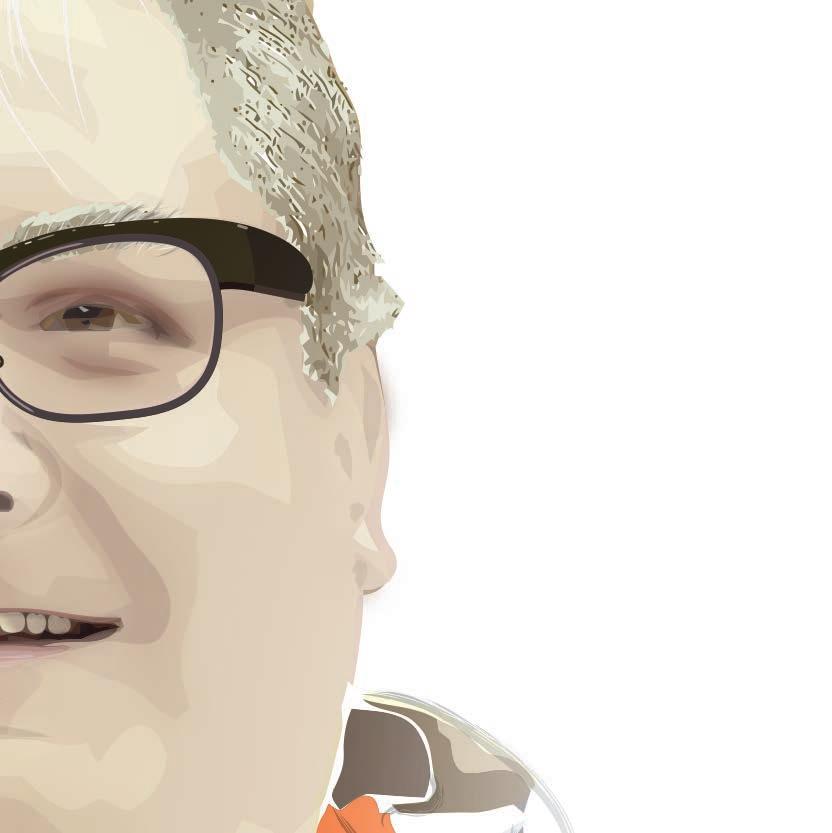
18
ADMITTEDLY, HOWEVER, THERE WAS A PERIOD OF TIME WHEN THE OSU ALUM’S ROOTS WERE NOT AS STRONG IN STILLWATER AS THEY ONCE HAD BEEN.
DAVID RONCK HAS ALWAYS BLED
APRIL 2014
PHOTO ILLUSTRATION / PAUL V. FLEMING
“MY PARENTS WERE PRETTY DIRECT WITH ME. THEY SAID IT WAS OSU OR FIGURE OUT WHERE TO GET A JOB,” Ronck said. “I was predisposed to go to OSU one way or the other.”
Ronck arrived on the OSU campus as a freshman in the fall of 1978. He decided to nix his dream of sports writing in favor of an accounting degree, but his love of sports was fueled by the opportunity to work in the school’s SPORTS INFORMATION OFFICE
“I PLAYED SPORTS IN HIGH SCHOOL, BUT CLEARLY ONCE I GOT TO COLLEGE I DIDN’T HAVE THE SKILL, TALENT, SIZE OR WHATEVER TO EVEN THINK ABOUT PLAYING AT THAT LEVEL,” Ronck said. “Having had the idea of wanting to be a sports writer, I thought (working in sports information) was a pretty good deal. It allowed me to be around all of the stu I really enjoyed most in life and have a chance to hone some skills along the way.”
Ronck spent a great deal of his college life in Gallagher-Iba Arena (known as GALLAGHER HALL at the time) and experienced countless memorable OSU athletics moments.
One of those came on the basketball court when, during the 1980 season, OSU’s Eddie Hannon drained a shot from half court at the final buzzer to knock o defending NCAA champion Louisville, a shot that earned him the moniker “Half-Court Hannon.” Even though that OSU team would finish the season in the National Invitation Tournament (NIT), Hannon’s shot marked a return of Oklahoma State to the national college basketball psyche for the first time since Henry Iba’s retirement.
“That was one of the biggest basketball games I saw us win when I was in school,” Ronck said.
Also an avid wrestling fan, you can bet Ronck was near the mat whenever the Oklahoma Sooners came to town.
“ANY BEDLAM WRESTLING MATCH — WIN, LOSE, WHATEVER — THOSE WERE THE MOST EXCITING EVENTS I WENT TO THE WHOLE TIME I WAS IN SCHOOL,” RONCK SAID.
Upon graduating from OSU in 1982, Ronck began working at one of the Big Eight accounting firms and soon developed a strong interest in real estate. His professional career took him to a series of di erent positions with banks, savings and loans and real estate companies, but an encounter during the 1990s resulted in a friendship that changed his life.
That friendship spawned Meridian Realty Advisors, which Ronck co-founded in Dallas in 1996, and the company began capitalizing and investing in opportunistic real estate investments such as apartments, o ce buildings and retail centers.
In the early 2000s, Ronck and his business partner had an opportunity to spend a considerable amount of time underwriting a proposed transaction that was related to a company that was in the elder care and senior housing industry. They eventually made an investment in the company that owned about 250 skilled nursing facilities across the country.
“After touring and inspecting almost 250 properties and doing the due diligence, it became very clear that the average age and condition of a significant number of nursing homes and rehab facilities in the United States was very poor — the average age of a nursing home was probably 35–40 years old,” Ronck said. “After making the investment, we made the strategic decision to shift our focus to building and developing new skilled facilities, so we raised some capital to begin a small test-case basis development program of building new facilities.
“Using that initial capital raise as a platform builder, we’ve continued to move forward, primarily focusing on ground-up development, and to date we’ve developed about 25 skilled nursing and rehabilitation buildings and are now in the process of completing the development of four memory-care assisted living facilities and we are working on a number of conventional independent and assisted living communities.
“In a nutshell, from our perspective, it’s what the industry refers to as a continuum of care, which provides housing and care for the aging population and with our product expertise, we’re helping to provide di erent care components of that continuum.”
Ronck’s company continues to grow and is currently pursuing opportunities for the development of independent and assisted living communities, along with rehab and skilled nursing facilities, throughout the southwest.
“We cannot slow down — people are going to continue to age and get older and there is a big demand and need for quality facilities for our seniors as they get older,” Ronck said. “We feel like we are really fulfilling a need in the market. We feel like we’re giving something back to the community in that we’re providing state-ofthe-art buildings for our seniors.”
Ronck’s passion for business continues to burn, but not too long ago, he rediscovered a love for all things orange-and-black.
It all began in the mid-to-late 2000s when his daughter, Emily, began looking at colleges to attend.
“That really started percolating my interest. OSU plopped down front-and-center again in terms of something that I wanted her to look at,” Ronck said.
19
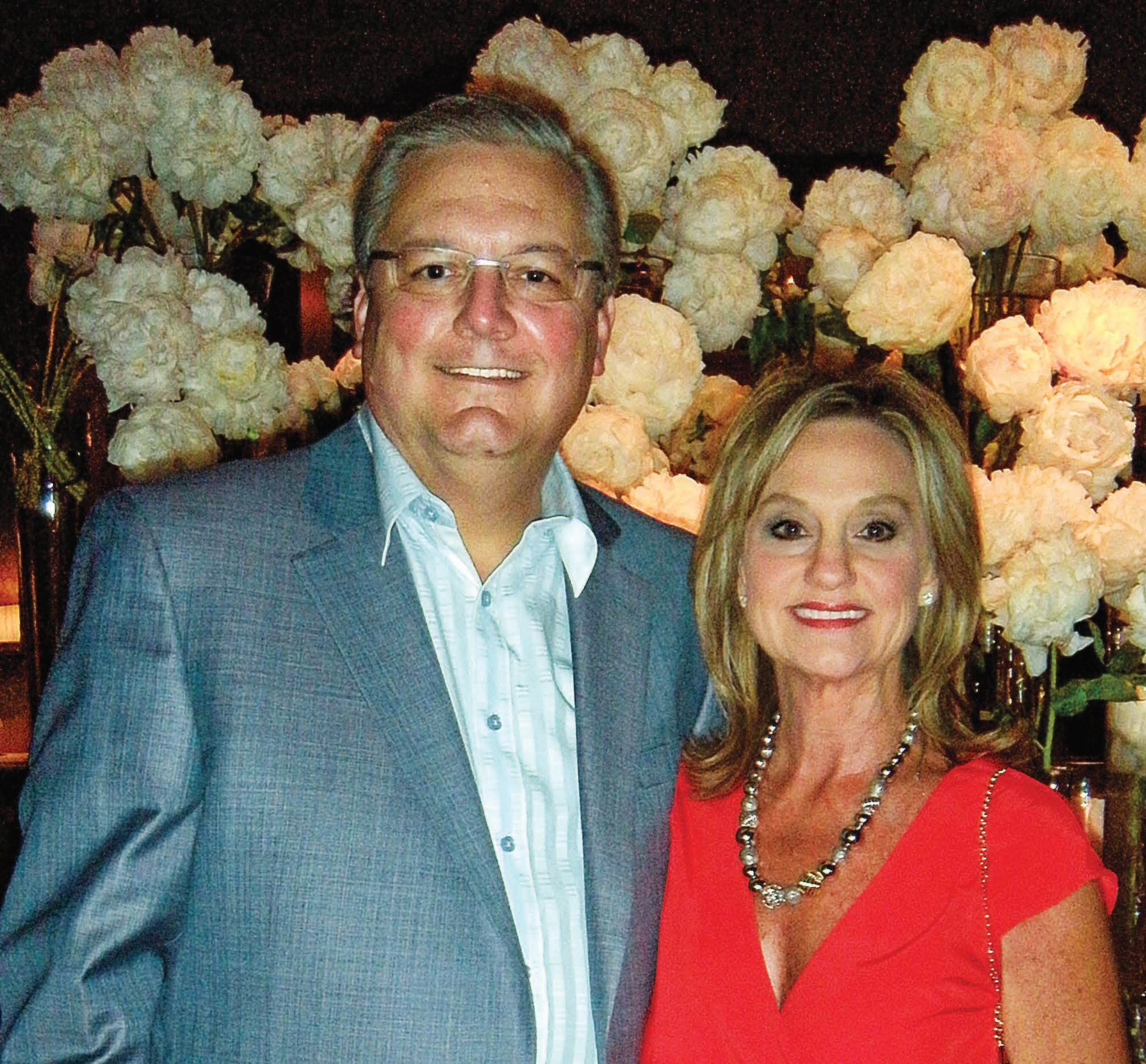


20
“I NEVER GOT RID OF MY ORANGE BLOOD, IT JUST TOOK SOME TIME FOR IT TO COME BACK TO THE TOP AGAIN.”
APRIL 2014
DAVID and JULIE RONCK
Aiding in that process was Kathy Wilson , director of donor, alumni and corporate relations at the OSU Foundation. She helped introduce Emily to what OSU had to offer while helping her dad recognize his need to reconnect with his alma mater.
“After I graduated and moved down (to Dallas), for a period of time I WAS NOT NEARLY AS CONNECTED TO OSU AS I ULTIMATELY FOUND OUT I WANTED TO BE,” Ronck said. “Starting a business, raising kids — we all have different things on our plate — and also at that time OSU didn’t really have much of a presence down here. There was a small alumni association group but really no OSU personality to go to.
“(Wilson) was responsible for going and knocking on doors and reaching out to people like me, people who are OSU people but who had really not been able to figure out how to get connected.”
Emily ultimately decided on OSU and graduated in 2012 with a degree in interior design. She also helped strengthen her father’s relationship with his alma mater.
“Once that happened, it was kind of the like THE VORTEX SUCKED ME BACK IN ,” Ronck said. “IT STARTED WITH BUYING SOME SEASON (FOOTBALL) TICKETS. It allowed me the chance to be back on campus, keep tabs on my daughter, meet people and get energized and excited from the athletics side in terms of the facilities and the commitments other people had made.”
After becoming a season ticket holder, Ronck met Matt Grantham , director of major gifts for OSU Athletics, and the two became fast friends. Fueled by that friendship, Ronck made the decision to begin donating to Cowboy and Cowgirl athletics.
“Matt is probably more responsible than anyone for shepherding me back into the fold,”
Ronck said. “He’s always been very up front with me. EVERY GIFT THAT I’VE MADE OR WILL MAKE, I KNOW EXACTLY HOW IT’S GOING TO BE USED.”
Ronck’s first major gift was helping endow half of a men’s basketball scholarship. Since that first donation, Ronck and his wife, Julie, have endowed 1.25 scholarships for men’s basketball, a full scholarship for men’s golf and a half scholarship for women’s golf Those pledges have seen Ronck catapult to 46th on the OSU POSSE donor list.
“(Ronck has) been very generous for a guy that was out of the picture for a long time and got reconnected,” Grantham said. “He and Julie have been unbelievably generous. HE’S A HUGE SPORTS FAN AND LOVES OSU ATHLETICS, AND HE’S FULLY COMMITTED AND PASSIONATE ABOUT OSU.
“To go from not even on the radar to 46th on the donor list in just a few years, that shows you just how committed he is.”
Grantham estimates it will cost the athletic department $115 million to endow every scholarship, adding that the athletic department pays the university $4.5 million a year for scholarships. Once those are endowed, that money can be put back into the department’s budget to use in other areas.
“When you look at the big picture of endowing scholarships, that’s one more thing that can close the gap between us and some of the other schools in the conference, ” Grantham said. “That’s something that (Ronck) understands so it’s something he’s pretty passionate about.
“He gets it as far as scholarships go, and from a long-term standpoint, when you think about $4.5 million a year that you can put back — what’s that over 10 years? That’s something that’s really important.”
Ronck said helping student-athletes value not just their athletic careers but their OSU education is a big part of his decision to invest in scholarships.
“In my professional life, I’ve squared o against a lot of folks from Ivy League schools and others, and I’LL PUT THE EDUCATION I RECEIVED FROM OKLAHOMA STATE UP AGAINST ANYBODY I’VE EVER RUN ACROSS,” RONCK SAID.
“I’VE ALWAYS LOOKED BACK AND SAID OSU REALLY GAVE ME THE FOUNDATION AND THE GATEWAY TO BE SUCCESSFUL IN BUSINESS.
“I think so much gets lost in terms of the pure athletic side of it. I was equally interested in making sure we can provide scholarship money for the kids to actually go to school and get an education. I WANT THESE KIDS TO HAVE THE OPPORTUNITY TO REALLY MAKE SOMETHING OUT OF THEMSELVES OUTSIDE OF THE SPORTS ARENA.”
But make no mistake about it — Ronck’s fandom is strong. He attends most OSU football games, both home and away, though he admits basketball is his favorite sport and he has courtside seats in GallagherIba Arena for Cowboy hoops. He’s also the type to show up for a wrestling match or a baseball game involving his alma mater.
So don’t expect the 54-year-old Ronck to let his passion for OSU wane again — and he’ll continue to be generous with his giving.
21
“I TRULY BELIEVE IN THE OSU MISSION, AND I’M IN THIS THING FOR THE LONG HAUL.”
Help us find the next generation of Cowboys. Recommend a future Cowboy online today. orangeconnection.org/knowafuturecowboy WE WANT YOU!
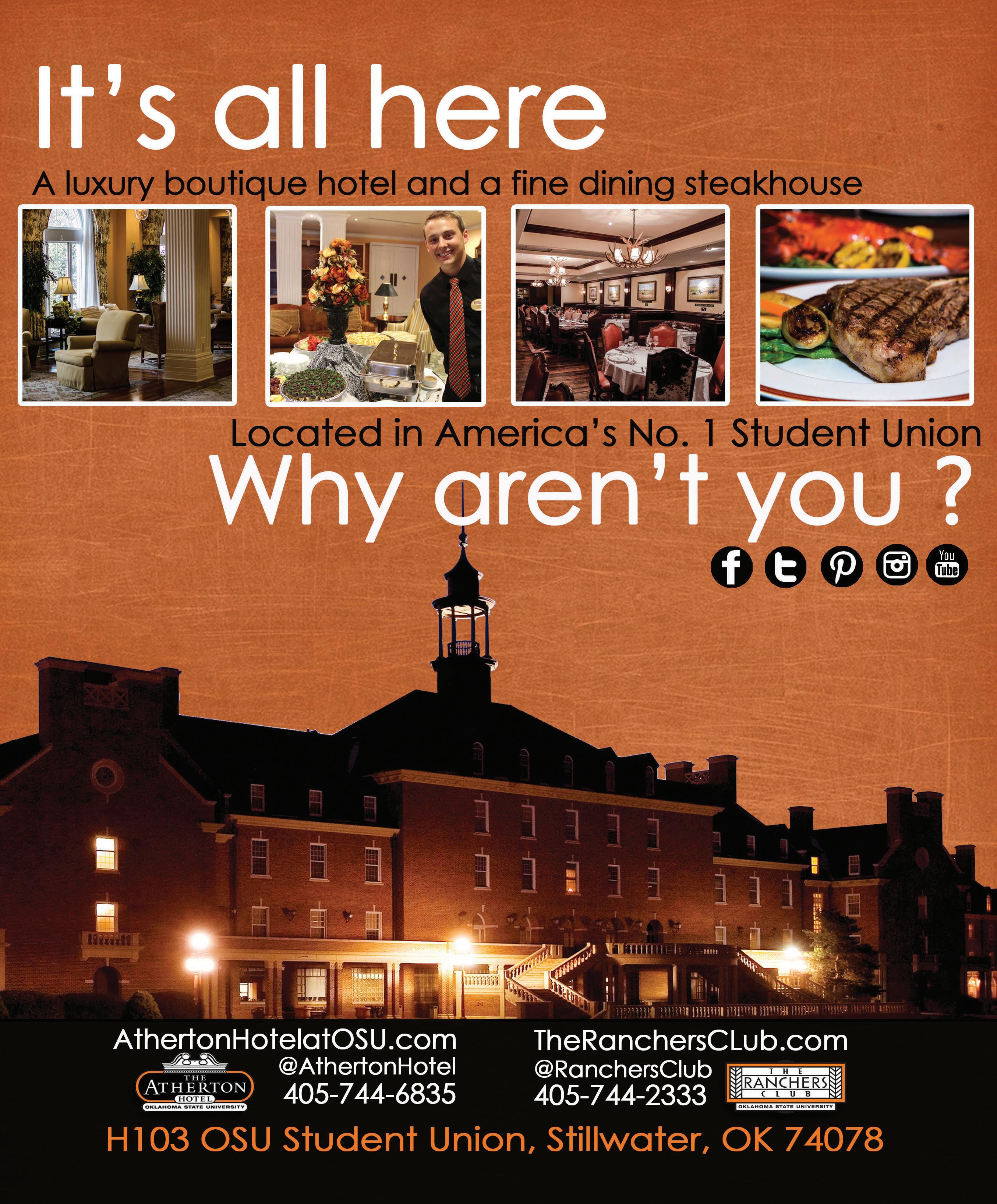
BELIEVING IS SEEING










































































































































 STORY BY CLAY BILLMAN | PHOTOGRAPHY BY BRUCE WATERFIELD
STORY BY CLAY BILLMAN | PHOTOGRAPHY BY BRUCE WATERFIELD
STEVE SCHROEDER IS NOT YOUR AVERAGE OKLAHOMA STATE FAN.
HE RARELY MISSES A MINUTE OF THE ACTION ON HIS PORTABLE AM/FM HEADPHONES. NO MATTER THE SPORT OR SEASON, SCHROEDER WILL LIKELY BE TUNED INTO THE RADIO BROADCAST, INTENTLY FOCUSED ON THE PLAY-BY-PLAY. /// THE STILLWATER NATIVE IS PARTICULARLY FOND OF COWGIRL BASKETBALL.

SITTING COURTSIDE ACROSS FROM THE HOME BENCH, SCHROEDER IS A REGULAR AT HOME GAMES. HIS WIFE OF 33 YEARS, DEBBIE, IS RIGHT THERE BESIDE HIM IN SECTION 101, ROW 4, SEATS 10 AND 11 .
When he’s not inside Gallagher-Iba Arena, Schroeder can often be found at the Stillwater Milling Agri-Center, where he has been a fixture for more than four decades.

“I’M THE SENILE OLD MAN IN THE STORE,” he said. “If you live in the country and you want to know how to grow grass or something, you’re supposed to come in and look at me and say, ‘GOSH, HE’S OLD. HE OUGHT TO BE SMART.’ I’M REALLY NOT, BUT YOU’D THINK SO. Hopefully, I give good advice.”
Along with the farming expertise, which is spot on, be prepared for a few jokes — usually with a Bedlam theme.
“Everybody who’s around me very long — and you can ask any of the employees here — you better have a sense of humor,” he says. “A lot of these customers I’ve known for 40–50 years. This is probably the third generation of people I’ve seen come through here.”
























In that time, Schroeder’s never met a stranger, but admits he might not always recall their name.
“I can remember what kind of tractor you own, what color cows you’ve got, if you bought a new combine in the last year or two, where you live … but a lot of times I can’t tell you your name. I’ll spend half my time in conversation with you trying to figure out who the heck you are if you don’t introduce yourself.”
“Steve has one of those personalities that people just gravitate to,” his wife adds. “Once you meet him, he makes you feel like he’s a friend for life. He’s a real good listener.”




























24
[
] APRIL 2014
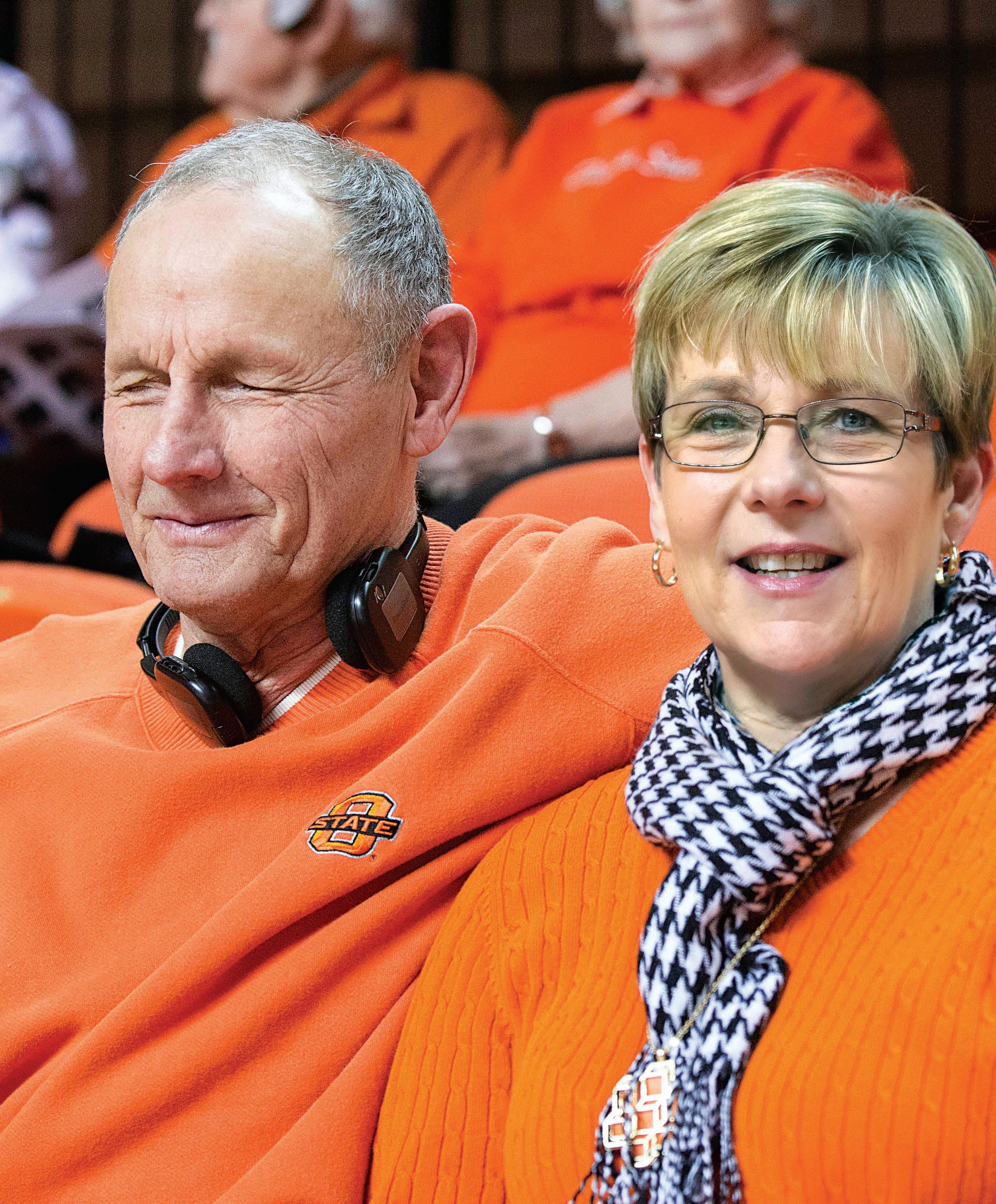
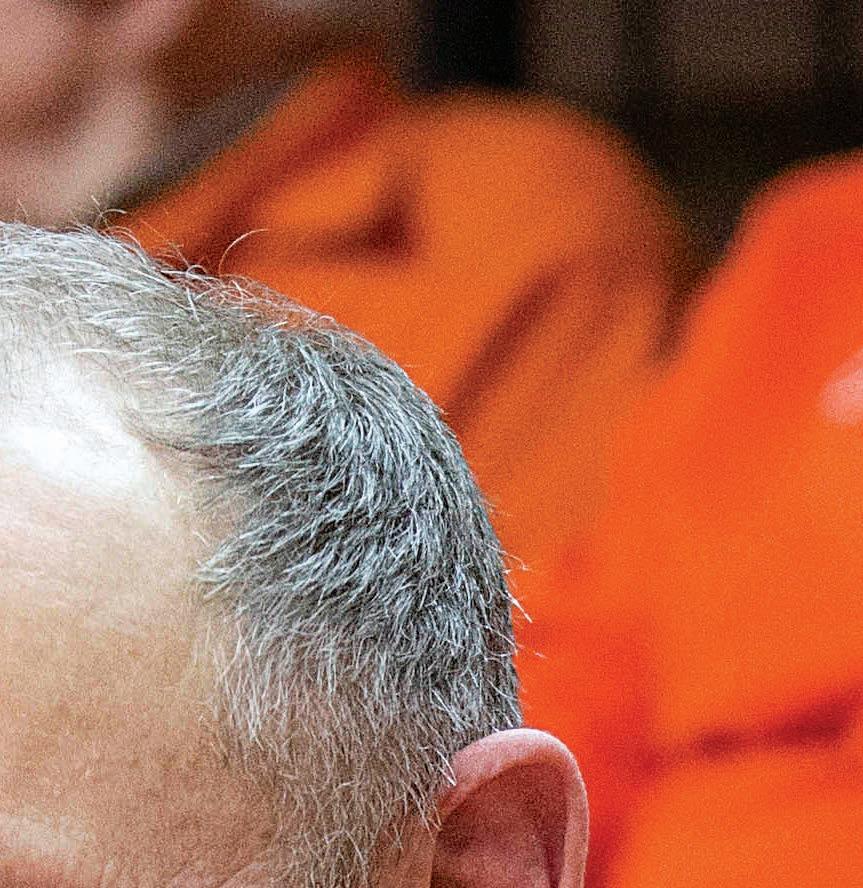
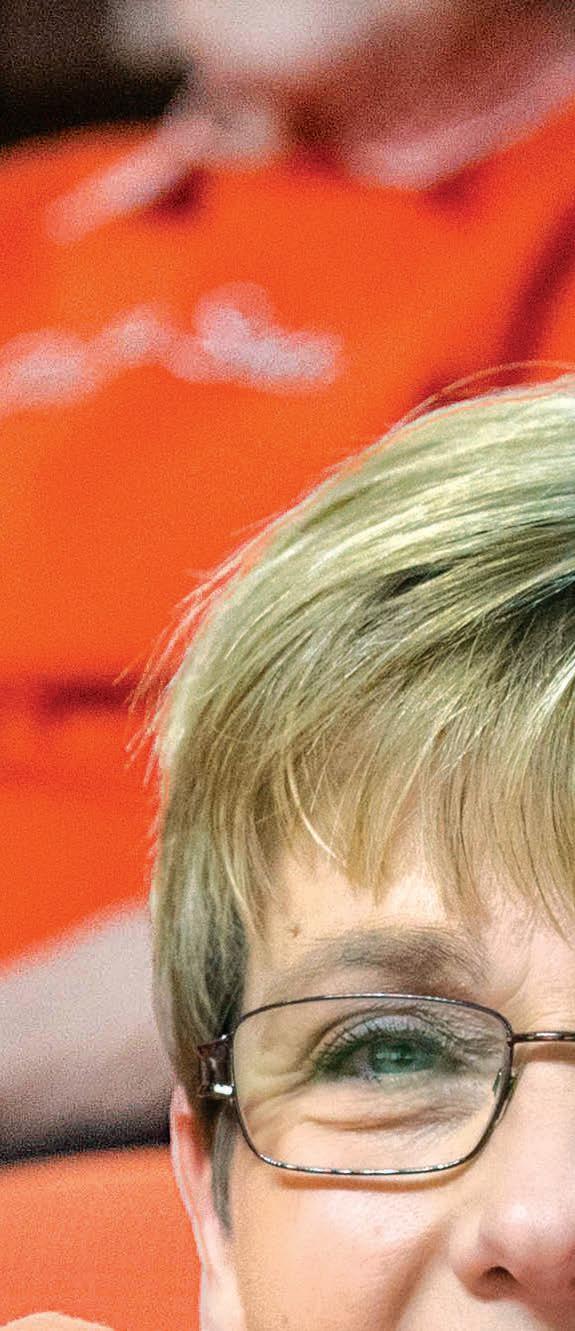
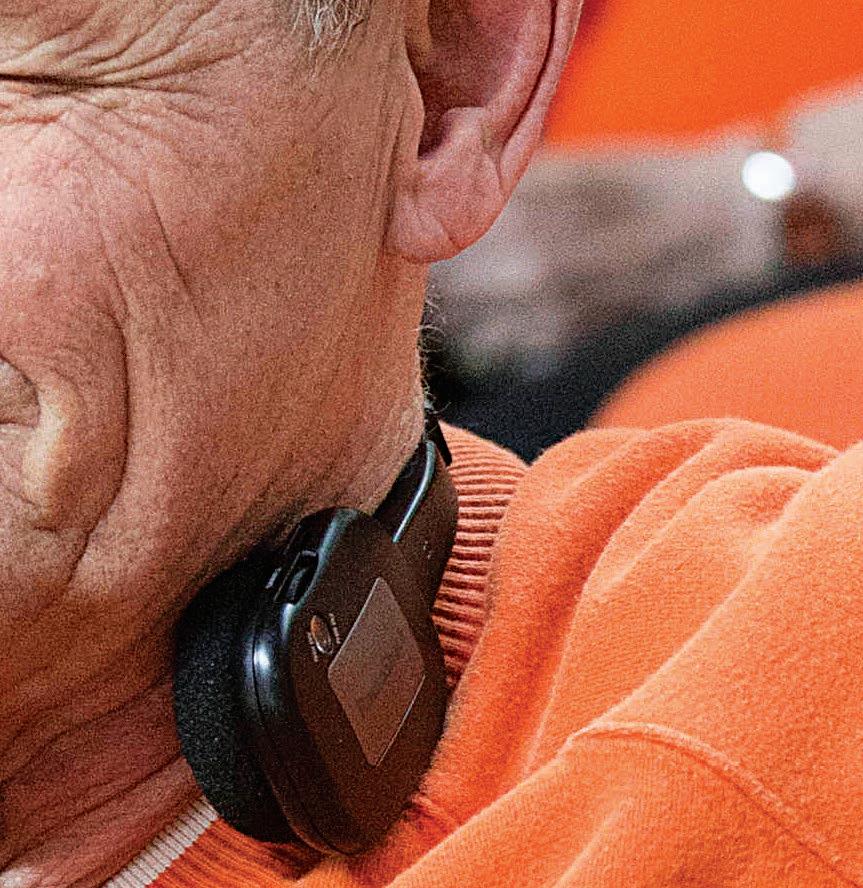
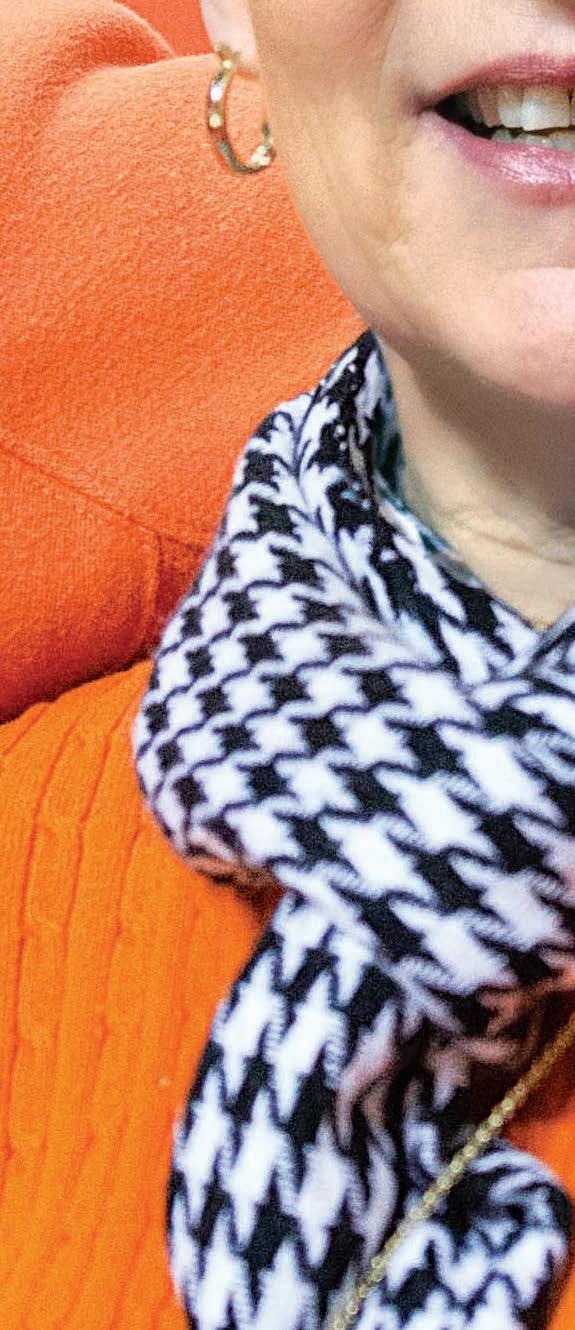
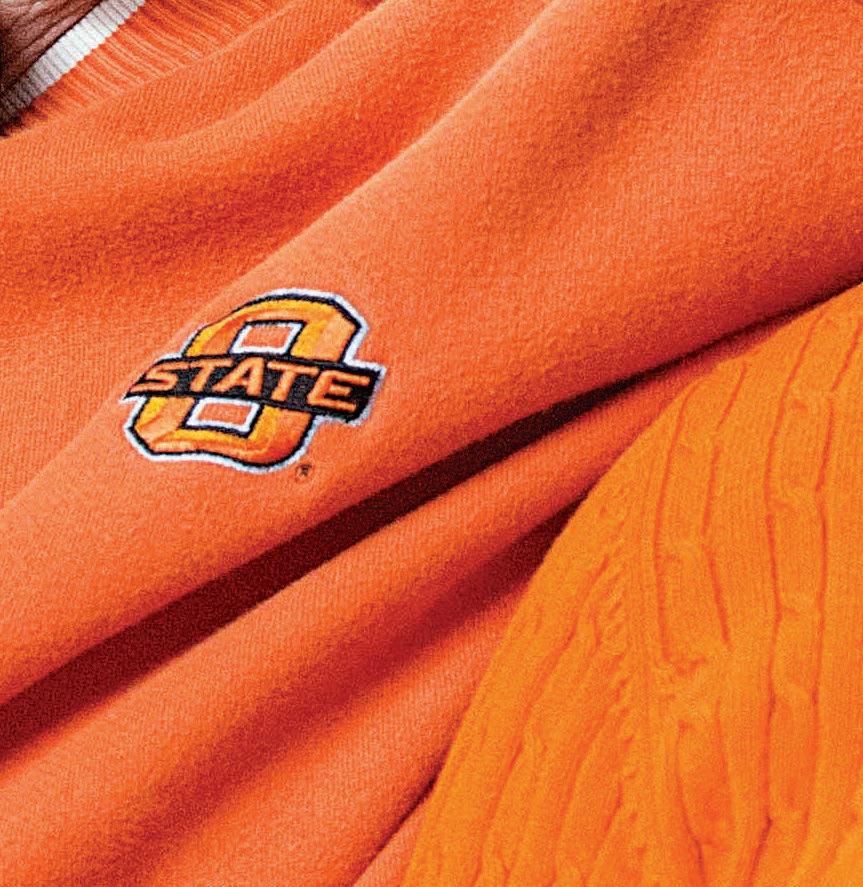






















25
IT JUST SO HAPPENS SCHROEDER IS BLIND.
hand on his shoulder. He turns around and looks up at the body at the end of that hand.
Coach Budke said, ‘Now son, you’re going to take good care of my daughter tonight, aren’t you?’ And John said, ‘Yes, sir!’”
appreciate the type of people they are and how loyal they’ve been to our program.
“Obviously, it’s a unique situation for Steve,” Littell adds, “but he’s always there and supporting the Cowgirls.”
The atmosphere at the Agri-Center is close-knit, Debbie says. The same goes for Cowgirl basketball.
“YOU JUST KIND OF HAVE THAT FAMILY FEELING WITH THE TEAM AND THE OTHER FANS.”
Baseball has always been Steve’s favorite sport, with basketball a close second, she adds.
“When we were first married, we were men’s season ticket holders, and then we had a family, so you kind of put your life on hold for them.”
The couple has had Cowgirl season tickets since 2005–06, when their schedule opened up again due to an empty nest at home.

“Our son, Jason, got a basketball scholarship to East Central, and we followed him,” Schroeder explains. “At the same time, our youngest son, John, was playing high school sports here at Stillwater High. They both graduated the same year. Debbie and I have always been relatively active, and we thought, ‘What are we gonna do now?’ It was Kurt
Budke’s first year, so WE JUST DECIDED
WE’D BECOME GIRLS BASKETBALL FANS.”
“Steve had read up on coach Budke when he got the head coaching job,” Debbie recalls. “He said, ‘You know, I like him. I think he’s going to do a lot with this program. Let’s give the girls a chance. ’ That first year Jason was still playing, so it was kind of hit and miss. We didn’t make all the games. But then that next year, we just really embraced them. It seems like the talent just keeps getting better, and the stakes keep getting bigger.
“One of our favorite moments was that third year coach Budke was here (2008), and they took the buses up to Kansas,” she adds. “We went on that trip, and getting to sing OSU’s alma mater in Allen Fieldhouse was a really big deal. The road trips are a lot of fun. We’ve taken several bus trips, and you meet so many people, and you really get connected.”
The Schroeders had a connection with Budke through their son, as well.
“My son had a couple of dates with Sara,” Schroeder says. “John hadn’t been around coach Budke much, and on their first date he felt this



Schroeder smiles when recalling the late coach, who was killed in a 2011 private plane crash along with assistant Miranda Serna and alumni Olin and Paula Branstetter.
“We went to church with Miranda and Coach Budke,” he says. “You wonder why it happened, but things do happen. You’ve got to comfort those you feel you can comfort and move on with life. I don’t know of another way to explain it. IT WAS A TRAGEDY. YOU JUST HURT SO MUCH FOR THE FAMILIES.”
When Jim Littell succeeded Budke at the helm, Schroeder says he knew the program was in good hands. Of course, Schroeder had long since befriended the associate head coach who was part of Budke’s original sta .

“My nephew, Brock Kappelmann, is sports director for a radio station out in Liberal, Kan. He knew coach Littell awful well from his days at Seward County Community College. When I told coach Littell I was Brock’s uncle, we were best friends forever.”
“STEVE AND DEBBIE HAVE BEEN LOYAL FANS FOR A LONG TIME,” Littell says. “We got home from a road game the other night and they were outside the airport waiting for us. We just greatly

It just so happens Schroeder is blind.
“Everything is black,” he said. “Every once in a while I’ll have kind of a white firework or something come down through the middle of my left eye, but it comes and goes.”






The 67-year-old Schroeder was born with microphthalmia (a developmental disorder that literally means “small eye”), as well as coloboma , characterized by a hole in one of the structures in the eye. It was initially thought the condition was caused in utero by his mother contracting rubella (German measles), but more recent research points to hereditary factors, as well.
“I’D BEEN LEGALLY BLIND SINCE BIRTH,” Schroeder says. “My mom knew after I’d been looked at by a few doctors that I would lose my eyesight just due to the natural aging process. I was never able to have a driver’s license. My vision was 20 over 200, and I could read newsprint if I held it close enough to my face. It got gradually worse.
“I had glasses back in that time, and it helped,” he adds. “I got to wearing them more and more as I got close to the end because I had cataract surgery and a detached retina and fought a lot of that before finally succumbing to blindness 12 years ago.”
26
APRIL 2014
In his mind’s eye, Schroeder sees the world much the same way he did prior to 2002: the mill, the campus, team uniforms, his wife.
“Someone once told me that in his eyes I will forever be 45 years old,” Debbie says. “I tried to tell him once that I had long blonde hair and only weighed about 110 now. Steve laughed and told me he could still feel.”
“I CAN REMEMBER THE OLD LEWIS FIELD,” SCHROEDER SAID. “I’D LOVE TO SEE THE NEW ONE. THAT OLD ONE DIDN’T LOOK SO GOOD.”
“I think because Steve was born legally blind and always knew he would eventually lose his eyesight, when he did he was like, ‘Okay, I’ve done it,’” Debbie said.
“There were some hard times there at the beginning,” she adds, “but when Steve said, ‘What do I do? I probably should just quit working,’ our oldest son looked at him and said, ‘Can you still talk on the telephone? I think you need to get your butt up out of that chair and get back to work. You’re still useful.’ And that just sort of sparked him.
He’s been there for so long. He knows the product. He knows the people. He likes people.”
His limited eyesight never seemed to slow Schroeder down. He attended classes at OSU in the ’60s, although he admits he may have missed some of the essentials.

“I WENT TO SCHOOL AT OSU FOR FOUR YEARS AS A SPECIAL STUDENT,” he says, “but I was young and dumb, and I didn’t get enough of the basics — you know, the chemistry, English, the math and stu like that to graduate … TUITION WAS SEVEN BUCKS AN HOUR.”
Schroeder says the location of his current courtside seats reminds him of his college days.
“I VISUALIZE THE GAME FROM BACK IN THOSE DAYS WHEN I WAS SIGHTED,” HE SAYS. “WHEN MR. IBA WAS COACHING, I WOULD SIT IN THE BLEACHERS WITH MY BACK UP AGAINST THE BALCONY ON THE LAST ROW, AND I COULD SEE PRETTY GOOD FROM WHERE I SAT. If I got up very high, I couldn’t tell who had the ball. I could tell which end of the court the players were on, but that was about as far as I could see.”
Schroeder was manager of the Agri-Center for 20 years and cultivated his farmland southeast of Stillwater, not far from where he grew up.
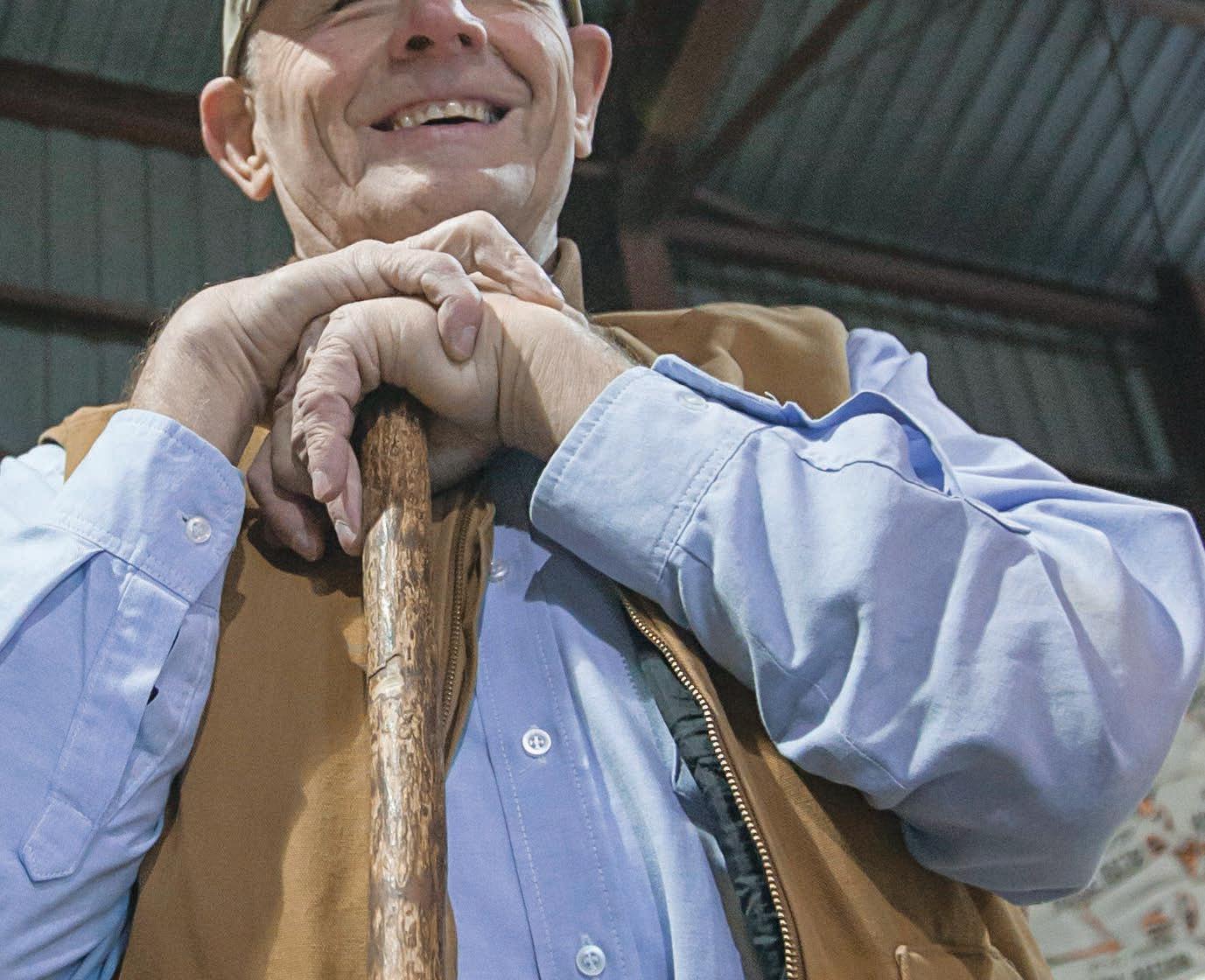
“Steve always farmed until he totally lost his eyesight,” Debbie says. “In football season, we’d follow on the radio, but it was just so hard to go to games because that was the time he was trying to get the wheat in the ground. We’d try to go to at least one football game a year, but it didn’t always work into our schedule.”
The mill is also where he met Debbie. Their first date was the result of a wager over the 1979 World Series, featuring Baltimore versus Pittsburgh.

“Whoever won the Series, the other one had to buy dinner,” she says. “I was the Pirates fan, and they beat the Orioles in seven games.” (Steve is a big St. Louis Cardinals fan, Debbie adds, which probably explains why he was rooting against their National League foe.)
“I think reading is one of the things that he really misses the most,” Debbie says. “We found out about the Oklahoma Library for the Blind so he could get books and magazines on tape, and we got hooked up with an audio newspaper service from the National Federation of the Blind because of a couple we met on a Cowgirl bus trip. He loves that.”
“I can get on the telephone and pick up every major newspaper in the nation,” Schroeder explains. “I’ve got to listen to the St. Louis Post-Dispatch every day to see if the Cardinals are making any waves.
“THE GOING BLIND WAS EASY,” HE ADDS. “IT’S JUST SOMETHING THAT YOU LEARN TO COPE
WITH AND COMPREHEND, BUT IT’S THESE MOBILITY ISSUES THAT ARE REALLY CRAMPING MY STYLE.”
In the last few years, Schroeder has dealt with back and neck surgeries and is slow getting around. He’d like to go on more Cowgirl road trips, but sitting for too long takes a toll on his body.
He did get to enjoy an OSU home football game from a suite this past season.
“We don’t do much because of my limitations, but heck, we even got into the posh seats at Boone Pickens this fall. A friend invited me to go. It’s the first time I had a chance to be in a suite, and you know, no better than I can walk, we went!”
At the games, Debbie is at Steve’s side, not only for navigating the arena, but to provide a first-person account of the action to go along with broadcasters Kevin Gum and Casey Kendrick
“DEBBIE — SHE’S MY GUIDE DOG,” Schroeder jokes.
“HE CALLS ME THAT A LOT,” Debbie says.
It’s a term of endearment and a testament to the couple’s a ection for one another.
“Every now and then, we get a little discouraged, but for the most part we enjoy doing things together,” she says. “He tries to be as independent as he can and not be too much of a burden. It bothers him to ask for help.
“For the most part, he’s adapted. Right now, we’re just ready for Steve to get over this back thing so we can get back to traveling more and doing the things we want to do.”
27
IN AN OLYMPIC YEAR,
HOCKEY FANS ARE ACCUSTOMED TO THE SIGHT OF PITTSBURGH PENGUINS CENTER SIDNEY CROSBY WEARING NUMBER 87 AND THE FAMILIAR COLORS OF TEAM CANADA.
ONE LOOK AT THE OKLAHOMA STATE SOFTBALL FIELD AND YOU’LL SPOT ANOTHER 87, THIS TIME IN ORANGE AND BLACK.

SENIOR
TARAH ETTINGER , A NATIVE OF DARTMOUTH, NOVA SCOTIA, HAS ALWAYS ADMIRED CROSBY FOR HIS WORK ETHIC AND ACTIONS. THE NUMBER 87 THAT SHE DONS ON HER BACK REMINDS HER EVER DAY WHY SHE PLAYS THE GAME AS HARD AS SHE DOES.
“SIDNEY CROSBY WAS BORN IN THE TOWN NEXT TO WHERE I GREW UP,” ETTINGER SAID. “I’VE ALWAYS TRIED TO BE LIKE HIM BECAUSE HE IS THE HARDEST WORKER. THAT’S WHAT PEOPLE ALWAYS TALK ABOUT, HIS WORK ETHIC. HE WORKS SO HARD, HARDER THAN ANYBODY ELSE. I WANT TO BE KNOWN FOR MY WORK ETHIC. HE ALWAYS GIVES THE CREDIT TO HIS TEAM. HE WANTS TO TALK ABOUT EVERYONE ELSE, AND I JUST THINK HE’S VERY PROFESSIONAL. THAT’S WHY I WANTED TO TAKE HIS NUMBER. YOU NEED TO HANDLE YOURSELF THAT WAY. I LOVE THE CONFIDENCE THAT HE HAS. THAT’S WHY I CHOSE THAT NUMBER.”
Wearing number 87 always poses a number of questions whenever she takes the field. Since the number is so much higher than the average softball player, she often gets asked if her father played football in college and wore the same number. Also, mentioning Sidney Crosby in Oklahoma doesn’t carry the impact it does in Canada.
“I have to tell them he’s a hockey player for the Pittsburgh Penguins,” Ettinger said. “I try to explain it a little bit, but people are like, ‘That is so weird,’ because they don’t love hockey around here. It’s funny, but it’s a big deal to me. I mean he’s captain of the Canadian national team. It’s pretty special.”

Growing up in Canada, Ettinger didn’t discover softball early. She learned to take advantage of the Canadian landscape and learned to skate first.
NO IFS, ANDS OR BUNTS
“Everything is outdoors in Canada,” Ettinger said. “Everything you do is outdoors. I climbed trees all the time. That’s kind of what you did and that was fun. Softball isn’t big in Canada — we didn’t play softball. I learned how to skate when I was 2 years old. I loved going to the hockey rink. I loved watching hockey.”
When Ettinger was nine her family moved to Illinois and even after the move, softball wasn’t on her mind. In fact, she never heard of it until her mother, Dawn, mentioned that it might be something she should try.
“MOM PLAYED SOFTBALL WHEN I WAS REALLY YOUNG. SHE WAS REALLY GOOD. THAT WAS REALLY IT. I NEVER LEARNED HOW TO PLAY UNTIL I GOT TO THE U.S.”
STORY BY SARA LEGARSKY PORTRAIT BY PHIL SHOCKLEY
CANADIAN COWGIRL
28
APRIL 2014
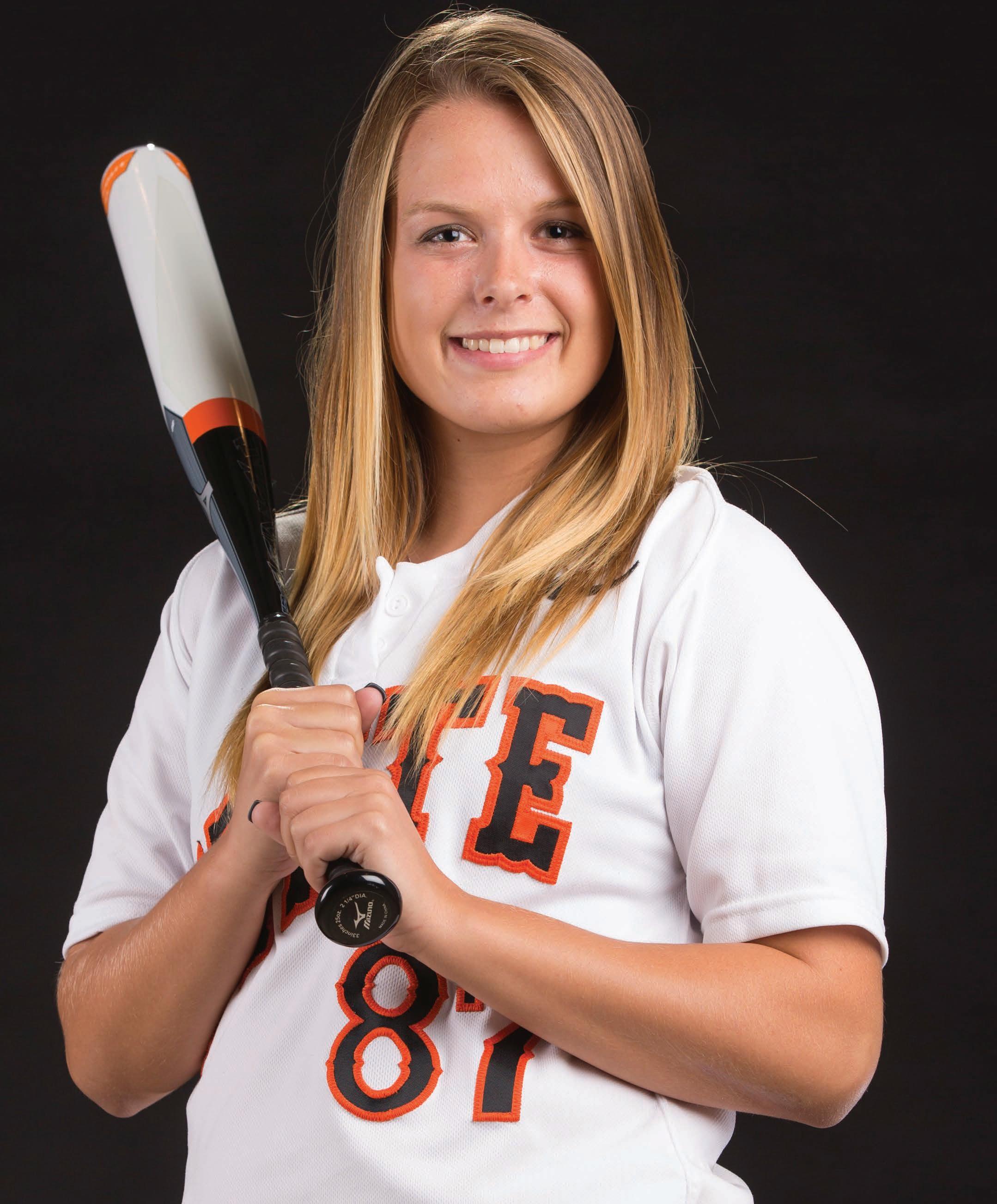

29
“I didn’t play in Canada at all,” Ettinger said. “I played soccer that was about it. I started softball when I was 12. I played for a little rec team. I was terrible. I was so bad.”
While she was hesitant at firsty, Ettinger soon grew to love the sport. As she continued to improve, it became apparent that she had talent.
“MY MOM GAVE ME HER GLOVE. AND STILL I WASN’T SURE IT WAS SOMETHING I WANTED TO DO.” Ettinger said. “They put me on a little rec team and I ended up loving it. I started to be a good rec player. We won the championship one year, and then my parents sat me down and said, ‘Do you want to go play club? Do you want to start playing competitive?’”
After some pushing from her father, Roger, Ettinger agreed to try out for a new team. When she got there, she realized how behind she was.
“I was kind of scared, but then they took me to a tryout,” she said. “I didn’t have my own helmet or my own bat. All the girls thought it was crazy that I showed up with one glove.”
“I asked a girl if I could borrow her helmet and she was so rude to me.” Ettinger said. “So I put on her helmet and I go up with her bat. I said, ‘OK, I’m ready,’ and they said, ‘OK, you’re going to bunt,’ and I said, ‘What’s a bunt?’ It was embarrassing.”
Luckily, Ettinger got picked to join the more competitive team, no thanks to her bunting skills.
“I used to throw really hard, so I ended up getting picked,” she said.
At the time she was the worst player on her team and that concept did not sit well with her. She took it upon herself to improve.
“I HATE NOT BEING THE BEST,” she said. “I want to be the best at everything I do so I try really hard all the time. I was the worst player on this team, by far. I STARTED HITTING ALL THE TIME. I PRACTICED ALL THE TIME. I GOT A HITTING COACH.”
“I tried out for a better team, and again I was the worst player on the team,” she said. “I just kept working until I was the best player on the best team in Illinois.
That was the goal. I always wanted to be the best at what I was trying to do. YOU’RE NEVER PERFECT, BUT THAT’S KIND OF WHAT I WORK FOR BECAUSE THAT’S WHAT YOU HAVE TO GO FOR. I wanted to go somewhere.”
It wasn’t long until Ettinger began to get noticed in her home country. Just four years after she stepped onto the softball field for the first time, Ettinger found herself on the Canadian National Team.
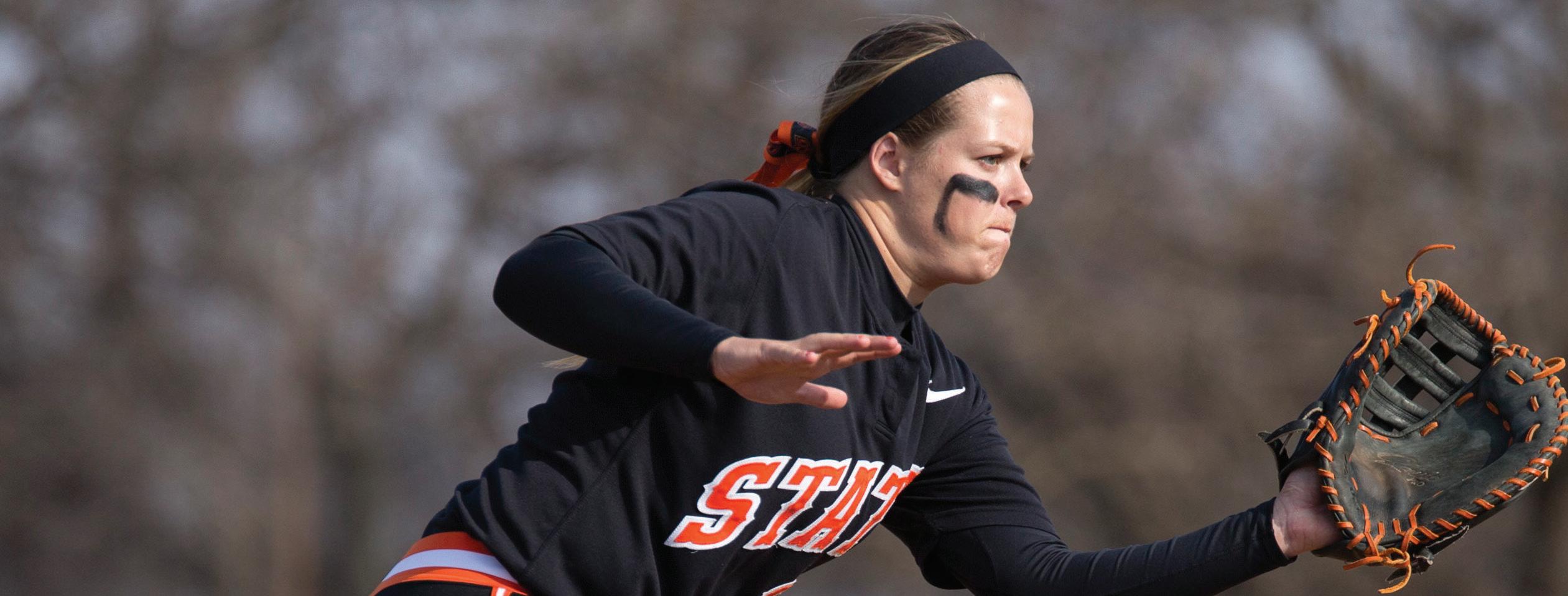
“I went up and tried out for the under19’s team,” Ettinger said. “I ended up making that team, and we went to Prague, Czech Republic. Then, after the under-19’s, the national coach asked me to join them and travel for the summer. I was scared because I had never been away from home. We ended up going to Victoria, British Columbia. It was probably the scariest thing I’ve done in my life.”
Being the youngest person on the team was also intimidating.
“Those girls were older than me. DANIELLE LAWRIE , I think, was in her senior year at Washington,” she said. “That was pretty intimidating because she was someone I’d always looked up to. She was really good. JENN SALLING was there
30
APRIL 2014
as well, and they were big names to me. These were people I’d grown up watching. I think there was a 35-year-old. I went over there and we just kind of practiced, and they kind of dragged me through it all and made fun of me a ton because I was the young one. It was so much fun. Every morning Danielle Lawrie took me to breakfast and I got to watch her play.”
One of the highlights of Ettinger’s softball career was making it into a game for that team.
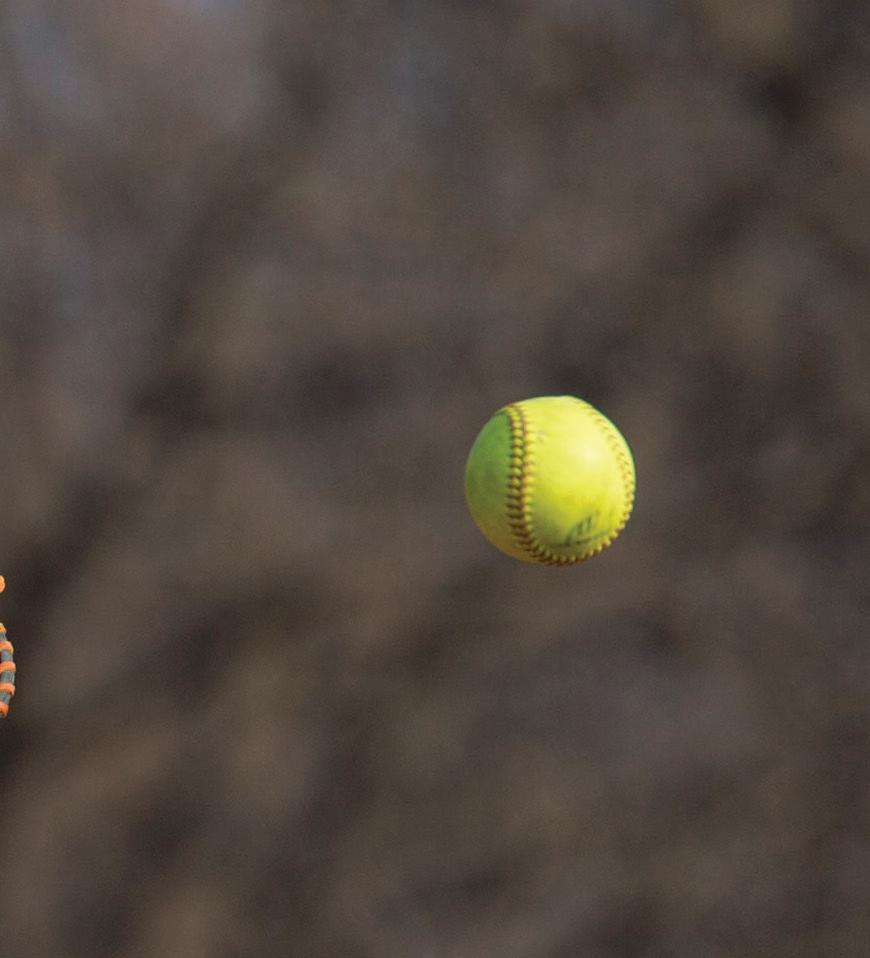
“I got two or three at-bats in a game, and I did terrible but it was so exciting because I was playing Team Australia,” she said. “I learned a lot from it. It was a cool experience to go up there and get to play with some of my idols.”
After her time with the Canadian team, Ettinger began to think about her future. She started looking for colleges and had UNLV in mind. However, Oklahoma State assistant coach Tom Gray took notice of the hard throwing catcher. At the time, Gray was coaching at the University of Illinois-Chicago, which was not on Ettinger’s college radar.
“Coach Gray was friends of my hitting coach and was at all of his camps,” Ettinger said. “I went to all of my hitting coaches camps because there were a lot of coaches there. Coach Gray coached at UIC, and I had no interest in going there. It was in the city, and I hate the city and didn’t want to be in a city.”
However, in 2009, Gray was hired as an assistant coach at Oklahoma State. He knew right away the perfect recruit to join the Cowgirls.
“Coach Gray ended up moving here, and asked how I felt about Oklahoma.” Her reaction?
“What in the world? HE BROUGHT ME ON A VISIT HERE, AND I FELL IN LOVE WITH IT. He kind of just brought me along with him.”
While recruited as a hard throwing catcher, Ettinger faced some serious injuries.
“I injured my arm in high school,” Ettinger said. “That was my first arm injury. I had surgery to fix it, and it seemed to work.”
However, her hope for a healthy season didn’t go as planned.
“I get to college and fall of freshman year my arm starts to hurt again,” she said. “Clearly that’s not something you want to happen, but you’re a freshman, you kind of work through it. You deal with it because you want to prove to your coach that you can play at this level. Right after that, I had surgery again. I was in a sling all summer. I came back sophomore year, and I was trying to rehab my arm. I ended up hurting it again in workouts. Now it’s at a state where it’s never really going to be okay. After sophomore year we actually had people who could catch instead of me. Coach Rich Wieligman decided to move me over to first.”
Her first full year at first base wasn’t always easy. As she became more comfortable at her new position, she became more confident in her abilities. She continued to work because she knew that was the best thing for her.
“CLEARLY LAST YEAR WAS A BIT OF A STRUGGLE. I didn’t feel as great as I would have liked. I went home over the summer and worked really hard, so I’m hoping that I can hold my own over at first now.”
Gray has seen a noticeable change in how she’s approached her new position.
“Especially in the last year, her foot work has changed dramatically,” he said. “She’s much better at getting to the ball. SHE’S MUCH BETTER AROUND THE BASE. SHE’S QUICKER ON HER FEET, LIGHTER ON HER FEET. Of course her glove work has improved. That’s just the fact that she dedicated herself to it and has worked really, really hard.”
Entering her senior season, Ettinger is coming o the best year of her career. The 2013 season ended with her batting .327 with 10 home runs and 42 RBI’s, while the previous two seasons she had a combined two home runs and 19 RBIs. However, HER GOAL ISN’T TO PUT UP MONSTROUS INDIVIDUAL NUMBERS. Her real goal is to help lead the Cowgirls back to the Women’s College World Series.
In the four years that Ettinger has spent at OSU, head coach Wieligman has seen her grow and develop into a leader.
“She’s grown up tremendously,” he said “It was hard at first. She came in as a catcher, and with her arm situation she wasn’t able to catch. She moved to first base, and she worked really hard over the o season between her junior and senior seasons to grasp first base. She’s done good things. As a hitter, she just keeps getting better and better. She’s the one who knows she can hit and expects it. What she needs to do is relax and let the game come to her.”
Ettinger, pitcher Simone Freeman and second baseman Ari Morrison are the only Cowgirls who were a part of the 2011 team that appeared in the COLLEGE WORLD SERIES .
31
“It’s really big because we’re the last group that went,” Ettinger said. “We know what you have to do to get there, and what it’s like to be there. It’s easier when you have a group that knows what it’s going to be like. We want to be the ones to bring everyone back.”
Wieligman agrees that the experience Ettinger and the seniors bring to the 2014 squad is important for the quest for Oklahoma City.
“You get to your senior year, and all of a sudden you’re like, ‘Whoa, this is it,’” he said. “It’s unfortunate — it’s not like baseball, where a lot of guys get to go play pro ball and things like that. This is their last year, and I think they want to make the most of it. The big thing is relaxing and playing hard and enjoying it, but they’ve all put in their time this year. They’ve come in extra — they’ve been diligent about doing some of the things that we asked them to do to make it special.”
Ettinger has embraced the leadership role. With 11 underclassmen, she realizes she needs to take advantage of her position and help better them as teammates and softball players.
“She’s embraced it very well,” Wieligman said. “She remembers how she was treated as a freshman, and I think she’s really tried hard to bring some of that family atmosphere back. She’s taking care of them and making sure everybody is together and on the same page. It’s tough enough to win at this level, but when your team is not all on the same page, it’s even harder. I THINK SHE’S REALLY WORKED HARD IN MAKING SURE EVERYBODY STAYS TOGETHER AND WORKS HARD AND IS BEING HELD ACCOUNTABLE.”
Gray also notices how easily the underclassmen take to her and the e ect that she has on them.
“I think she takes on a lot of responsibility, and she’s got almost like a mothering e ect to her,” he said. “She tries to take them under her wing and help them whenever she can. She has this standard that she works to hold them to, and I think that’s exactly what we need.”
While her time at Oklahoma State and with Team Canada is a time she’ll never forget, Ettinger isn’t sure playing softball is in her future. While the possibility is still there for another stint with Team Canada, she doesn’t know if her body can hold up.
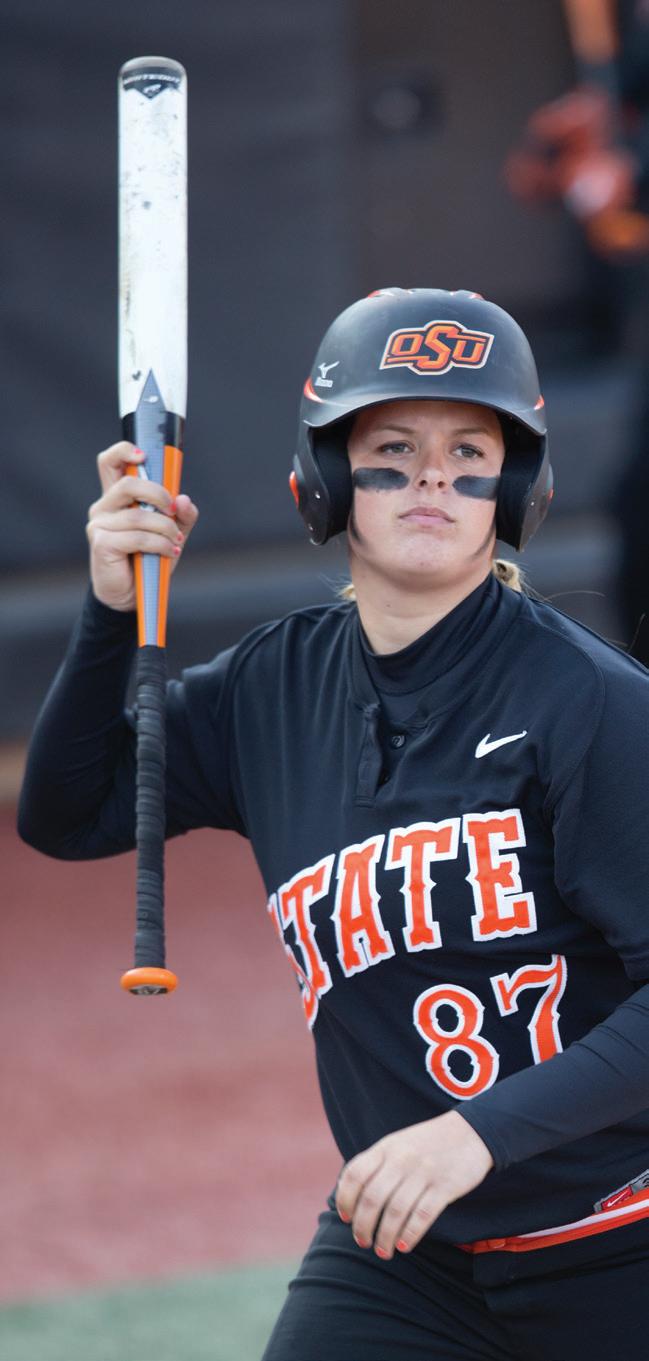
“My arm is just — it has really been hurting me this year,” she said. “I’M THINKING ABOUT GETTING SURGERY AND CALLING IT QUITS FOR NOW. I WANT TO GET INTO COACHING, I THINK. MAYBE I COULD GET INTO COACHING WITH TEAM CANADA. I WOULD LOVE TO DO THAT.”
Wieligman agrees that coaching could be a great career path for her.
“I think she’ll be a good coach,” he said. “She has good knowledge of the game and understands it and loves the game. You have to have a passion for the game, and she doesn’t mind doing some of the things that a player has to do. I’m always for kids that have had experiences like this to go into coaching. There are so many experiences they can share with the younger generations.”
Ettinger will complete her work on a sociology degree this May.
The one thing that Ettinger credits her success to is the love and support of her family. This past summer, she spent a few weeks in Nova Scotia visiting her grandmother, Beula Bain , who she says is her biggest fan.
“My grandma is my everything. I love her,” Ettinger said. “I call her every day. I can’t even explain to you how important she is to me. I literally call her every day and she fixes my life for me.”
Ettinger makes sure she cherishes every moment with her grandmother.
“I got to spend two or three weeks up there with her, which was awesome. I just hung out with her and got to do grocery shopping and I took her places. She doesn’t get to go places all the time because she lives in her little home and she loves her friends there and hangs out there. But she loves going out for ice cream, so I took her out for ice cream. That was so much fun. She’s awesome.”
From Nova Scotia to the ice hockey rink to Illinois, to softball, to Team Canada, to Oklahoma State, Ettinger has been on a journey that has made her the competitive and knowledgeable player that she is. The experience has led her to think about a coaching career, but for right now her ultimate goal is to lead her team back to the Women’s College World Series.
32
APRIL 2014
NOT BAD FOR A GIRL WHO COULDN’T BUNT.
COWBOY GOLF:
STORY BY RYAN
 CAMERON PHOTOGRAPHY BY BRUCE WATERFIELD
CAMERON PHOTOGRAPHY BY BRUCE WATERFIELD
MUCH HAS BEEN MADE OF THE DISTINGUISHED HISTORY THAT ACCOMPANIES OKLAHOMA STATE’S MEN’S GOLF PROGRAM — UNDERSTANDABLY SO WITH 10 NCAA CHAMPIONSHIPS, 54 CONFERENCE TITLES AND 165 ALL-AMERICANS COUNTED AMONG ITS STAGGERING NUMBERS.
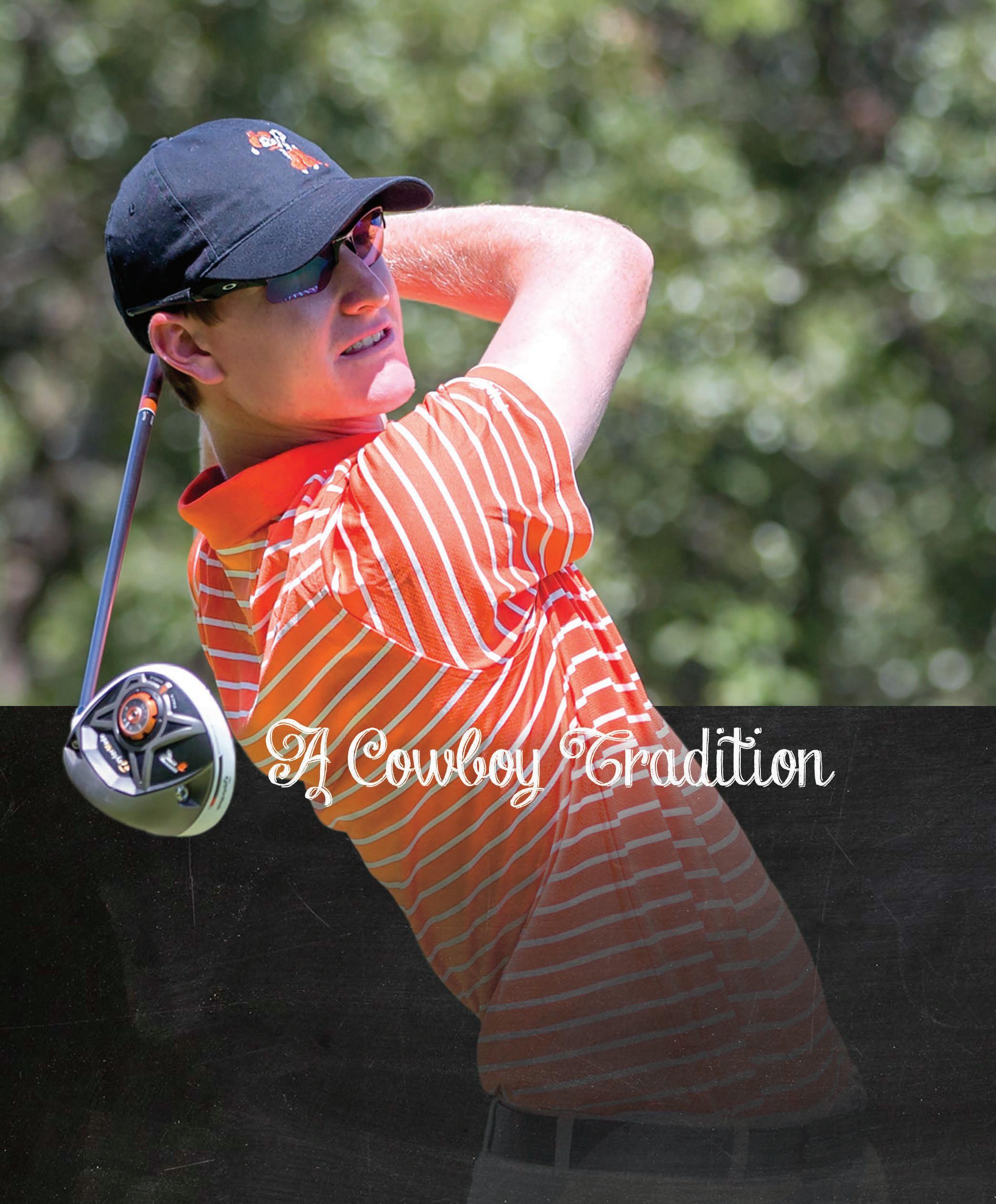
33
BUT AN ACHIEVEMENT THAT OFTEN GETS LOST IN THE SHUFFLE IS THE 29 ACADEMIC ALL-AMERICANS WHO HAVE GRACED THE COWBOY PROGRAM. FITTING THE MOLD OF SO MANY OF THE PROGRAM’S PLAYERS THAT HAVE COME BEFORE HIM, JORDAN NIEBRUGGE , OSU’S NEWEST STAR-IN-THE-MAKING, IS EQUAL PARTS STUDENT AND ATHLETE.
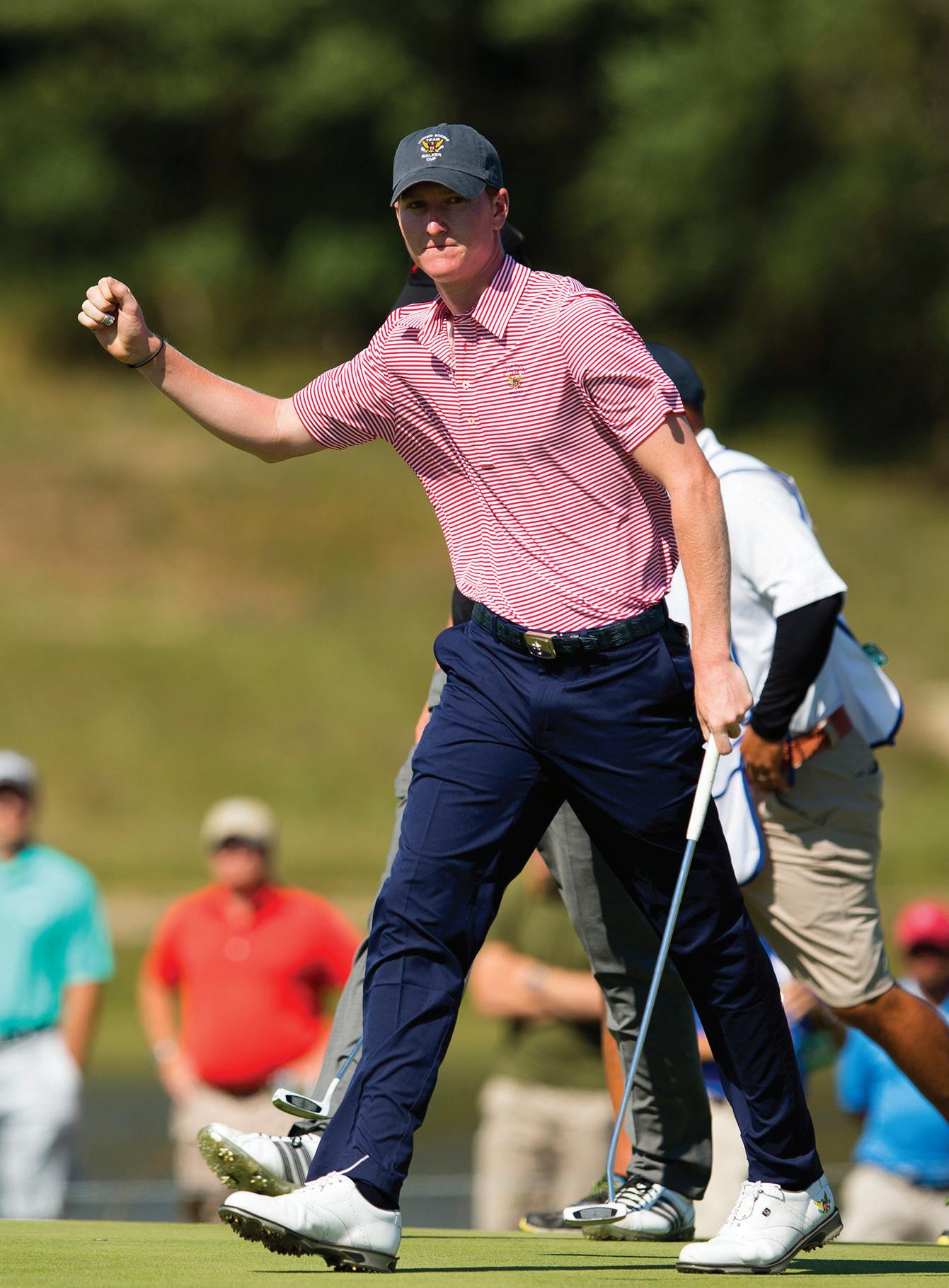
34
APRIL 2014
PHOTO / CHRIS KEANE
Still in the midst of his sophomore campaign, the well-rounded Niebrugge quickly draws glowing reviews from his head coach.
“We have had some other guys like him in the past, but you certainly don’t take that for granted, and you have to appreciate it when you do have someone that is as easy to deal with and as coachable as he is,” OSU head coach Alan Bratton said.
“The more you get to know him and his family, he is a pleasure to be around all of the time. HE IS SO COACHABLE, VERY INTELLIGENT, VERY TALENTED, BUT HE LISTENS TO HIS TEAMMATES AND IS A GREAT LEADER. He is just a dream all the way around.”
Niebrugge came to the Cowboys far from the finished product, but Bratton saw his immense potential and knew he would have the opportunity to write his own chapter in the program’s history books.
“When we started recruiting him he hadn’t done a whole lot as a player. WE RECRUITED THE ATHLETE THAT WE SAW,” he added. “We became more intrigued the more communication we had with the people we were getting to know, primarily Jordan and his parents. Then he started doing some things and more and more schools got in on him. Fortunately, we were able to win out in the end.”
To nobody’s surprise, Niebrugge made an educated, thought-out decision when it came to choosing his home for the next four years.
“It pretty much came down to Oklahoma State and Illinois, and my best friend went to Illinois. I was comparing the pros and cons of each one. I really didn’t find any cons to this place,” Niebrugge said, “BETWEEN THE GOLF COURSE, FACILITIES, THE COACHES, THE HISTORY HERE AND THE ACADEMICS. THERE ARE A LOT OF GOOD COURSES HERE THROUGH THE HONORS PROGRAM. I DIDN’T FIND ANY FLAWS HERE, AND I TOOK THAT TO HEART.”
The northern climate of Niebrugge’s hometown of Mequon, Wis., isn’t necessarily conducive to polishing one’s golf game. The opportunity to head south to a tradition-rich program with top-notch facilities would prove integral for tapping into his potential.
“ HE IS STILL A YOUNG PLAYER
IN SO MANY WAYS. Where he grew up, seasons are short. That was another reason that you projected where he could get when you recruited him. He had good fundamentals, good athleticism, solid family and smart kid,” Bratton explained.
“You think if he comes down here, gets to play year round with good players, he could really take o and he has done that so far.”
Niebrugge’s freshman campaign showed glimpses of what could be. His first top-10 finish came in his sixth career start, a runner-up showing at THE PRESTIGE at PGA West. Four more top 10s followed, including another runner-up at the MORRIS WILLIAMS INTERCOLLEGIATE in Austin. That score featured a hole-inone on a 248-yard hole — with a 3-iron.
When it was all said and done, Niebrugge received honorable mention All-America plaudits and was an All-Big 12 pick , but his first career victory had eluded him.
That would change during the summer months as his attention turned to the amateur circuit. A result of countless hours spent working on his short game at KARSTEN CREEK, Niebrugge trimmed those precious few strokes needed to snare the top spot on the leaderboard.
“It was all shots here and there. Maybe two or three each round that maybe I make a five- or six-footer here or a 15-footer here for par or something like that,” Niebrugge explained. “Those three shots are so big, you don’t realize until it turns 75 into 72 and 72 into 69. Just a couple of shots here and there around the greens and on the greens made a huge impact with my game.”
The fruits of Niebrugge’s labor resulted in four victories, three of which occurred during a three-week span and included wins at the WISCONSIN STATE AMATEUR CHAMPIONSHIP and WSGA MATCH PLAY CHAMPIONSHIP. Highlighted by triumphs at the U.S. PUBLIC LINKS AMATEUR CHAMPIONSHIP and WESTERN AMATEUR CHAMPIONSHIP, his meteoric rise ultimately earned Niebrugge a berth on the UNITED STATES WALKER CUP squad.
“I think he needs to keep building on what he has done. I know he can handle sticking his neck out and winning because he showed he could do that this summer, and he could do it in bunches,” Bratton said. “I want his focus to be on continuing to get better. I think the sky is the limit for what he can do. He has size, athleticism, speed and power. He has nice touch around the greens, so he has all the skills. He just needs to keep adding shots to his arsenal and being comfortable in di erent situations.”
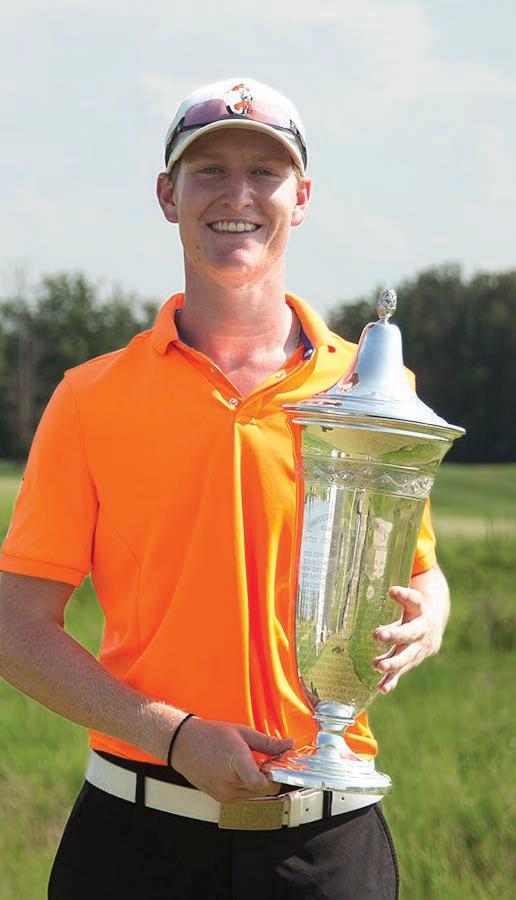
35
NIEBRUGGE with his 2013 U.S. AMATEUR PUBLIC LINKS CHAMPIONSHIP TROPHY
Another of Niebrugge’s redeeming qualities is a maturity level well beyond his years. When reflecting on his success of the past summer, there was less talk of trophies and the various spoils that accompany victory, but rather discussion of the many connections made that can be beneficial beyond the game of golf.
“I think I grew up a lot. I learned the importance of connections. My dad talked about it after the Walker Cup and he talked about how many connections I made not just through the WALKER CUP but each tournament. You will have connections with them the rest of your life, just like you will with the guys here, which is huge,” Niebrugge said.
“I think that was really important for me because it is not always going to be about golf in the end. You need to have those connections after golf if you want to start your own business or for any job that is really important.”
The next step in Niebrugge’s growth as a player took place upon his return to Stillwater and learning how to deal with life in the limelight. The challenge came in the form of dealing with the di culties the game of golf inevitably provides.
“This past fall, I didn’t do very well at handling expectations after everything that went on this summer,” Niebrugge said. “I went out thinking I had to play well every time I went out there. If you look at the pros, in any sport, and the top players in the game, they don’t always have their top stu when they go out there. I re-evaluated things over the winter and worked really hard with some of the guys on my game.”
Additionally, Niebrugge leaned on the advice of his head coach in the process and has seemingly embraced his spot among, not only college golf’s elite, but the world’s best players as he ascended to No. 4 in the World Amateur Golf Ranking .
“To deal with those expectations when you are only 20-years-old is great. You hope you get to deal with expectations at any point in your life, but to be able to learn those lessons when you are 20 hopefully pays o big time for him down the road,” Bratton said.
“I think he is smart enough to recognize that, and we obviously had conversations about that and talked about the importance of learning and you still have to continue to work hard. It is like any sport, you either get better or you get worse. I think he has done a good job of recognizing maybe he wasn’t handling those. HE HAS DONE A NICE JOB WITH HIS WORK ETHIC THROUGH THE BREAK AND UNTIL NOW AND IS OFF TO A GOOD START THIS SPRING.”
Positive results came quickly in the squad’s spring opener at the AMER ARI INVITATIONAL in Hawaii. Niebrugge garnered his first collegiate victory, sealing the deal with a clinching eagle on his 54th and final hole of the event.
“I put everything else aside, went out that tournament and had fun. I just brushed everything aside and went out and had fun with the guys and tried to do what is best for the team and what is best for me,” Niebrugge said.
“Last year, I came pretty close a couple of times. It was a little bit of a relief to get that first one and get that experience, and I think it is a lot easier to go out and win golf tournaments after that.”
For Bratton, it has been rewarding to see his foresight pay o as Niebrugge continues to blossom into the player he envisioned.
“He is awesome. It is great to see him achieve what he did this summer and what he is continuing to build on with this win. He has done what we thought he could do when we recruited him,” Bratton said.
While he continues to develop on the golf course, his maturity in the classroom has proven essential to navigate the rigors that come with being a student in OSU’s Honors College as well as his hectic travel schedule.
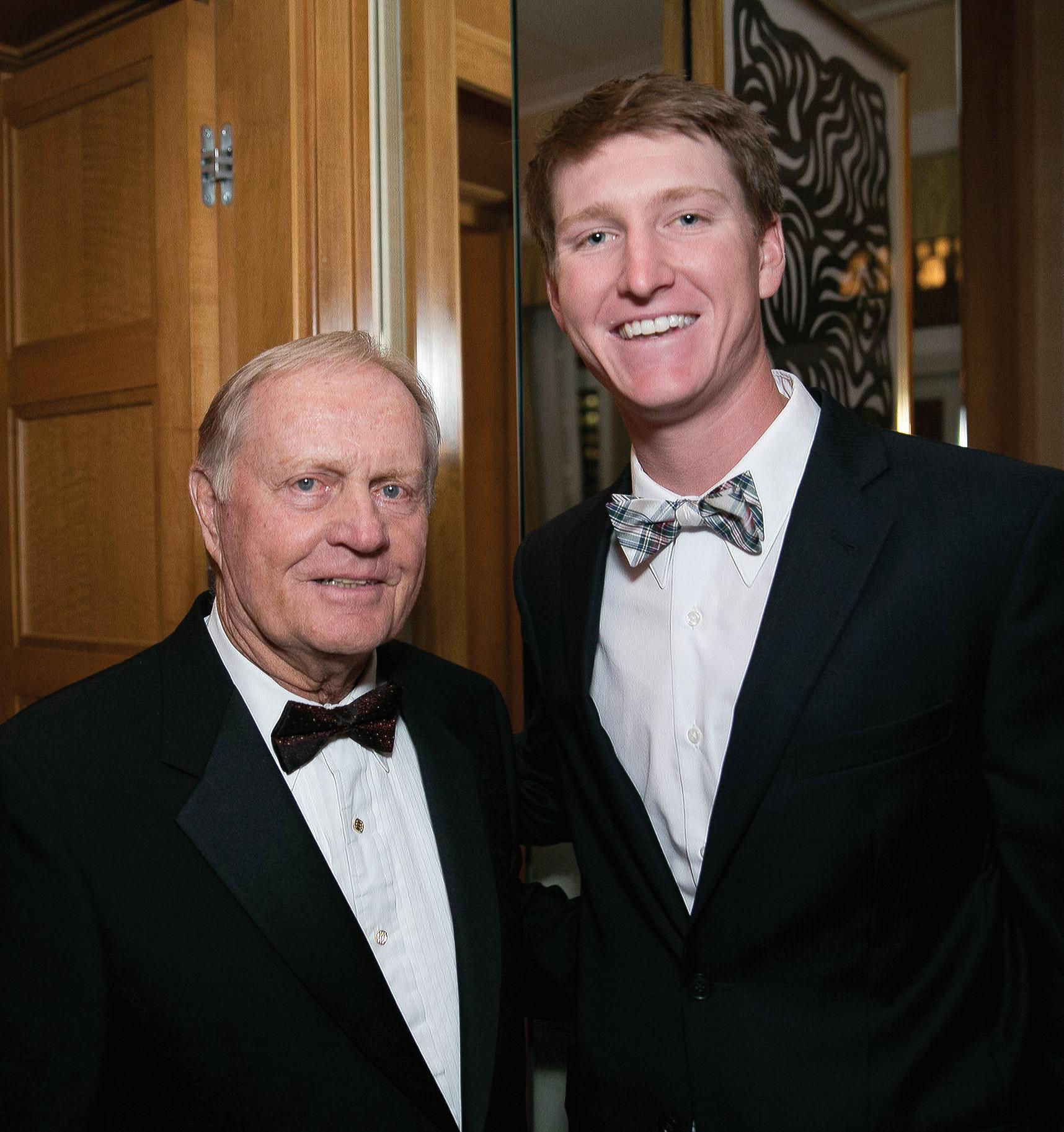
36
NIEBRUGGE shown here with golf legend JACK NICKLAUS at the WESTERN GOLF ASSOCIATION GALA in November 2013
APRIL 2014
PHOTO COURTESY / WESTERN GOLF ASSOCIATION
“You have to be disciplined. When you want to just hang out in the dorm, you have to get stu done in your free time so you don’t have to worry about anything else when you are traveling,” Niebrugge said. “That is the key, discipline, tell your teachers that you are going to be gone and get your stu done before so you don’t have to worry about it during or even after so you don’t have to catch up on it.”
Niebrugge knows not handling business away from the course can a ect performance on it.
“You don’t want it to get in your head that you have to get this done before this weekend. You just don’t want that to be in your head while you are trying to play golf.”
That maturity is not lost on his coach in the classroom, Marilyn Middlebrook , OSU’s associate athletics director for academic a airs and director of academic services for student-athletes.
“The interesting thing about Jordan is I really don’t have to do anything with him. He is so mature. He is so on top of his business. Even when he was traveling this summer and winning all of those tournaments he was still communicating with me about his academics,” Middlebrook said.
“He will e-mail me, I will tell him once and then it is completed. HE MAKES THE DECISION WHAT HE IS GOING TO DO. It is delightful, because I am so used to having to tell people what they have to do, then I get one like Jordan who listens to everything. HE GATHERS ALL OF THE INFORMATION AND THEN HE IS CAPABLE OF MAKING HIS OWN DECISION. I think that is the thing I embrace the most with him. HE REALLY LISTENS TO PEOPLE HE RESPECTS AND THEN HE MAKES HIS OWN DECISION, WHICH IS WONDERFUL FOR ME. He takes ownership of his own decisions.”
When Niebrugge arrived in Stillwater, Middlebrook was well aware of his academic ability, but did not realize his prowess on the links in large part due to his humble nature.
“When he was here as a freshman, I knew he was a good golfer because he wouldn’t have been recruited to come here. Otherwise, I wouldn’t have had any clue,” Middlebrook said. “I knew he was a good student from his academic record. All of the sudden he comes back from this monstrous year in golf and every time I picked up the paper there was Jordan’s name. I am thinking, ‘This kid is a real golfer’. He is so humble about it.”
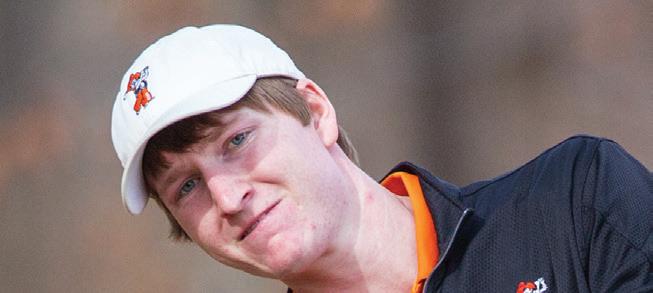
Like Bratton, the praise comes easily from Middlebrook when it comes to Niebrugge and the way he conducts himself.
“WITH JORDAN, THE EDUCATIONAL SIDE OF IT IS EQUALLY AS IMPORTANT AS THE GOLF. I am extremely proud of what he does. The expectations are already there for him. I WOULD EXPECT THAT HE WOULD EXCEL AT THE HIGHEST LEVEL,” Middlebrook said. “I think he is naturally intelligent and he uses that intelligence and he uses his maturity and his background. We just sort of reap the benefits.”
The next significant component in the education of Niebrugge came via his victory at the PUBLIC LINKS . Upon becoming THE FIRST COWBOY TO WIN THE EVENT, he earned an invitation to compete at THE MASTERS this spring as a result.
With AUGUSTA NATIONAL GOLF CLUB serving as his classroom, Niebrugge participated in one of the most prestigious events in all of sports with experiences such as staying in the Crow’s Nest in Augusta National’s clubhouse, driving down Magnolia Lane and teeing it up with the game’s best. Despite missing the cut, Niebrugge showed up with more than a leisurely round of golf in mind.
“My coach back home always says go into each and every tournament like you are going to win the tournament. You can’t enter a tournament and think you are just there for fun, because you are never going to go anywhere,” Niebrugge said. “I PREPARED LIKE I WAS GOING TO WIN. I THINK THAT IS A LOT BETTER
THAN JUST GOING THERE AND JUST TRYING TO HAVE FUN.”
Walking every step of the way for Niebrugge’s first Masters experience was a familiar face as Bratton was on the bag serving as his caddy. Don’t think for one minute that navigating Augusta NATIONAL’S AMEN CORNER deterred Niebrugge from his work in the classroom, however.
“He had everything handled before he left. He is no worry whatsoever.” Middlebrook said.
If the trajectory of his current path is any indication, this trip was the first of many strolls down the pristine fairways in pursuit of the famous GREEN JACKET for Niebrugge.
“He has some great learning experiences coming up, whether that is playing The Masters or other big tournaments coming up that we have this spring. It is always an ongoing deal with any athlete dealing with those expectations. JORDAN CAN BE ANYTHING HE WANTS TO BE IN GOLF AND WE WILL SEE HOW HE HANDLES EVERYTHING AND SEE HOW HE GETS THERE,” Bratton said.
“I wouldn’t say he has arrived or is anywhere near where his potential can be. He knows di erent things he needs to add to his game, both physically and mentally, to get where he ultimately wants to go.”
37
FOR COWBOYS FANS, THAT IS GOOD NEWS BECAUSE IT APPEARS THE BEST IS YET TO COME.

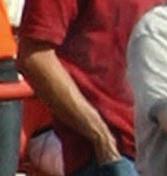
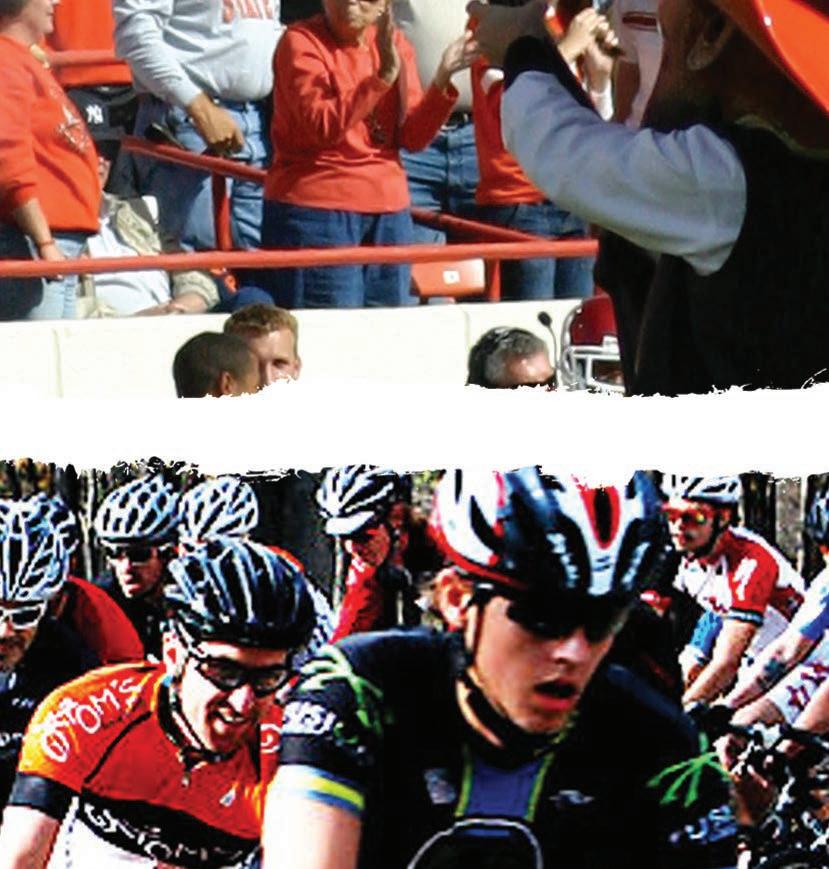
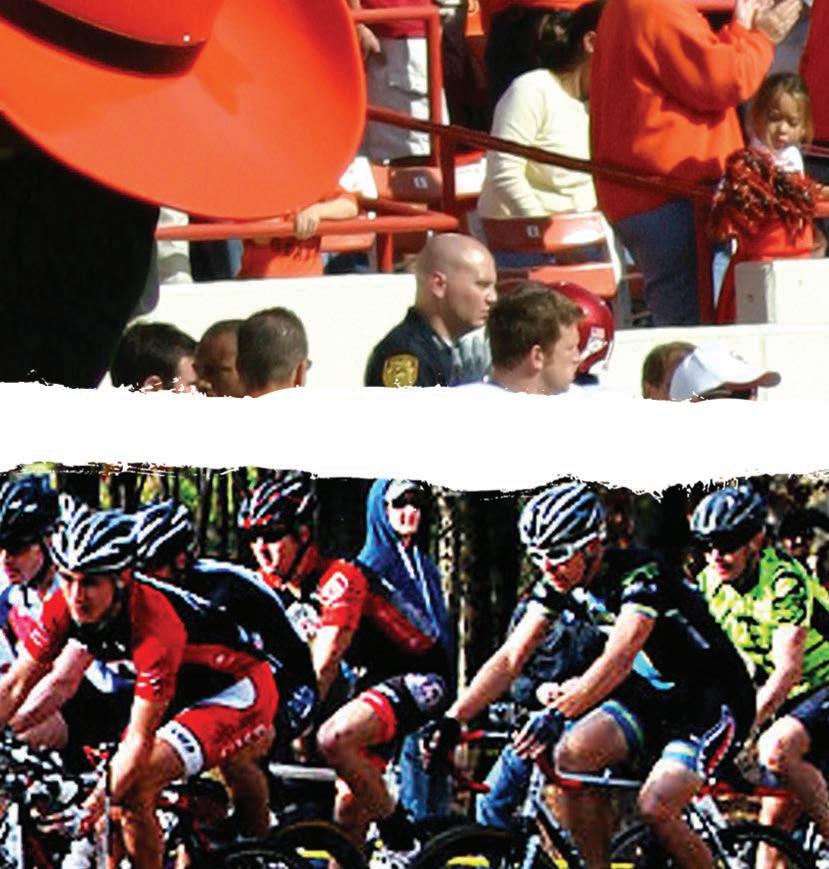
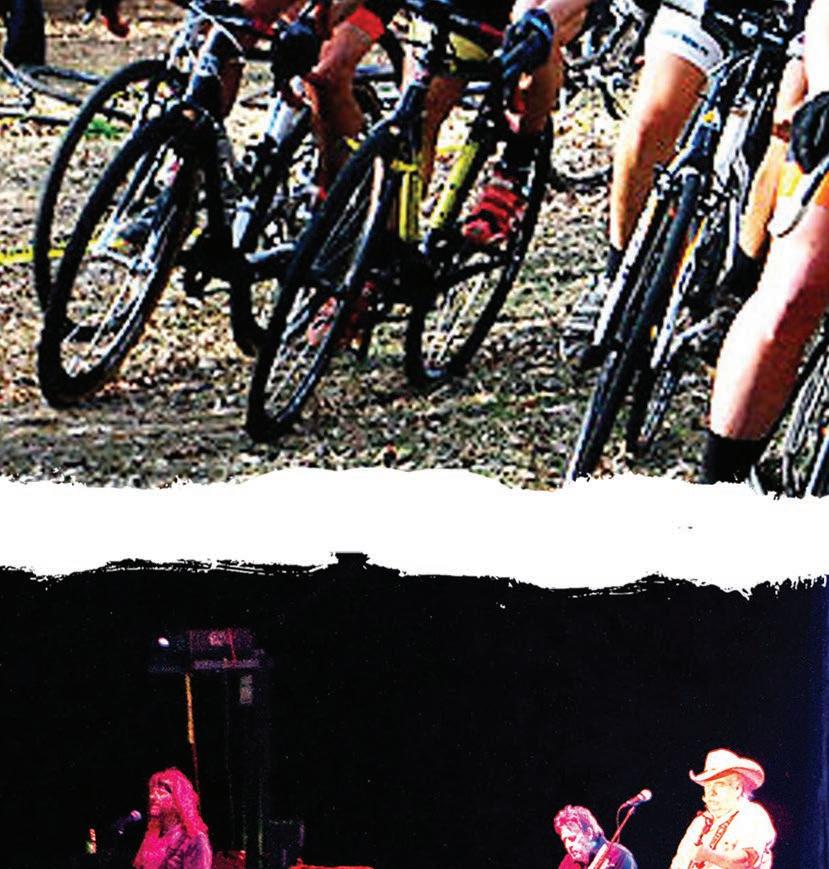
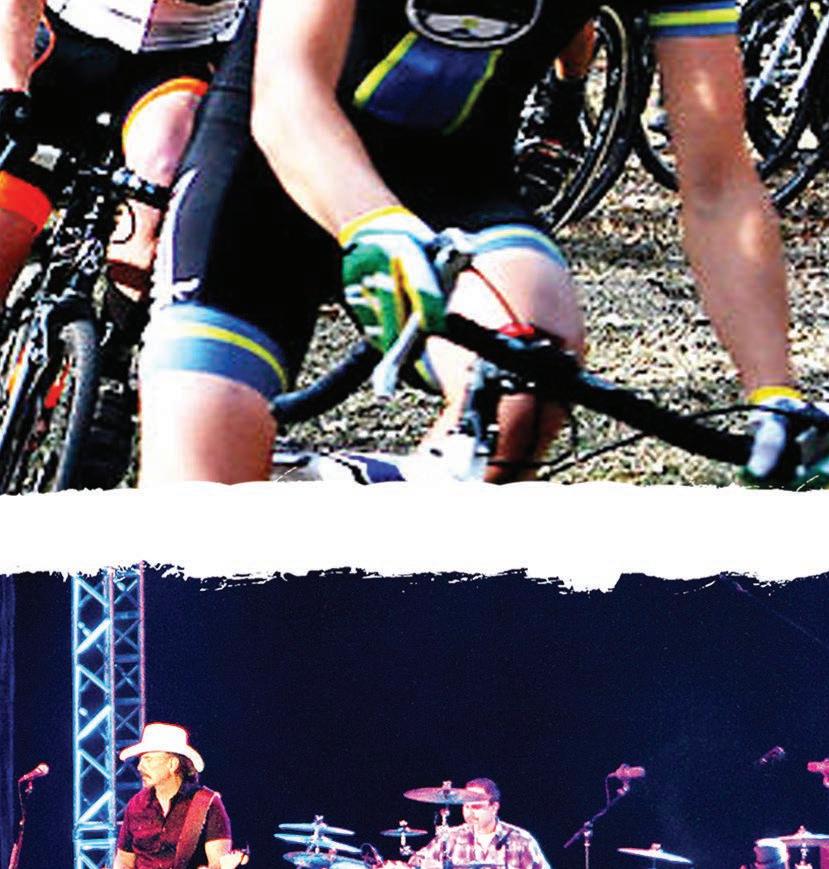
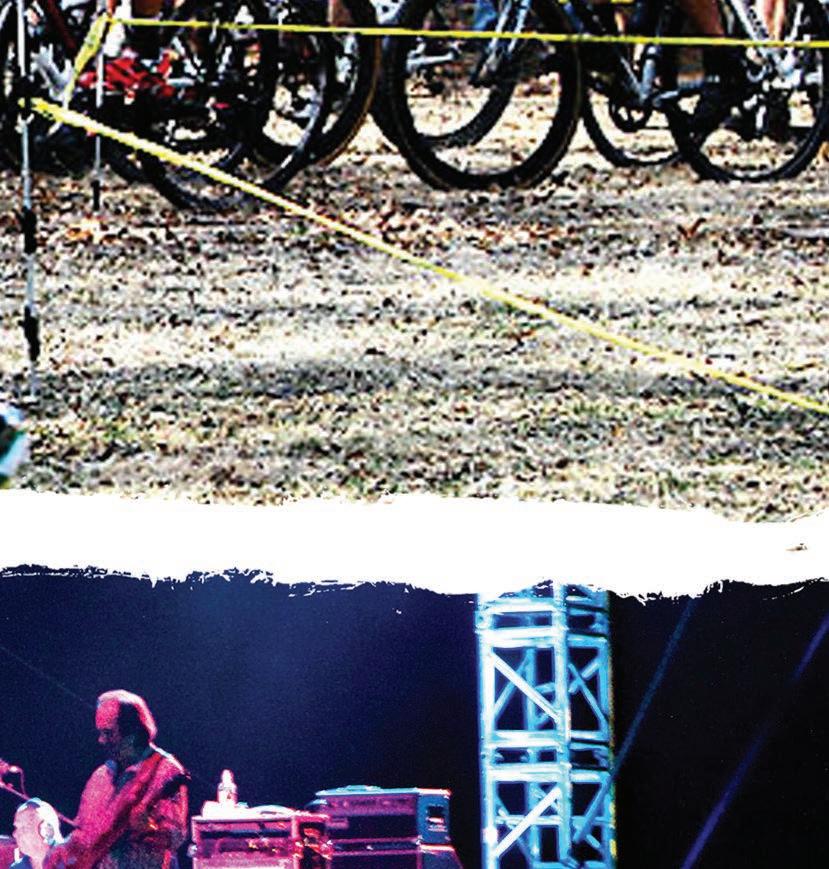
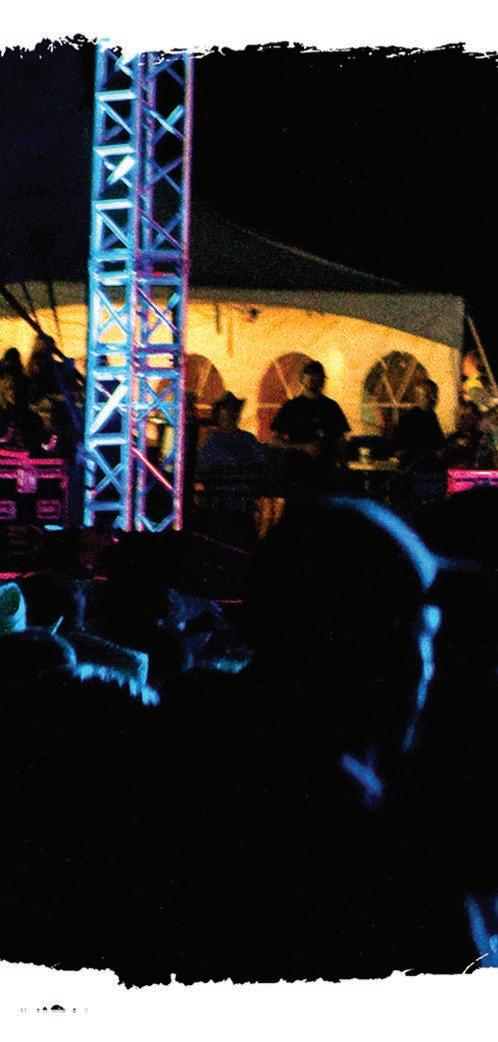




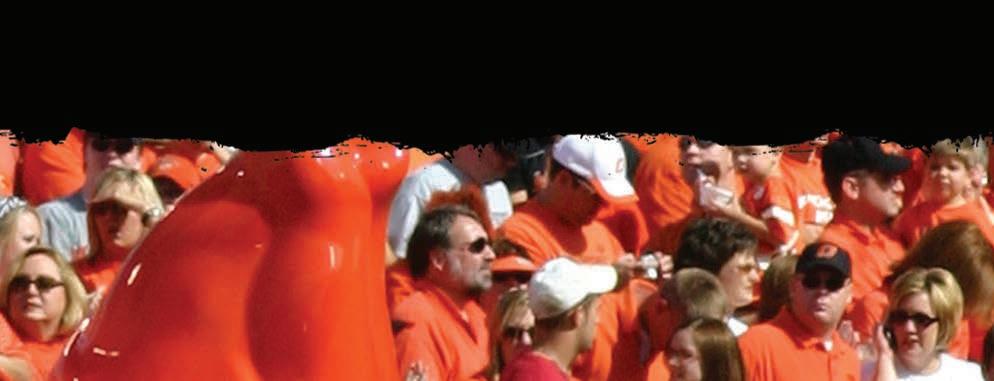







From Artists to Zoologists From Artists to Zoologists
for whatever shoes you need to fill - Hire OSU Grads. for whatever shoes you need to fill - Hire OSU Grads.
Butler Does It


40
APRIL 2014
HOW THE (Keeping the fun in dysfunctional)
The day-to-day lives are frenetic — imagine an extended family get-together that never ends — ever. Each area of the football family has its special needs, demands and time constraints. There are typically more than 125 players on Oklahoma State’s football roster and another 90 who deal with Cowboy football on a daily basis. Like we said, a pretty large family.

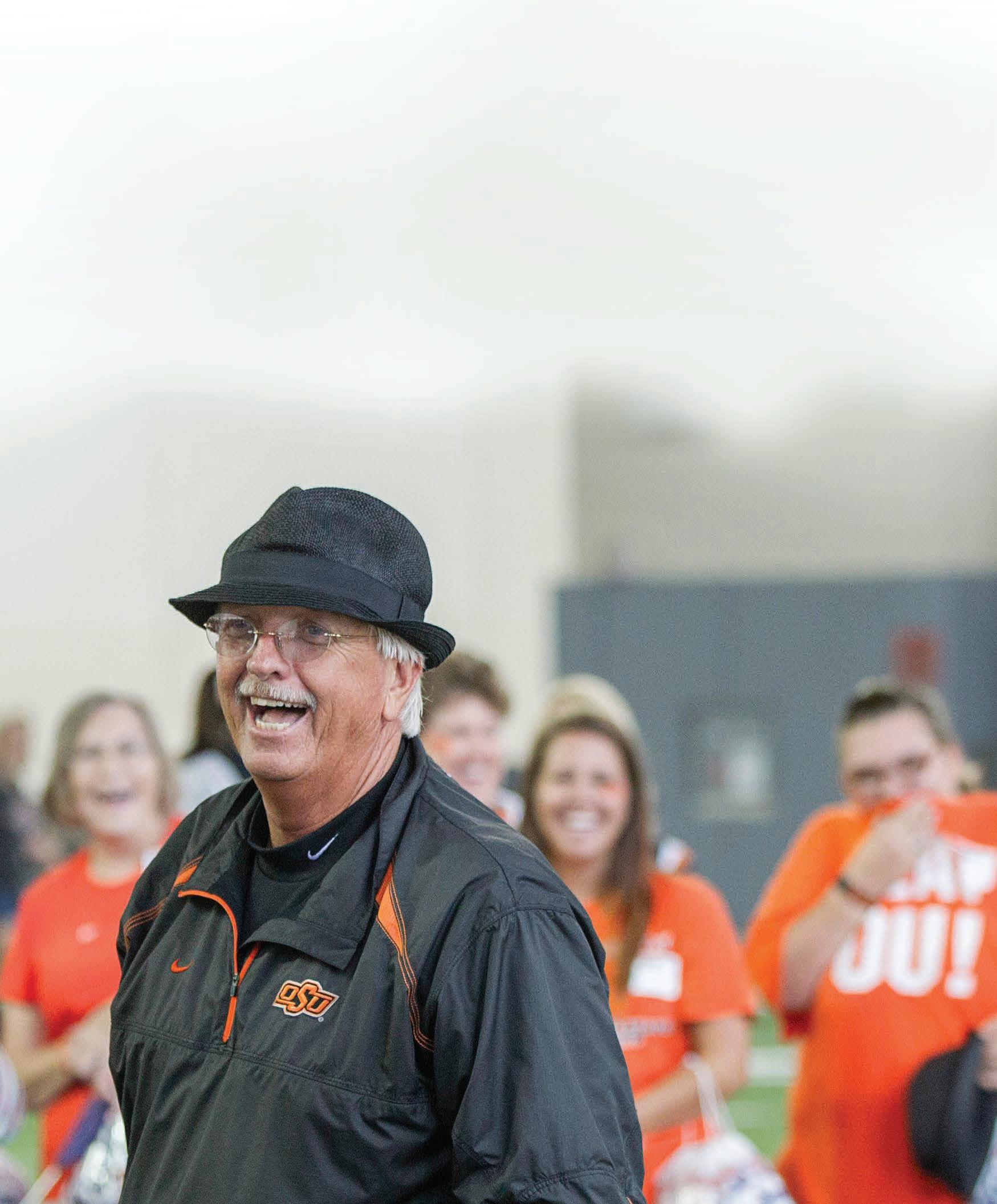
And there are only two people on campus who deal with each and every group, consistently, if not daily. They are head
coach Mike Gundy and Director of Football Operations Mack Butler.
In some ways, Gundy is the brains and Butler the muscle of the Cowboy football operation. But that is selling Butler short because he is often busy solving problems most of us never hear about because he is the spoke and the rest of us are the wheel. There are no doubt hundreds, if not thousands, of football fanatics who would jump at the chance to join the ranks of the Mack Butlers of the college football world. But before you sign up for a career in college athletics, read a little further.
STORY BY KEVIN KLINTWORTH | PHOTOGRAPHY BY BRUCE WATERFIELD
41
Think of a major college football team as a small company — or maybe, more accurately, a very large, sometimes dysfunctional, family. Yeah. Let’s go with a large family of around 225 people or so.
Butler’s duties are too numerous to completely cover, even in a magazine piece. His responsibilities touch every aspect of OSU’s football program. Think of every chore you can imagine associated with running a college football program, and rest assured there are 50 more that have never crossed your mind. Did you leave out the “FOOTBALL 101 FOR WOMEN” program? How about calculating the mileage and per diem that each player receives if they make the bowl trip on their own? What about those colorful photos on the wall of the coaches’ level? Those things need constant updating. If two Cowboys have an issue as roommates, it’s time to call Mack. Does someone have their music playing too loud in the residence hall? If so, it falls on the desk of Mack Butler.
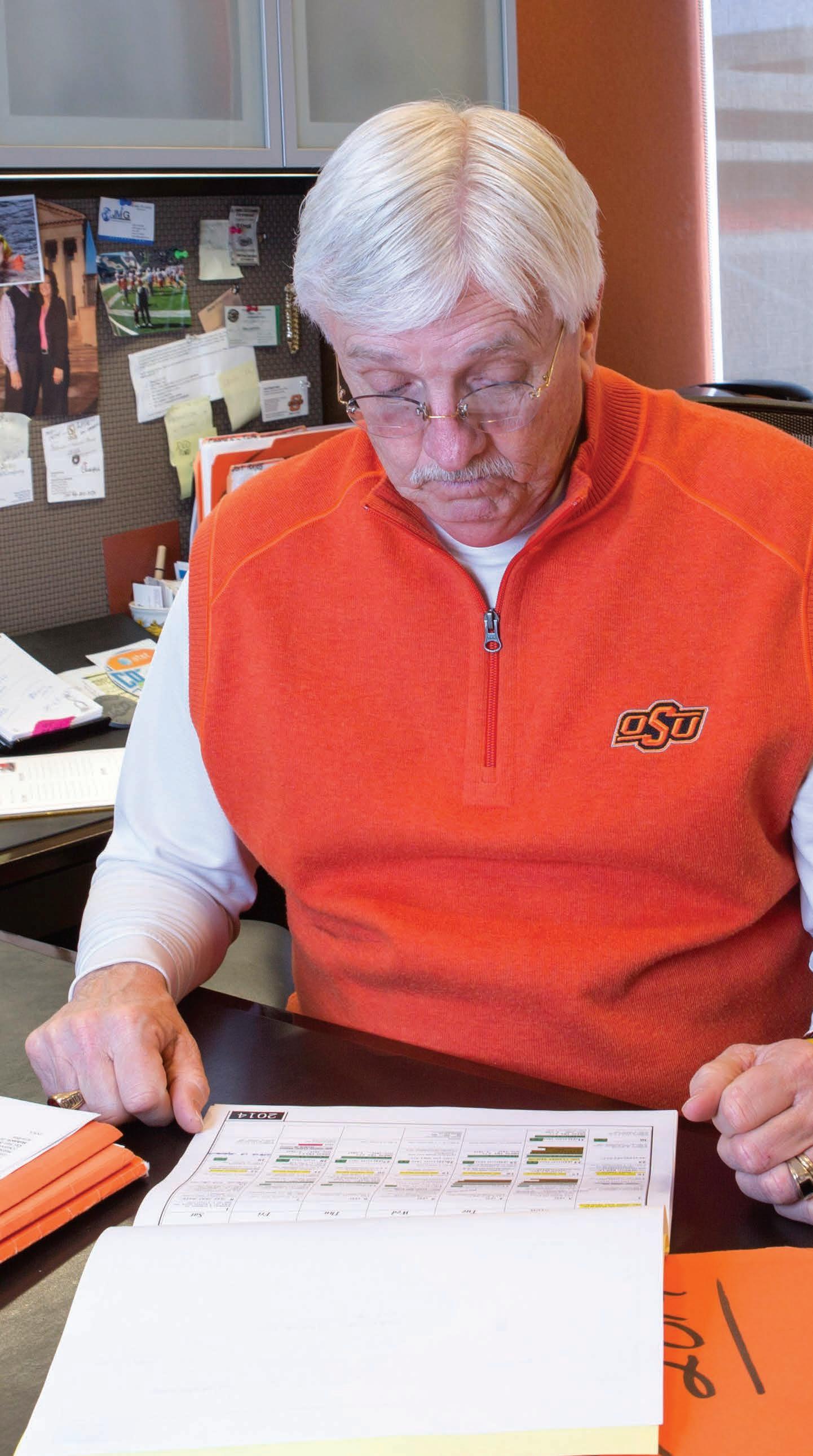
DID YOU KNOW THAT BUTLER

NEVER SEES THE SECOND HALF OF THE COWBOYS’ ROAD GAMES? He leaves early for the local airport to check on the team charter, airport security and bus access to the tarmac. When the Cowboy team flight arrives at its road destination on Friday afternoons, the first smiling face they see when stepping o the plane is Butler, usually in a sweater vest and orange tie, barking instructions for passengers as they load onto one of several team buses. He arrives at the game site a day before the team to “advance the game” as we say in the business. He works out details at the team hotel to avoid lines at the front desk. He works on team meals, best routes to the stadium on game day, police escorts, even the postgame team snack (a snack to players is a meal to the rest of us) falls under his jurisdiction.
Butler’s to-do list is never conquered. The completion of one major task is no time for pause or celebration. It’s simply a cue to move on to the next chore, or rather, the most pressing chore. His daily, monthly and yearly (yes, he has a yearly to-do list) calendars are legendary around the OSU complex. Every possible detail is imbedded in the fine print.
Something Butler has probably said at some point in his administrative career, “COACH, THAT PRACTICE WE HAVE SCHEDULED FOUR MONTHS FROM NOW — WE MAY WANT TO MOVE IT UP TWO HOURS — GONNA BE A solar eclipse THAT DAY.”
42
APRIL 2014
When you strip it down to basics, Butler and his counterparts across the country have a simple task. Take care of absolutely everything.
Sometimes that’s a perk; sometimes that’s an obstacle. Sometimes you are admired, often times you are a target but you are never in the shadows.
In college athletics, there are two camps — coaches and administrators. DFOs spend 100 percent of their time administrating the details, but they are probably categorized as coaches by the rest of the administration. They walk, or run, in both worlds
Stillwater under Les Miles. When Miles headed to LSU before the 2005 season, Butler made the move as well. He was in Baton Rouge for four years, long enough to collect a national championship ring. But when a position at Oklahoma State opened up, Butler slid back into his old job, well, one of his old jobs.
During the course of his career, he has coached and taught at high schools in Stigler, McAlester and Wilburton. He’s also worked at Northeastern Oklahoma A&M, and the University of Tulsa, as well as LSU and his two stints at Oklahoma
After earning a bachelor’s of science degree from Central State (now the University of Central Oklahoma) and a master’s degree from Southeastern Oklahoma State, he followed his sibling into the prep wars. And even today, with two national championship rings in the vault, he considers a 1985 playoff win by his Wilburton team over Muskogee Hilldale to be one of his all-time favorite victories.
“That high school game will always be special to me for a lot of reasons,” Butler said. “But there are a lot of games you think about. We won a national championship at NEO and at LSU. While I was at Tulsa we beat Texas A&M after falling way behind. That was big.”
But perhaps his favorite win was the stunning Bedlam upset in 2001 when the 3-7 Cowboys shocked fourth-ranked Oklahoma in Norman to conclude Miles’ first year as OSU’s head coach.
“The thing about that game was that the outcome was just so unexpected,” Butler said. “OU was still trying to get to the national championship game and we had just gotten our first Big 12 win the week before. We came back to Stillwater and the streets were packed. It was just a bigger rush because when you woke up Saturday morning it wasn’t the outcome anyone expected.”
— quickly. They must talk the talk of both camps and find a middle ground that works for everyone when everyone has a di erent end game.
And that challenge fits this DFO perfectly. Butler has probably had white hair since before he attended his first school dance. He has the folksy “aw shucks” approach that helps him deliver bad news in an acceptable way: imagine Andy Gri th in his “Matlock” years only with much more energy and in Nikes.
Butler is a high school coach, turned college coach, turned operations guy. He is in his second stint at Oklahoma State after originally taking on DFO duties in
State. He’s taught classes ranging from drivers education (where he once had a friendly state trooper pull over a student just to make an impression), human relations, accounting, marketing, typing and business. However, the thread that connects his career is football.
BUTLER IS A GRADUATE OF Fairfax HIGH SCHOOL, WHICH HE LIKES TO SAY IS a suburb of Little Chief and Grey Horse IN OSAGE COUNTY.
He caught the football bug from his older brother, David, who spent more than two decades in the Oklahoma high school ranks before leaving for the energy field.
Butler made the jump from the Oklahoma high school ranks to the college level via Northeastern Oklahoma A&M Junior College in Miami. Among his fellow coaches on the sta was Dale Patterson, who would later serve as assistant director of football operations at OSU. Patterson later returned to NEO as head coach, and then athletic director.
“I taught 12 hours of class and coached the defensive backs,” Butler said of NEO. “We won the national championship my first year and for the next two years we had really good football teams and really good players — high level players. I think one year 32 of our 36 sophomores signed with Division I programs.”
43
By taking care of everything, the DFOs (as they are known in their own circles) are allowing coaches to coach. They are taking care of the details, reading the fine print, anticipating the speed bumps, gauging a coach’s reaction before a coach has time to react or formulate a plan. To many folks on campus, and sometimes even within the athletic department, the director of operations is the face of the football program.
After three years at NEO, Butler moved to Division I for the first time, joining Dave Rader’s sta at Tulsa, where he coached tight ends, defensive ends and eventually the secondary. That stint ended when TU went through the painful process of dismissing Rader, a popular former Golden Hurricane player. TO THE AVERAGE COLLEGE FOOTBALL FAN, THE DISMISSAL OF A COACHING STAFF IS CONSIDERED ROUTINE, PART OF LIFE, AND SOMETIMES CELEBRATED. IN ACTUALITY, THE DISMISSAL OF A HEAD COACH causes massive collateral damage and casts uncertainty on many families associated with the program, most of whom have a bank accounts that pale in the comparison to that of the newly deposed head coach.
“I like to think the TU people liked me and thought I worked hard and was loyal,” Butler said. “And I think, I guess I actu-
“I knew Les from when he was an assistant at OSU,” he said. “We recruited against each other and we had a relationship. OSU WAS GOING TO LET HIM HIRE THE SCHOOL’S first operations guy AND HE DECIDED ON ME. I had some chances to go coach (at other schools), but I wanted to be in the Big 12 just like anybody would.
“Another strong influence was (thenOSU athletic director) Terry Don Phillips. He really wanted Les to succeed. To be honest, I had a longer interview with him than I did with coach Miles. I got along really well with Terry Don and I think that was beneficial for Les.”
The Cowboys’ fortunes improved under Miles, and after four years and three bowl appearances, the head coach made the jump to LSU. He soon had the Tigers on a similar trajectory and claimed a national championship in his third season at the
“I’M FROM OKLAHOMA AND MY FAMILY IS FROM OKLAHOMA,” he said. “I was excited TO COME BACK and I knew a lot had changed. Mike (Gundy) had already shown he could do some things and just the entire situation was di erent. The sta ng was better, the expectations were higher. Boone Pickens had just changed the game for Oklahoma State in so many ways.”
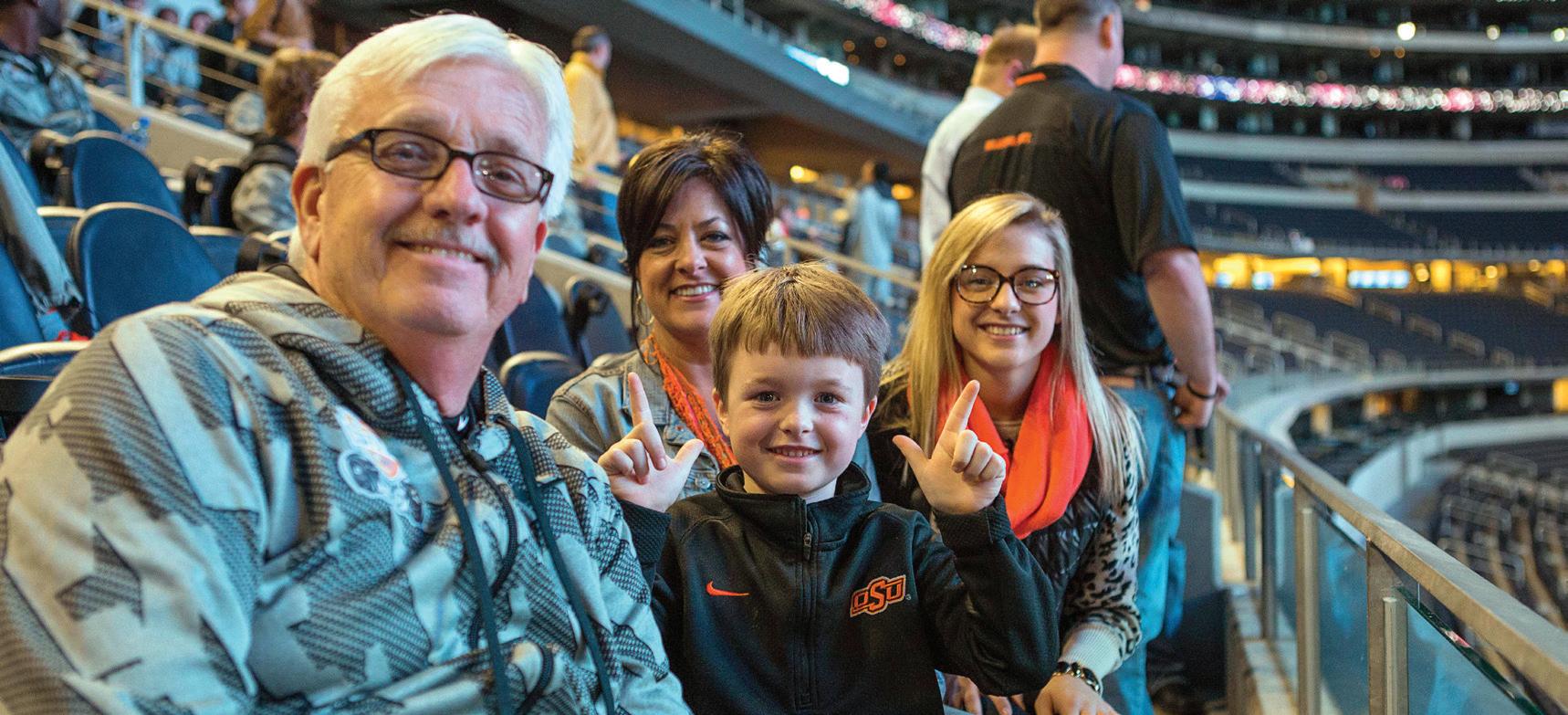
Gundy once told the statewide media that he really didn’t know how OSU survived, much less competed, before the transformational gifts of Boone Pickens. Butler, like Gundy, witnessed the evolution first hand.
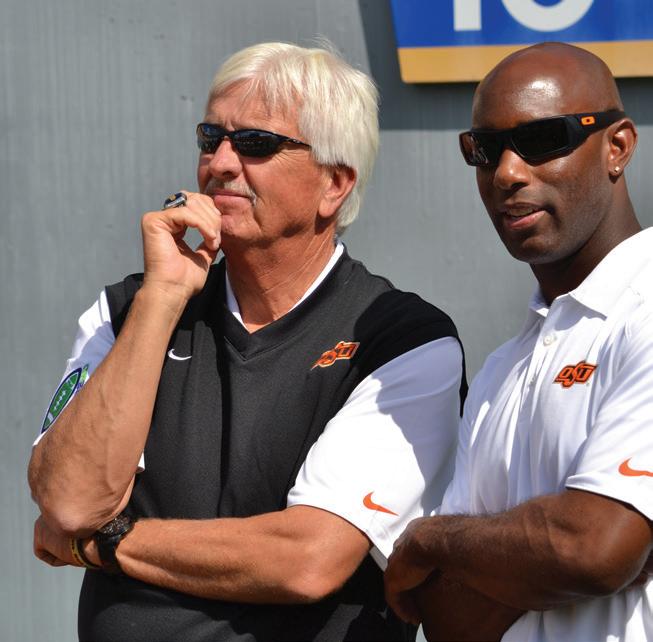
“When I first got here in 2001 OSU had been to one bowl game in 10 years,” Butler said. “Think about that.”
Former head coach Bob Simmons had led OSU to the 1997 ALAMO BOWL. Butler and Miles left OSU after a 7-5 season and an Alamo Bowl loss to Ohio State to conclude 2004. Butler returned to Stillwater after the 2008 season, where he found the Cowboys coming o of a 9-4 campaign and a trip to the HOLIDAY BOWL. The school’s first-ever preseason Associated Press top 10 ranking was just months away, along with a season-opening rededication of the new Boone Pickens Stadium and its spi y west end zone that now housed OSU football on a daily basis. A BIG 12 SOUTH CO-CHAMPIONSHIP WOULD COME THE SECOND YEAR AFTER BUTLER’S RETURN, AND AN OUTRIGHT Big 12 title WOULD FOLLOW IN 2011.
ally heard later, that the athletic director told the new coach (Keith Burns) that he needed to find a way to keep me around.”
The way to keep him around was to name him the director of football operations, a position and title that was still new in college football and new to Tulsa. While Butler grew into his administrative role, Tulsa struggled under Burns. And an hour away in Stillwater, more change was afoot. Former assistant coach Les Miles was about to take over the head coaching duties at Oklahoma State.
school. Butler was alongside Miles for four years in Baton Rouge and was in the Superdome in New Orleans when LSU took down Ohio State to claim the BCS national title.
A year after that national championship, word began to trickle out that Butler’s old position at OSU was vacant. It didn’t take a lot of persuasion for the “old Okie”, to use his term, to return to Oklahoma State, this time as the director of football operations under Mike Gundy.
“Even when we were at LSU, we knew what was going on here,” he said. “You knew that the facilities and budgets were di erent and you now had a chance to win at a higher level. You had facilities that could rival anyone.”
44
MACK BUTLER WITH ROD JOHNSON
PHOTO
DEAL APRIL 2014
The BUTLER FAMILY, from left to right,, MACK , JACQUE , JESSE and SHELBY
/ CHRIS
For Butler, the facility facelift was a repeat. At LSU, the Tigers had opened a new football operations center just months after the arrival of the new football sta .
“I was lucky in that regard,” he said of his own personal facility boon. “You could easily go through your entire career and not get a chance to be a part of that one time, and I experienced it twice in four years.”
During a bowl trip, the entire football program, from o ces to the equipment room, is relocated for a week. It is a massive undertaking with very little lead time. The logistics and travel have to be arranged during the heart of the holiday rush.
The biggest challenge for a member of the football operations sta begins and ends with the bowl game. Remember that Butler is the man with the yearly calendar. He makes a trip, sometimes two trips, to OSU’s fall road venues during each summer to prepare for team travel in the fall.
“I would say it’s the worst (time) because you have no preparation. From that Sunday when your destination is announced until you leave you have four weeks if you are lucky. Sometimes it’s just three weeks. This year was a challenge with Bedlam being a week later.”
THE OSU FOOTBALL FAMILY COMPLETELY stuffs two semis FOR ITS BOWL TREK. ONE IS MARKED HOTEL AND ONE IS FOR THE FOOTBALL PRACTICE SITE AND STADIUM ON GAME DAY
“We pack up the entire football o ce and really the entire operation, Butler said. “I have a checklist and we order o ce supplies specific for bowl week. The athletic training sta relocates as well, along with the equipment room. Rob Glass and his crew set up a weight room at the team hotel.
“It’s a regular game week when we get there,” according to Butler. “We lift three times a week just like we do at home.”
“The hard part for me,” he added, “is that you have to rely so much on other people during the bowl games. Good people but not necessarily people that you know.”
During the course of the week, there are security and bed check issues to navigate, player shuttles to supervise, the wives and children of the football family to consider, numerous team meals that might not be part of o cial bowl activities and, oh yeah, it’s a normal game week.
Bowl week itself can be exhausting for Butler and the folks that help him the most when it comes to bowl game administration.
That small group includes Danielle Clary, who serves as Mike Gundy’s administrative assistant, Rod Johnson , assistant director of football operations and Marty Sargent , associate athletic director.
“There are numerous NCAA rules in play when it comes to travel and the student-athlete,” Butler said. “As soon as the bowl site is announced we meet with the
“For those who drive, we park their cars and take their keys for the week,” Butler said. Then there’s the return trip. After the Cowboys’ 2014 COTTON BOWL game with Missouri ended, it was close to 1 a.m. when the team returned to its hotel — the Gaylord Texan. By 5:30 a.m., several players had loaded the shuttle back to the airport to squeeze in the last bit of down time before the beginning of the spring semester.
After the bowl game, when the players have scattered and the coaches have hit the recruiting trail, it’s time for the bowl’s postmortem (sifting through and paying piles of invoices). Then it’s on to signing day, spring football, summer camps, and deeper into that year-long calendar.
“This job has really evolved into two positions,” Butler said. “And Rod Johnson
folks from the athletic department and decide if this is a team charter trip or do we meet each other at the site.”
OSU took a team charter out of Stillwater to the FIESTA, INSIGHT, ALAMO and HOLIDAY bowls. The COTTON BOWL appearances were of the “see you there” variety.
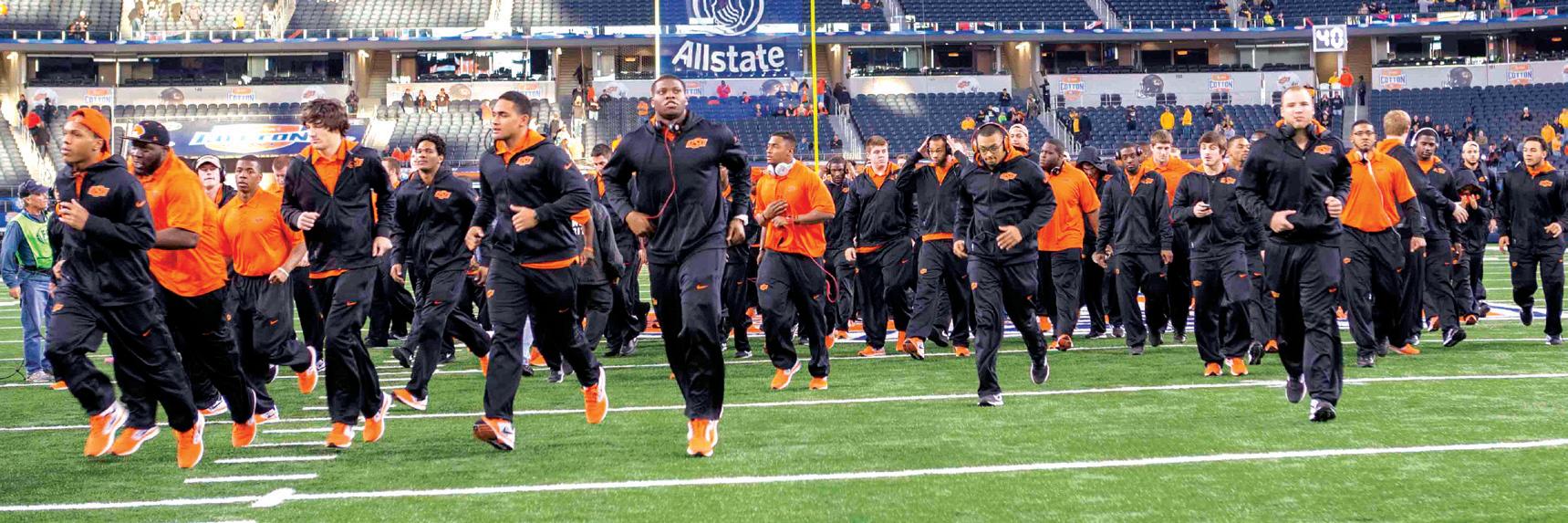
Then there is mileage to calculate for those driving and flights to book for those whose homes are not in Oklahoma, Texas or Arkansas, for example. Shuttles from the airport must be on the ready for the arrival of numerous Cowboys and their various flights. At the 2012 HEART OF DALLAS BOWL, a Cowboy o ensive lineman hopped into his shuttle and asked for a ride to THE OMNI HOTEL, WHICH IS IN DOWNTOWN DALLAS. AND THE DRIVER COMPLIED WITH A QUICK TRIP TO THE OMNI — in Fort Worth.
really plays a huge part. He has a background in academics and compliance that has really been helpful for us. The way everything has grown, one person couldn’t do it all anymore.”
If, at the end of a game, or end of a road trip, a director of football operations looks especially tired, there’s a reason. They had a doubleheader that day.
“I GET TO WIN OR LOSE TWICE ON GAME DAYS,” Butler said, “ONCE IS DURING THE GAME AND THE OTHER IS IF EVERYTHING GOES WELL.”
WITH A FAMILY OF 225 TO WATCH OUT FOR, WHAT COULD POSSIBLY GO WRONG?
45
COWBOYS AT THE COTTON BOWL
Where are



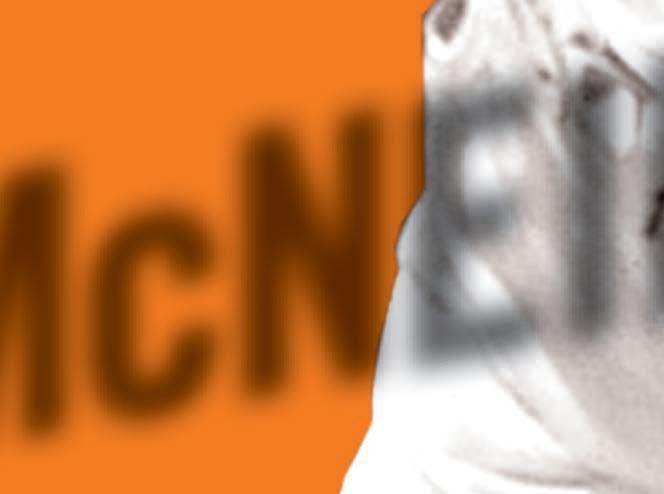









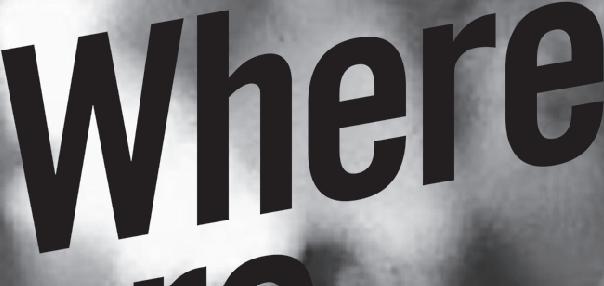










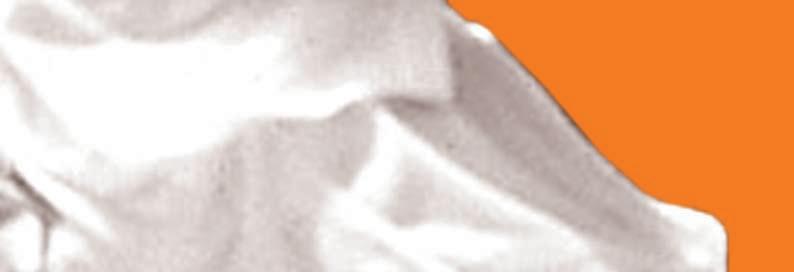







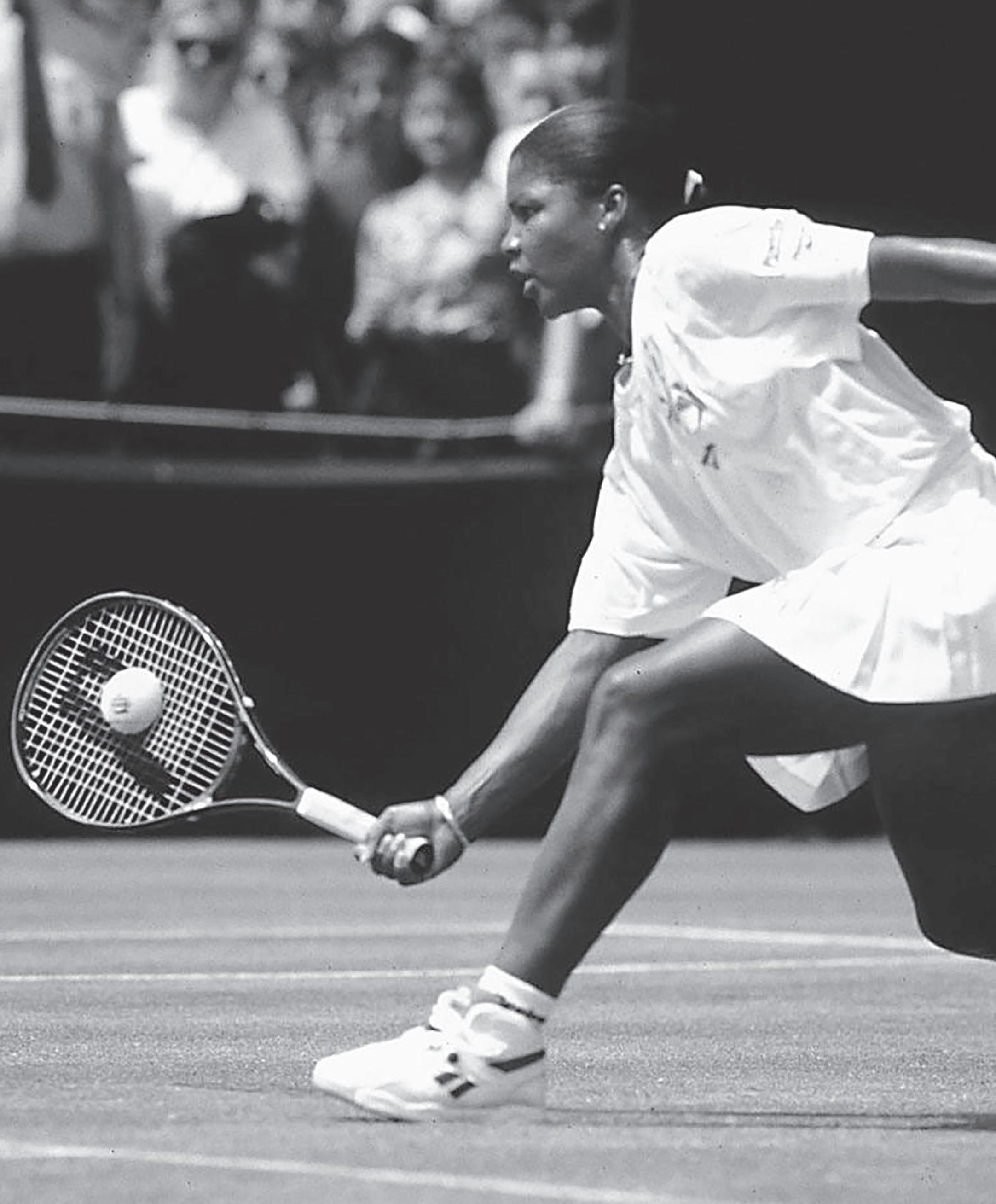
they now? LORI McNEIL

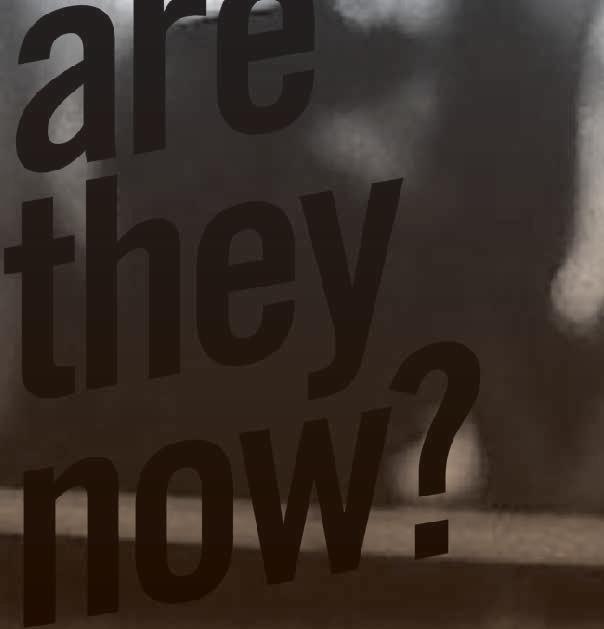

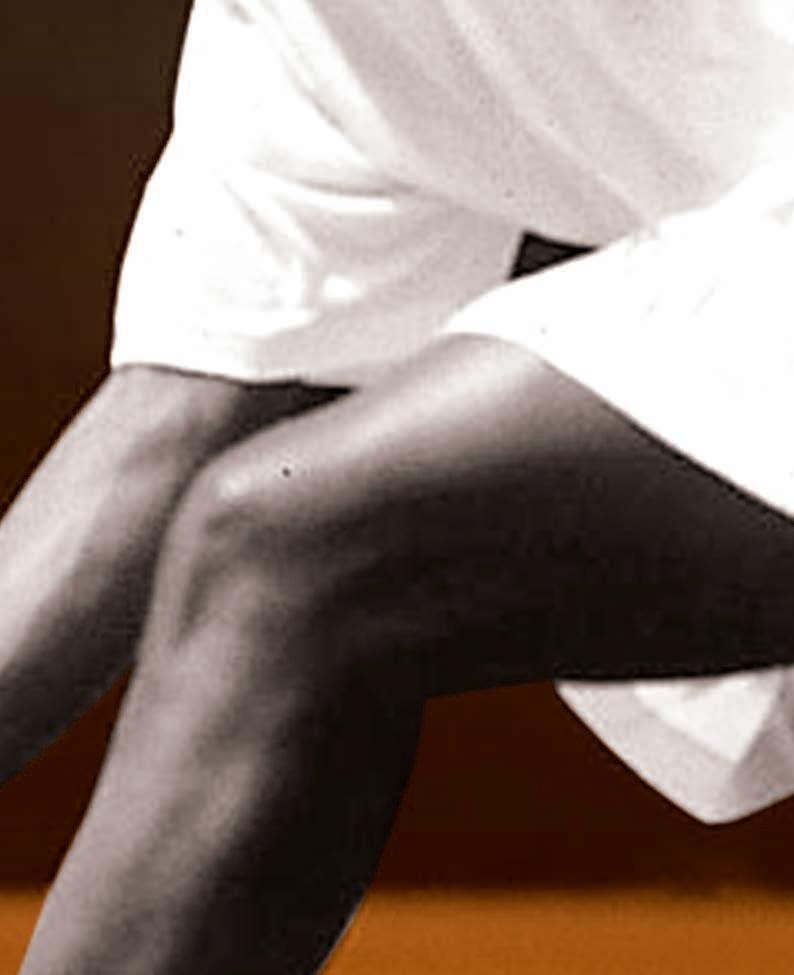

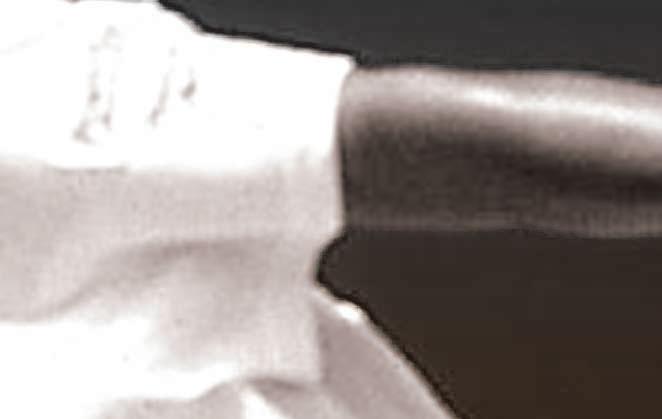
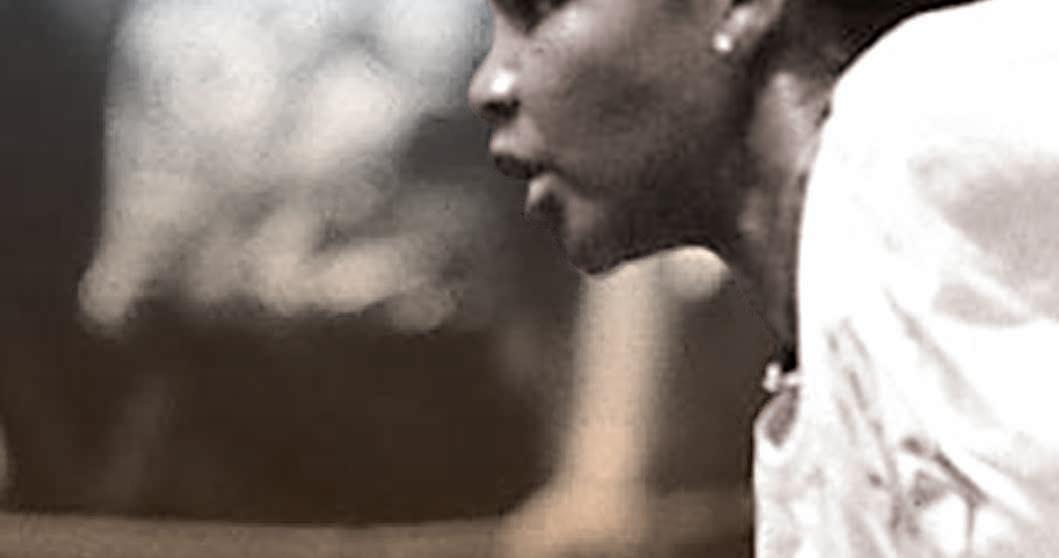

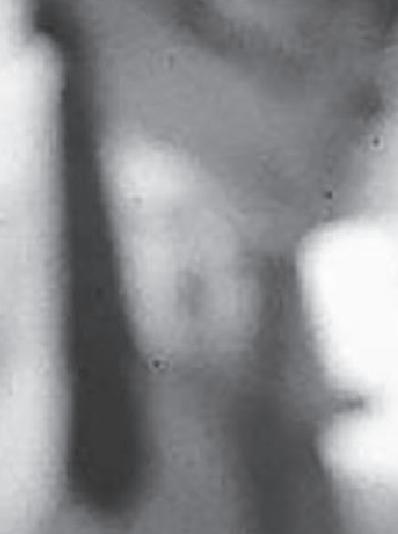
46
APRIL 2014
Lettering for the Cowgirls under former coach Ike Groce from 1981-1983, McNeil became the first athlete in OSU women’s tennis history to be named All-American when she earned the honor in 1982. She also won THREE BIG EIGHT CHAMPIONSHIPS during her time in Stillwater, including the NO. 1 SINGLES TITLE in 1983 and the NO. 1 DOUBLES TITLE in 1982 and 1983.

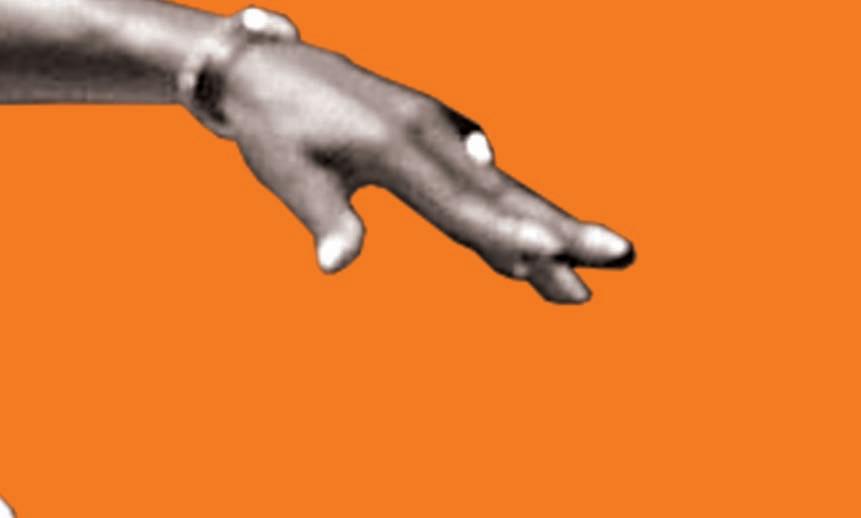

Despite only playing two seasons before becoming a professional player, McNeil’s name is still littered throughout the Oklahoma State record book, with her .835 (86-17) career singles winning percentage, RANKING NO. 1 IN SCHOOL HISTORY. Her 43 singles wins in both 1981-82 and 1982-83 are the most singles wins in a season by an OSU player.

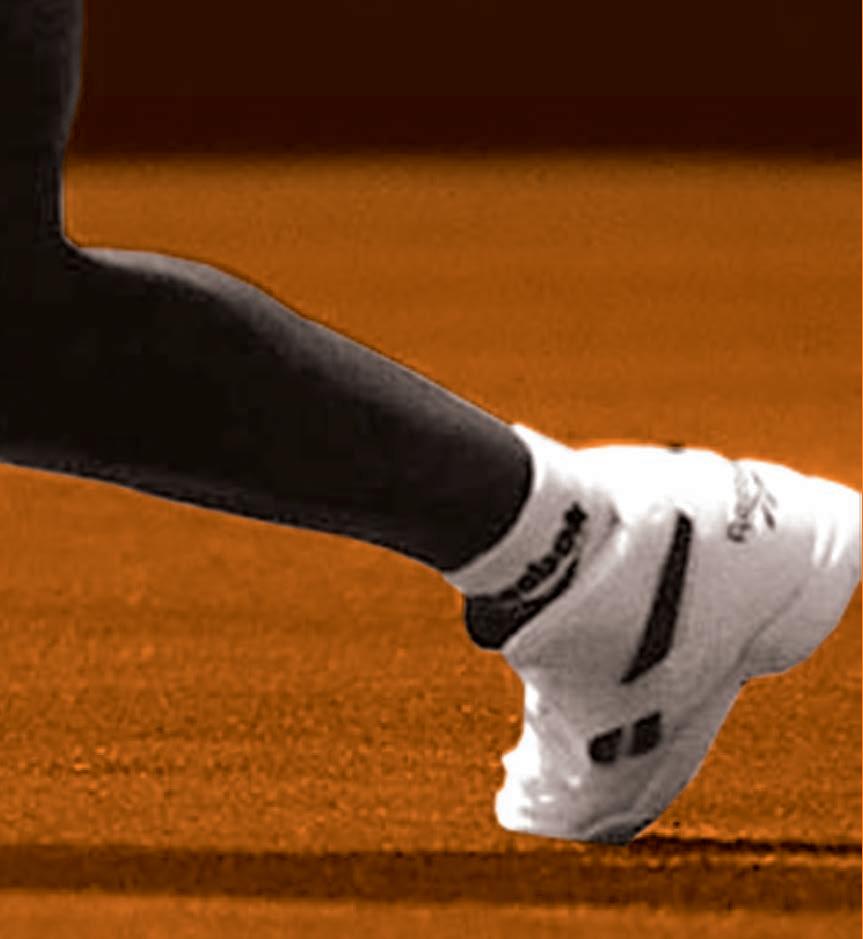



As impressive as her collegiate career was, McNeil went on to become a highly competitive professional player as well.



Her professional accomplishments included 12 Women’s Tennis Association tour singles titles and 40 career doubles titles , including the mixed doubles championship at the 1988 FRENCH OPEN. She had a shocking first-round victory over defending champion STEFFI GRAF at Wimbledon in 1994, where she eventually reached the semifinals. She upset CHRIS EVERT in the quarterfinals of the U.S. OPEN in 1987, where she reached the semifinals. McNeil also represented the United States for
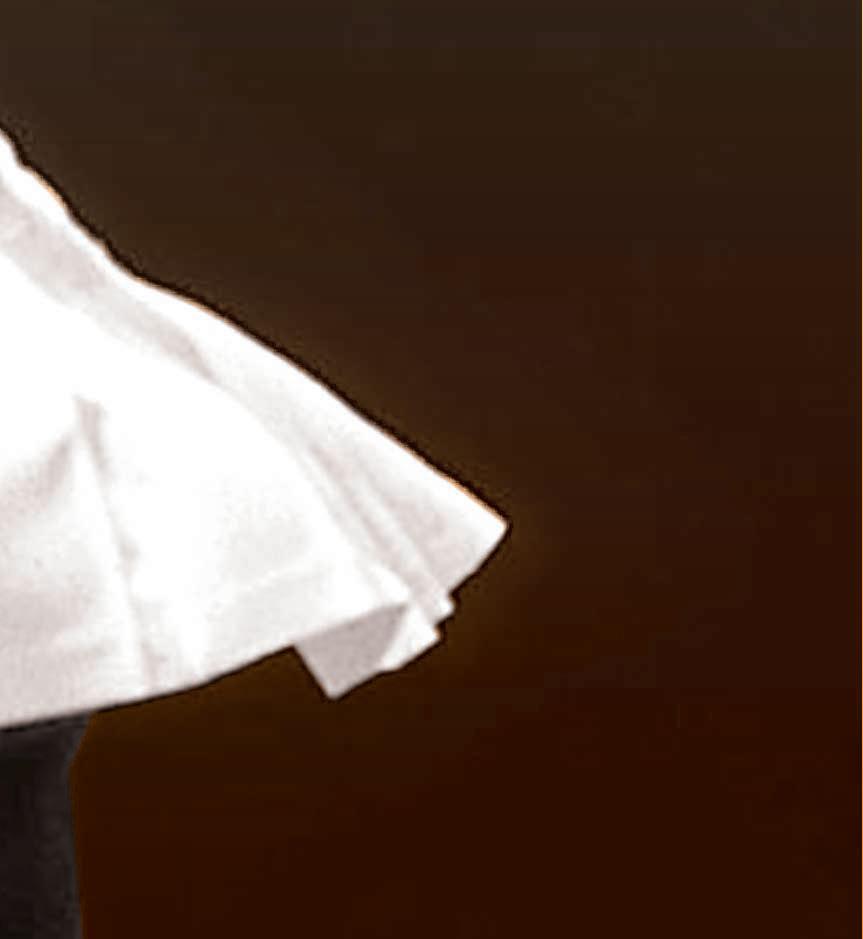


FEDERATION CUP, and she achieved career-high rankings of No. 8 in singles and No. 4 in doubles.
McNeil, who was born in San Diego and began playing tennis after moving to Houston when she was 10-years-old.
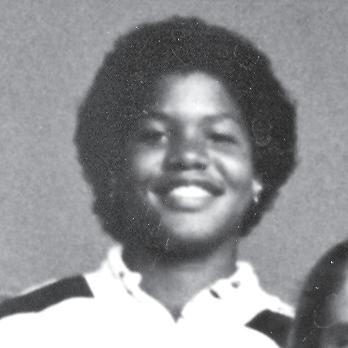
“MY MOM [DOROTHY M cNEIL] REALLY GOT ME STARTED IN TENNIS,” McNeil said. “It was out of her love that I actually got involved. My mom was taking lessons here (in Houston) when we moved here. She wanted to find a place to play, and she took a lesson from a gentleman by the name of John Wilkerson. During his lesson I was picking up balls for my mom, and he was challenging me. He said they had a free clinic on Thursday for all ages, so that’s pretty much how I got started. My first day at the clinic I met ZINA GARRISON , so it was her first day also. It’s kind of unique that we both started at the same time.”
That day had a profound impact on the rest of McNeil and Garrison’s lives. They have been lifelong friends since that meeting.
“It was an immediate friendship,” McNeil said. “We both fell in love with the game. John has a unique way of teaching. He makes it fun, he makes it challenging and he makes it funny. He makes the whole tennis experience a lot of fun. I think we both really enjoyed that first day. We came every Thursday, and then that summer we came every day. Over the summer we really fell in love with it. We started playing in tournaments, and I guess you can say the rest is history.”
47
Lori McNeil was the rst big name in Oklahoma State women’s tennis.
That friendship that began at MacGregor Park in Houston has come full circle as McNeil is the Director of Tennis at the Zina Garrison Tennis Academy in Houston, where Wilkerson also now works as the Senior Director of Tennis.
“ZINA STARTED (THE TENNIS ACADEMY) — IT WAS HER VISION,” McNEIL SAID. “After we went o and played professional tennis, so many girls that we grew up with in the program were successful. They were doctors and lawyers.
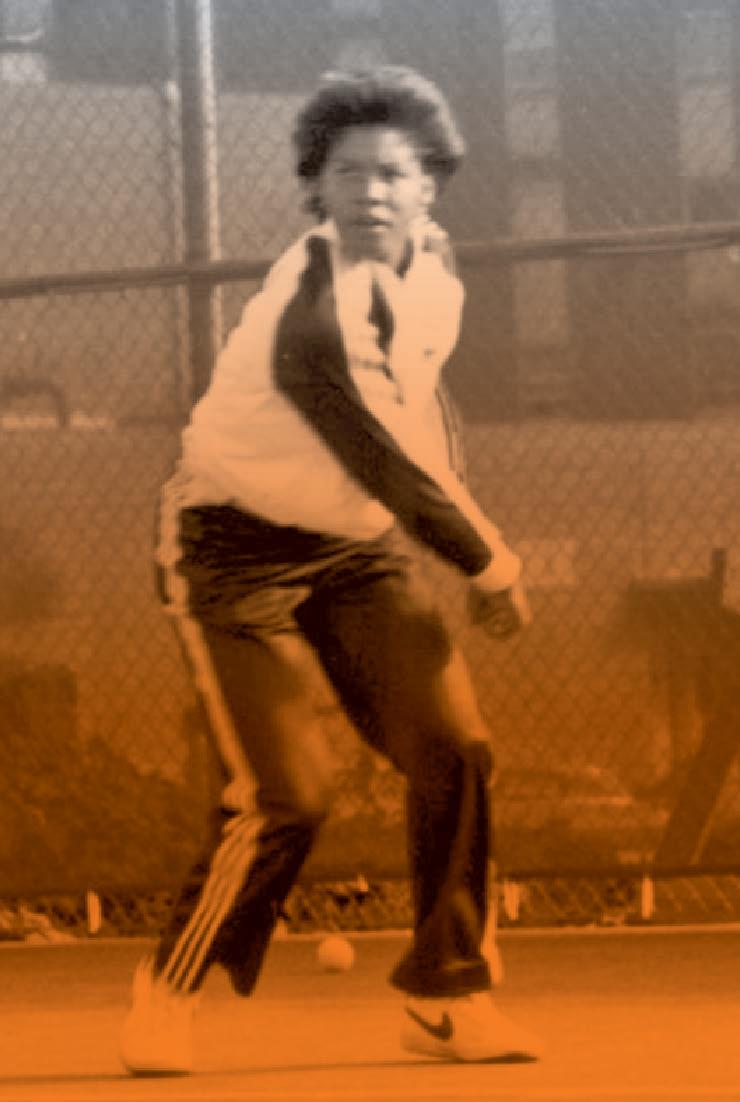
McNeil’s path didn’t immediately lead her back home to Houston after her playing career, though. She spent more than a decade working with some of the best athletes in the sport. She built a thoroughly impressive coaching resume that includes working as an ASSISTANT COACH OF THE U. S. OLYMPIC WOMEN’S TENNIS TEAM in 2004 and 2008, coaching the women’s team in the WORLD UNIVERSITY GAMES in 2005,
We thought it was unique that everybody that came out was very successful, and we kind of wanted to go back and try to recreate that. Zina came up with it 20 years ago.
“It’s pretty much a nonprofit program where all the kids can play every day for free. It’s run by donations and we have a board. We teach kids for free. The only thing they have to have is a baseball cap. We supply everything else: racquets, tutoring, mentoring. And we have programs for them. We want to help them compete. We don’t just want to teach them tennis, but help them become really productive citizens in whatever they choose to do, but we’re doing it through tennis. We have novice kids, from 4 years of age to 17, obviously at di erent times. We do that for free two times a week. I just think that we’re fortunate in our jobs, we’re fortunate to be able to continue to work with kids for no cost. I think that’s a huge asset to the community in Houston.”
working as a HIGH PERFORMANCE COACH for the UNITED STATES TENNIS ASSOCIATION from 2004-2012, working for three years at the JUNIOR TENNIS CHAMPIONS CENTER in College Park, Md., and serving for three years as a PERSONAL COACH FOR AMANDA COETZER
Her prestigious position at the USTA, which McNeil held prior to her current role, wasn’t enough to keep her from going home. After talking with Garrison, she knew she wanted to return to Houston and pass along what had been taught to her — and that’s exactly what she did, starting at the Zina Garrison Tennis Academy in July 2012.
“We had been talking,” McNeil said. “We’d been staying in touch. I’d been working with the USTA for about 10 years, and I knew at some point I wanted to get back to my family in Houston and — somewhere where I’d have the opportunity to work with John and Zina and just apply the things I’d learned on my own as a coach along with the things I learned from John, every day.”
It’s a decision she’s glad she made, saying her favorite part of her job is watching the kids she works with grow up.
“I THINK THAT’S A GREAT REWARD, AND KNOWING THAT YOU HAVE SOME KIND OF IMPACT IN HOW THEY’RE TURNING OUT, NOT ONLY AS A TENNIS PLAYER, BUT ALSO AS A PERSON,” McNEIL SAID. “I THINK THAT’S THE GREATEST REWARD.”
McNeil has received several honors for her work as a mentor and athlete, including the WTA MENTOR APPRECIATION AWARD in 2006, an induction into the INTERCOLLEGIATE TENNIS ASSOCIATION WOMEN’S HALL OF FAME in Williamsburg, Va., an induction into the TEXAS TENNIS HALL OF FAME in 2000 and an induction into the TEXAS BLACK SPORTS HALL OF FAME in December 2012.
There’s no doubt that a mentor and coach with McNeil’s credentials has a dramatic impact on the personal and athletic lives of the children with which she works. She acknowledges that she reached her levels of success due to the impact of the people in her life, and credits part of that to the people at Oklahoma State.
“It helped me mature as a person,” McNeil said. “THE WHOLE COLLEGE EXPERIENCE, IT ALLOWED ME TO GET TO KNOW WHO I WAS AS A
“WE DON’T JUST WANT TO TEACH THEM TENNIS, BUT HELP THEM BECOME REALLY PRODUCTIVE CITIZENS IN WHATEVER THEY CHOOSE TO DO, BUT WE’RE DOING IT THROUGH TENNIS.”
48
— LORI McNEIL
APRIL 2014
PERSON, not just as a tennis player. I met a lot of friends from other sports. It helped me grow up.”
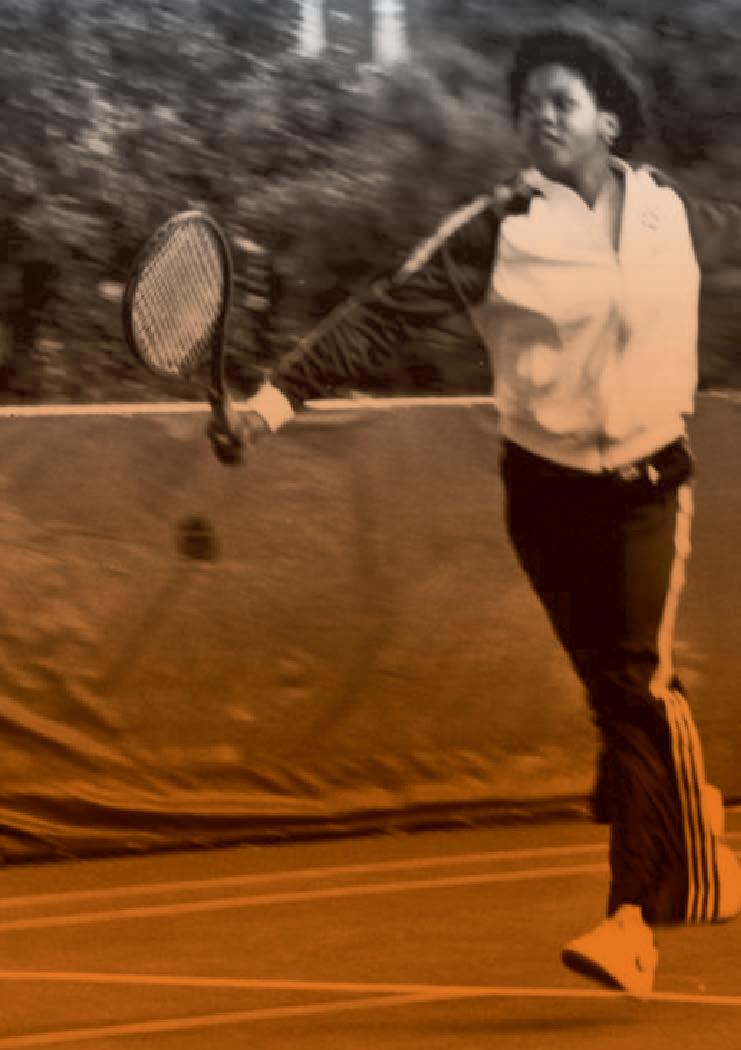

She also helped Cowgirl tennis grow up, becoming the first women’s tennis All-American in school history and helping the squad to two of its 11 straight Big Eight championships.
McNeil had no strong connections to Oklahoma State growing up and did not expect to attend college in Stillwater.
“I graduated in ’81; Zina graduated in ’82,” McNeil said. “I got letters, but I didn’t get a lot of o ers because a lot of colleges assumed that Zina and I were in the same grade. We were the same age, but we weren’t in the same grade. I don’t know how (former OSU women’s tennis coach) IKE GROCE found out. I talked to a couple of schools and somehow Ike Groce reached out to me through another gentleman by the name of HAROLD BAILEY, who is living here in Houston. So he had Harold come over and talk to me and tell me a little bit about Oklahoma State. Bailey, of course, is a former OSU quarterback.
“I took a visit in the summer, and I liked Coach Groce’s style. He had a lot of enthusiasm and passion and some of the qualities that I really enjoyed with John Wilkerson as my coach. He had the passion and enthusiasm and he was a great competitor. I love those qualities, and when I took a visit at the school, I really liked Stillwater. It was a nice experience. Coming from Houston, Stillwater is really small and the people were really nice to me. I kind of fell in love the way everyone welcomed me on campus.”
The next two years in Stillwater marked a time in her life she looks back on fondly and gave her many fun memories.
“I was really close with all the girls on the team and even the guys’ team,” McNeil said. “We had this green van. We called it ‘THE GREEN MACHINE.’ You have to remember it was the ‘80s. We had this van and it had nothing to do with colors of our school, but we called it ‘The Green Machine.’ It would always make me laugh when I would see pictures. It looks like something out of the ‘70s, looking at it now. It was great. It was fun.
“We had a lot of great trips. Coach Groce would always make it fun. Usually when we won, we always had big dinners. He and the men’s coach (JAMES) WADLEY, had these cabins on the lake, and we would always go there after Big Eights or after the championship and celebrate. He always loaded the grills with steak and fish and things like that. I HAVE GREAT MEMORIES OF OSU.”
McNeil has kept up with the Oklahoma State tennis program since her playing days ended and still follows Cowboy and Cowgirl athletics.
“I know the women’s tennis coach [CHRIS YOUNG] now,” McNeil said. “I knew the one before [JULIUS LUBICZMAJEWSKI] , also. I came a couple times. I went to a football game when the stadium first opened, which was fun. I was friends with [former Cowgirl tennis assistant] JAMEA JACKSON . I saw a few former teammates there, so that was a lot of fun. I need to get back and see the tennis center and maybe catch a match.”
Although McNeil hasn’t made it back to see the Greenwood Tennis Center for herself, she is proud to have helped build the foundation for a program on the rise and to see the improvement of OSU tennis.
“I think it’s great,” McNeil said. “Anytime you see progress and anytime you can be a part of something at the beginning, it’s great. It’s great anytime you see growth.
I WATCHED OKLAHOMA STATE TENNIS GROW SO MUCH OVER THE YEARS, AND IT’S NICE THAT THEY’VE BEEN REWARDED WITH A FACILITY TO GO ALONG WITH THAT.”


There’s no doubt that the growth of Oklahoma State tennis today has roots in its first female All-American. McNeil seems to inspire growth wherever she goes, whether in athletic programs or the lives of the young people she mentors every day.
She credits her work today to those who did the same for her when she was younger, and has stayed true to her roots. Whether it’s taking pride in OSU tennis or working closely today with friends and mentors she has known since she was 10, McNeil is appreciative of what others have invested in her and makes every e ort to pass along what she has learned.
“It’s kind of ironic that we all are back working together; getting back to where I started; coming home to Houston,” McNeil said. “I THINK THAT’S SOMETHING I’M REALLY PROUD OF, THAT WE’RE ABLE TO HELP KIDS IN THE WAY THAT I WAS HELPED. Giving back in that way is something I’m most proud of — coming back to Houston in the community that I grew up in and serving other kids in the way that the community served me.”
49
They declare jobs finished only after they are proud of the result. Their personal standards are higher than most, which is why their successes are also greater.
MORE THAN 90,000 $1 BILLION
loyal and true Cowboys have combined to exceed for Branding Success : The Campaign for Oklahoma State University. But the state’s most successful higher-education campaign continues until Dec. 31, 2014.
OUR JOB ISN’T COMPLETE. THERE IS STILL SO MUCH TO DO OVER THE NEXT YEAR.
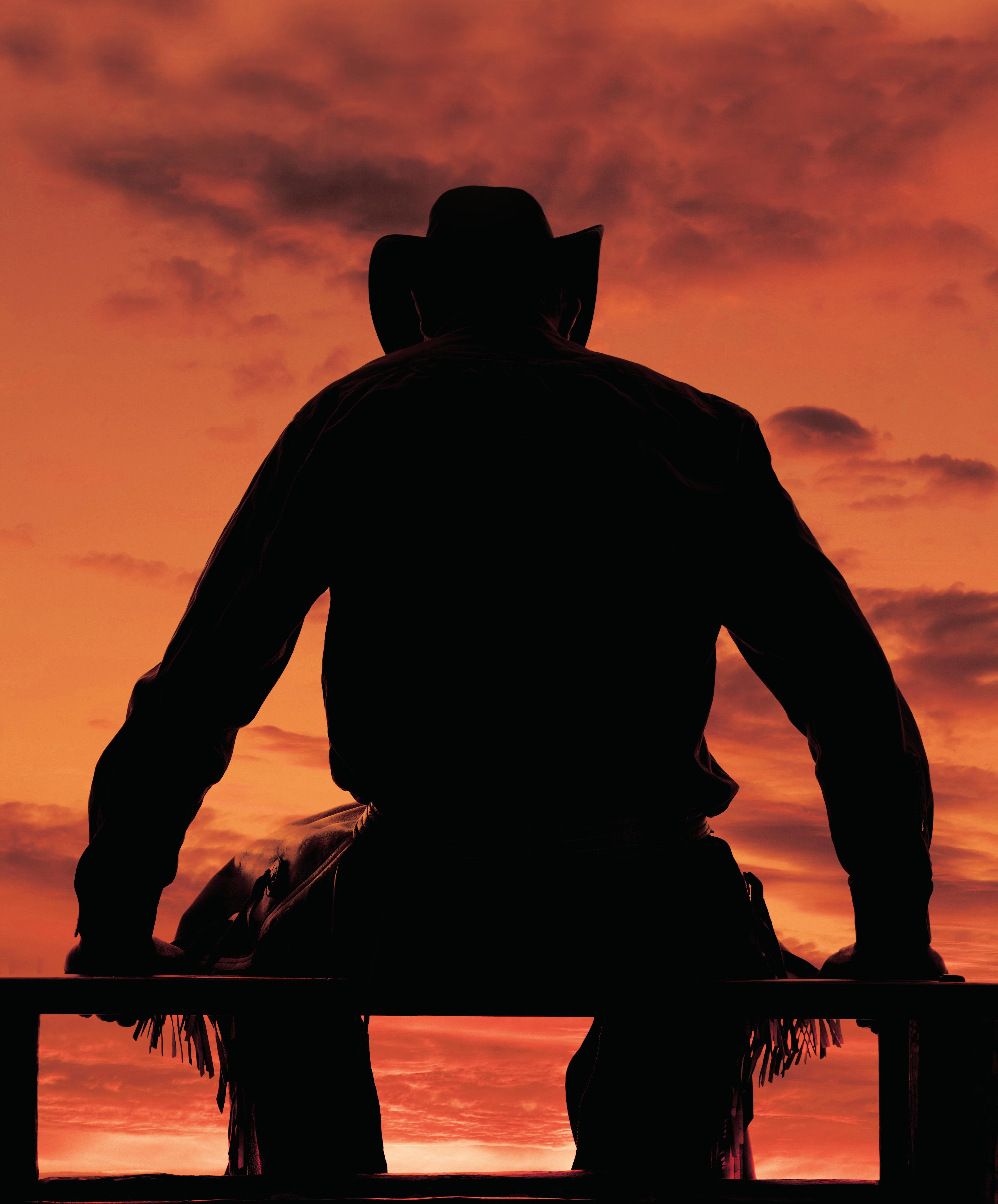


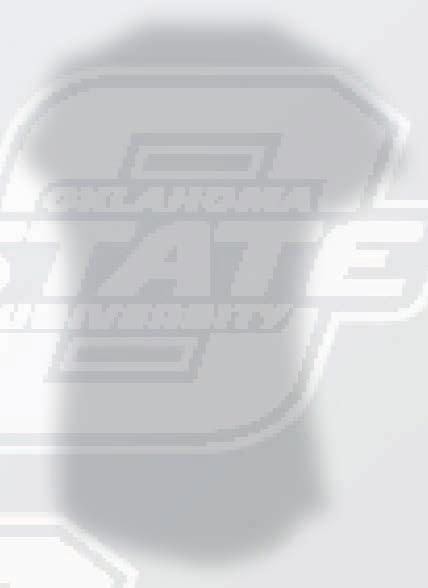
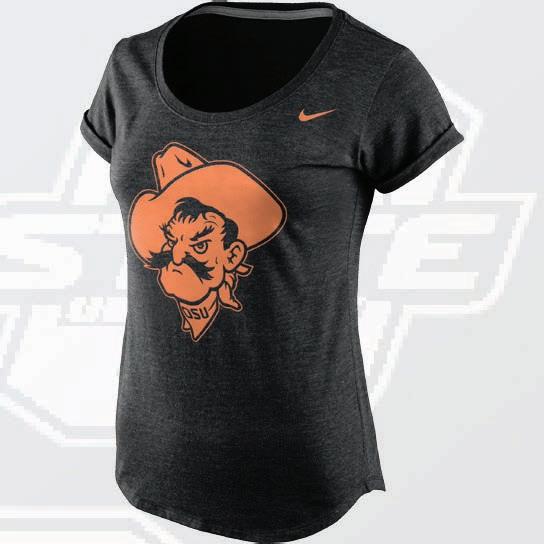
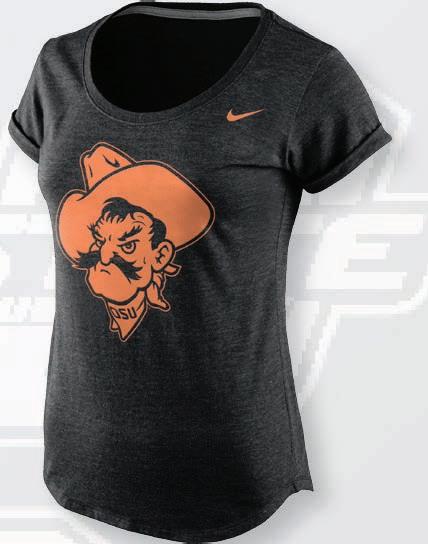


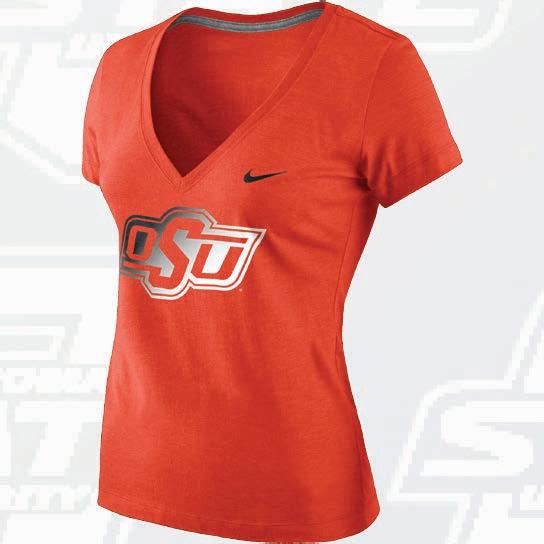
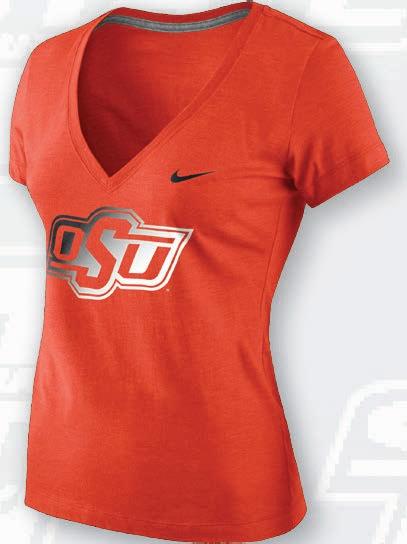

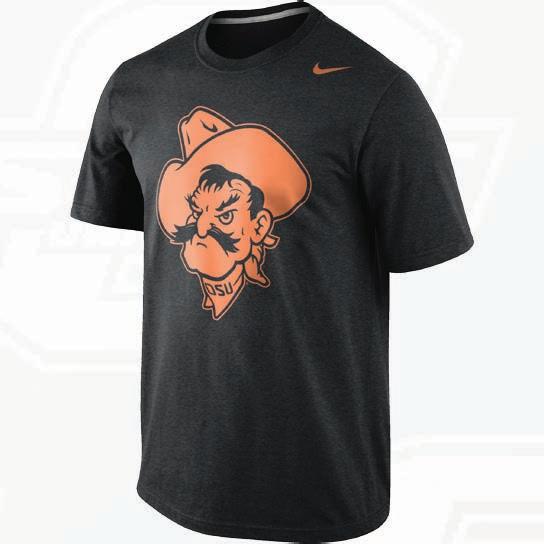
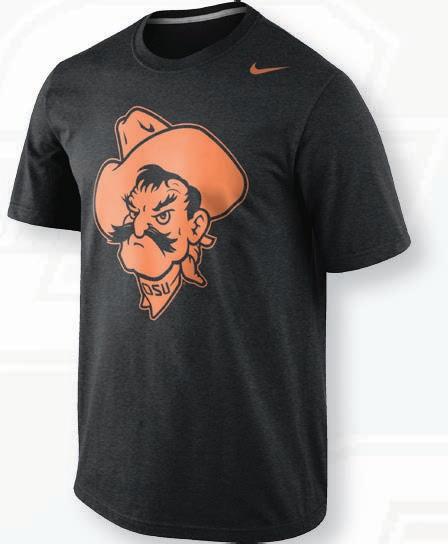

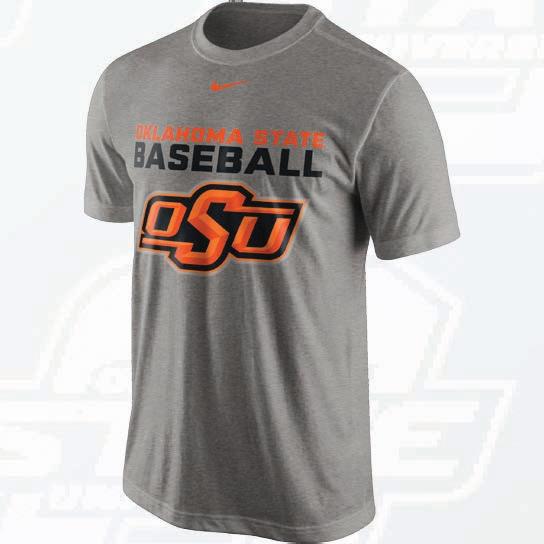
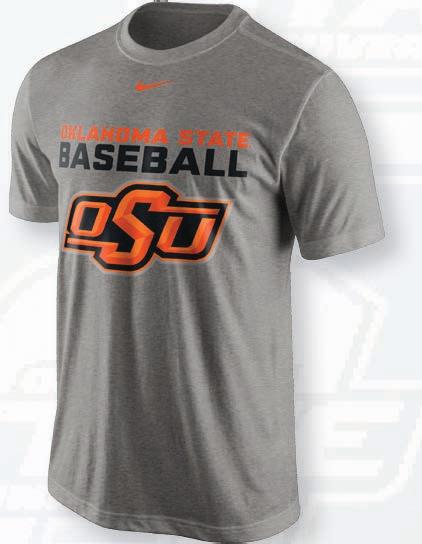

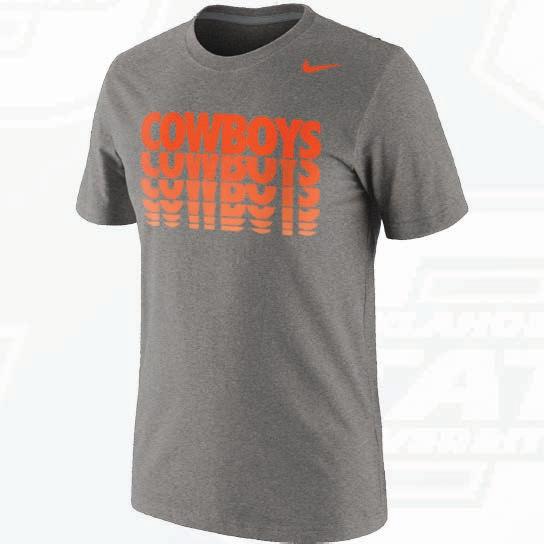
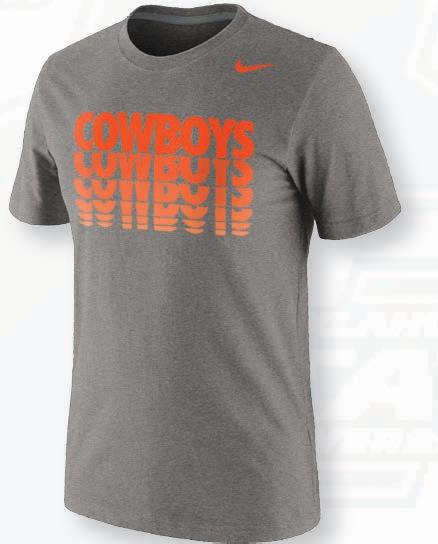

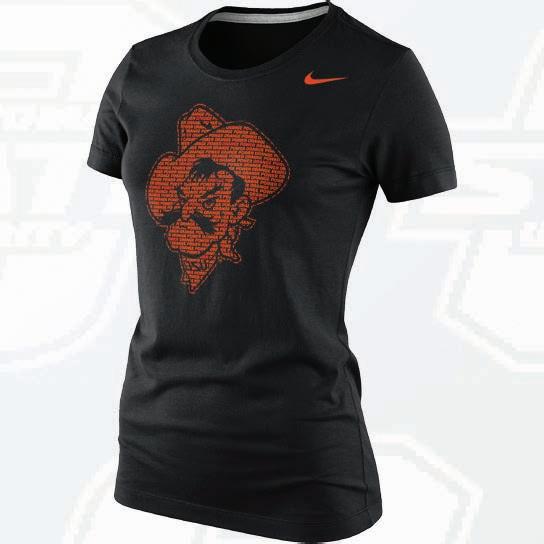
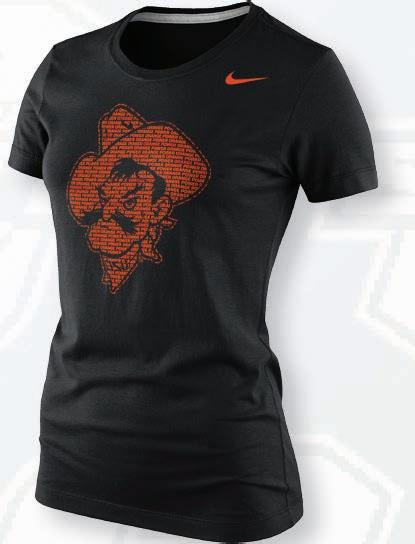

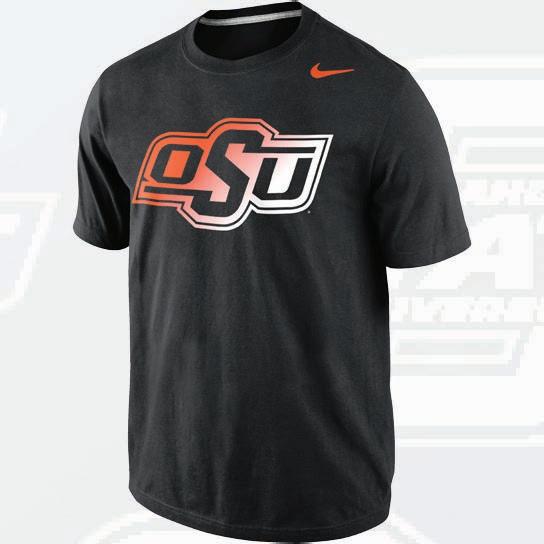
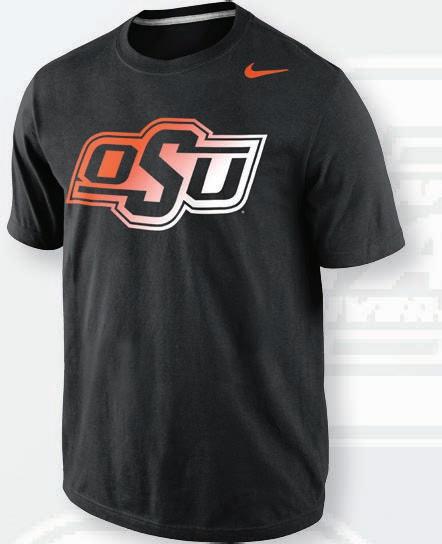








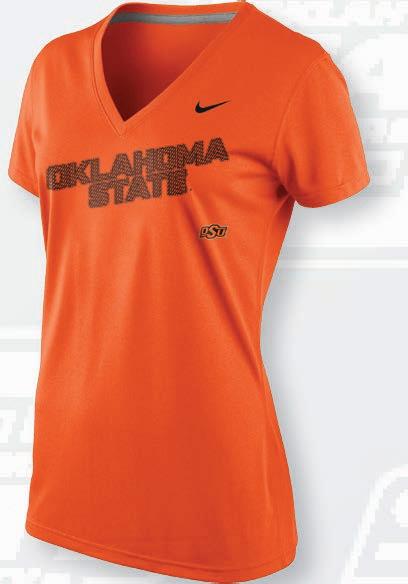






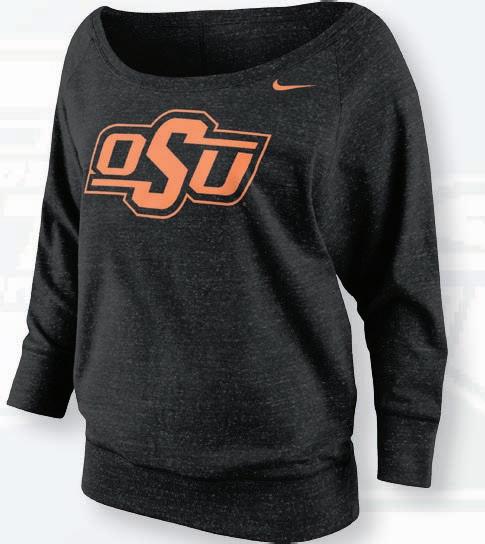




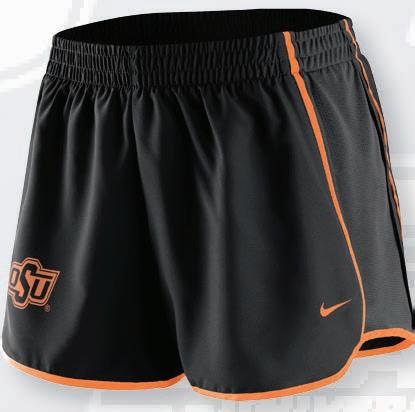
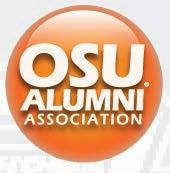
A B C E B D F G H I J
LET’S GET THIS OUT OF THE WAY AT THE BEGINNING. THERE’S NO WAY TO SUGARCOAT IT. EVEN IF OKLAHOMA STATE BASKETBALL FANS DON’T LIKE IT, AND SOME MAY EVEN CONSIDER IT AN ACT OF TREASON, IT’S TRUE. LEE MANZER IS FRIENDS WITH SOME OF THE OFFICIALS WHO HAVE CALLED OSU BASKETBALL GAMES OVER THE PAST 30 YEARS.

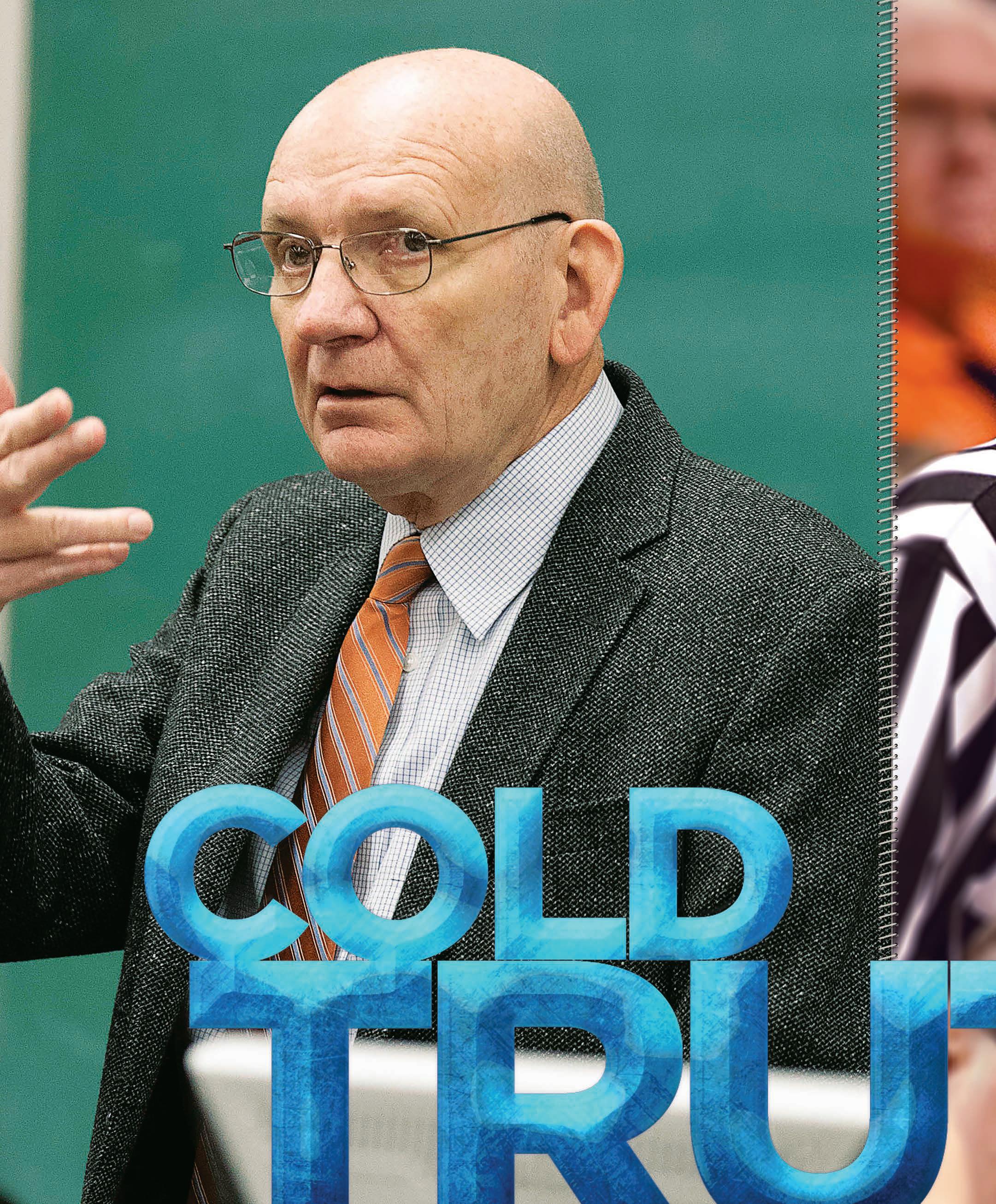
52
APRIL 2014
WHAT?
One of Oklahoma State’s most beloved figures, who has been wearing his orange proudly since he first set foot on campus as a freshman in 1959, not only speaks to those who have dared to blow their whistles against the Cowboys and Cowgirls but also claims to be friendly with them?

That’s almost as sacrilegious as Pistol Pete giving his approval for Big 12 o cials to give the Gallagher-Iba Arena crowd a technical foul for being too loud. But then, Manzer probably joins OSU’s iconic mascot as one of the most recognizable faces on the Stillwater campus.
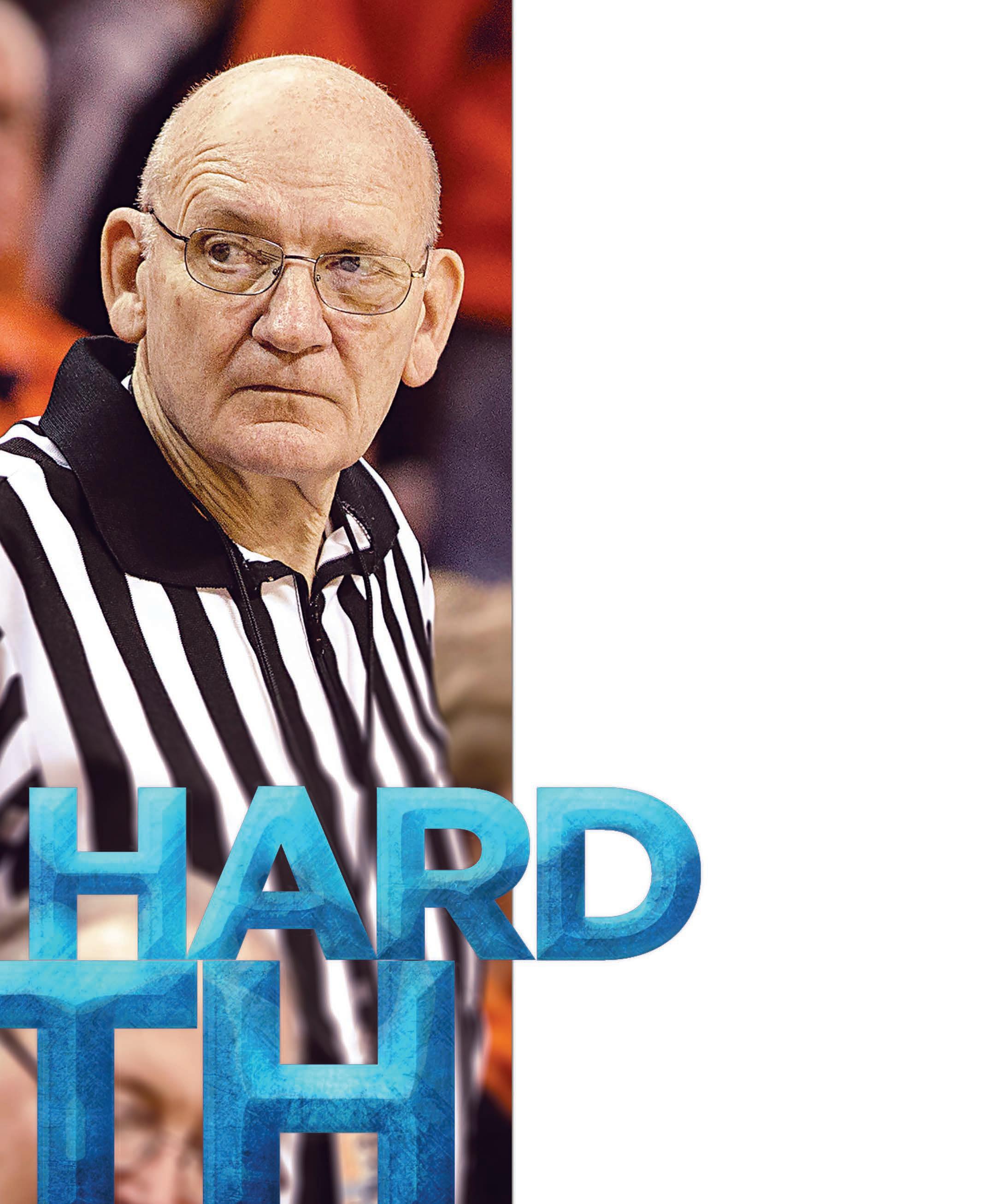 TUSH AND PHOTOGRAPHY BY A BY BRUCE WATERFIELD / BASKETBALL AND GARY LAWSON / CLASSROOM
AND
TUSH AND PHOTOGRAPHY BY A BY BRUCE WATERFIELD / BASKETBALL AND GARY LAWSON / CLASSROOM
AND
53
STORY BY TERRY
A SELF-PROFESSED NUMBERS COUNTER
In addition to being a part of the OSU business school’s faculty for nearly 40 years, Manzer has been front and center at the courtside table for Cowboys basketball games since the mid-1980s, getting an up-close look at teams coached by Paul Hansen , Leonard Hamilton , Eddie Sutton , Sean Sutton and current head coach Travis Ford
The 73-year-old Manzer is best known as a longtime professor of marketing in the Spears School of Business. He has taught more than 35,000 students during his college teaching career that began in 1970. Since 1975, when he returned to OSU after a short stint at Memphis State University, Manzer has o ced in the business building at the corners of Hester Street and Morrill Avenue.
Manzer enjoys teaching as much today as he did when he started, and it’s evident from the former students who keep in touch with him after all these years.
“THERE’S HARDLY ANY PLACE THAT I GO THAT SOMEONE DOESN’T RECOGNIZE ME. There are people who stop me and say, ‘I’ll never forget that story you told 20 years ago,” says Manzer, who earned a bachelor’s degree in chemistry in 1965, an MBA a year later and his doctorate in 1974, all from OSU.
He has received more than 20 teaching awards over the years. In 2010, he was inducted into the OKLAHOMA HIGHER EDUCATION HALL OF FAME
The OSU business school is celebrating its 100th anniversary in 2014 , and later in the year will be recognizing the “SPEARS SCHOOL TRIBUTES: 100 FOR 100,” honoring 100 business school graduates who exemplify the OSU and Spears School spirit. MANZER WAS CHOSEN AS ONE OF THE “100 FOR 100,” receiving numerous nominations from his past students.
In addition to teaching OSU business students for nearly 40 years, the professor of marketing has made a lasting impression on thousands of successful business leaders during the hundreds of professional development seminars he has led through OSU’s Center for Executive and Professional Development.
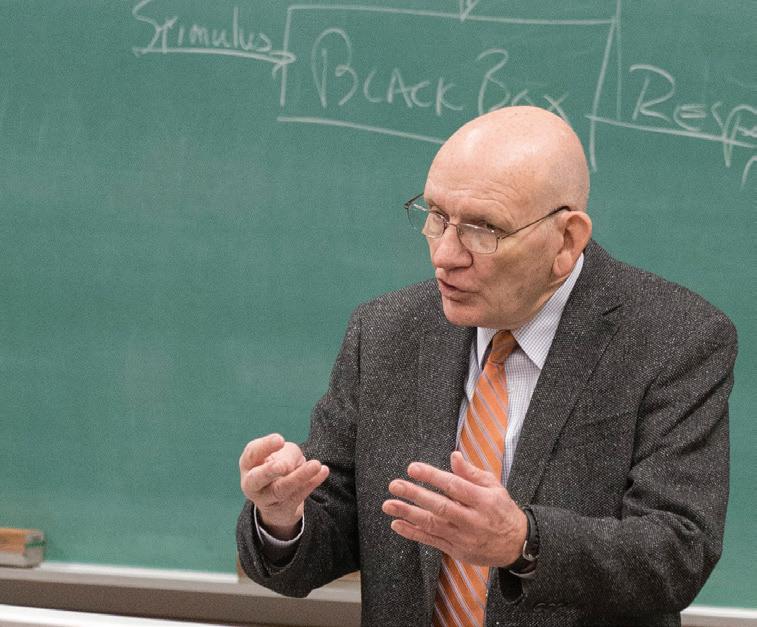
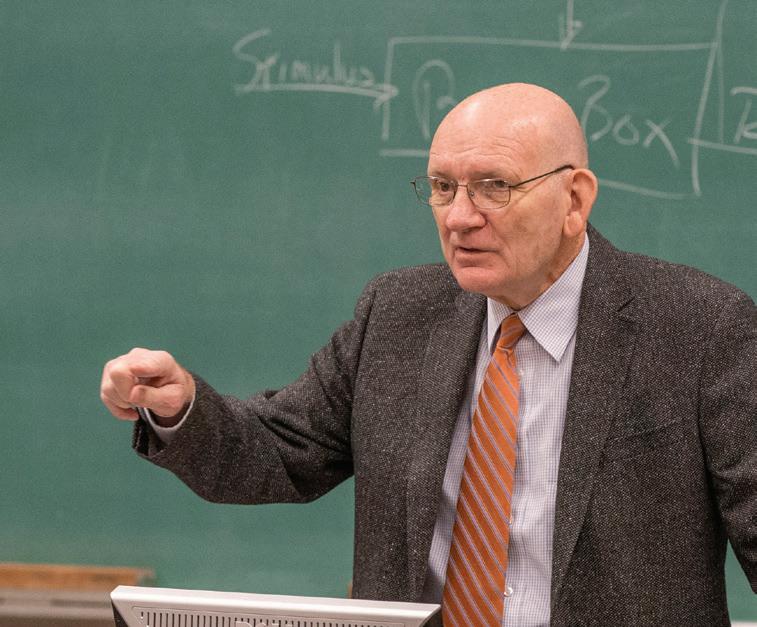
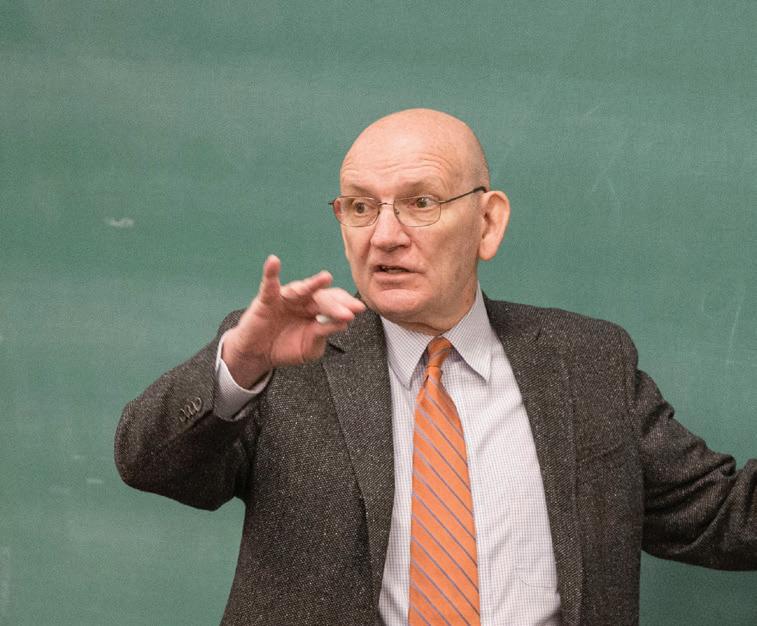
A self-professed numbers counter who prefers to record all of his students grades in a gradebook — he has every one of the traditional green books for each semester since 1975 — it seemed natural for the Oklahoma State sports information sta to ask Manzer’s help in keeping statistics.
Manzer first joined the football stat crew in 1984 and began keeping statistics for basketball games the following year. He eventually was asked to become the o cial scorer for Cowboy basketball games upon the retirement of Pat Hofler, who had been the scorekeeper for 40 years, dating back to Henry Iba’s days as head coach.
It’s easy to spot Manzer from anywhere in Gallagher-Iba Arena with his blackand-white stripped referee shirt as the o cial scorekeeper for OSU men’s basketball games for more than 25 years. He is joined at “THE TABLE” by two other veterans — clock operator Kent Bunker and shot clock operator Pat Murphy — to give Oklahoma State one of the most experienced groups in the Big 12.
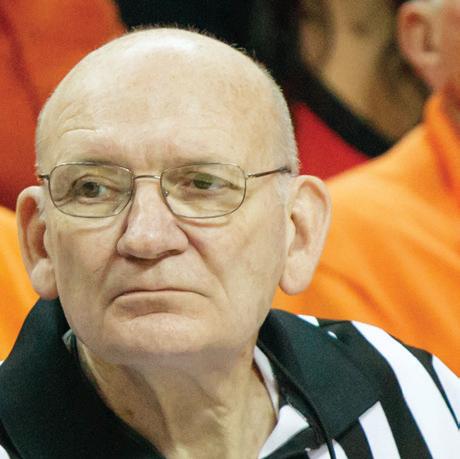
54
APRIL 2014
“There have been several o cials over the years say that we are the best table in the Big 12,” said Manzer of the OSU crew, which has also been asked to work the Big 12 Tournament and NCAA Regional games in the past.
It would be hard to argue with Manzer, who has seen and heard a lot during his many years at the table. He was front and center the night Bryant “Big Country” Reeves banked a 45-foot shot o the backboard into the basket to tie Missouri as the buzzer sounded sending the game into overtime, where the Cowboys eventually won 77–73 on Feb. 24, 1993.
He has been privileged to see such standouts as Reeves , Randy Rutherford , Desmond Mason Tony Allen and Joey Graham excel at the game he grew up playing as a boy in Hominy, Okla.
In addition, he had the best seat in the house while his son, Bryndon , played for the Cowboys from 1992 to 1994.
While being the o cial scorekeeper has its privileges, it also requires a commitment that few realize. He shows up nearly an hour and a half prior to the opening tip and stays for nearly 30 minutes afterward. A typical game day includes meeting with the three o cials prior to the game.
“What’s interesting, and it’s something most people probably don’t realize, is that we get to know these guys. Some of them are our friends,” Manzer says. “The guys like DON DAILY and STEVE OLSON are friends, and when we go in before the game Steve gives me a big hug like we’re long, lost buddies.”
But it’s not always easy on Manzer, Bunker and Murphy, especially with nearly every game on television and the use of replays to review disputed calls. While they attempt to assist the o cials throughout the game, sometimes it appears the mistake is theirs when it’s really not.
“When the referees come over to us it appears that it’s our fault, but that’s not always the case,” he says. “A referee came to the table one day and kiddingly said, ‘I know it’s not your fault but I’m getting tired of getting booed.’ We just started laughing.”
Manzer, Bunker and Murphy get paid $45 per game, but they don’t do it for the money or to get seen on television.
“LEE JUST LOVES OSU. He did all his school work here, then went o to work in the world and then came back. THIS IS HOME TO HIM. THIS IS WHERE HE WANTS TO BE. HE HAS A REAL LOVE FOR OSU,” Bunker says.
The longtime Stillwater resident always enjoys it more when the scorebook shows the Cowboys with one more point than the opponent, but his job is to make sure the points, fouls and timeouts — remember, he’s a numbers counter — add up correctly.
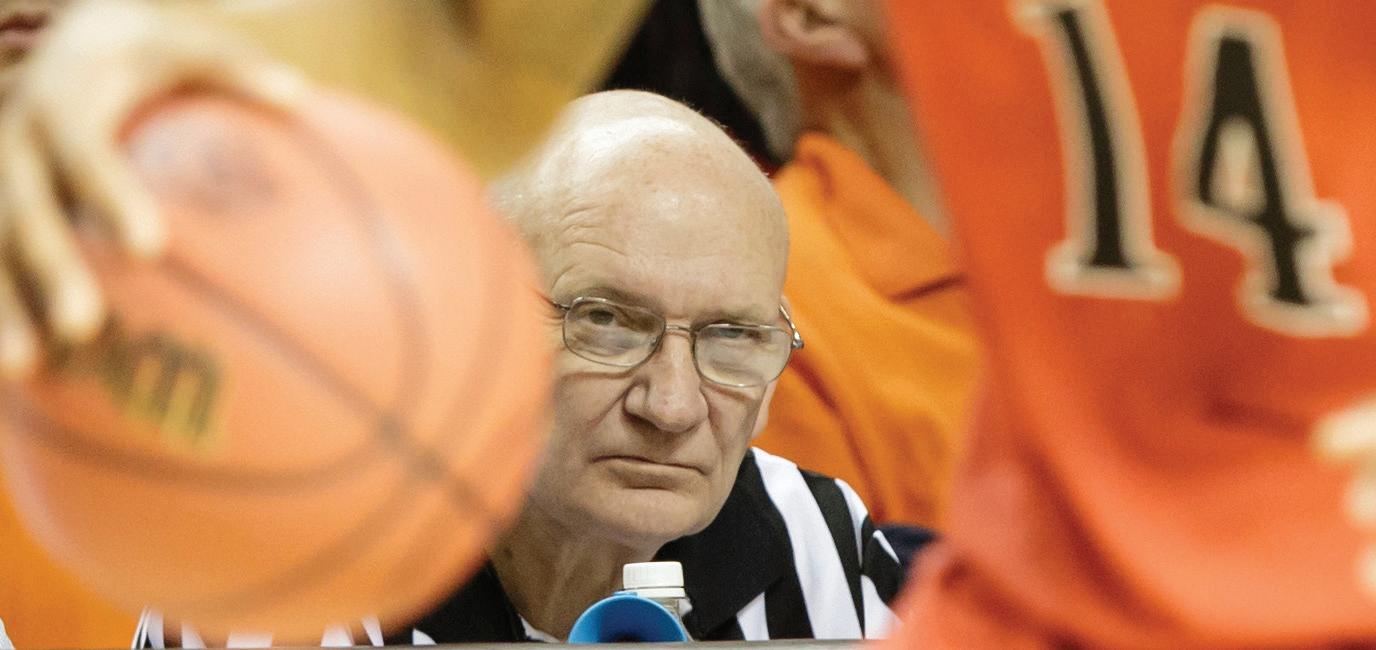
“I HAVE ENJOYED KEEPING THE SCOREBOOK. IT’S A GREAT OPPORTUNITY. I played ball and, of course, Bryndon played while I was doing this. That was a great joy,” Manzer says. “I’ll tell you what I enjoy the most, though. That’s being down there with Bunker and Murphy. It’s like when athletes quit playing, what do they say they miss the most? The guys. It’s the guys.”
Manzer is certainly one of the guys. Whether it be standing in front of a classroom of marketing students or making sure the numbers are correct in the scorebook, he’s right at home at OSU.
55
“… WE GET TO KNOW THESE GUYS. SOME OF THEM ARE OUR FRIENDS.”
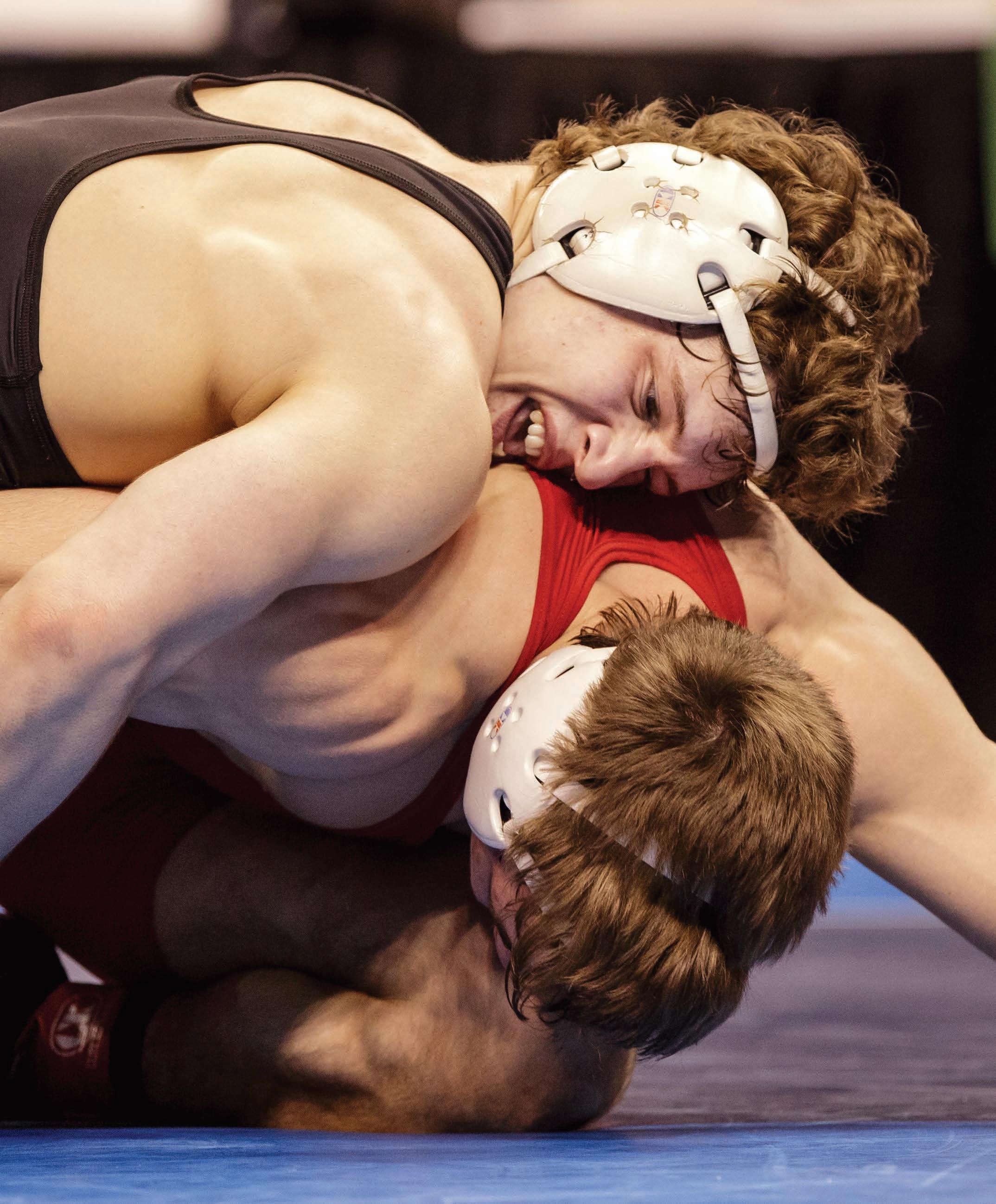

56
ALEX DIERINGER 157-POUND TITLE FIRST NATIONAL TITLE WITH A 13-4 MAJOR DECISION OVER DYLAN NESS OF MINNESOTA Perry, Dieringer Claim NCAA Titles THIRD-PLACE TEAM FINISH APRIL 2014
PHOTOGRAPHY BY GARY LAWSON
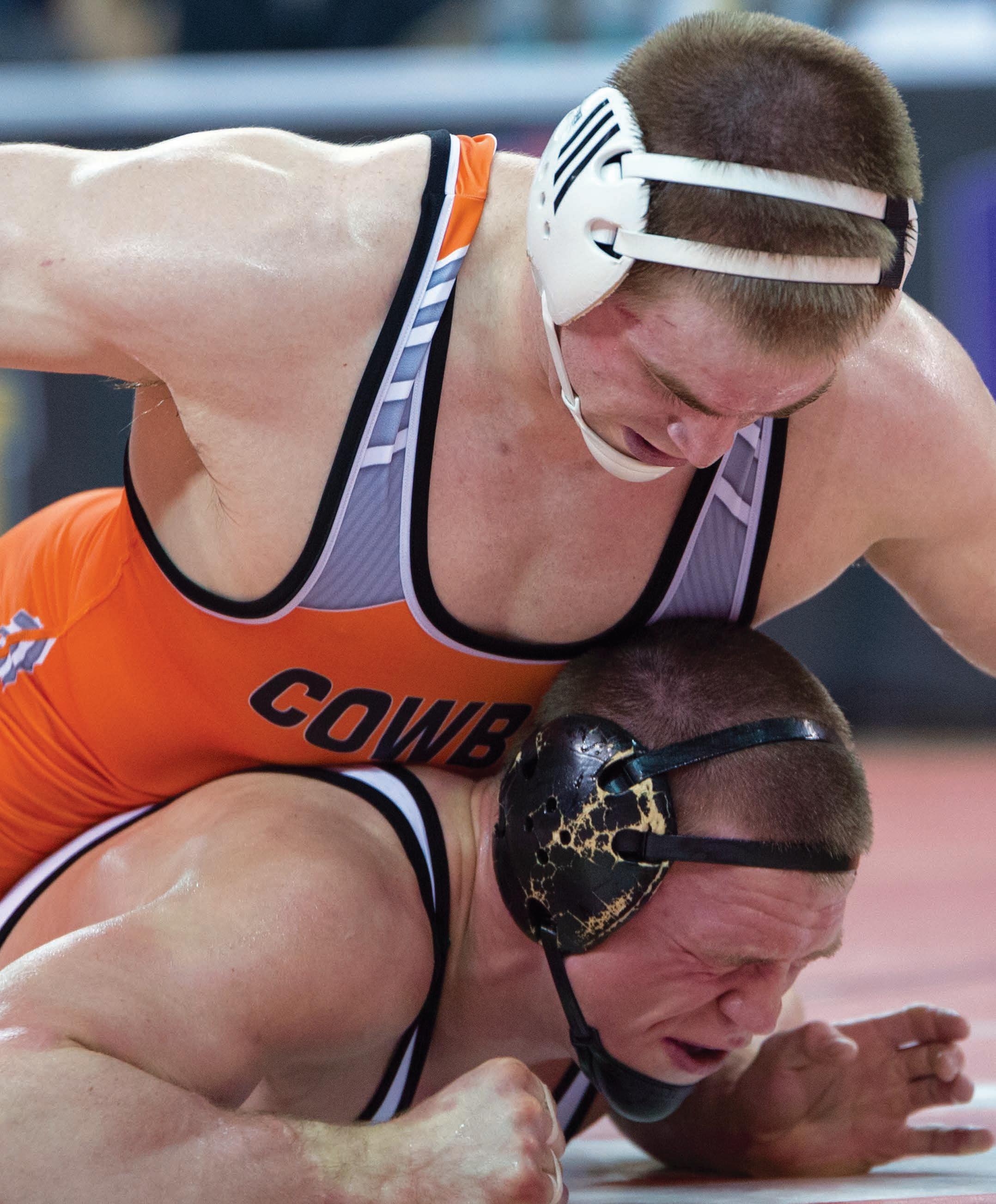

57
CHRIS PERRY 174-POUND TITLE SECOND-STRAIGHT NATIONAL TITLE WITH A 4-0 DECISION OVER OKLAHOMA’S ANDREW HOWE
PHOTOGRAPHY BY BRUCE WATERFIELD
NCAA Division I Women’s Golf Central Regional

APRIL 2014
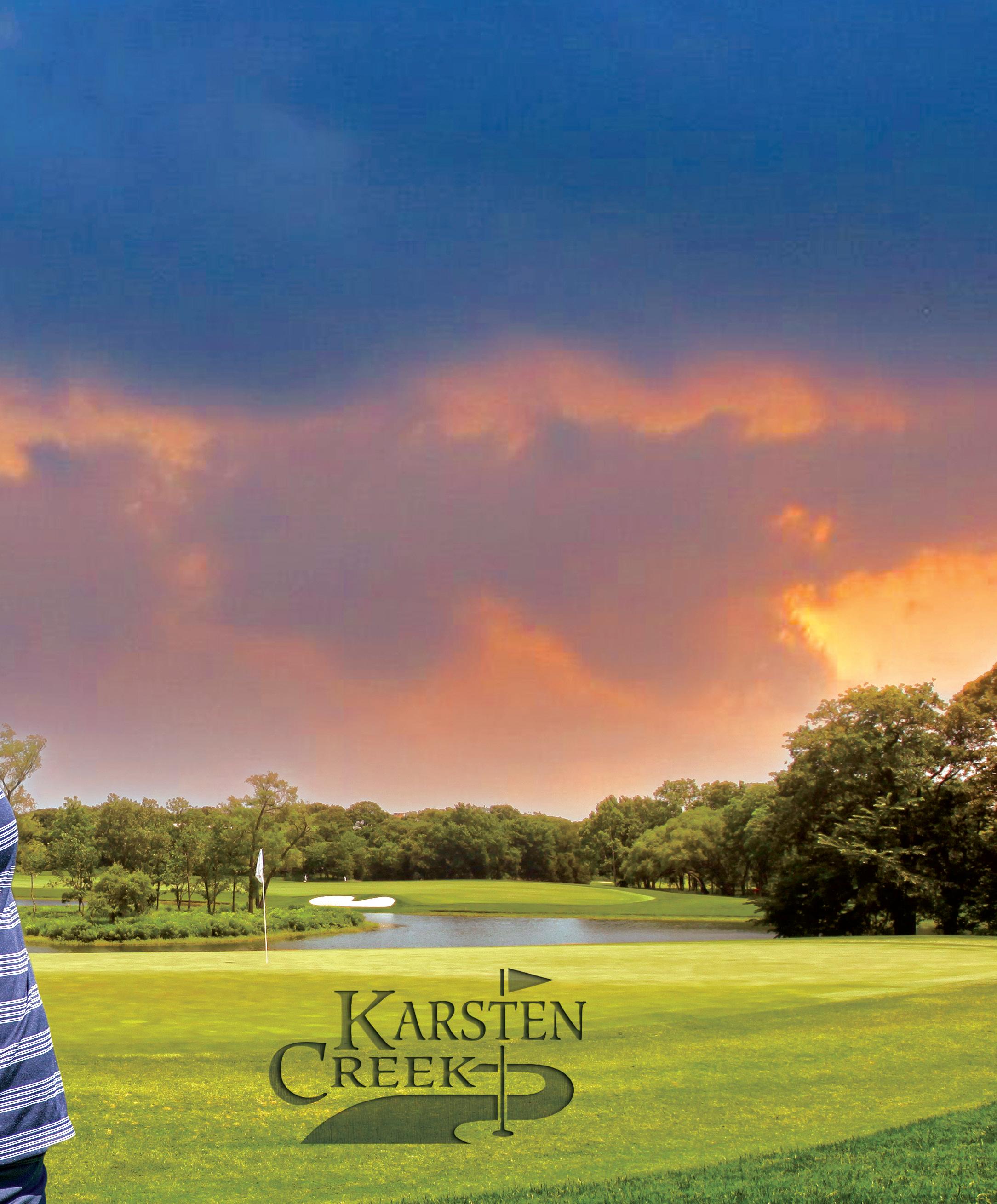
Karsten Creek Golf Club Stillwater, Okla. May 8–10, 2014 FREE ADMISSION
DONOVAN WALTON WAS WORRIED.
But this was different. Walton was entering unique and unfamiliar territory. He was an INCOMING FRESHMAN for coach Josh Holliday’s Oklahoma State Cowboys, AND HIS FATHER, ROB, JUST HAPPENED TO BE ON THE COACHING STAFF.


Along with the typical adjustments for a college freshman, Donovan was concerned about how his teammates would accept him, if jealousy and cries of nepotism would permeate the clubhouse.

That’s when Donovan drew on what he says is the best advice he’s ever received from his dad.











“DON’T WORRY ABOUT WHAT EVERYBODY ELSE IS THINKING — ONLY CONTROL WHAT YOU CAN CONTROL,”












Donovan said. “If you worry about what other people think — scouts or teammates or whatever — it’s gonna get in your head. Only control what you can, on and o the field. SO I JUST TRY TO PLAY FREE-MINDED AND PLAY AS HARD AS I CAN.”





As it turns out, Donovan had nothing to worry about. He remembers early on a couple of his new teammates welcoming him and letting him know they didn’t see him as “a daddy’s boy.” And any thought of those being hollow words were erased when Donovan took the field.

“Going into it, Donovan was concerned about the acceptance of his teammates,” Rob said. “But I think you earn respect on how you compete so as the fall went on, he’s diving, he’s making plays, he’s getting hits and you automatically get respect so you don’t worry about it from there.
“He’s a good competitor, and he’s got the respect of his coaches and his peers.”
“I have a lot of appreciation for my teammates,” Donovan said. “I had to come in here and gain their respect. They let me calm down and not worry about them getting mad if I’m getting playing time.
STORY BY WADE McWHORTER PORTRAIT BY BRUCE WATERFIELD


HE’D NEVER FELT UNCOMFORTABLE IN THE DUGOUT OR ON THE BASEBALL DIAMOND — IN FACT, IT’S WHERE HE FELT MOST AT HOME.
APRIL 2014
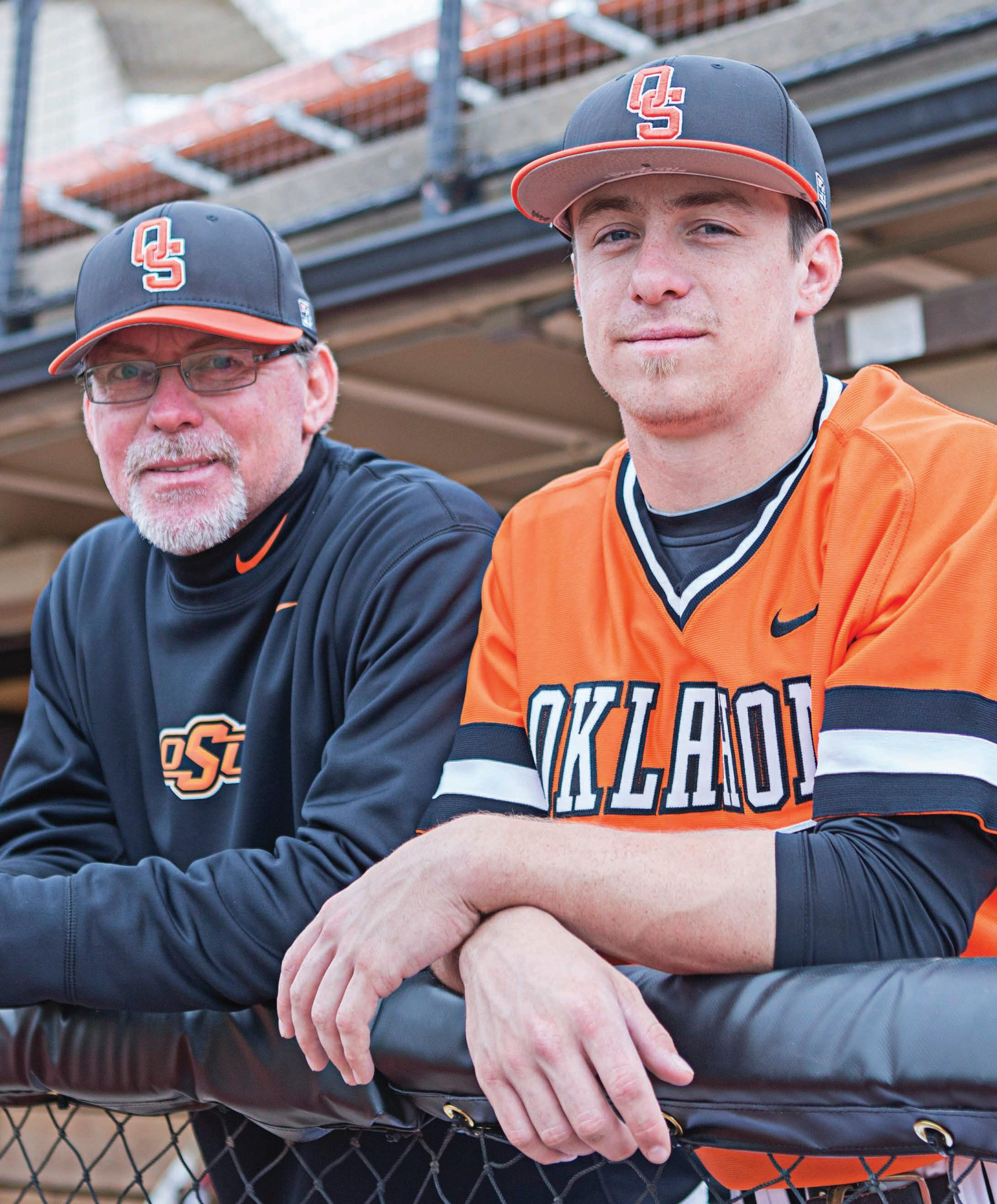

61
“It feels like I’m not even playing for my dad. They don’t see me as a kid whose dad is a coach.”
But while Donovan doesn’t want to be seen any di erently than the rest of his teammates, the fact is, Rob is one of his coaches — and that makes for a special situation that both father and son cherish.
And it helps make up for moments that Donovan and Rob never previously got to share.
With Rob on the coaching sta at Oral Roberts for most of Donovan’s life, first as an assistant then as the Golden Eagles’ head coach, he missed much of his son’s exploits on the field, from Little League to his becoming a star at Tulsa’s Bishop Kelley High School.
Now you could say the two are making up for that lost time.
“In this profession, I didn’t get to see him play very much,” Rob said. “The only times I’d see him were when he’d leave his practice and come over to ours; I didn’t get to see him play in a lot of games.
“Now getting to see him play every day is a luxury. To be able to talk to him and help him out is something that’s good for both of us.”
Added Donovan, “In middle school and high school, I rarely saw him — the person that was out there the most was my grandpa. Seeing him now, watching every one of my games, is a lot of fun. The best thing I get to hear every day is how much my teammates appreciate him and how much they learn from him. Hearing that from my teammates is just an awesome feeling.
“I give him all the thanks in the world because without him I wouldn’t be here.”
Never the biggest or strongest player on the field — he stands 5-foot-10, 174 pounds — Donovan began making a name for himself as a prep, both in the field and at the plate.
“Being a smaller guy, you have to wait to see his physicality,” Rob said. “He had game savvy. He could always pick up a ground ball, you knew he was gonna be a Division I defensive player, but was he going to be
physical enough to swing the bat? And then he started to square up guys really good — (Dylan) Bundy, (Archie) Bradley (former Oklahoma high school stars now in the pros) — and he’s getting hits o elite pitching.”
And if there was still any doubting Donovan’s skills, those were erased with his performance at a showcase tournament in Georgia during the summer before his senior year.
“That’s where you got an idea of what everybody else thinks of your son,” Rob said. “I know what I think. I’m pretty con-
up and going to the park every day and hanging out with the team and my pops.
“That’s really been my intentions — going to the park and having fun playing the game I love.
“It was tough because I wanted to play for my dad, but there were other big-time schools that wanted me. But when I made the choice to go to ORU, I knew it was the right one.”
As the story goes, however, Oral Roberts would not be Donovan’s college destination. When Josh Holliday was hired as the OSU head coach in June 2012, he convinced Rob to return to the place where he’d starred as a player and join the Cowboys’ coaching sta .
The question now was whether son would follow father to Stillwater — at least that was the question for Rob; for Donovan there was no doubt.
“I said, ‘We don’t know what they have at OSU, what their depth chart is or anything like that,’” Rob said. “(Donovan) said, ‘That’s not a worry. If I’ve got to be a role player my first year, I’ll do whatever it takes to get in there.’
“That goes back to being a team-guy first. His attitude was, ‘I’ll win a job.’ He trusted himself and was going to work as hard as he could to make it.”
fident, and I think I do a pretty good job of separating the dad and the player.
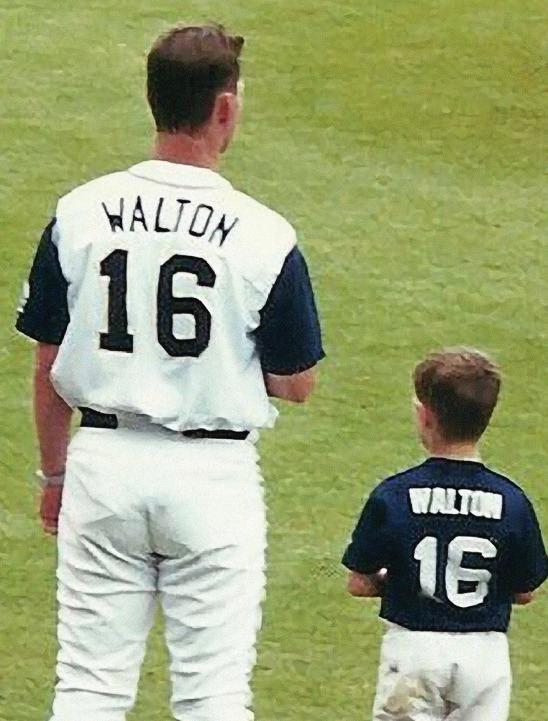
“After that tournament, he had 30 scholarship o ers. Tennessee said he could start at shortstop. He had a full ride to go to Baylor.”
“It hit me after the first couple of days of coaches calling me that ‘This is really happening — I’m gonna play college baseball. THIS IS WHAT I’VE BEEN WATCHING MY WHOLE LIFE, and now I get to do it!’” Donovan said.
Now the decision was where he would be doing it. He eventually chose Rob’s program at ORU, but the choice wasn’t as easy as you might think.
“I never really thought about playing for him until it got to the point of where I was going to go to college,” Donovan said. “Growing up, my whole life has been waking
For Holliday, Donovan was going to play for a head coach who shared his unique experience. Josh spent his OSU career playing for his father, Tom, who was the Cowboys’ head coach. And it’s something of a trend at OSU, with a number of father-son, coach-player combinations — EDDIE AND SEAN AND SCOTT SUTTON, HENRY AND MOE IBA, GARY AND ROCKY WARD, LABRON HARRIS AND LABRON HARRIS JR. — prevalent in OSU athletics history.
“I wouldn’t say it’s always easy, but I think the pros definitely outweigh the challenges,” Holliday said. “(Donovan) is a baseball player and a competitor, and that’s the first thing you have to be to make that adjustment. The challenges lie at times when the coach-father has to discipline the player-teammate of the son and the
62
APRIL 2014
tugging of your heart as a teammate when you see a fellow player at odds or frustrated or uneasy about their relationship with your father. THAT’S A TOUGH DYNAMIC BECAUSE THAT AFFECTS THE TEAM. You respect your teammate and care about him, and you respect your coach, your father, and to see people at odds with one another is a little uncomfortable.
“That’s where the kid and his ability to be a strong member of the team and make good decisions allow this to work. Donovan is certainly that kid.
“The other thing that plays into the father-son relationship is the player has to be clearly good enough to play, and there can’t be any questions about whether or not the player should be playing. In Donovan’s case, last year he was clearly our guy. He had a big freshman year and was a big part of our core and our future.”

Walton’s productivity in his first collegiate season saw him earn ALL-BIG 12 HONORABLE MENTION HONORS as well as a spot on the Big 12 All-Freshman team. He hit .287 with 27 RBIs and set a school record with 18 sacrifice hits.
And while sacrifice bunts might not be a glamorous part of the game, it’s just one other way Donovan endeared himself to his teammates.
“Josh (Holliday) talks a lot about the small-ball game and how important it is to sacrifice bunt, especially with these new bats,” Donovan said. “As a freshman coming in, I was just thinking of what I could do to help this team out, and that was something I could do for my teammates.”
“I use the analogy of a point guard dishing the ball o to get a layup or a dunk,” Rob said. “If you look at it that way, it’s putting us in a position to score. Donovan looked at it as it’s just as good as getting a hit, where other guys look at it as taking an at-bat away — they want to swing away and put up numbers.
“It goes back to being a winner and being an unselfish player, and those are the players that are going to get respect.”
Donovan also showcased A KNACK FOR GETTING KEY HITS. He hit nearly .300 with runners in scoring position, and he stepped to the plate 19 times with a runner on third base and less than two outs and hit .684 with 13 RBIs.
Donovan’s rookie season is even more impressive when you factor in his battles with nagging injuries throughout the year.
When he arrived in Stillwater, OSU athletic trainer Eli Williams said tendinitis in Donovan’s knees was so bad “he couldn’t sit down in a chair.” Following fall practice, he had surgical procedures done to
“The thing I’m most proud of in both my sons is they’re very competitive,” said Rob, whose eldest son, Davis, plays football at the University of Tulsa. “They know how to separate the field and the clubhouse, and ONCE THEY CROSS THE LINE, they really know how to compete.”
Rob describes Donovan as “a very selfmotivated kid,” but it’s likely that competitive streak is one he comes by honestly.
As a pitcher for the Cowboys from 198386, Rob played on four College World Series teams and compiled a 20-3 record and 3.74 ERA in 54 appearances. In 204.2 career innings, he collected 147 strikeouts and tossed 10 complete games.
As a senior, Rob led the Cowboys in wins and was 13-2 with a 3.20 ERA in 19 appearances. He also tossed nine complete games, the fourth most in a single season in OSU history.
“IT’S UNBELIEVABLE,” Donovan said. “Seeing the videos of him back in the day in the black and orange and now I’m getting to do the same thing is so surreal. It’s so much fun.”
And being in the same dugout just makes it that much sweeter for Rob and Donovan Walton.
both knees.
“(Williams) was probably tired of seeing me every day, but without him I wouldn’t have been able to play like I did throughout the season,” Donovan said. “After the first couple of weeks, I kind of forgot about it because you don’t want to worry about it too much in the game. But right after the game, it’s ice packs on both knees, and you feel it then. That was the routine, but I just made it work.”
Bad knees and a right middle finger fracture couldn’t slow Donovan down as he played in 55 of OSU’s 60 games.
That ability to adapt and overcome obstacles didn’t surprise Rob.
“THE BEST PART ABOUT IT IS YOU GET TO SEE SOMEBODY YOU LOVE EVERY SINGLE DAY, AND THAT’S NOT SOMETHING THAT MANY PEOPLE GET TO DO,” Holliday said. “You think about the short window of time you have to compete as an athlete and an even shorter amount of time you’re given in the college game, to share that with your dad is special.
“THOSE BONDS THAT ARE CREATED THROUGH BASEBALL AND FAMILY ARE STRONG. ROB’S NATURE IS SO CARING AND SUPPORTIVE THAT IT MAKES IT VERY EASY FOR DONOVAN. The players have a huge amount of respect for Rob, and the environment is healthy because you have a great kid and a great coach. It’s just really neat how this situation has worked out for them.”
63
TRULY
ONE A K ND TRULY OF
A QUESTION FOR COWBOY FANS WHO ARE BABY BOOMERS OR YOUNGER:
What former legend/athlete/coach extraordinaire won THREE INDIVIDUAL NCAA WRESTLING CHAMPIONSHIPS, participated at the ’ 56 MELBOURNE OLYMPICS, then went on to become the YOUNGEST COACH (at 23) to lead his team to an NCAA TITLE and eventually went on to win SEVEN NATIONAL CHAMPIONSHIPS? He also COACHED VARSITY TENNIS (1958 to 1967), with his teams netting SIX BIG EIGHT TITLES, and later served OSU as ATHLETIC DIRECTOR.

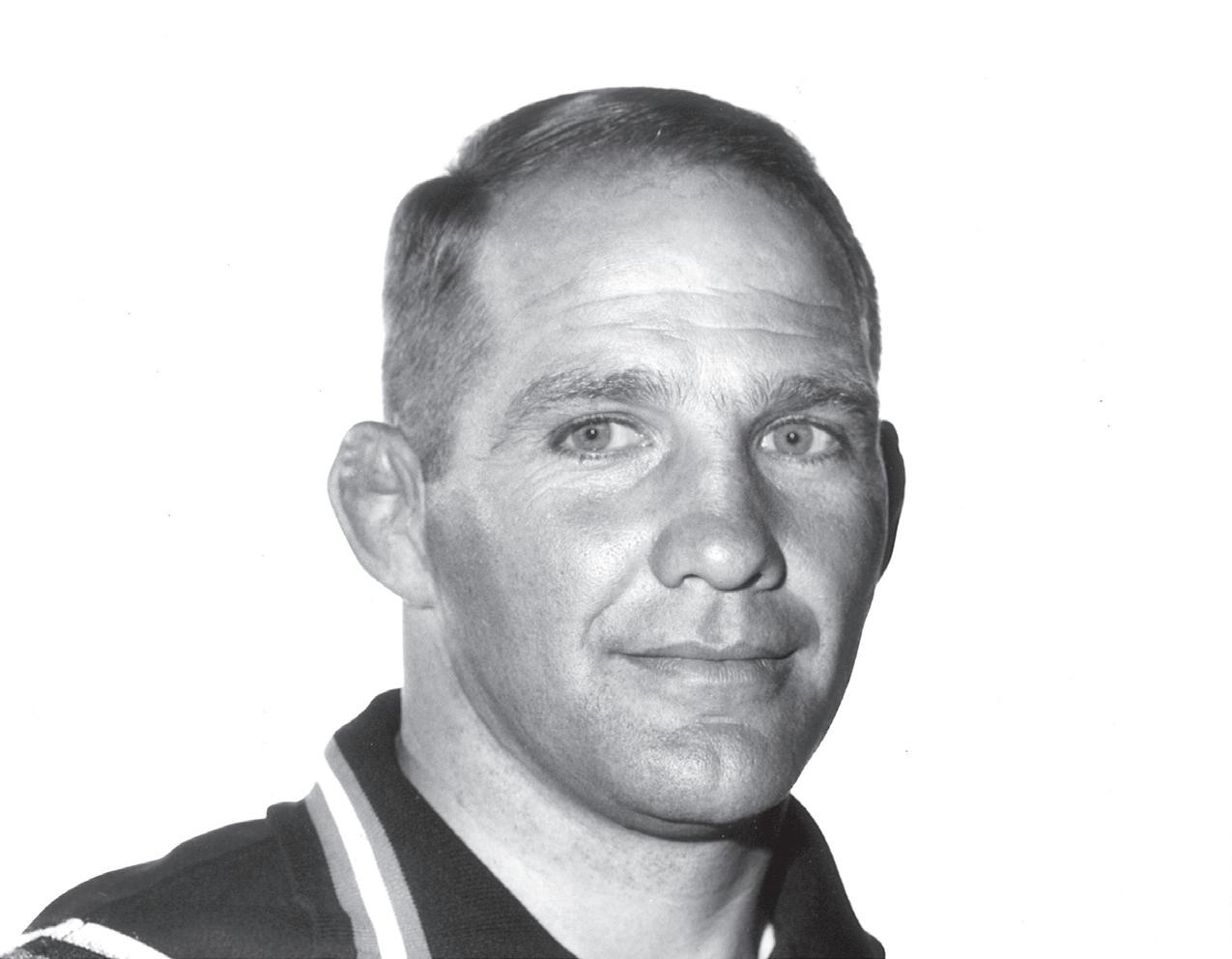
DIMINUTIVE at 5’5,” 130 pounds, EXPLOSIVE , FIERCELY COMPETITIVE , BLOND HAIR , BLUE EYED, MUSCULAR and RUGGEDLY HANDSOME with the wrestler’s BATTLE SCARS of CAULIFLOWER EARS and a somewhat SQUASHED NOSE … he wore a PERPETUAL MISCHIEVOUS GRIN and was a BALL OF FIRE.
HIS NAME WAS MYRON RODERICK.
A Kansas native, Roderick’s birth in 1934 was almost an afterthought. The physician delivered his twin sister and, thinking he was done, went ahead and double checked everything. To his surprise, he discovered Roderick, who weighed in at only three pounds. The world would never be the same.
64
STORY BY GENE JOHNSON APRIL 2014
Roderick and his four siblings, attended Winfield High School, where his dad was a high school teacher and coach. Quickly, Roderick developed an unquenchable thirst for athletics, including tennis, ping pong, football, track and wrestling.
On the gridiron, Roderick was a solid 130 pounds of dynamite. Fearless, he played halfback and linebacker. He excelled on the defensive side of the ball, where he had an uncanny knack of getting to the ball carrier. Folklore has it that he was in on over 80 percent of all tackles and that a fan always could tell where the ball carrier was by watching Roderick. As he pursued his opponent, he screamed in his high-pitch shrill voice, similar to that of a war-hoop.
Roderick used his speed and cat-like quickness to win numerous tennis tournaments and was reputed to be one of the top players in south-central Kansas.
On the mat, the first match that he saw also happened to be one where he was a participant. He lost, as a 95-pounder, 19–1, but was a quick learner, and won the state championship for all Kansas schools his last two years. It was the sport that would become his passion.
His senior year in high school, after a drive to Norman to check out the possibility of wrestling for the Sooners, he stopped in Stillwater on the way home to watch the Aggie wrestlers work out. He was impressed and, luckily for us Cowboy faithful, decided Oklahoma A&M was the place for him. If he had made another choice, our history on the mat might not have been quite so distinguished.
In 1952, the Minneapolis Lakers won the NBA, a first-class stamp cost 3 cents, CBS debuted Jackie Gleason’s hit TV show, The Honeymooners, and in September, Roderick enrolled at Oklahoma A&M.
RAPIDLY ADAPTING to the rigors of college competition, Roderick, as a sophomore, won the NCAA title at 130 pounds, losing two matches to average foes when he wrestled with a severely sprained ankle. From that experience, Roderick decided that if he ever coached he would not let a player participate unless 100 percent healthy.
The following summer Roderick married Jo Ann Minor of Perry.
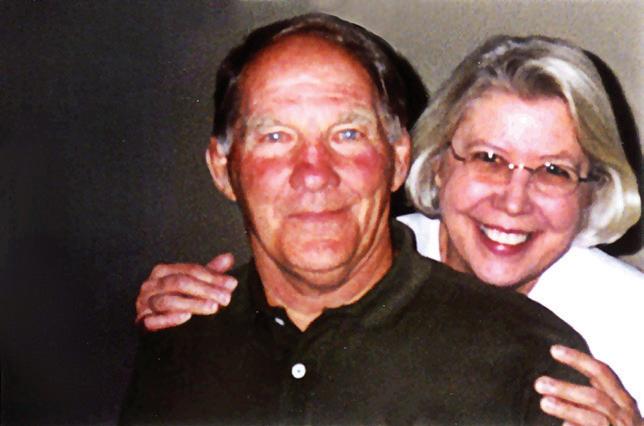
“WE MET ON A BLIND DATE IN OCTOBER AND MARRIED THE FOLLOWING JUNE,” recalled Jo Ann. “I SPOTTED HIM PLAYING TENNIS AND THOUGHT HE WAS DARLING. WE HIT IT OFF. MYRON MADE LIFE FUN!”
MARRIED LIFE AGREED WITH RODERICK AS HE WAS UNDEFEATED THE NEXT TWO SEASONS, AND WON TWO NCAA CHAMPIONSHIPS AND QUALIFIED TO WRESTLE IN THE 1956 OLYMPICS IN MELBOURNE, AUSTRALIA. RODERICK ALSO EARNED THREE VARSITY LETTERS IN TENNIS.
The summer before Roderick was scheduled to leave for the Olympics, he worked for the athletic department, doing whatever needed to be done.
“One hot June evening, a perspiring Myron came home, totally dejected, which was unusual for him,” said Jo Ann. “Myron told me he’d been outside washing Mr. Iba’s o ce windows when he heard a tap on a window. Mr. Iba told him he wanted to see him in his office bright and early the next morning. Myron knew he must’ve done something wrong. Mr. Iba didn’t call anyone into his o ce unless they were in trouble. HE DIDN’T SLEEP WELL THAT NIGHT.”
Not to worry. To Roderick’s utter shock and joy, Mr. Iba offered him the job of head wrestling coach with the provision of complete secrecy. A paid coach could not be an amateur Olympic participant. The announcement would have to wait until Roderick returned from Melbourne in October.
“Myron came home that evening, ecstatic. We thought we were moving to Oklahoma City and had bought a house.
The previous week Roderick signed a contract with Harding High School, where he had done his practice teaching, to coach and teach,” laughed Jo Ann, “BUT EVERYTHING WORKED OUT. WE JUST COULDN’T TELL ANYBODY YET.”
In Melbourne, Roderick lost a close decision to a Japanese wrestler reputed to be, at that time, the ‘best wrestler in the world.’
The new Coach Roderick and Jo Ann were ready for the next chapter in their life.
OKLAHOMA A&M became Oklahoma State University in July of 1957, the same year the Aggies-turnedCowboys joined the Big Eight Conference. Several members of the wrestling squad were older than their new coach. Roderick, who previously had to be concerned only with being a member of the team, now had a whole contingency of grapplers to train, motivate, encourage, discipline and teach. For him, it was an adjustment. The first year was not good, ending with a 3–2–2 record and two Bedlam losses. The following season the tables turned, and the Pokes won Roderick’s first NCAA title. He stalked the sideline during matches, often jumping up and down, his distinctive shrill voice shouting instructions to his guys.
“After a dual, he was totally drained,” said Jo Ann.
SUCCESS MOTIVATED Roderick to work harder. Retired Navy Rear Admiral and former Cowboy wrestler Bill McDaniel remembers there was no more formidable recruiter than Roderick.
“When I was a senior in high school, OU’s coach, TOMMY EVANS , had already o ered me and classmate Jack Briscoe a scholarship to wrestle and play football,” he said. “But Myron kept showing up, talking about his trip to the Olympics, the fun that the Cowboy wrestlers had on road trips and sometimes he would show us a film. There was no high pressure, but there was perseverance. You couldn’t say no to this guy. I really liked Myron. No one could compete with his personality and eventually Jack and I gave in … glad we did!”
65
“Another time,” McDaniel went on, “ Ronnie Clinton , a top high school recruit from Ponca City, had verbally committed to OU. He was working that summer before classes started on a drilling rig o shore Louisiana in a good paying job that had been secured for him by OU’s Tommy Evans. Back in those days, the only way to communicate with people on rigs was ship-to-shore radio. Myron drove to Louisiana, hired a helicopter and flew out to Ronnie’s rig where he somehow convinced Ronnie to become a Cowboy. Ronnie asked him if he should quit his job. Myron told him, ‘No, I’m sure Tommy worked hard to secure this great job for you — keep it.’ Two weeks after school started, Tommy called, asking Myron if Ronnie was in Stillwater,” McDaniel laughed, “Tommy knew he was.”
Contacts made at the Melbourne Olympics opened the pipeline for prime Japanese wrestlers, who were also stellar students, to attend OSU . Three won NCAA titles and one, Yojiro Uetake , was undefeated. He won three NCAA titles and, went on to capture two Olympic gold medals for his home country. Some purport Yojiro to be the best Cowboy wrestler ever. His appearance at a recent OSU football practice prompted head coach Mike Gundy to run over to shake his hand. The former Cowboy quarterback politely asked to take a picture with the old OSU wrestler.
Ahead of his time, Roderick was one of the first college coaches to recruit internationally, not only Japan, but also Iran.
Friends of Roderick’s who lived in areas of the U.S. where wrestling was a popular sport, let him know if they were aware of a promising prospect. He got top recruits from the Pacific Northwest, Pennsylvania, Tennessee and Texas.
“Myron trusted people,” Jo Ann said. “One time we went to the airport to pick up an out-of-state recruit that a friend had recommended to Myron. Although Myron had never laid eyes on this boy, he gave him a full scholarship. As the boy got o the plane, Myron’s jaw dropped. We could see that the boy had one hand and lower arm slightly smaller than the other. Turned out not to be a problem, it was Fred Fozzard , a great wrestler who went on to win an NCAA title.”
DORIS DELLINGER in her book, Ride ’em Cowboys, tells about an avid wrestling booster, now deceased, DR. MEL JONES , who accompanied Roderick on a recruiting trip for a highly touted high school prospect. The young man hesitated when Roderick asked him to sign a letter of intent, telling Roderick he was considering going to a rival university. Roderick’s retort was, “SON, YOU SIGN WITH OSU, AND I’LL MAKE YOU AN NCAA CHAMPION. YOU SIGN WITH THEM, AND I’LL JUST RECRUIT ANOTHER KID AND HE’LL BEAT YOU EVERY
TIME WE MEET YOU!” The young man wrestled for Oklahoma State.
Rear Admiral McDaniel was right. Roderick was a formidable recruiter.
During Roderick’s 13-year reign, the Cowboys won SEVEN NCAA TITLES , and had a DUAL RECORD OF 140-107. His men captured 20 INDIVIDUAL TITLES and four Olympic gold medals
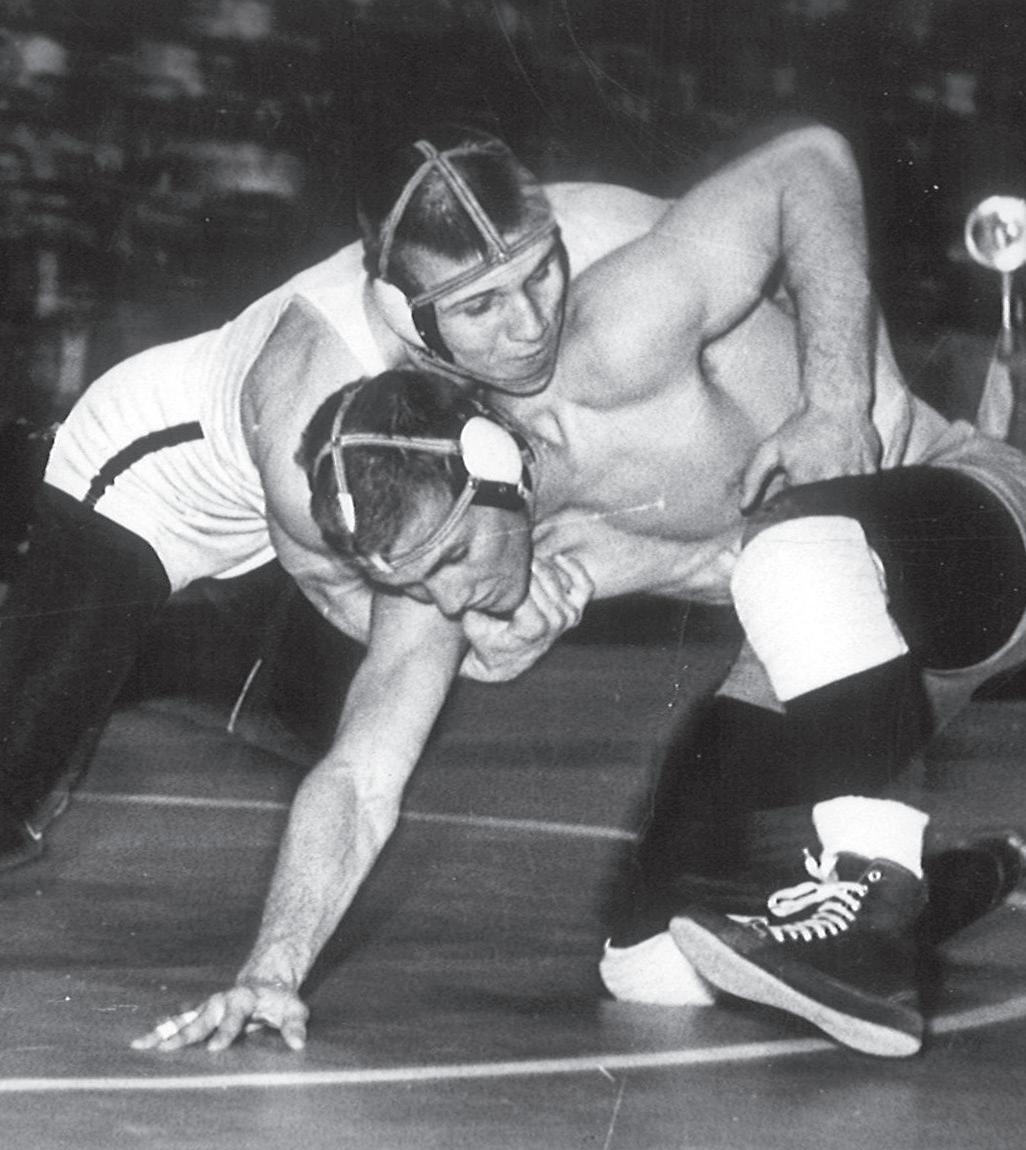
ANOTHER REASON for the Cowboys’ astonishing success was technique.
Former NCAA champion and threetime finalist Bill Harlow, a Tennessee native, gave Roderick the credit.
“Coach Roderick taught a system, doing the small things right … drilled us every practice on something, much like Mr. Iba did the guys in basketball. He took lesser athletes and made us superior wrestlers by drilling into us better technique, with the emphasis on takedowns, something he was a master of. We executed our system. Other coaches weren’t doing that. Coach was ahead of his time and it gave us an advantage.
“He would get on the mat with us,” Harlow added. “None of us 167 pounders or less could take him down before he’d get a takedown on us and then laugh. The 191 pound guys and heavyweights he couldn’t lift to take down. HE WAS, BY FAR, THE MOST INTENSE COMPETITOR I’VE EVER BEEN AROUND.
66
“UNBELIEVABLE WRESTLER AND COACH, ENTREPRENEUR, ENTHUSIASTIC, SENSE OF HUMOR, ALWAYS TELLING JOKES, HUGE HEART.
APRIL 2014
— DAVE MARTIN, DEPUTY DIRECTOR OF ATHLETICS
“Coach was a student of the sport. He’d ask me to watch a match and then tell him how I’d attack the opponent. That helped me a lot in sizing up guys I wrestled and, later on, when I coached.”
Roderick loved to play racquetball. “He’d spot us 20 points (game is 21) plus the serve and still beat us. I never knew anyone he lost to.” McDaniel went on, “Coach was easy to talk to, funny, but could be serious, a phenomenal athlete. I never heard him use a profane word, and he was an absolute tee totaler, but he didn’t mind if someone else had a drink.
“The most important thing he taught me was that a great wrestler never loses his cool while on the mat, because it will cause you to lose your focus,” McDaniel smiled, “so I tried to be a cool wrestler.”
Bobby Douglas, former star pupil of Roderick’s and an Olympic wrestler, who went on to coach several college powerhouses, including Iowa State, said Roderick set high standards, for himself and the athletes.
“Coach was passionate, about the sport and us guys. He was special, gifted, driven, an innovator. He preached that all the talent in the world can’t substitute for a lack of drive. I can’t say enough good about him.”
Dave Martin , OSU’s current Deputy Director of Athletics and former NCAA champion wrestler at Iowa State, was Roderick’s close friend.
“It’s hard to describe Myron in a single sentence,” he said, “unbelievable wrestler and coach, entrepreneur, enthusiastic, sense of humor, always telling jokes, huge, heart. One time an East Coast writer drove down and did a story on Myron. Before he left town his car broke down. Myron insisted the guy drive his car home. After repairs to the writer’s car, Myron drove it back East, traded cars and drove home!”
“Myron was a motivator,” he added. “He made wrestlers do things they weren’t capable of, made them believe in themselves … and give you the shirt o his back.”
“Funny story,” Martin went on, “we wrestled the Cowboys in Ames when I’m on the ISU squad. Everyone’s aware it will be a close dual, two of the top teams in
the country. Weather is awful … a real blizzard, so the regular ref can’t make it and we have to get a sub.” Martin smiled, “Two guys on the mat butt heads, the OSU wrestler falls flat on his back. Our guy pounces on him for what, hopefully, will be a pin. The ref is poised to slam his hand down signaling a pin when, all of a sudden, Myron is on the mat, pulling the ref, by his leg, o the mat and squealed, in his squeaky voice ‘HE’S KNOCKED OUT!’ His action saved a pin and the Cowboys win by a point. Our fans were irate, throwing pennies and booing. If the pin had counted, we win.”
AT AGE 35, Roderick resigned as wrestling coach after the 1969 season , partially, he said, because he was becoming too old to get on the mat with his guys, but mainly it was to pursue other interests. He became executive director for the U.S. Wrestling Federation , promoting the sport of wrestling.
In 1974, Roderick left the USWF to pursue private business and became executive director of the International Racquetball Association , a sport he excelled in, having won eight national doubles titles.
The National Wrestling Hall of Fame, in Stillwater, was dedicated in 1976, thanks largely to Roderick’s efforts.
OSU selected Roderick, as ATHLETIC DIRECTOR in 1983, a position he held until 1990.
“MYRON,” said Jo Ann, “ALWAYS CLAIMED THE SMARTEST THING HE DID AS ATHLETIC DIRECTOR WAS TO HIRE Eddie Sutton. Myron thought Eddie hung the moon.”
IN 2003, Roderick suffered a stroke which confined him to a wheel chair. “He received so many letters and cards from friends and fans. It was nice,” recalled Jo Ann, “I told him if I’d known how great he was, I would have treated him better.”
“Patsy and Eddie Sutton would come by for visits. Myron and I enjoyed seeing them. Rusty Martin and Walt Garrison came by quite a bit. They filled our home with laughter. Walt even carved a nice cane for Myron.”
The Rodericks have two children and four grandchildren. Son, Ty, is a retired Stillwater firefighter, and daughter, Tara, lives in Tulsa. Their granddaughter, Brandi , a former OSU spirit squad member, manages a doctor’s o ce in Baltimore and is a Ravens cheerleader.
“Our grandkids thought Myron was terrific,” said Jo Ann.
Tommy Evans was a close friend and said, “I love that man, but during wrestling season, I hated him.”
RODERICK died on Dec. 28, 2011, at the age of 77.

“He was outstanding in every way … wrestler, coach, husband, dad, friend … loved everybody, and everyone loved him,” said Jo Ann. “We had a good time, and when he became disabled, it was my turn to take care of him. He stayed at home until the end.”
Myron Roderick, so much gusto in one man. WE AGGIES/COWBOYS ARE BLESSED HE SHARED IT WITH AND FOR US … A REMARKABLE MAN AND AN UNFORGETTABLE LEGEND. One of a kind!
WRITER’S FOOTNOTE
My senior year in high school, Dad took me on a recruiting visit to Stillwater. I sat on the bleachers in Gallagher Hall as the Cowboy basketball team practiced. Dad went upstairs. After a little bit, I glanced up, saw Dad and Myron seated, with Myron talking up a storm. On the way home, I asked what happened. Dad replied, “Coach Roderick just came up, introduced himself, sat down and starting talking. He’s a heckuva of a nice guy.” Dad smiled. Next day, Mom said everybody in Seminole, Okla. knew about that conversation. I’ll always cherish that memory of Myron.
The author welcomes your comments at osu52johnson@yahoo.com.
67
the Honor Roll
When OSU announced its scholarship endowment initiative, the athletic program was last in the Big 12. Now, more than halfway through the 10-year program, OSU leads the conference. But we’re not finished yet.
OSU awards 229 full scholarships to student-athletes each year at a cost of $4.5 million. Each dollar freed up through endowed scholarships goes back into our programs. Better equipment. Better facilities. Better support. Each dollar has a direct impact on the lives of our student-athletes.

“Each scholarship we endow secures the future of OSU athletics and provides more opportunities for our student-athletes on and off the field,” says Mike Holder, Vice President for Athletic Programs and Director of Intercollegiate Athletics.
This is the list of all the generous supporters who have helped to provide a bright Orange future. They are our Honor Roll.





To learn more about scholarship opportunities and how you may contribute, please contact Larry Reece (405-744-2824) or Matt Grantham (405-744-5938).
“It has been amazing to see 315 donors step up to get us past the $58 million mark in commitments to the Leave A Legacy campaign.
The bottom line is OSU supporters get it … scholarships help our studentathletes today while strengthening our athletic budget forever.”
— LARRY REECE, SENIOR ASSOCIATE ATHLETIC DIRECTOR, DEVELOPMENT

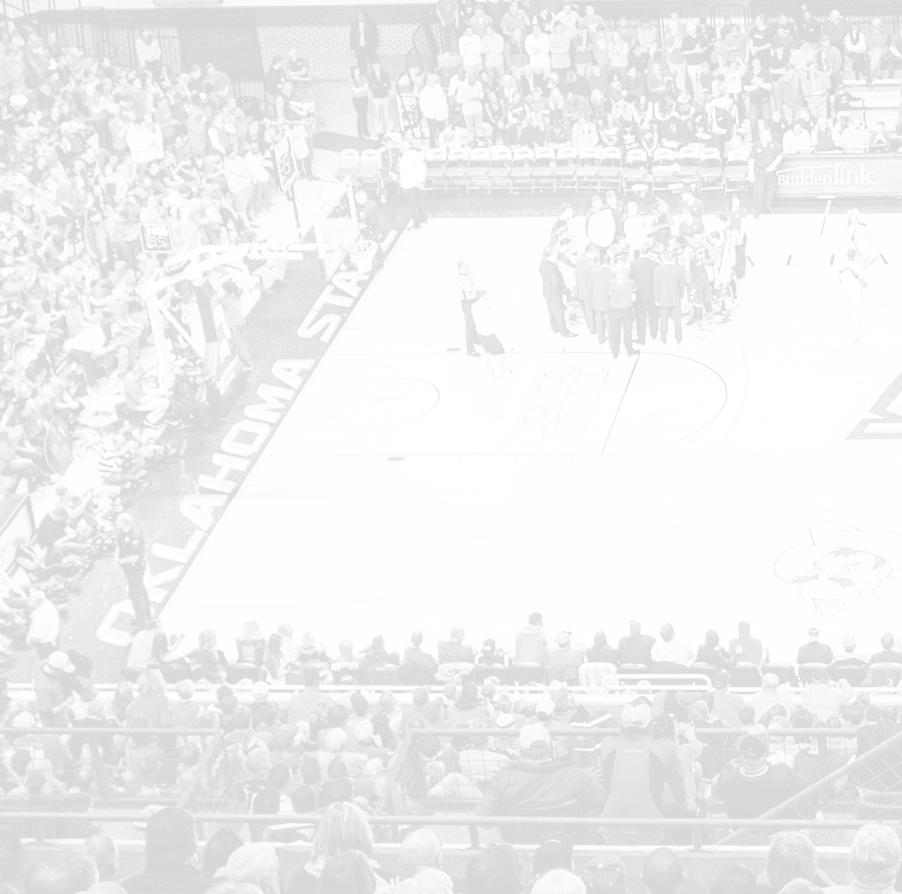
BASEBALL 6.5




FULL SCHOLARSHIP
Dennis and Karen Wing (2)
Hal Tompkins
HALF SCHOLARSHIP
Mike Bode and Preston Carrier
Jennifer and Steven Grigsby
Sally Sparks
QUARTER SCHOLARSHIP
Bryant and Carla Coffman
David and Grace Helmer
Jill Rooker
FOOTBALL 31.0
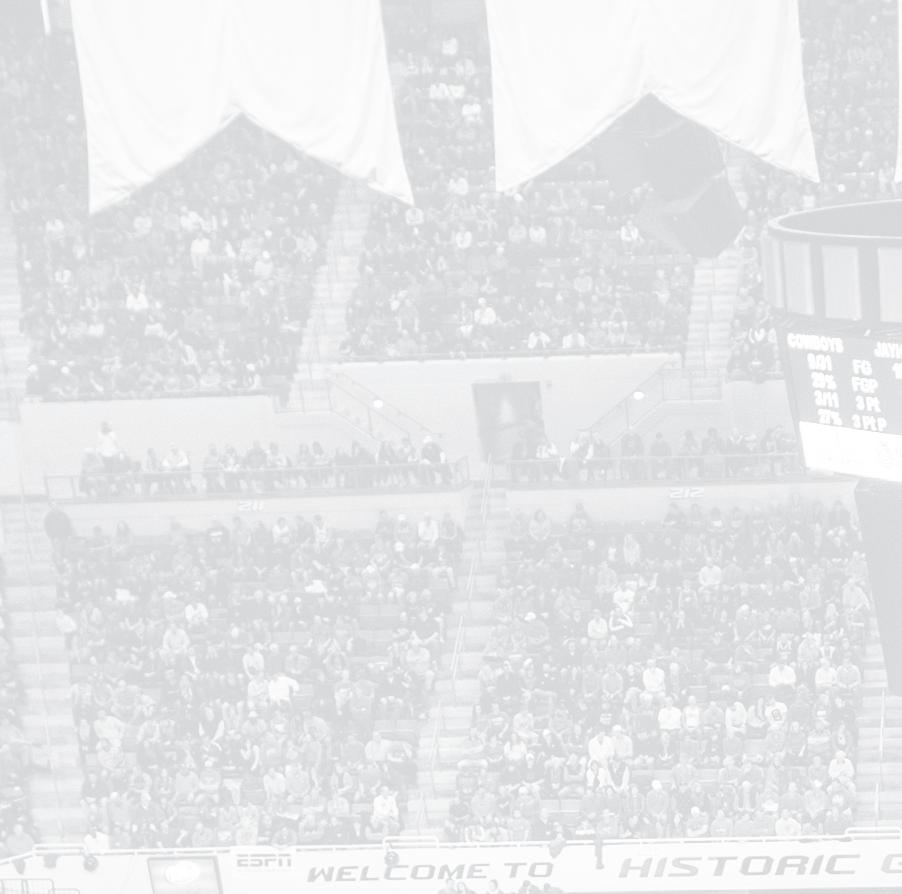
FULL SCHOLARSHIP
Bob and Kay Norris
Bryant and Carla Coffman
/ The Merkel Foundation

David LeNorman
Dennis and Karen Wing (2)
Dr. Mark and Beth Brewer
Jim Click
John and Gail Shaw
Ken and Jimi Davidson
HALF SCHOLARSHIP

Cindy Hughes
Donald Coplin
Doug Thompson
Ed and Helen Wallace
Greg Casillas
Ike and Marybeth Glass
Martha Seabolt
Sandy Lee
Dr. Scott Anthony
Leslie Dunavant
Mike and Kristen Gundy
Mike and Robbie Holder
Ron Stewart
Ross and Billie McKnight
Sandy Lee
Tom and Sandra Wilson
Wray and Julie Valentine
Jim and Lynne Williams
John and Patti Brett
Mike and Judy Johnson
Sally Sparks
State Rangers
Tom Naugle
QUARTER SCHOLARSHIP
Al and Martha Strecker
Arthur “Andy” Johnson, Jr.
Arthur Couch
Barry and Roxanne Pollard
Bill and Ruth Starr
Brad and Leah Gungoll
Brian K. Pauling
Bridgecreek Investment Management LLC
Bryan Close
David and Cindy Waits
David and Gina Dabney
Dr. Berno Ebbesson
Dr. Ron and Marilynn McAfee
Eddy and Deniece Ditzler
Flintco
Fred and Janice Gibson
Fred and Karen Hall
Howard Thill
James and LaVerna Cobb
Jerry and Lynda Baker
Jerry and Rae Winchester
John P. Melot
John S. Clark
Ken and Leitner Greiner
Kent and Margo Dunbar
Paul and Mona Pitts
R. Kirk Whitman
Randal and Carol White
Roger and Laura Demaree
Shelli Osborn
Steve and Diane Tuttle
Tony and Finetta Banfield
68
MARCH 2014
GENERAL 1.25
HALF SCHOLARSHIP
Terry and Martha Barker
QUARTER SCHOLARSHIP
David and Judy Powell
Kenneth and Susan Crouch
Sally Sparks
GRADUATE ATHLETE 0.75
QUARTER SCHOLARSHIP
Bob and Joan Hert
Neal Seidle
Tom and Cheryl Hamilton
MEN’S BASKETBALL 20.75
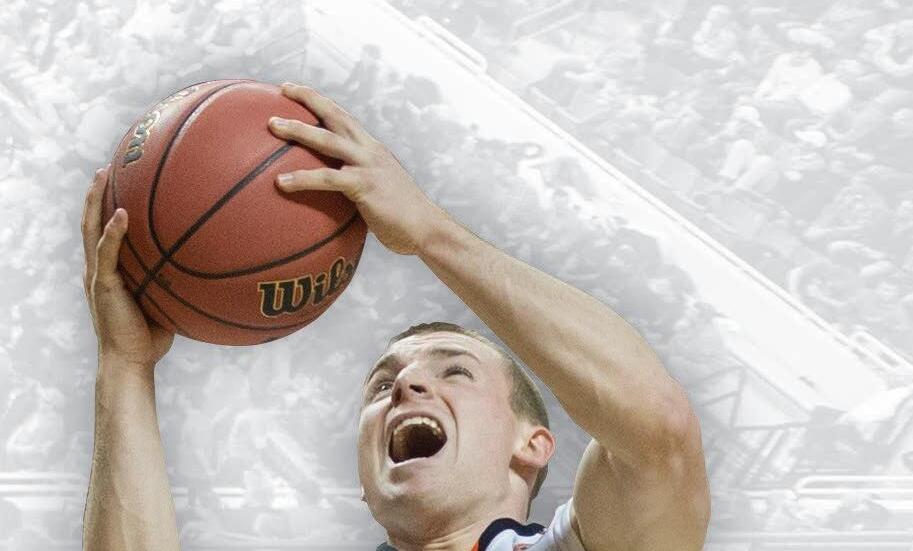
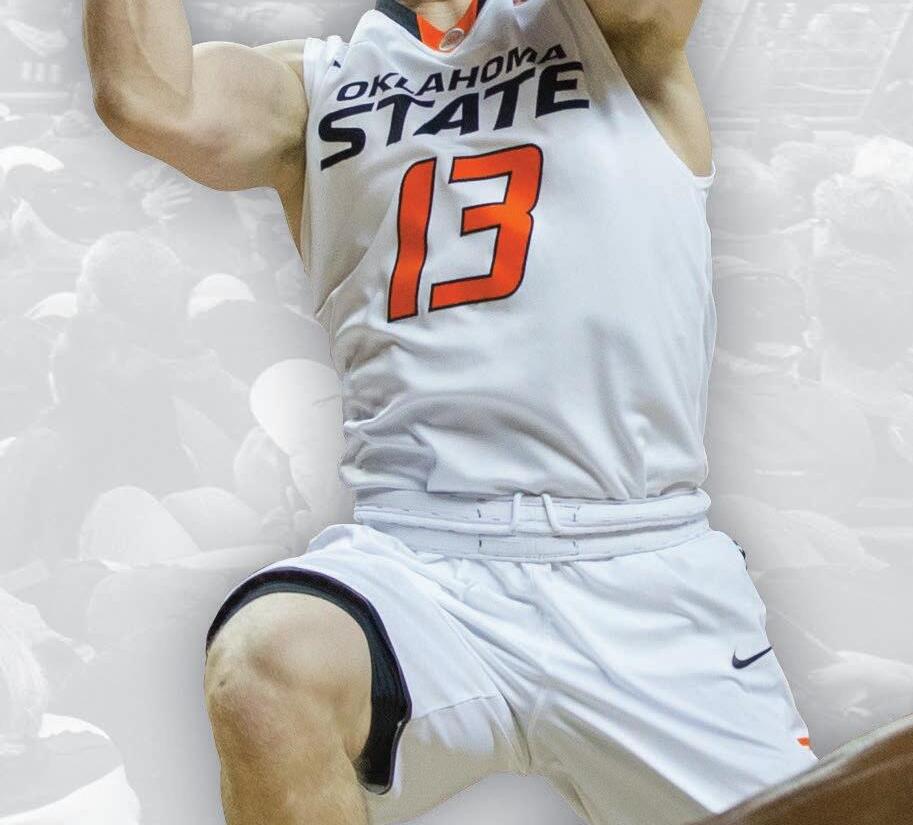
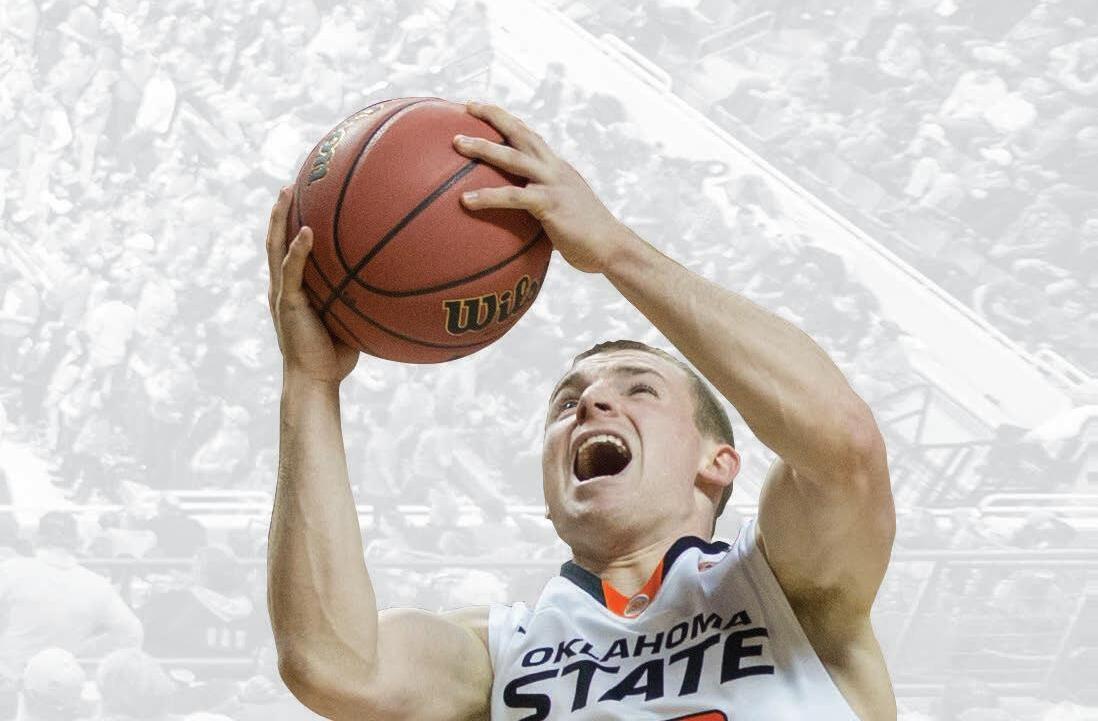

FULL SCHOLARSHIP
A.J. and Susan Jacques
Brett and Amy Jameson
Calvin and Linda Anthony
Chuck and Kim Watson
David and Julie Ronck (1.25)
Dennis and Karen Wing (2)
Douglas and Nickie Burns
HALF SCHOLARSHIP
Bill and Marsha Barnes
David and Julie Ronck
Dr. Mark and Susan Morrow
Jay and Connie Wiese
Griff and Mindi Jones
James and Mary Barnes
Jim Vallion

Ken and Jimi Davidson
Kent and Margo Dunbar
KimRay Inc.
Mitch Jones Memorial
















Sally Sparks
Sandy Lee
Stan Clark
QUARTER SCHOLARSHIP
Dr. Scott and Lynne Anthony
Gary and Sue Homsey
Holloman Family
Michael and Heather Grismore
Rick and Suzanne Maxwell
Robert and Sharon Keating

Steve and Suzie Crowder
Terry and Donna Tippens
MEN’S GOLF 3.25
FULL SCHOLARSHIP
David and Julie Ronck
HALF SCHOLARSHIP
Stillwater National Bank
Dennis and Karen Wing
QUARTER SCHOLARSHIP
Bob and Elizabeth Nickles
Garland and Penny Cupp
Richard and Joan Welborn
MEN’S TENNIS 0.25

QUARTER SCHOLARSHIP
Tom and Cheryl Hamilton
MEN’S TRACK 0.75
QUARTER SCHOLARSHIP
Dr. Mark and Susan Morrow
Susan Anderson
Ken and Leitner Greiner
WOMEN’S BASKETBALL 6.0

FULL SCHOLARSHIP
Brad and Margie Schultz
Ken and Jimi Davidson
HALF SCHOLARSHIP
Baloo and Maribeth
Subramaniam
Mike Bode and Preston Carrier
Don and Mary McCall
John and Caroline Linehan
QUARTER SCHOLARSHIP
Bill and Sally Cunningham
Calvin and Linda Anthony
Donald Coplin
Jill Rooker
Jon and Nancy Patton
Richard and Linda Rodgers
WOMEN’S EQUESTRIAN 0.25
QUARTER SCHOLARSHIP
David and Gina Dabney
WOMEN’S GOLF 1.0
HALF SCHOLARSHIP
David and Julie Ronck
QUARTER SCHOLARSHIP
Amy Weeks
Kent and Margo Dunbar
WOMEN’S TENNIS 0.25
QUARTER SCHOLARSHIP
Jamie Maher
WRESTLING 10.25
FULL SCHOLARSHIP
A.J. and Susan Jacques
Bruce and Nancy Smith
Chuck and Kim Watson
Lon and Jane Winton
OSU Wrestling – White Jacket Club / Gallagher Endowed Wrestling
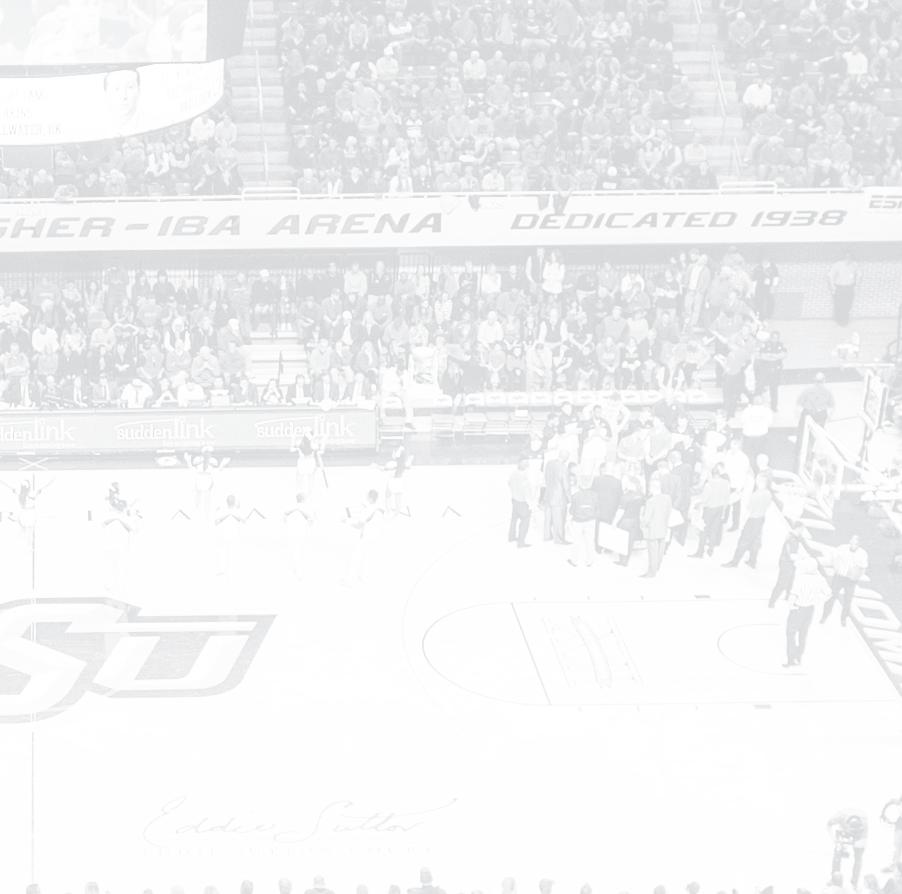
Scholarship
OSU Wrestling – White Jacket Club / Myron
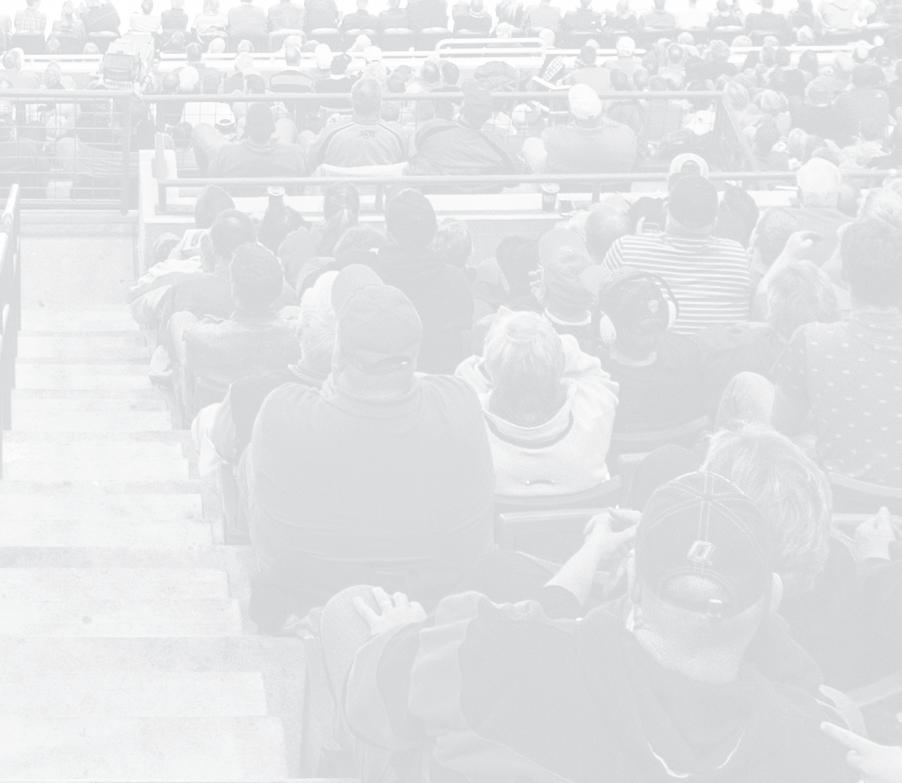

Roderick Endowed Wrestling Scholarship
OSU Wrestling – White Jacket Club / Ray Murphy Endowed Wrestling






Scholarship
HALF SCHOLARSHIP










Mark and Lisa Snell
QUARTER SCHOLARSHIP
Danny and Dana Baze / Cory and Mindy Baze
SOFTBALL 0.25
QUARTER SCHOLARSHIP



Tom and Cheryl Hamilton
OSU Wrestling – White Jacket Club / Tommy

Chesbro Endowed Wrestling Scholarship
The Cobb Family
John and Beverly Williams
R.K. Winters
PHOTO / BRUCE WATERFIELD
White White White
69
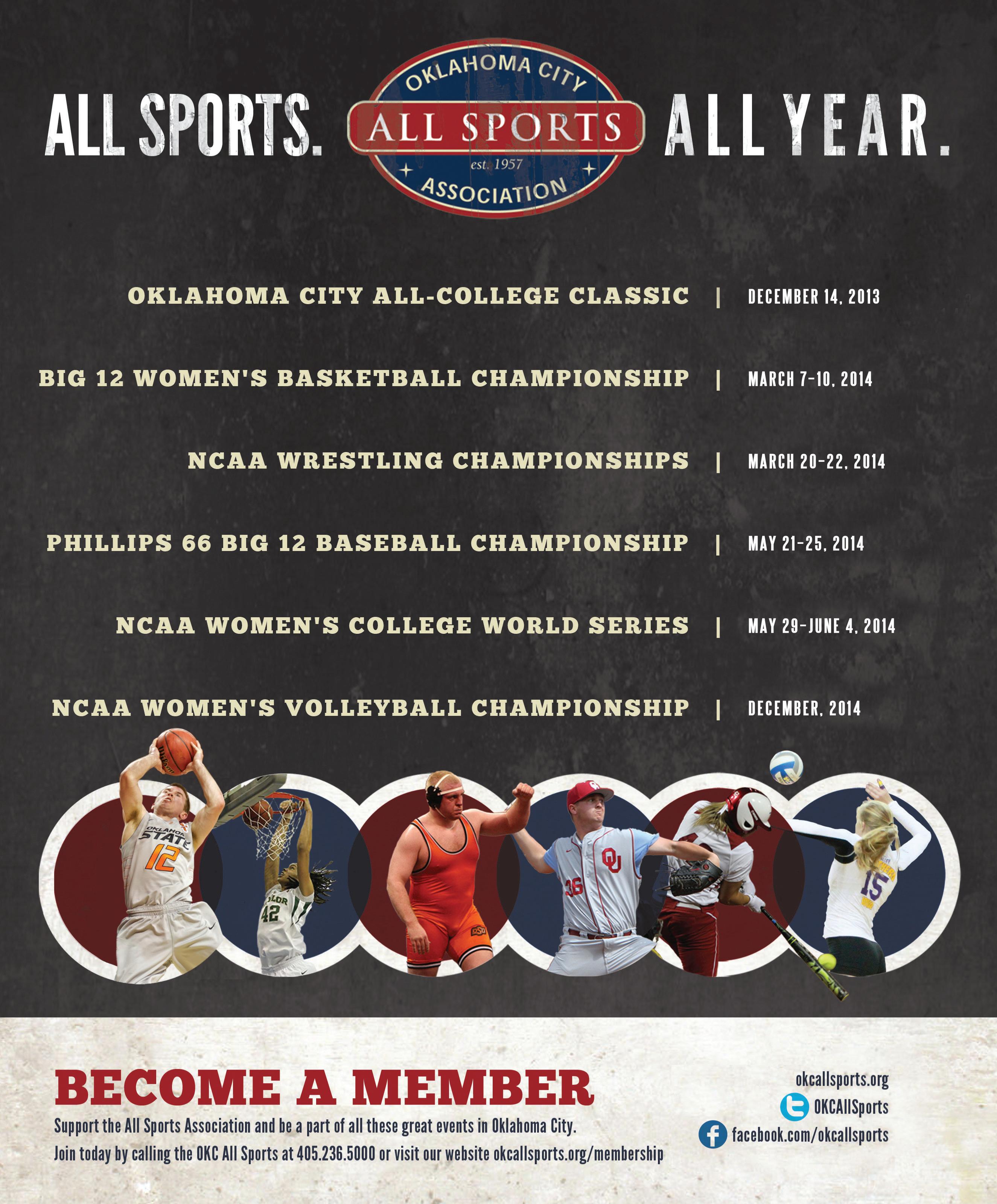
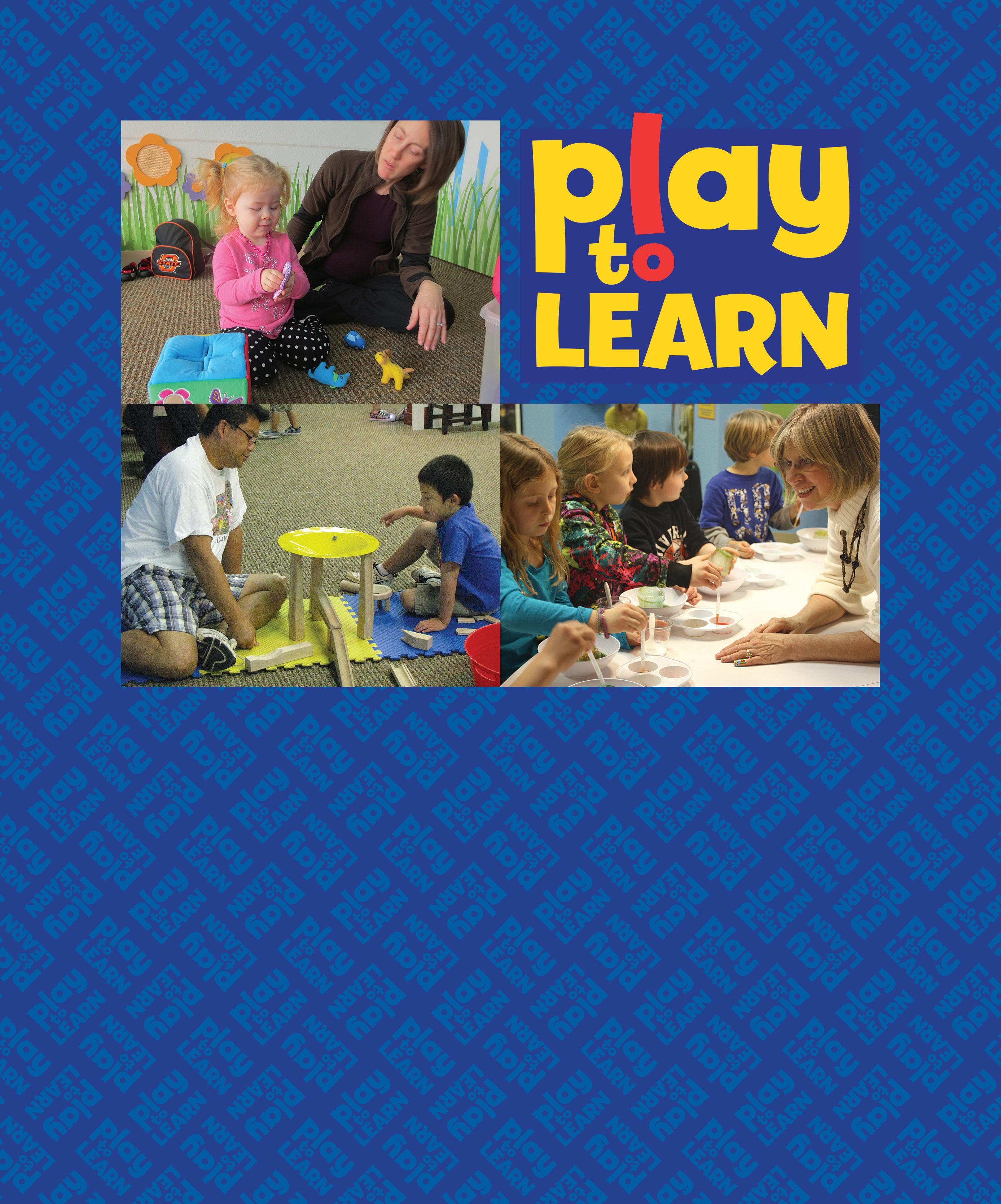

























14 interactive hands-on exhibits exploring science, engineering, art, math, history and culture, at Oklahoma’s award-winning children’s museum! 308 West Franklin Lane, Stillwater, OK 74075 Admission: $7 Open Tuesday through Saturday 10am to 5pm • Sunday 1 to 5pm • Closed Monday (405) 533-3333 • www.okwondertorium.org • www.facebook.com/okwondertorium Winner of the 2013 Oklahoma Travel Industry Association’s Redbud Award for “Outstanding New Attraction” and named 2013 “Outstanding Attraction” by Frontier Country Marketing Association
VI It Takes a
THE NAME IS CATCHY:
The Athletic Village.
THE CONCEPT IS EXCITING: A vast expanse of sparkling new athletic facilities for OSU student-athletes and fans, all located just north of Boone Pickens Stadium in a slick addition to the Oklahoma State campus.
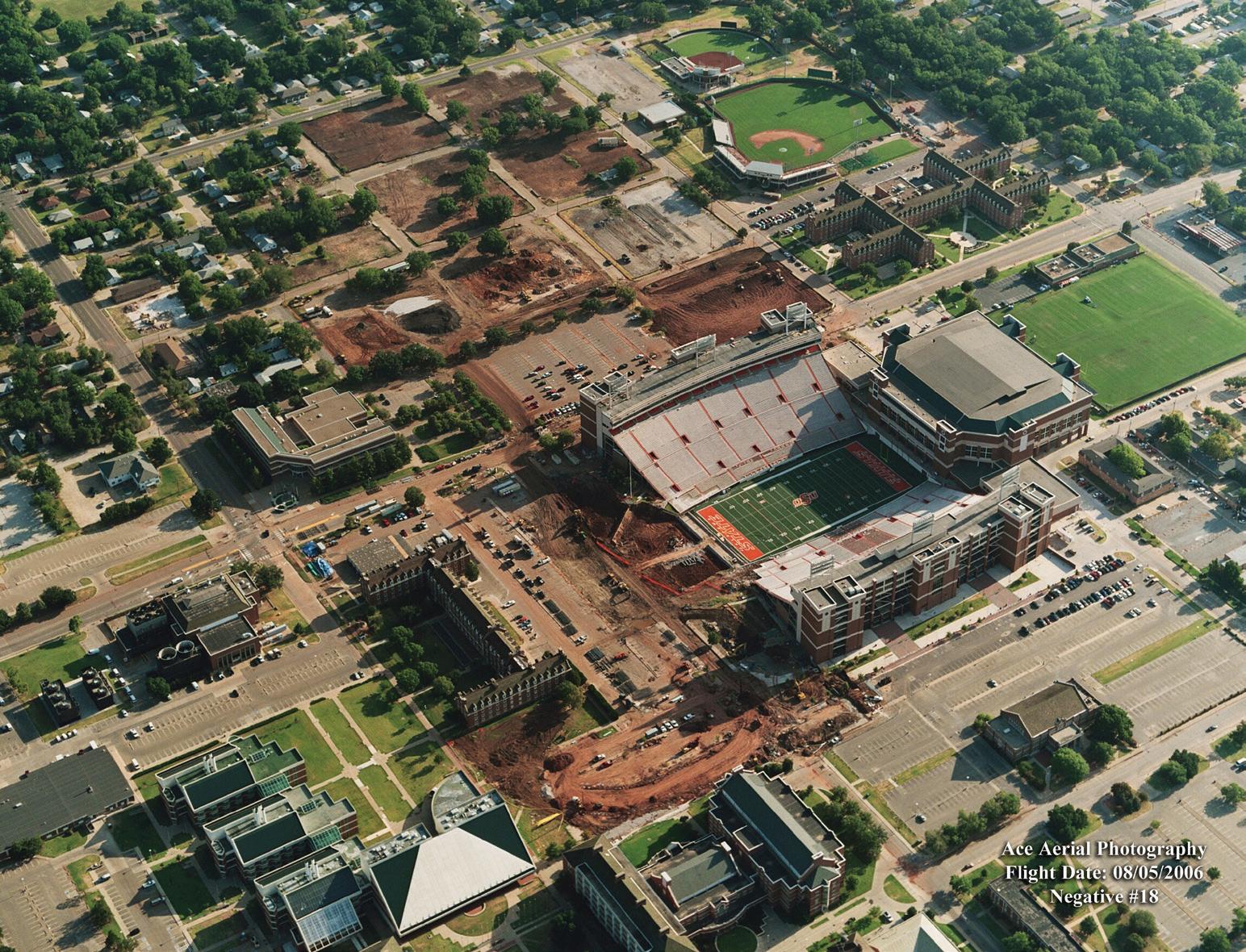
THE PROCESS: Let’s just say patience has been a virtue.

ATHLETIC VILLAGE 2006 72
APRIL 2014
STORY BY KEVIN KLINTWORTH
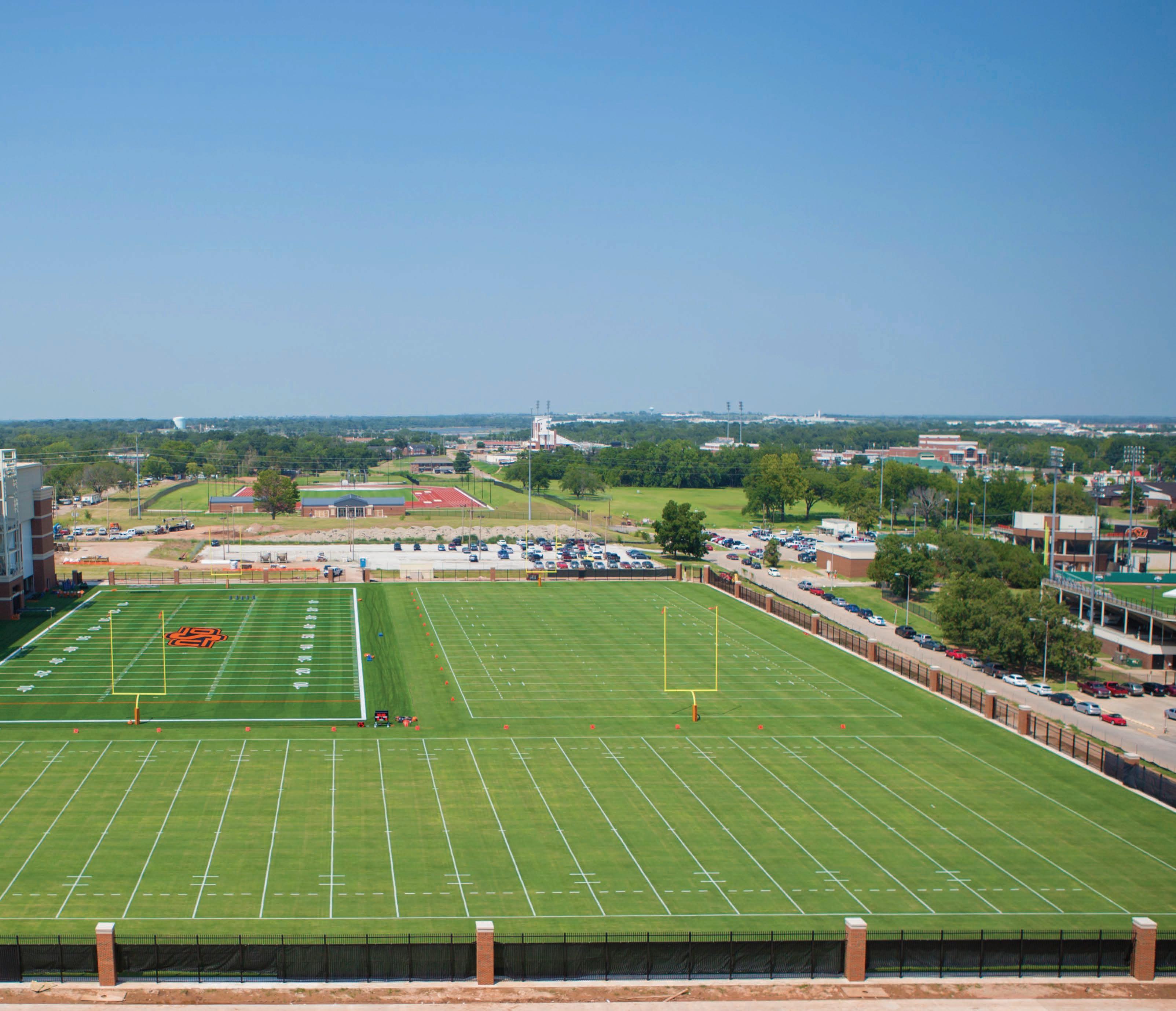
LLAGE

73
PHOTOGRAPH BY BRUCE WATERFIELD
CONSTRUCTION WITHIN THE ATHLETIC VILLAGE, AND ON SEVERAL OTHER OSU PROJECTS, REACHES AN INTERESTING AND SIGNIFICANT CROSSROADS DURING THE SPRING OF 2014.
In some areas, work is coming to a celebrated and long-awaited conclusion. In others, the tasks are just beginning. But there is no denying gigantic steps have been taken toward an athletic complex that Oklahoma State coaches, athletes and fans have been dreaming about for years and eagerly anticipating since the term “Athletic Village” first echoed across the OSU campus in 2006.
THE INTERSECTION OF “JUST-GETTING-STARTED-AND-WELCOME-TOYOUR-NEW-HOME” IS A CROWDED PLACE. This spring, OSU expects to o cially dedicate the GREENWOOD TENNIS CENTER, which has drawn rave reviews in tennis circles throughout the country. Plans are being finalized to start massive construction upgrades at the Cowgirl soccer complex, which will change everything but the playing surface. By the end of spring, work could be complete on OSU’s newest venture, ORANGE POWER STUDIOS. Also ongoing is design development on a new baseball stadium. Still to come is a new equestrian center and continued upgrades to the new track and field facility, which is now located north of McElroy Road at the top of the village.
Meanwhile, across the street, OSU had been busy spending approximately $50 million obtaining properties spread over roughly 90 acres. That land was designated as the eventual site of The Athletic Village and the future homes for OSU track, baseball, tennis and possibly soccer and equestrian. One of the centerpieces of the village was to be an OSU first: an indoor training center that would be available to any OSU athletic team that needed it and was considered by most to be the final piece of OSU’s football facility overhaul.
In January 2007, the dream took another step toward reality when the Sherman Smith family made a $20 million gift for the indoor facility. But the momentum soon came to a halt.
“In 2008, the world changed,” said Director of Athletics Mike Holder.
In the middle of one of the biggest building projects college athletics had ever known came one of the biggest economic downturns in U.S. history, and things went silent north of Hall of Fame Avenue. The Boone Pickens Stadium project was completed, thanks in part to even more help from Boone Pickens himself, and a stadium rededication was held in September 2009, culminating with a Cowboy win over No. 13 Georgia. But The Athletic Village was in a holding pattern and looked lonely and forlorn adjacent to the new-look football stadium.
In January 2006, Boone Pickens announced his $165 million gift for construction on BOONE PICKENS






STADIUM and The Athletic Village. It was not his first major donation and would not be his last. And just six months after that announcement grabbed national headlines, work began on the west end zone of the stadium with major construction having already been completed on the north and south sides of the facility in 2005 and 2006. The west end zone project added approximately 20,000 stadium seats and became the spitshined headquarters for OSU football as well as Cowboy Dining, Inc., which handles meals for OSU’s training table and caters the suite and club meals on football game days. The west end zone will also house Orange Power Studios.
Holder, away from the spotlight as is his modus operandi, quietly began to rebuild the dream of The Athletic Village. There was no grand announcement and really no defined road map or self-imposed deadline. It was simply a case of putting one foot in front of another and quietly restarting the process. That MO had worked well for Holder in the past.
announcement
He conceived the idea of Karsten Creek Golf Course 19 years before it was completed. The Athletic Village challenge was unique. Holder would have to put the pieces back together during one of the toughest economic stretches in the lifetime of most living Americans.
HIS MOTIVATION WAS SIMPLE. SEVERAL OF OKLAHOMA STATE’S SUCCESSFUL ATHLETIC TEAMS WERE NOT COMPETING OR TRAINING IN TYPICAL BIG 12 FACILITIES. IN FACT, SOME PROGRAMS ACTUALLY HAD NO FACILITY TO SPEAK OF.
The men’s and women’s tennis teams, which have won a combined 34 conference championships, shared their facilities with the OSU students and the general public. The DeBois Tennis Complex was constructed in the 1980s as much for the OSU student body as for the tennis programs. There were no locker rooms, court access was inconsistent and upkeep was a challenge. A passer-by during summer evenings on campus might see those courts being utilized by skateboarders, rollerblade enthusiasts or bicyclists — and sometimes even some recreational tennis players. Upkeep was a constant problem.
74
APRIL 2014
PHOTO / PHIL SHOCKLEY
That facility challenge made the run of longtime head tennis coach James Wadley even more impressive. The former Cowboy boss oversaw the program for 40 years, the longest coaching tenure in the history of Oklahoma State University. He WON 662 MATCHES, had a WINNING PERCENTAGE OF .665, brought home 12 CONFERENCE TITLES and coached TWO NATIONAL PLAYERS OF THE YEAR.
The OSU track and field teams basically had no track and virtually no field. But Stillwater did provide some open space. Head coach Dave Smith promptly turned that resource into a neardynasty with THREE MEN’S CROSS COUNTRY NATIONAL CHAMPIONSHIPS (2009, 2010, 2012) and a couple of other near misses. But with a track facility that had deteriorated to the point of almost being unsafe for training, Smith and sta lacked the ability to build a true, balanced track squad. He concentrated on distance events, which allowed his stellar cross country athletes to score points in track meets.
Another success story was taking place just north of the Colvin Center. The OSU women’s soccer program, one of the newest additions to OSU Athletics, was blossoming into one of the best programs in the southwest. Oklahoma State picked up a BIG 12 REGULAR SEASON OR TOURNAMENT CHAMPIONSHIP FOR FOUR STRAIGHT YEARS (2008 THROUGH 2011) and twice was a win away from THE WOMEN’S CUP, the sport’s version of the Final Four. But again, there was a facility challenge. While the playing surface itself is among the best in the country, fan amenities, locker rooms and media facilities were virtually non-existent and lagged far, far behind the other Big 12 programs.
“It wasn’t about who was successful and who wasn’t,” Holder said of the long-range projects. “We had far too many programs competing in third-world type facilities. To try to recruit to those facilities and develop student-athletes — it just wasn’t fair. I’ve always felt if you were going to have a team you should try to compete at the highest level. That takes a commitment and not just on the part of the athlete. It also takes a commitment on the part of the athletic department to provide resources that allow you to be successful.”
The first sign of new life came when Holder was approached by OSU graduate and donor Rick Cooper, whose family owns W&W Steel in Oklahoma City. W&W Steel has been involved in massive building projects across the globe, including Boone Pickens Stadium, AT&T Stadium in Arlington, Texas, and in New York City at Madison Square Garden and at ground zero.
Cooper’s company had recently helped with the construction of a football indoor practice facility at the Air Force Academy in Colorado Springs.
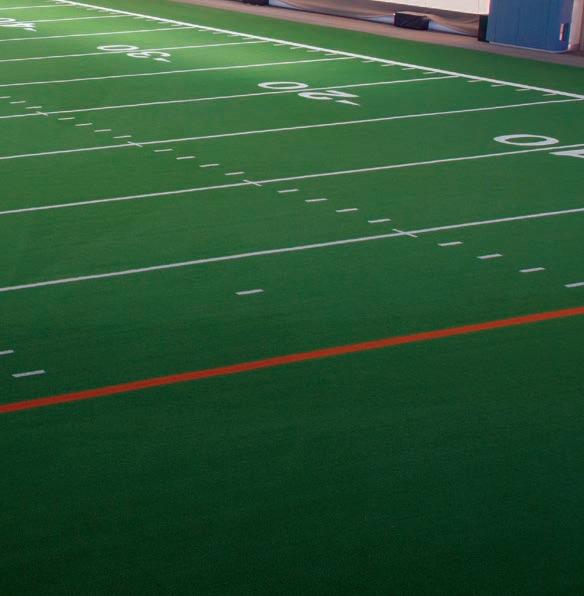
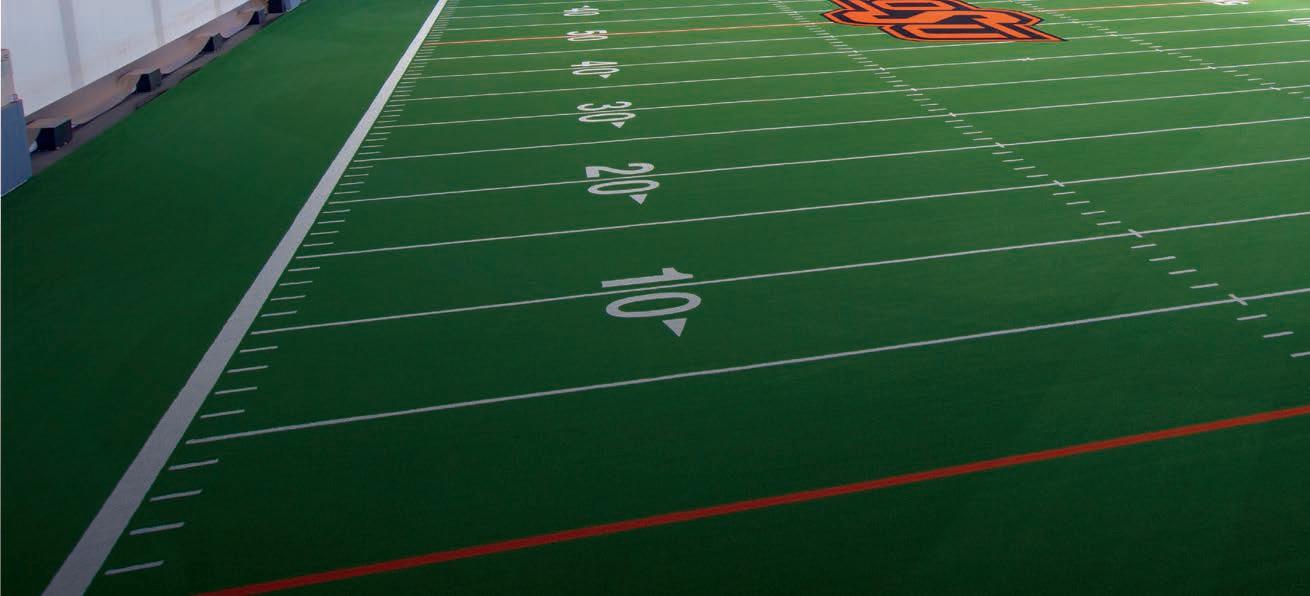
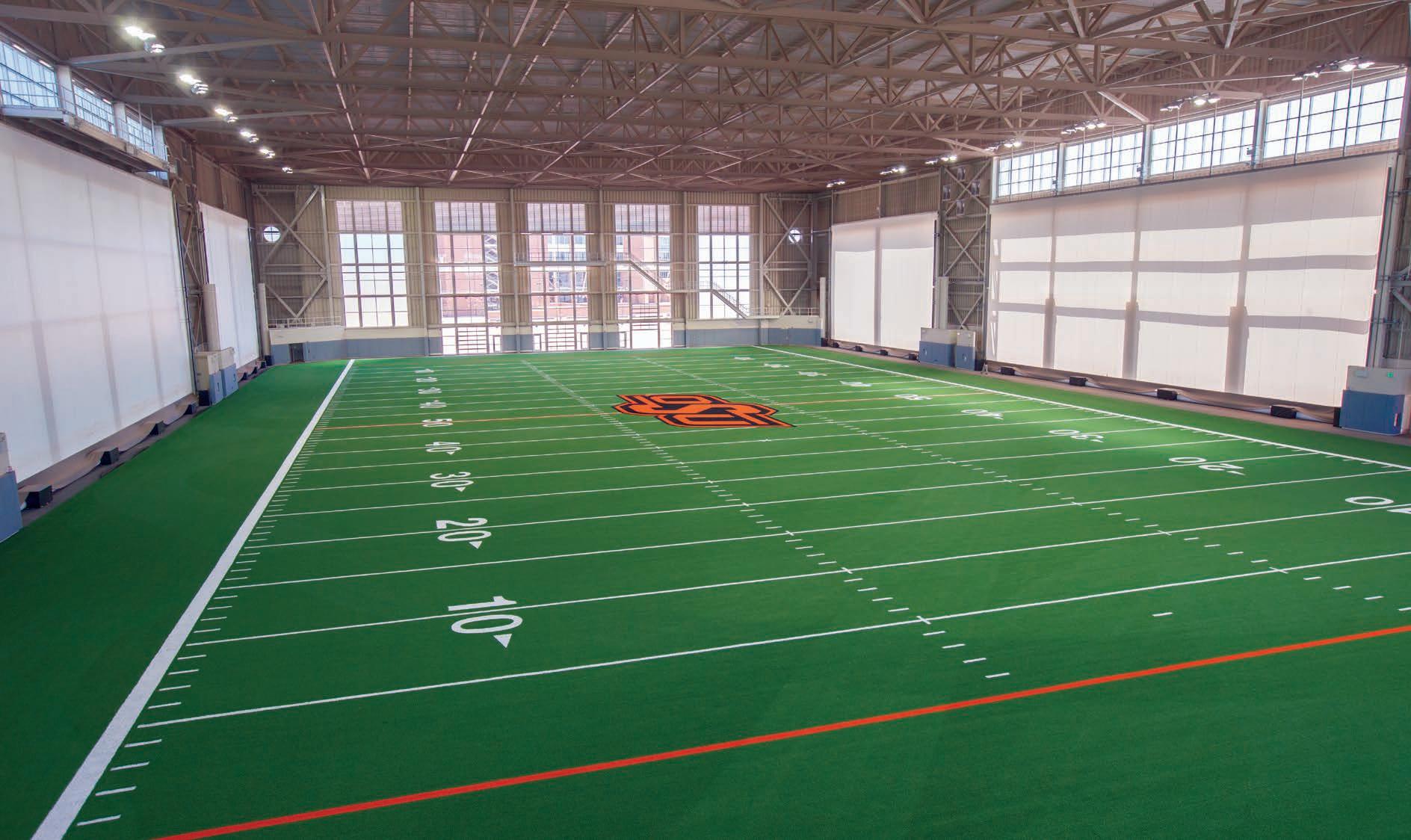
“Rick is a huge, huge supporter of OSU Athletics and he knew that the original plans for the SHERMAN E. SMITH TRAINING CENTER were grandiose, probably in the $50 million range,” Holder said. “But his company had just helped construct an indoor facility at the academy for approximately $20 million, or roughly the same amount as the Smith family had donated to us for our indoor facility.”
Cooper, who serves as president and CEO of W&W Steel, put Holder in touch with OSU graduate and architect Jim Hasenbeck, who came up with a groundbreaking design, at least in regards to collegiate training facilities.
The unique approach featured six massive fabric rollup doors (three each on the east and west sides of the facility, which runs north-south). The convenience and flexibility turned the now-o cially-named Sherman E. Smith Training Center into a showplace with the indoor facility eventually flanked on the east by three practice fields, two natural grass fields and one artificial field.
“Jim had built some aircraft hangers and his idea of hanger doors would allow us to not worry about heating or cooling,” Holder said. “When he told me about the doors I thought it was either the best or worst idea I had ever heard.”
Construction began on the new practice fields in April 2011. In June 2013, the football Cowboys moved their summer workouts from the scorching turf of the stadium into the indoor center. On Aug. 8, as football’s fall camp entered its second week, the Cowboys held their first o cial team practice in the Smith Center when the threat of lightning forced them to vacate the traditional east fields on the Duck Street side of the Athletics Center. The Cowboys apparently liked the new digs because they never went back to the old ones.
75
“THIS PLACE IS AMAZING. EVEN THE NFL SCOUTS ARE SHAKING THEIR HEADS, AND THEY HAVE BEEN EVERYWHERE.”
— COACH MIKE GUNDY
PHOTO / BRUCE WATERFIELD
“There might be a better practice facility somewhere,” head football coach Mike Gundy told the media last fall, “but I don’t know where. This place is amazing. Even the NFL scouts are shaking their heads, and they have been everywhere.”
Gundy’s reference wasn’t just to the Smith Center, but also to the surrounding practice fields, fencing and landscaping.
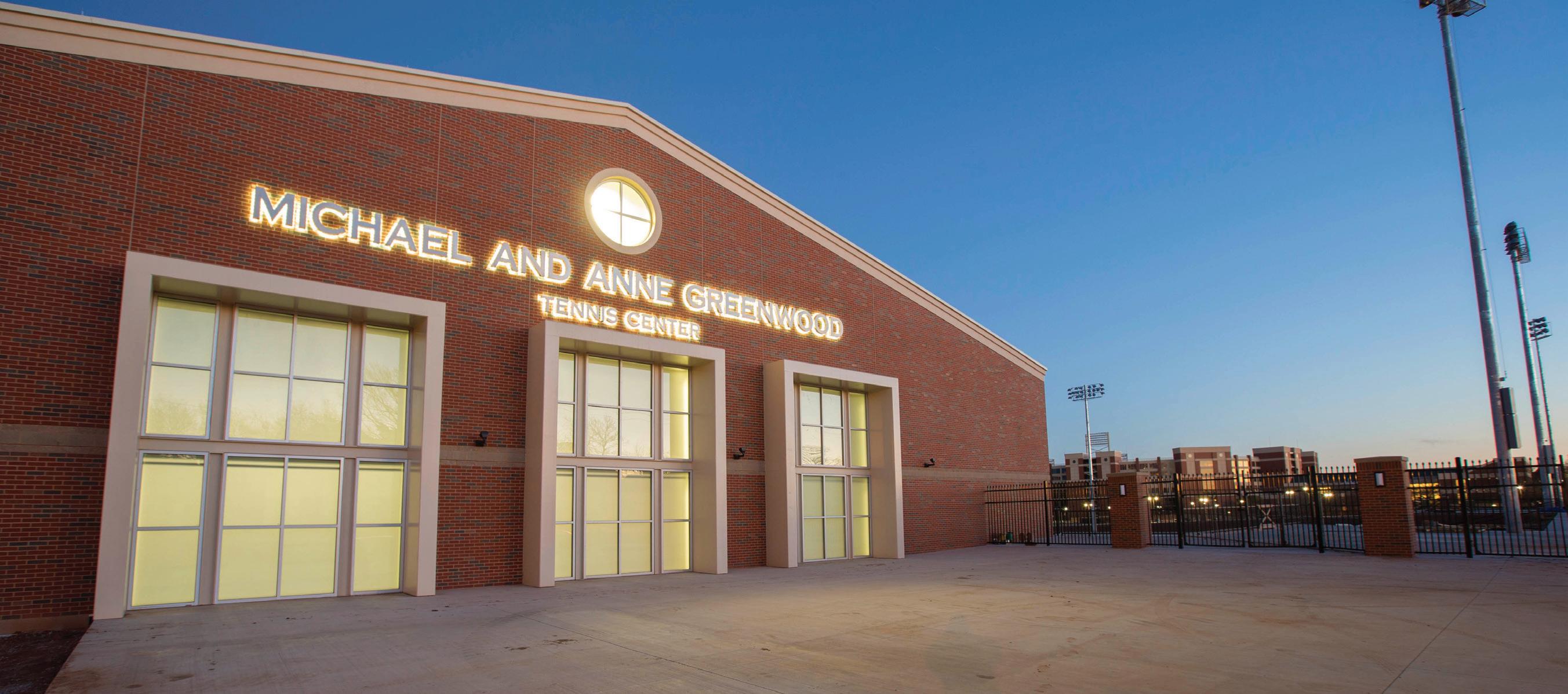
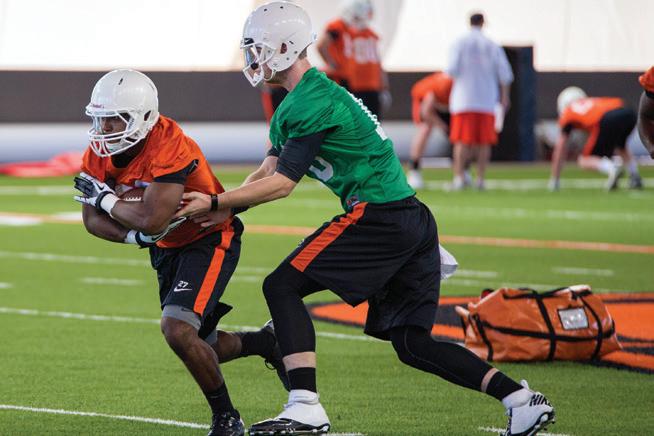
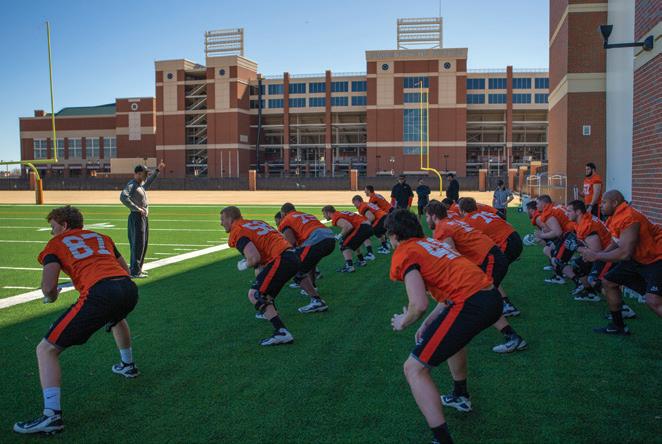
“It has turned out to be a huge plus for practice,” Holder said of the new indoor facility design. “You remove those walls and inside is just like outside. Our maintenance during the summer months is much lower, and I think we ended up with a better structure than we would have with the $50 million project.”
“I think everyone worked together to make a bad situation as good as you could get it,” Holder said. “Kudos to everyone involved, Boone Pickens, Will Smith (son of Sherman Smith), Rick Cooper and Jim Hasenbeck.
“What’s really gratifying to me are times like February when we had three teams using the Smith Center and none of them were football. It really is a facility for everyone.”
The completion of the indoor facility was the first tangible check mark in the village process. The area just south of the Smith Center has already become a popular spot for Cowboy football fans on game days and has been incorporated into the Hall of Fame Block Party. In just one short season it has provided how-did-we-ever-do-without-this satisfaction to football fans as well as the team.
The completion of the football facilities coincided with another long-term decision. The women’s soccer stadium project would not be incorporated into The Athletic Village. With one of the best playing surfaces around, and in a snug environment surrounded by student housing and the bustling Colvin Center, the decision was made to build new soccer facilities in the same location the Cowgirls have called home since the program was launched.
The $20 million gift from the Smith family was originally intended as an endowment for the indoor facility to ensure its continued modernization and upkeep. Instead, that gift went for the construction of the building itself. However, Boone Pickens answered the call yet again and put a testamentary $20 million gift in his will for the endowment of the Smith Center — associated with the Smith family.
“That was a real tug-of-war,” Holder said. “You would like to have soccer close to the rest of the facilities and in the village, but the current location is very compelling. They have a great playing surface, and are surrounded by the student body. After a lot of give and take, we decided to leave it at the current location.”
76
“I’M NOT SURE PEOPLE ON CAMPUS OR AROUND THE STATE CAN FULLY UNDERSTAND THE NATIONAL BUZZ SURROUNDING OUR NEW FACILITIES.”
— COACH CHRIS YOUNG
APRIL 2014
ALL PHOTOS / BRUCE WATERFIELD
Holder has often said that facilities are a piece of the puzzle for success, but piling on brick and mortar alone is not the sole solution for championships, and the Cowgirl soccer sta agrees. Much like Holder’s days of winning golf championships long before Karsten Creek was constructed, the soccer program found success first, followed by facilities.
“What we’ve learned over the years is to sell what you have,” said OSU soccer coach Colin Carmichael, “our university, our people, our community and the success of our program. But there is no doubt that if a kid comes to look at our facility and then visits some of the people we compete with, they can’t help but wonder why we don’t have nicer things. That’s just a kid being a kid.
“That’s the one thing we have been missing here,” he added. “AND ONCE THAT’S IN PLACE, I THINK IT WILL REMOVE ANY DOUBT ON HOW SERIOUS WE ARE ABOUT SOCCER.”
Plans for the new Cowgirl soccer stadium are nearly completed, and it’s possible that OSU will play its fall slate of matches amid construction. The soccer team will be happy to battle any dust and noise. THEY MIGHT EVEN DON HARD HATS DURING MATCHES IF IT HELPS EXPEDITE THE PROCESS.
“The plans we have seen look phenomenal,” Carmichael said. “A soccer-only facility was important to us and we have that. Having a family-friendly atmosphere is very important to coach Holder. When you look at our crowds, our fans are our students, youth players and families. We want them to have a great game-day experience.”
“WE WANT TO BE ABLE TO HOST NATIONAL CHAMPIONSHIPS,” HOLDER ADDED. “THAT’S OUR MINDSET FOR EVERYTHING WE ARE BUILDING. WE WANT NATIONALCHAMPIONSHIP CALIBER FACILITIES.”
OSU has hosted national championship events in the past, most recently on the men’s golf front at Karsten Creek. The next championship-type facility to come online at OSU will house the tennis programs.
In October 2012, construction began on the Michael and Anne Greenwood Tennis Center, located on the southeast corner of the Washington and McElory. The new facility, expected to be completed this spring, features 12 OUTDOOR COURTS, SIX INDOOR COURTS, LOCKER ROOMS, A SPORTS MEDICINE AREA, and ELEVATED SEATING GALLERIES. It is an absolute game changer for the tennis programs. In one of the first events held inside the facility, the Cowboy men’s team shocked sixthranked Tennessee in front of a roaring and capacity crowd. The women’s tennis program, thanks in part to the new facilities, has pulled in a recruiting class ranked among the top five in the country.
“I’m not sure people on campus or around the state can fully understand the national buzz surrounding our new facilities,” said Chris Young, head women’s coach.
On a visit to Stillwater during construction on the Greenwood Center, the United States Tennis Association took to Twitter and

proclaimed that in collegiate tennis, only Stanford had facilities comparable to the new digs at Oklahoma State. The USTA’s visit, in essence, became an eight-hour Twitter deluge on the wonderfulness of OSU’s facilities.
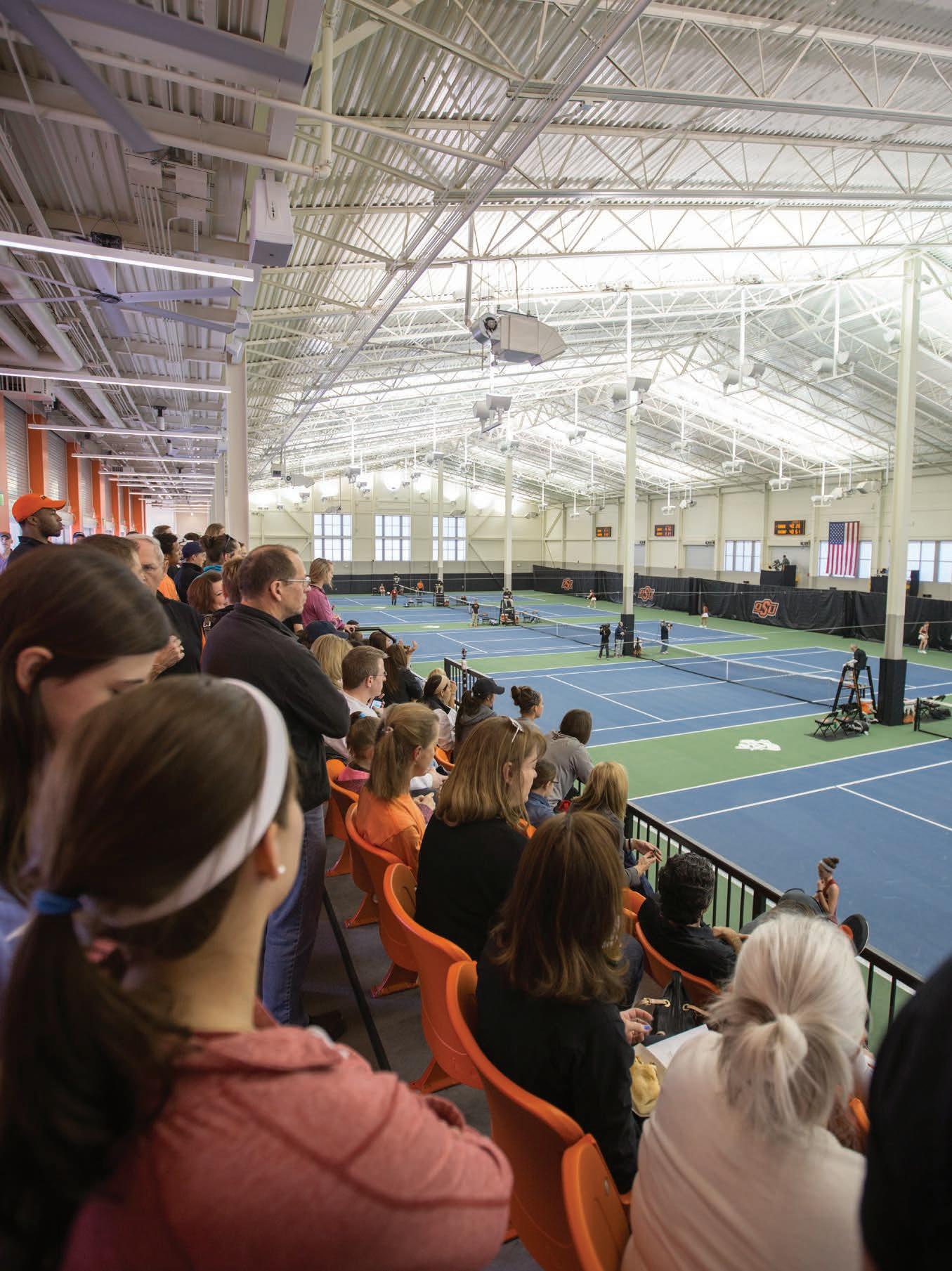
“That whole project is a credit to Chris Young,” Holder said. “He had built courts at Wichita State (his previous coaching gig) and had been through the process before. He came in and hit the ground running and started trying to raise enough money to build six to 12 outdoor courts. That’s really as big as we were thinking at the time.”
For decades, OSU’s varsity squads had been competing at the Colvin Center courts. The place was made more of a home court advantage by signs above the aluminum seating that said “OSU Tennis,” and that was pretty much it for the amenities. The courts did serve the tennis programs well enough for both the men’s and women’s programs to build strong traditions. But the world moved on, the Big 12 was formed and the competition got tougher. But OSU’s tennis programs continued to play in the tiny little corner of campus they shared with the rest of Stillwater.
77
Of course one of the biggest obstacles for the programs was weather. Both teams spent numerous hours on the highways driving to indoor facilities around the state in an e ort to overcome Oklahoma’s kooky spring climate.
“We played at Oak Tree my first year, then The Greens Country Club in Oklahoma City my second year and then the Ponca City Country Club last year,” Young said. “Most clubs had junior programs that started at 4 p.m. so we had a very small window in which to practice between class and court availability. Ponca City was more flexible but it just had two courts, so we would take some of our girls with afternoon classes up in the morning and practice. We’d drive back to Stillwater, drop them o , pick up the girls that had morning classes and head back up to Ponca City for afternoon workouts with a stop at Subway somewhere in there.
“Basically we were on the road from 8 to 5 and getting in about four practice hours on good days.”

Michael and Anne Greenwood, for whom the tennis center is named, originally got on board to name one of the outdoor courts for Anne’s father, Joe Morris, a Stillwater resident and long-time fan of the tennis programs.
“Originally, we were just working on a plan for new outdoor courts,” Young said. “The Greenwoods became more intertwined with the program and started coming to more and more matches. We were attaching naming rights to every outdoor court. When another court opened up for sponsorship they jumped on it.”
On one of those long days that featured two trips to Ponca City, Young got a call informing him that another donor had to bow out of the project. Again the Greenwoods stepped up.
“They told me they didn’t want anything to slow down the facility and to let them know what else they might need to do,” Young said.
The final step in the process was, of course, weather related.
“WE PLAYED A MATCH AGAINST BAYLOR THAT STARTED OUT IN 50-DEGREE WEATHER AND ENDED IN 30-DEGREE WEATHER,” YOUNG REMEMBERED. “AT THE END OF THE MATCH, IT WAS JUST MY FAMILY AND THE GREENWOODS. THAT DAY MIKE ASKED ME WHAT IT WOULD TAKE TO ADD AN INDOOR FACILITY. THAT REALLY STARTED THE PROCESS. UNTIL THEN, WE WERE STRICTLY THINKING OUTDOOR COURTS.”
“The Greenwoods provided OSU tennis with the largest gift in Payne County history (largest gift bestowed by a Payne County resident to the university),” Holder said. “Now we’ve gone from using Colvin Center courts to indoor courts, outdoor courts, locker rooms, sports medicine facilities and spectator seating.”
As challenging as the facility problem has been for the tennis and soccer programs, no one has had a bigger hill to climb than track and field. While the tennis and soccer teams at least played home matches, the idea of hosting an NCAA-level track meet on campus was completely out of the question.

“THE TRACK WE HAD WAS BEYOND REPAIR,” Holder said. “Shame on us for letting it decay to that point, but that’s where it was. We did a land swap with the university, which wanted the old track space for more student housing. That was about the only thing left of the old track — location.
“In return, the university provided us with the bare bones of a first-class track facility. There’s still a lot of work to be done over there, but we have a competitive track and a building that can house your athletes in locker rooms, training rooms and store equipment.”
“It’s a big, wide track with big, wide sweeping turns which makes it faster than most,” said Dave Smith, who oversees track and field for both the OSU men’s and women’s teams, as well as the cross country programs. “It’s nine lanes and the lanes are as wide as they are allowed to be. The bigger and wider a track is the better it is…the faster it is.”
Smith has overseen the renaissance of OSU’s cross country programs. His teams’ THREE NATIONAL CHAMPIONSHIPS in men’s cross country are the first for OSU since the 1950s. But his past philosophies regarding the track programs are a microcosm of the facility challenges he faced.
“I WOULDN’T HAVE FELT RIGHT RECRUITING SPRINTERS HERE,” HE SAID. “IF I HAD BEEN A HIGH SCHOOL COACH OR PARENT, I WOULDN’T LET MY KIDS GO SOMEPLACE THAT DIDN’T HAVE A TRACK.”
Smith backed up those words when a high school track star from an OSU family was interested in the Cowboy program. Smith was honest about the status of the track in Stillwater and steered the family in another direction. At the time, OSU did not have a sprint coach or competitive sprint athletes and worked out on a distressed track. That particular student-athlete went on to win a national championship at another Big 12 school.
78
APRIL 2014
ALL PHOTOS / BRUCE WATERFIELD
NEW OSU TRACK & FIELD LOUNGE
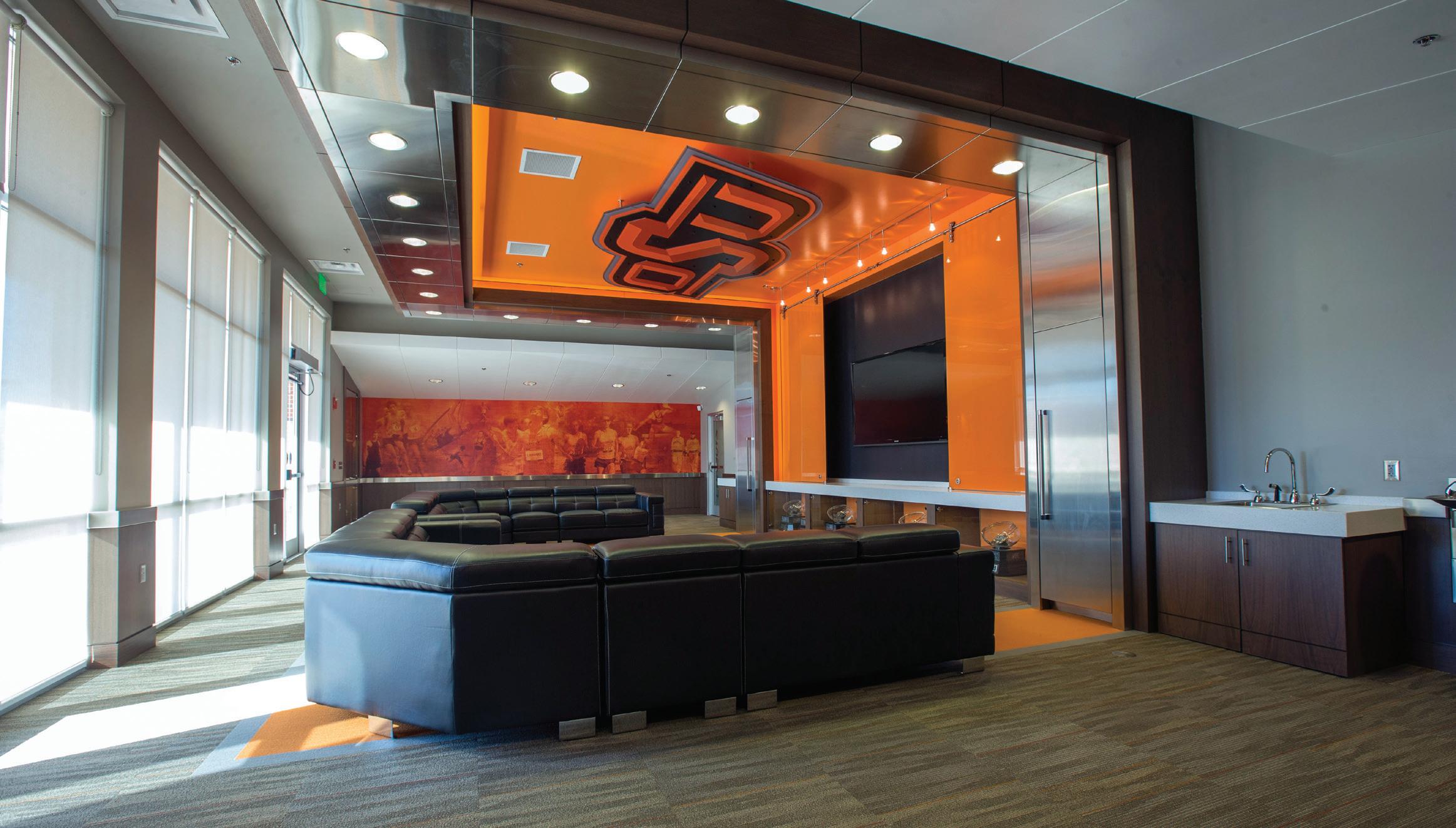
“If that guy was here today, I would be all over him,” Smith said. The OSU track program, in essence, changed overnight with the new facility.
“Once we knew the track project was going to get done I started thinking about hiring a sprint coach,” Smith said. “I went to the administration and said we need to rearrange our sta and hire a sprint coach and here’s why. They were on board with it.”
Smith then started the hiring process and says he was surprised at the national interest in OSU’s position.
“I think a lot of sprint coaches had their eye on Oklahoma State for a long time — thinking maybe this was a sleeping giant,” he said. “I got contacted by a lot of high-level people. I kind of went into it blind.”
Diego Flaquer, an assistant at Auburn, now tutors OSU’s growing contingent of sprinters.
“The kids like him. The other coaches like him. He’s already had a major impact on recruiting,” Smith said. “Somehow through luck or due diligence, I think we got the best possible guy.”
Maybe it was coincidental, but just months after the completion of the new track, the Cowboys claimed their first Big 12 indoor track and field championship. OSU became the first school to win the league’s cross country and indoor track championships in the same academic year.
“It really starts with the track,” Smith concluded. “It has a great surface and a separate throwing facility outside of the oval, which I think is a huge benefit. But the team room, locker room and training room are all state of the art. I think when a track and
field athlete sees a locker room like that, they know the school is serious about the sport.”
Another success story on the OSU campus is the equestrian program that has been built by head coach Larry Sanchez. A unique sport that features one of the largest rosters in the athletic department, equestrian needs are unique and varied. Like soccer, equestrian will not be part of the Athletic Village but will be part of the facilities overhaul.
The new equestrian center will be located west of the Sixth Street (Highway 51) and Western Avenue intersection, on the south side of the highway.
“We have about 160 ACRES for the facilities, and we have a $5 MILLION GIFT from Madeleine Pickens,” Holder said. “One of our biggest challenges right now is finding a way to utilize the land without spending most of our lead money on infrastructure.”
Like soccer, equestrian is a relative newcomer to OSU Athletics, but also like soccer it is a sport that found quick success and is building a strong and consistent tradition while waiting on the facility pieces to fall into place.
Speaking of traditions, it’s hard to top OSU baseball. The Cowboys have appeared in 39 NCAA TOURNAMENTS, won 30 CONFERENCE CHAMPIONSHIPS and rank SIXTH ALL-TIME with 19 TRIPS
TO THE COLLEGE WORLD SERIES. Allie P. Reynolds Stadium has been a tremendous home field advantage for the Cowboys since 1981. OSU entered the 2014 season with a record of 836-190 at the facility. But like tennis and track, the long-time home that has meant so much to the tradition of the program is showing its age.
79
“I’m just going to ballpark it at between $30 and $40 million,” Holder said of the new baseball facility still in the design development phase. “I think that’s what we need to spend if we want to have the premier college baseball program in America. Why not?”
With that price tag, the baseball facility, which will be located just across McElroy Road from the Greenwood Tennis Center, will be the most expensive component of the village.
“It’s time to put something out there that gives Josh Holliday (head baseball coach), Rob Walton and Marty Lees (assistant coaches) the same opportunity that we had in the 1980s when Allie P. Reynolds Stadium was a first-class facility.
“When we get that lead gift of $15–$20 million, we’ll start building that stadium,” Holder said. “We just haven’t gotten anyone to pull the trigger yet.”
“The construction process is well underway,” Lickert said. “As soon as that work is complete, we will begin the equipment installation, and not long after that we should be in business. It’s exciting to be a part of a new venture and we are looking forward to having a big impact on OSU Athletics.”
The first phase of Orange Power Studios will include o ces for OSU’s video production sta , internet services team and photographer, along with a control room and studio. Plans for the next phase will include a second control room, which will allow OSU to provide live television programming while producing the in-house show (scoreboard video) simultaneously. For the past several years OSU has partnered with Cox Communications for video production needs. Cox has also produced OSU’s limited third-tier programming and, in conjunction with Learfield Sports, has produced OSU coaches’ shows.
At some point, hopefully sooner than later, someone will pull the trigger and work will begin on new baseball stadium — the final piece of The Athletic Village. And when that project comes online, and when the new track and field facility has added the requisite number of bells and whistles, and eventually an indoor track center, which is in the long-range plans, the facilities overhaul by OSU Athletics will be complete.
The price tag, not counting any costs involving Boone Pickens Stadium or Gallagher-Iba Arena, will be in the $200 million range, including money used to purchase the site of The Athletic Village. It was an easy decision, according to Holder.
Away from the competition venues another construction project is quietly humming along in the background. Work on Orange Power Studios, located in the west end zone of Boone Pickens Stadium, has begun. The project is scheduled for an early summer completion date and is expected to be in full production mode when the fall semester gets underway.
Orange Power Studios will be the new home, and in many ways the first home, for OSU’s video board productions, coaches shows, online videos and OSU’s new surge into third-tier television programming.
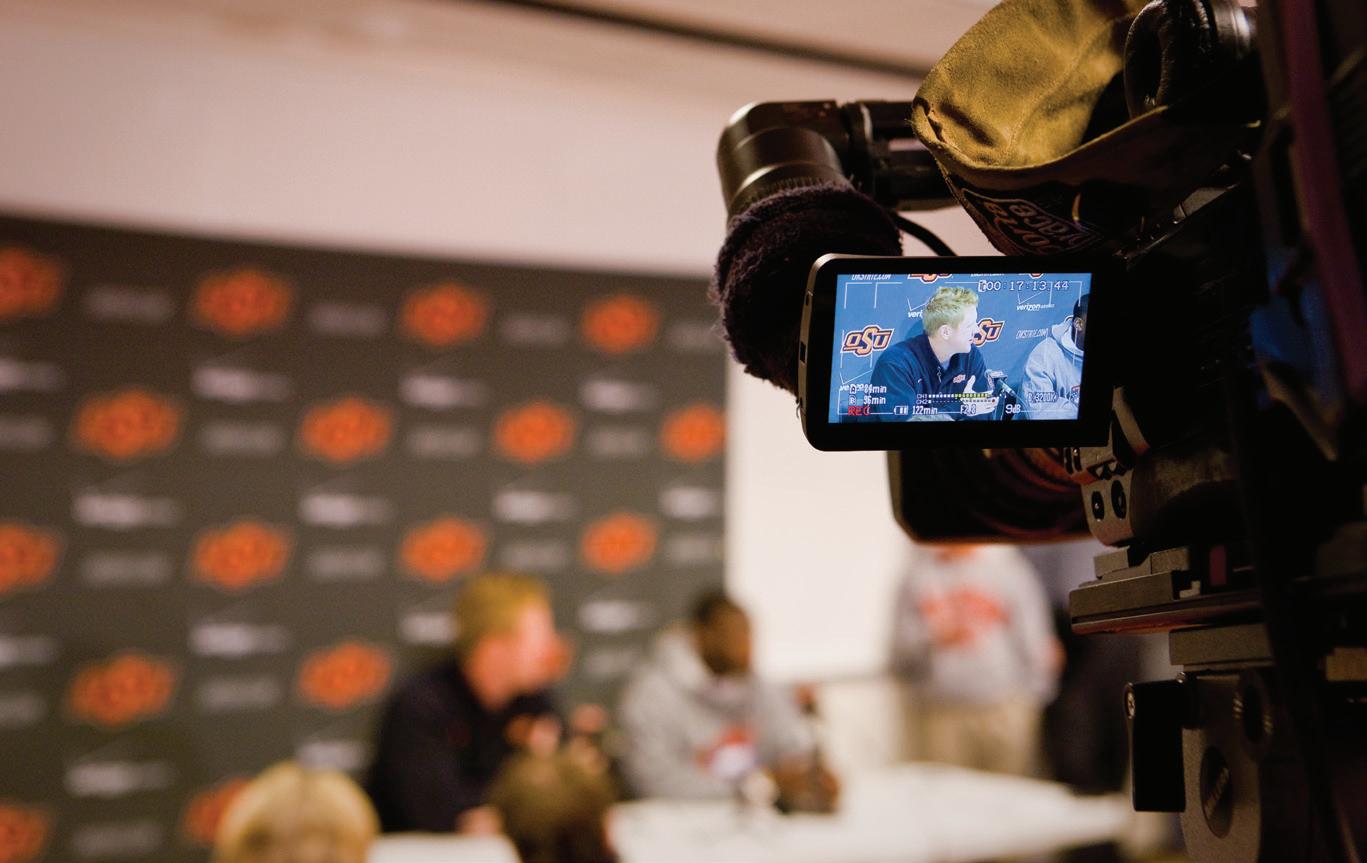
Third-tier programming in the Big 12 Conference refers to home events that have not been selected for telecast by the league’s national or regional TV partners.
It is another major investment being made by OSU Athletics. OPS will be headed up by C.J. Lickert, who most recently served as video and technical director of the New Orleans Hornets (now Pelicans) of the NBA.
80
“WHEN YOU ATTRACT GREATNESS, EXCELLENCE, OR RARE ABILITIES FROM AROUND THE WORLD TO YOUR CAMPUS, YOU NEVER KNOW WHAT WILL HAPPEN,” HE SAID. “AFTER THEY GRADUATE, THEY MAY GO OUT AND CHANGE THE WORLD.”
APRIL 2014
PHOTO / GARY LAWSON

PAYNE COUNTY APRIL:

A year ago, filmmakers, actresses and actors flocked to Oklahoma to shoot a movie, and in January, August:Osage Countypremiered around the country. Meryl Streep, Julia Roberts, Chris Cooper and a host of others did a masterful job of demonstrating their craft with spectacular acting. Yet, the movie itself was very difficult to watch with its strenuous level of dysfunction. Many who see it may end up feeling emotionally fatigued. Perhaps that’s because it reminds us of … us. Family abnormalities are like hair. We all have them; some of us are hairier than others.

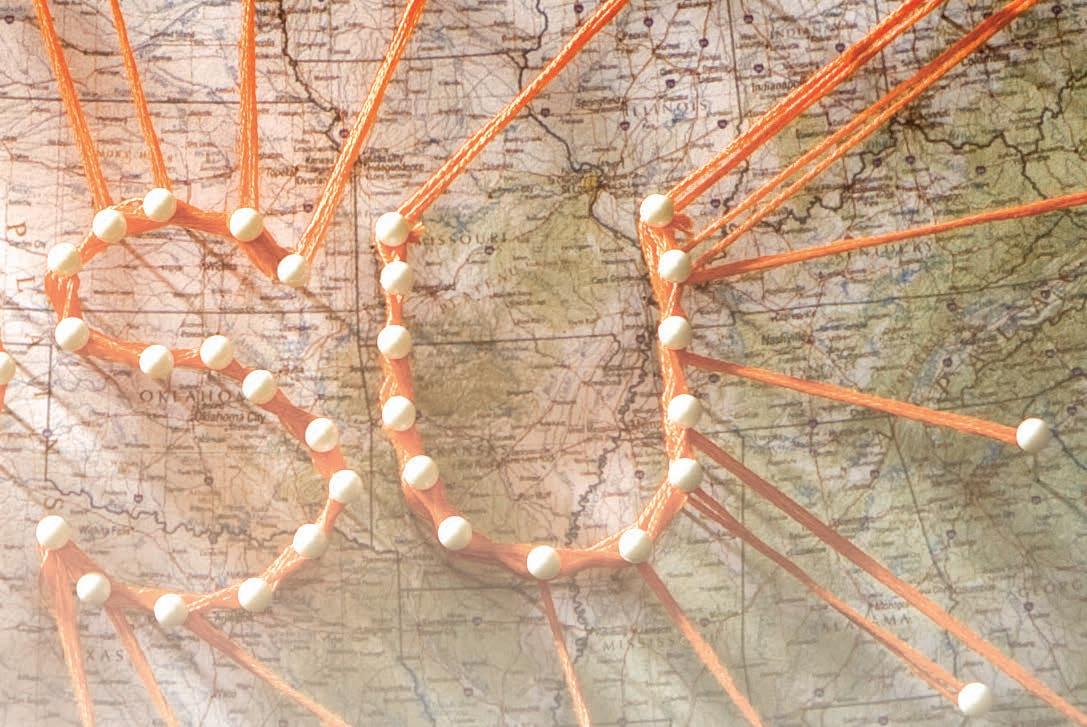
One of the most arduous scenes in August: Osage County is a family lunch, an apparently peaceful post-funeral meal. The mood heads downhill faster than the weather in Sochi when family matriarch Violet tells everyone what she thinks about them and their family secrets. It is an emotional train wreck. It’s inappropriate. It doesn’t belong. It’s the wrong stage for private conversations and private actions.
UNFORTUNATELY, WE OFTEN SEE THESE SAME BEHAVIORS PLAY OUT IN PUBLIC VENUES WHERE THEY SIMPLY DON’T BELONG: ATHLETIC EVENTS. We witness individuals who have been invited, or who have purchased a ticket, forget they are guests in a place where their presence should not overtly a ect the main event. It seems the “safety of my own home and community” mentality gives some the false sense that any verbal or
physical outburst is appropriate. A ticket to an event is not a license to ruin one. You’ve seen these types, right? The ones who, if dysfunction were a city, they would be mayor. DON’T BE THAT PERSON.

Paul Miller, a 1931 graduate of Oklahoma A&M, is quoted as saying, “NEVER PASS UP AN OPPORTUNITY TO KEEP YOUR MOUTH SHUT.” Maybe we should create a few posters with Miller’s words to chasten those who let their dysfunctions out on everyone around them.
We have a responsibility to other fans, the young people participating in the sport and the impressionable minds of children in attendance to demonstrate that sports are not about anger, hatred or spite. They are about support and embody encouragement and positive reinforcement. Mark Twain once said, “Those who know how to read and won’t are no better than those who can’t read at all.” The same can be said of those who know good manners but refuse to exhibit them.
While we can’t dictate how others act, we can set the right kind of example.
Don’t get me wrong; spectators can have a profound effect on an athletic event. They create the home court advantage — an advantage, a plus, a positive.

Come to think of it, my mother is somewhat of a philosopher. In this circumstance, she would say: “If you can’t say anything nice, maybe it’s best you not say anything at all.”


I’m not sure who came up with this next quote — some smart cowboy, I’m sure. Moms, forgive me if you don’t allow your kids to use this phrase: “Sometimes, some people just need to take a nice, long, cool drink of shut-up.” My suggested flavor: orange.
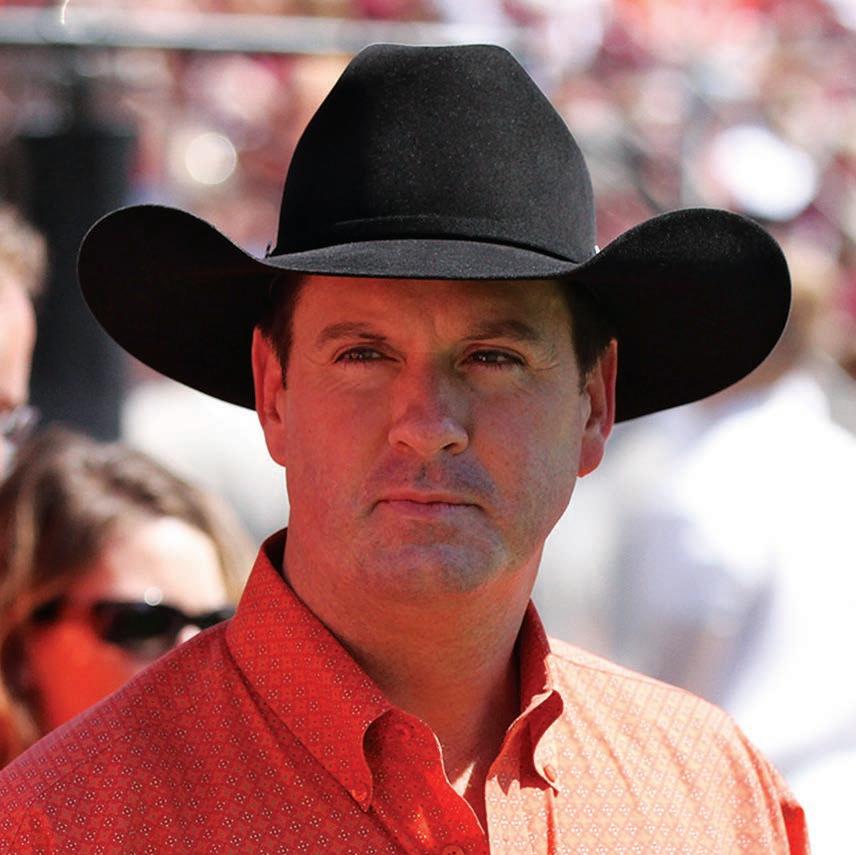
 KYLE WRAY VICE PRESIDENT ENROLLMENT MANAGEMENT & MARKETING
KYLE WRAY VICE PRESIDENT ENROLLMENT MANAGEMENT & MARKETING
82
APRIL 2014
These boots are made for travelin’ ...
Go Anywhere. Go Pokes.
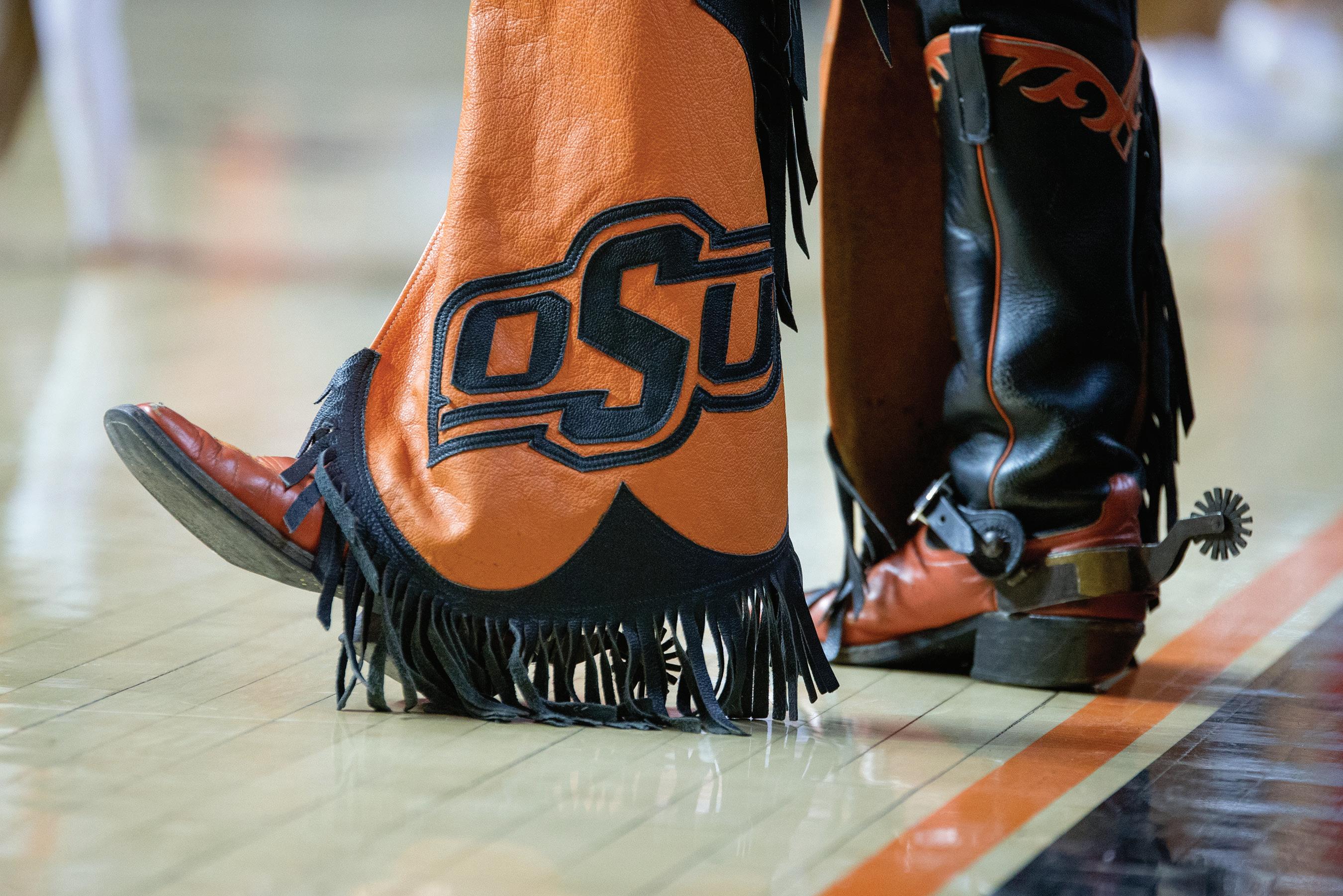



A portion of your purchase price goes to support scholarships and other university programs. Look for the label Help OSU by buying only licensed products. Get information on new retailers, merchandise and promotions. @OSUGear Oklahoma State University: Live Orange

















































































































 STORY BY WADE McWHORTER
STORY BY WADE McWHORTER




































 STORY BY CLAY BILLMAN | PHOTOGRAPHY BY BRUCE WATERFIELD
STORY BY CLAY BILLMAN | PHOTOGRAPHY BY BRUCE WATERFIELD





















































 CAMERON PHOTOGRAPHY BY BRUCE WATERFIELD
CAMERON PHOTOGRAPHY BY BRUCE WATERFIELD


































































































































 TUSH AND PHOTOGRAPHY BY A BY BRUCE WATERFIELD / BASKETBALL AND GARY LAWSON / CLASSROOM
AND
TUSH AND PHOTOGRAPHY BY A BY BRUCE WATERFIELD / BASKETBALL AND GARY LAWSON / CLASSROOM
AND




















































































































 KYLE WRAY VICE PRESIDENT ENROLLMENT MANAGEMENT & MARKETING
KYLE WRAY VICE PRESIDENT ENROLLMENT MANAGEMENT & MARKETING



